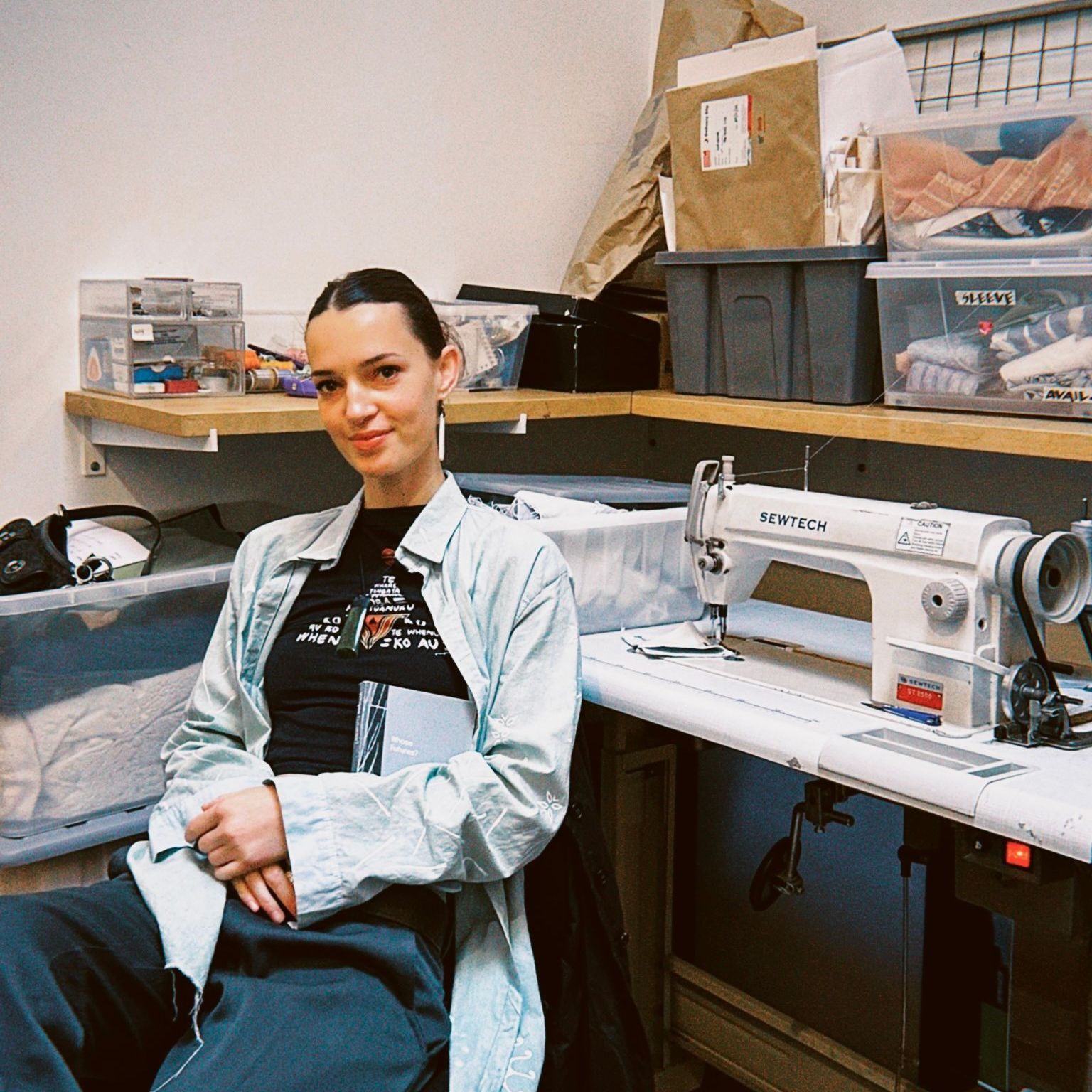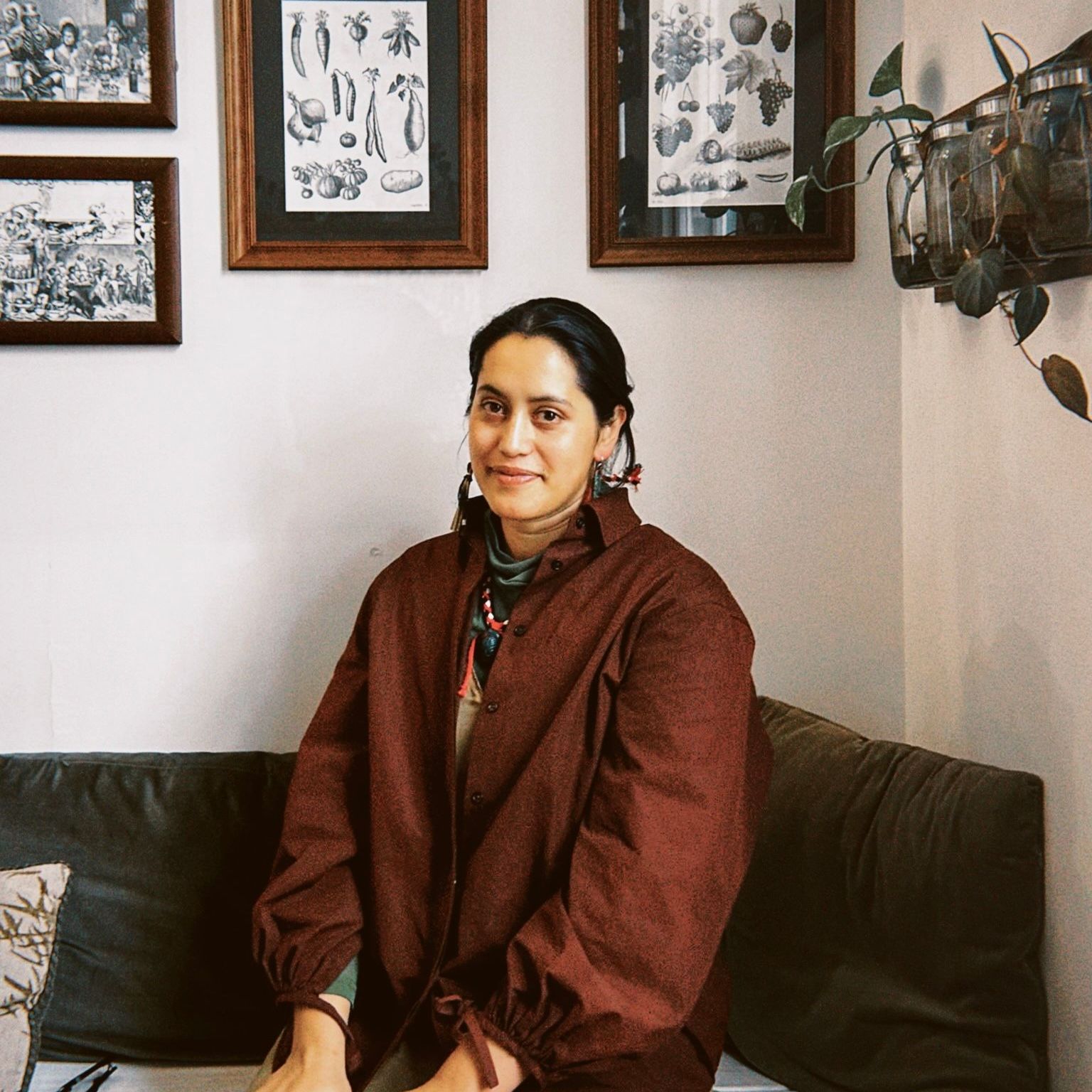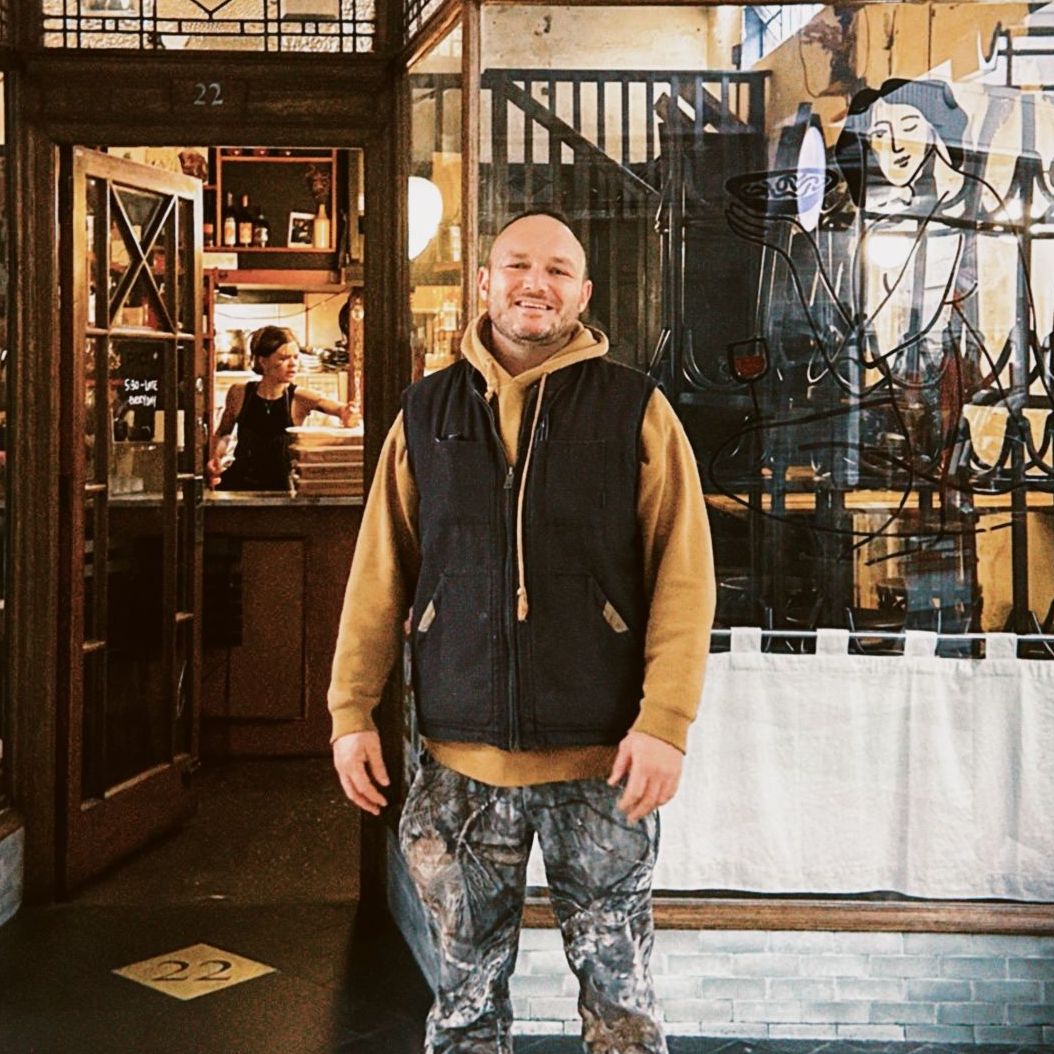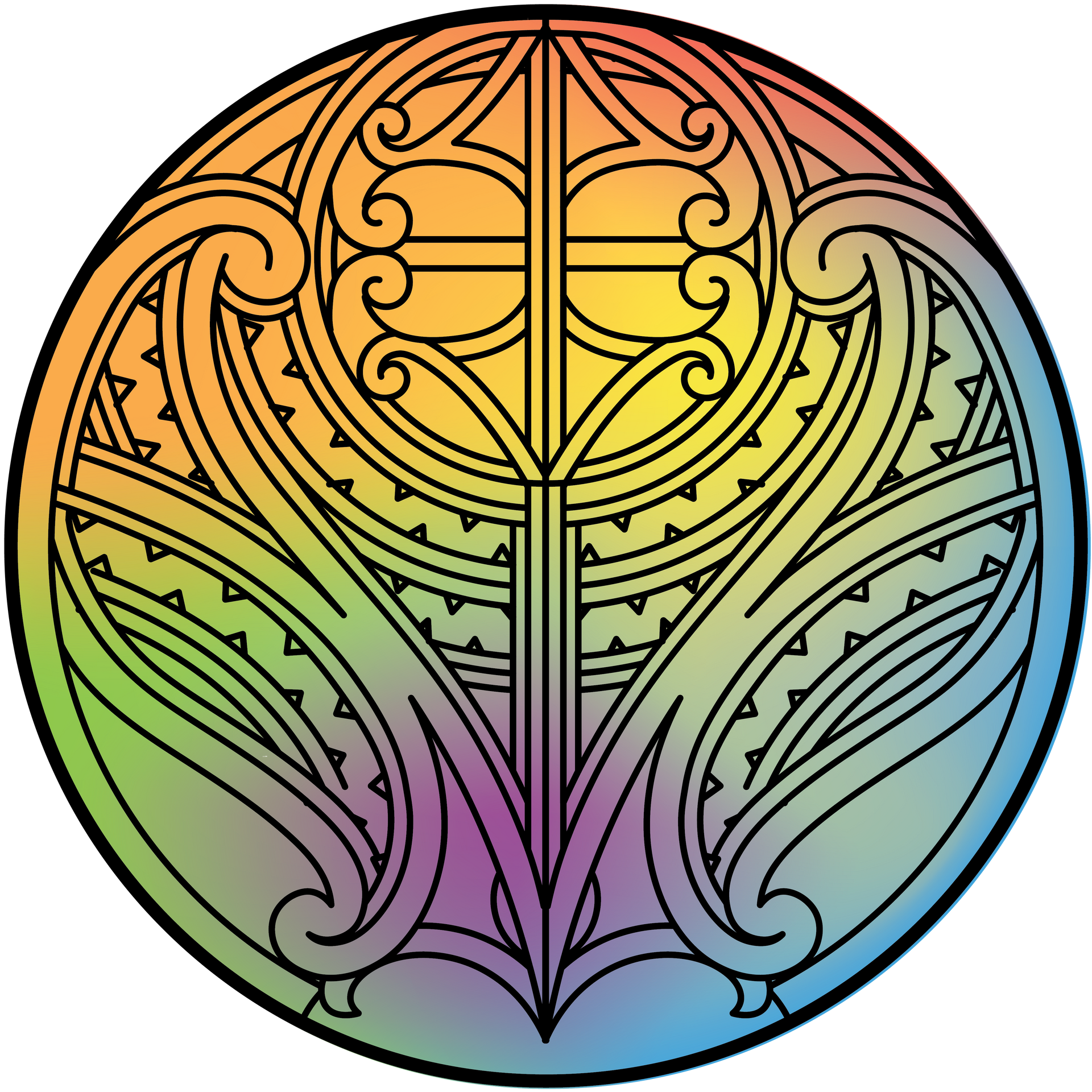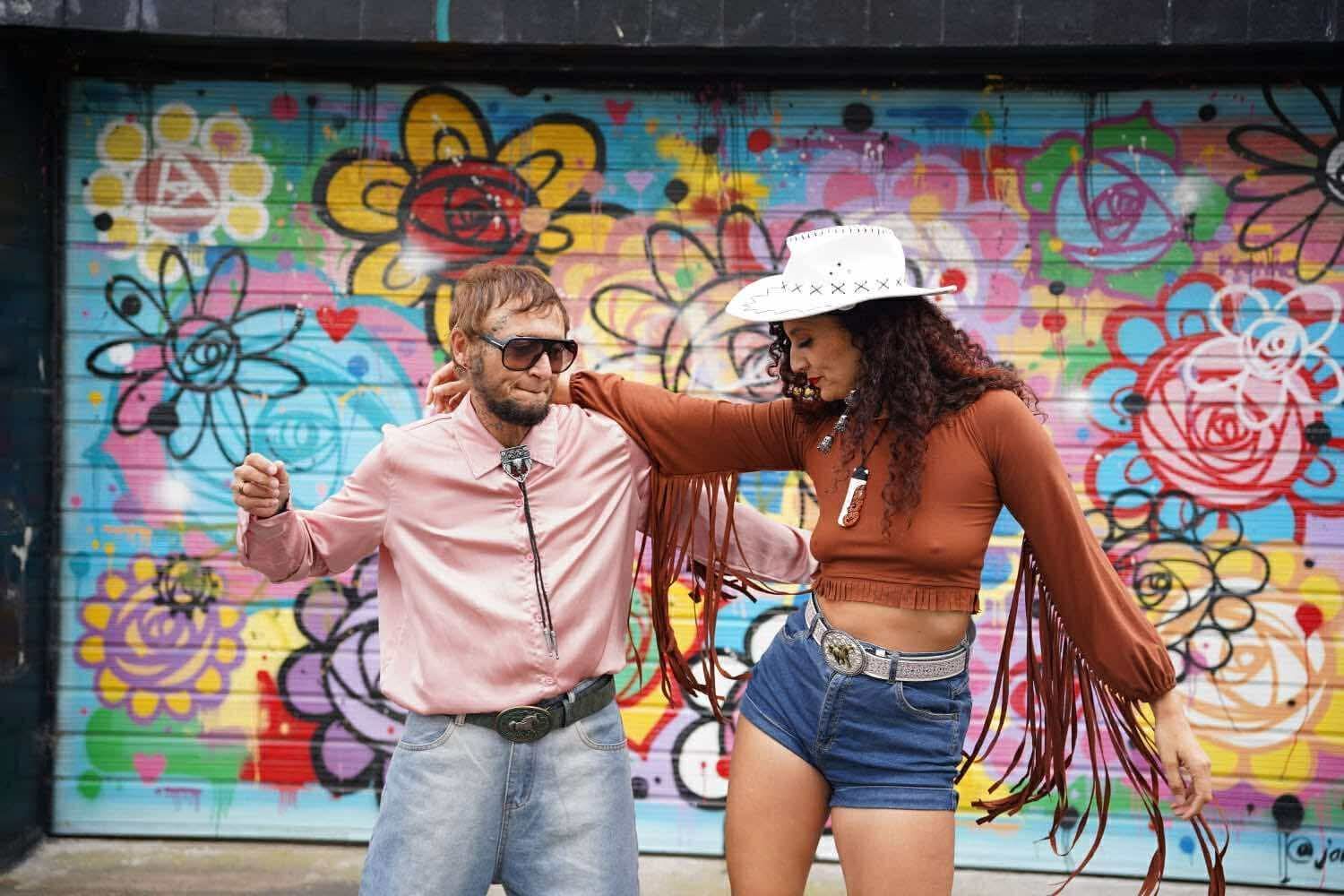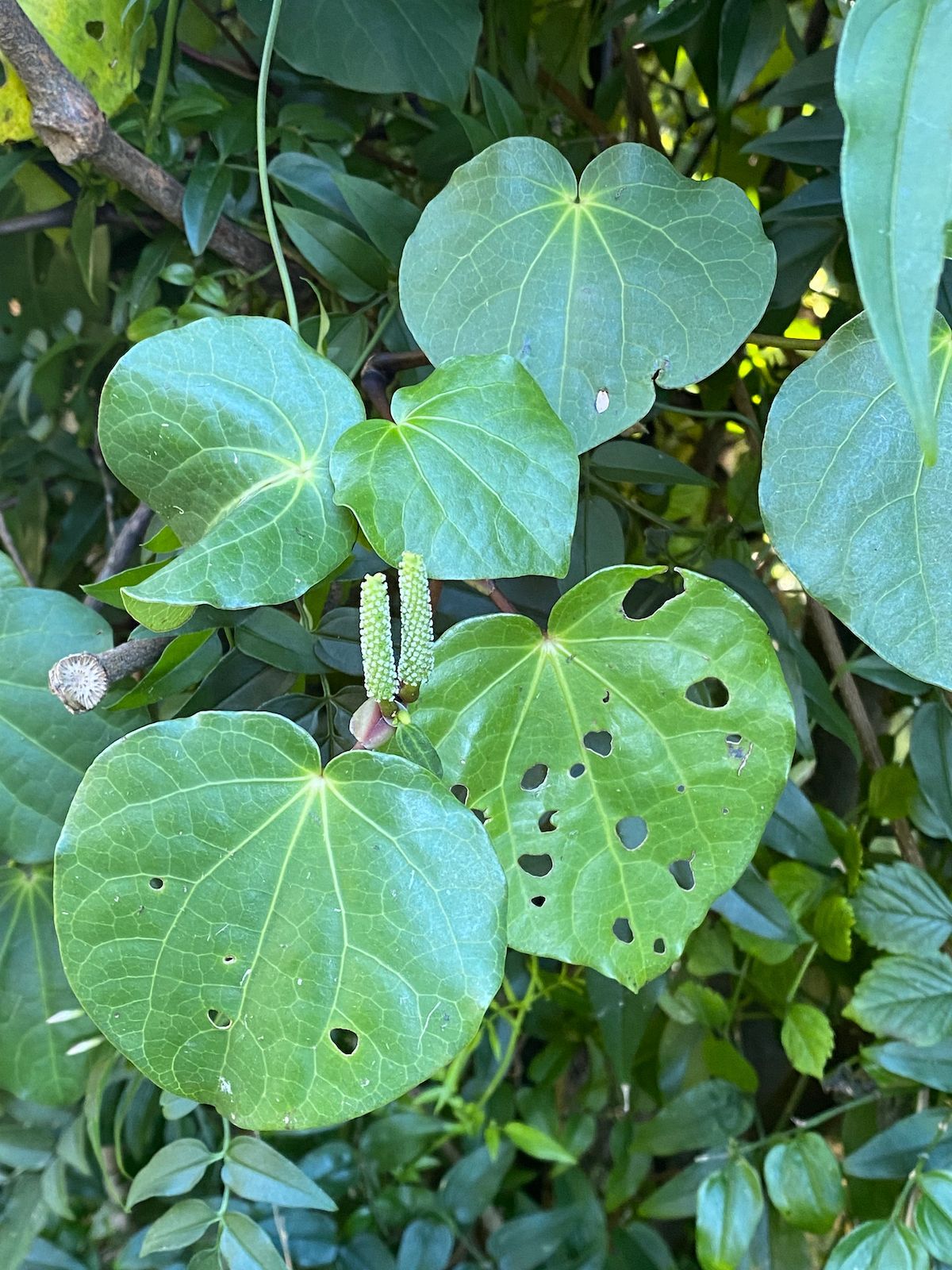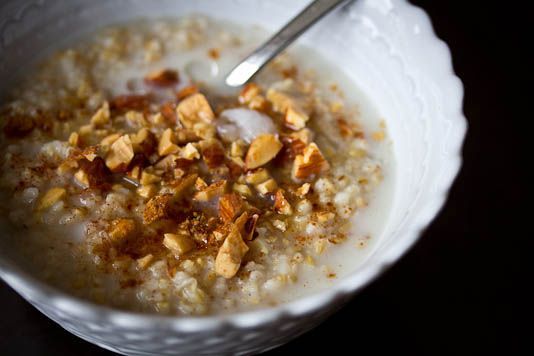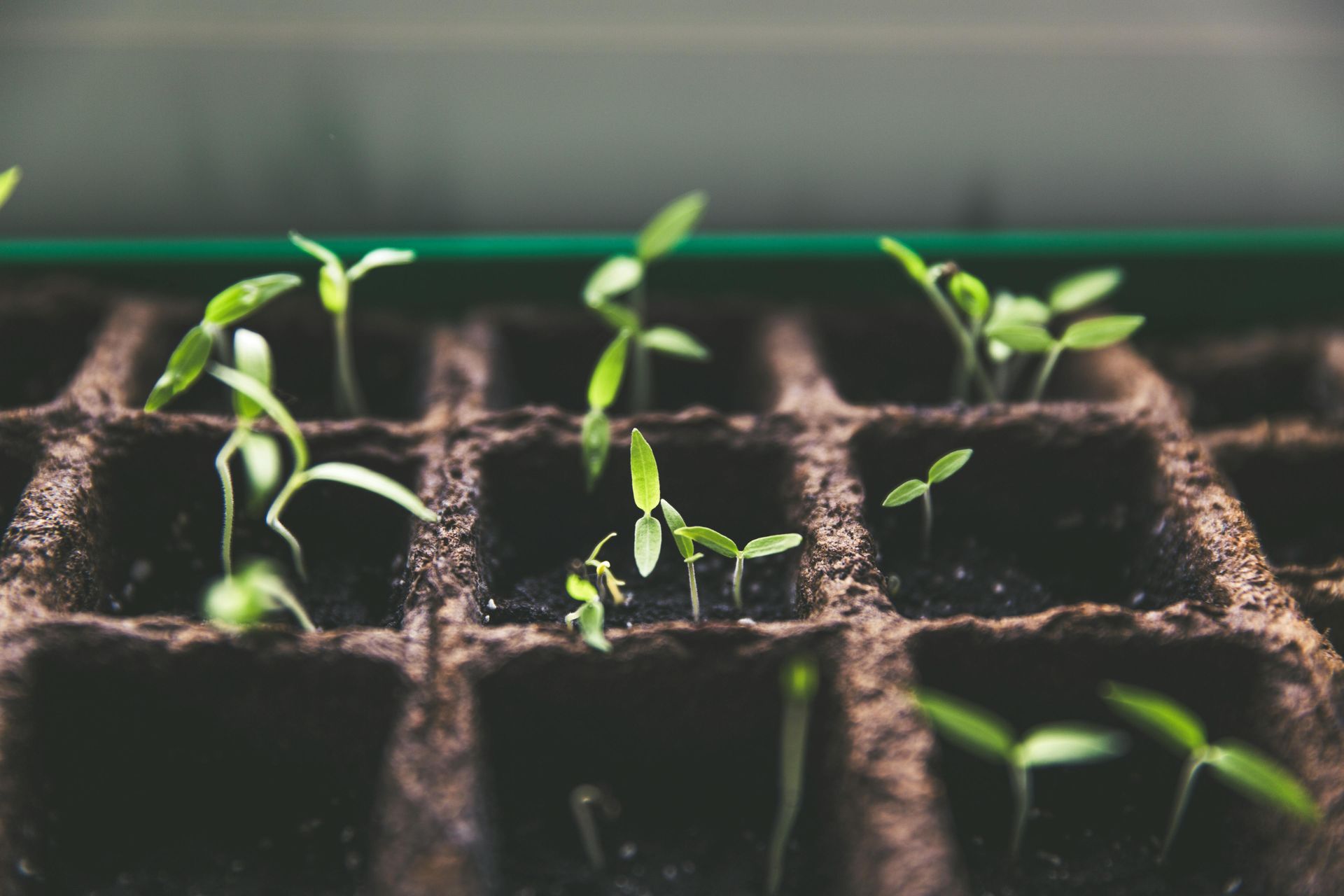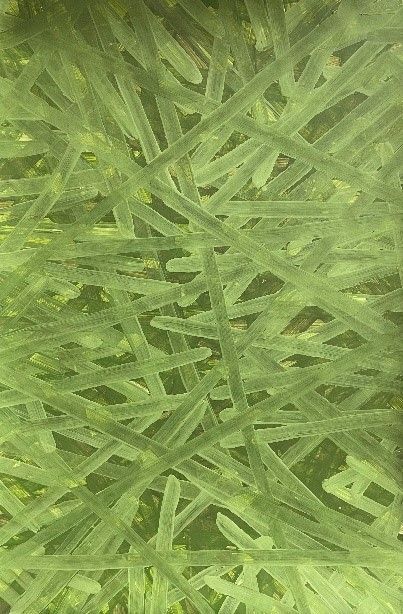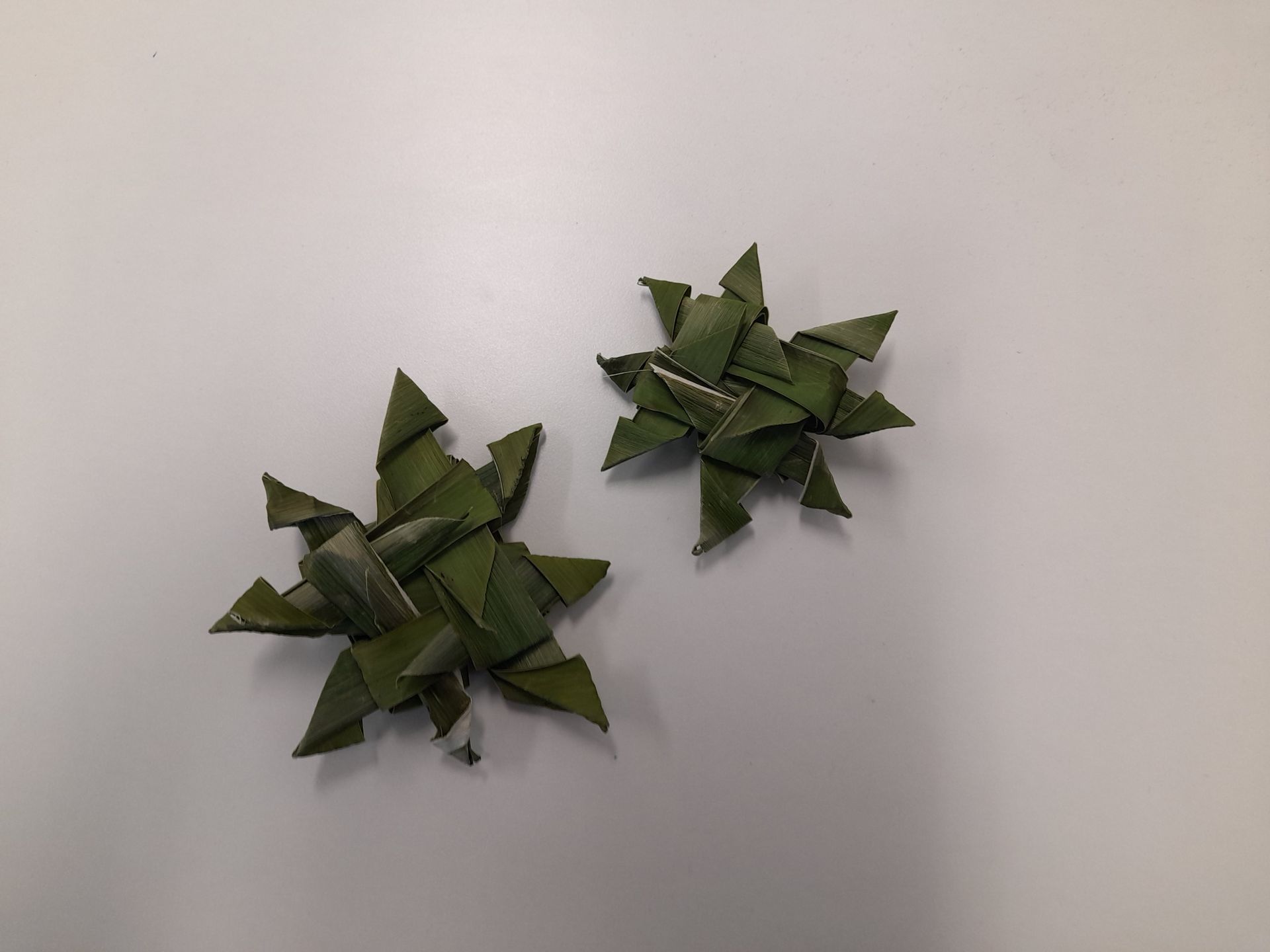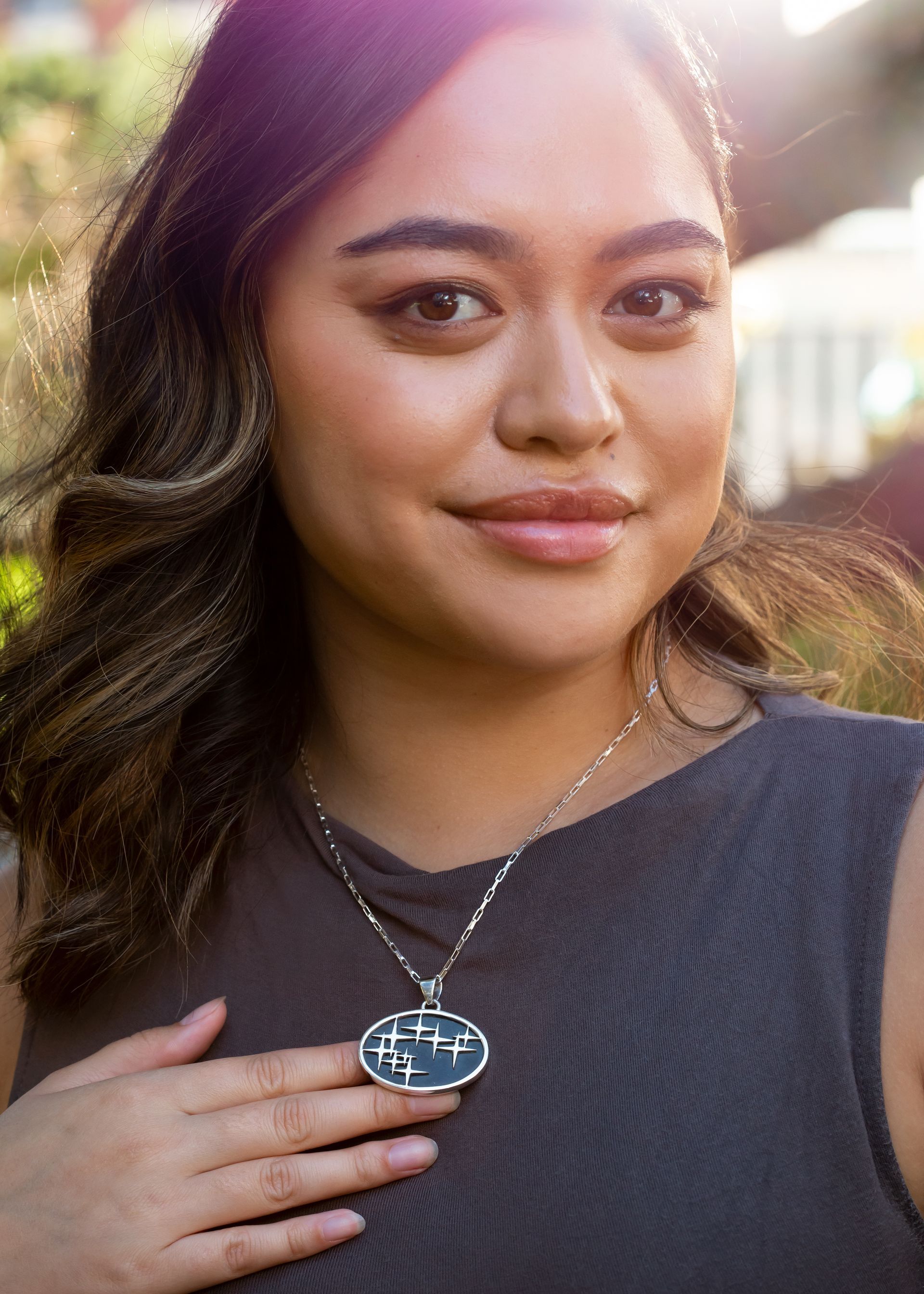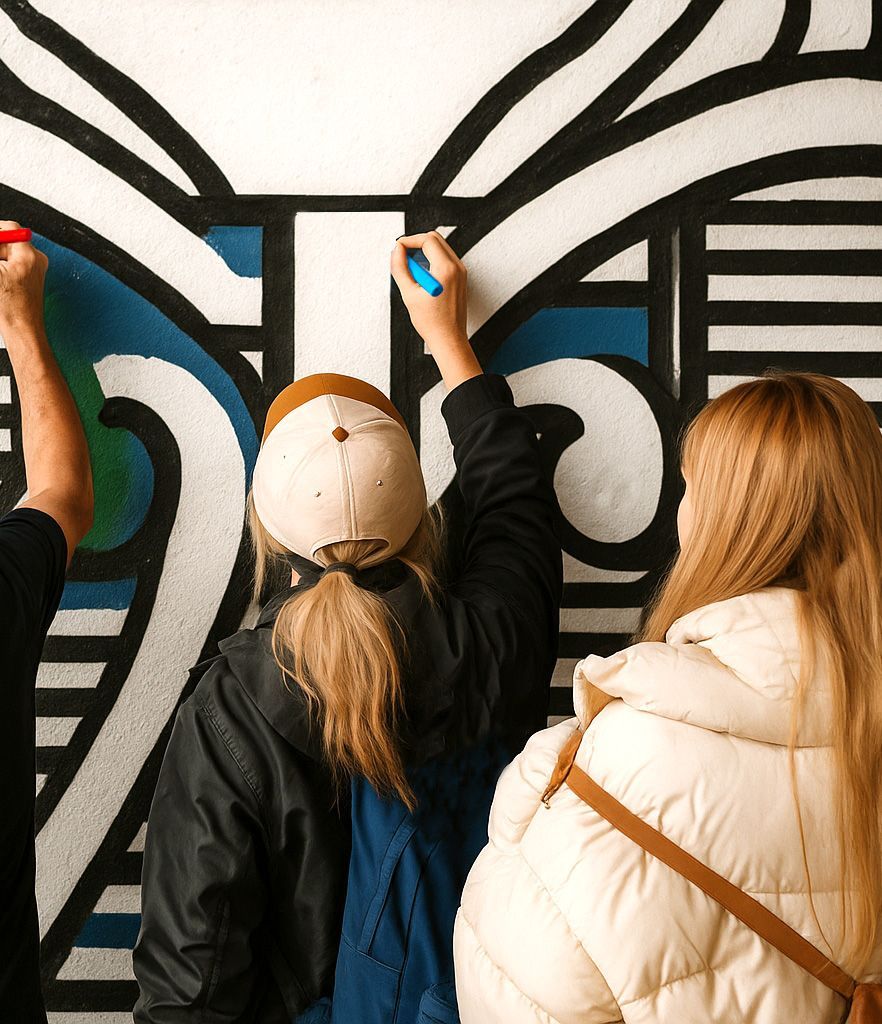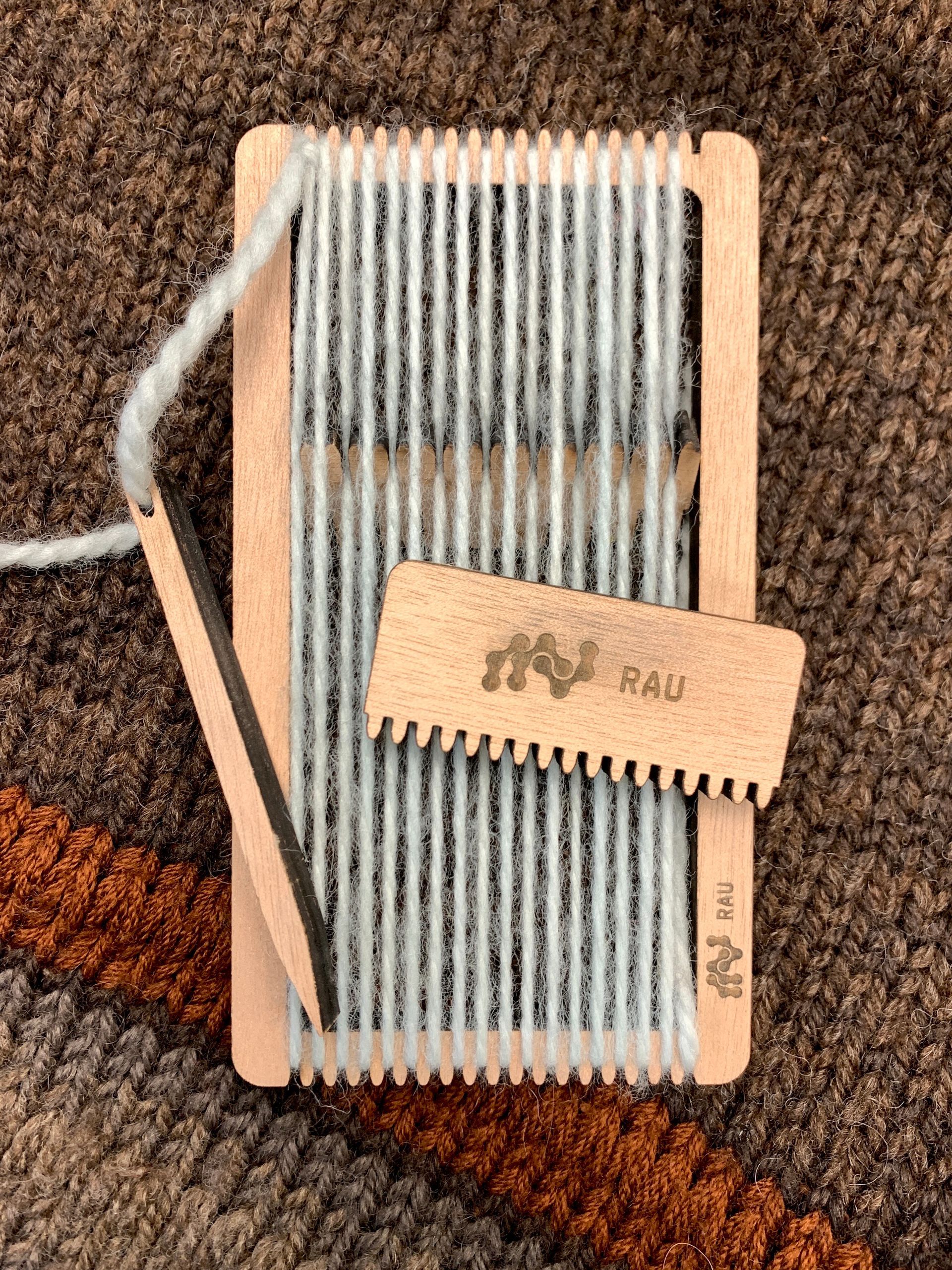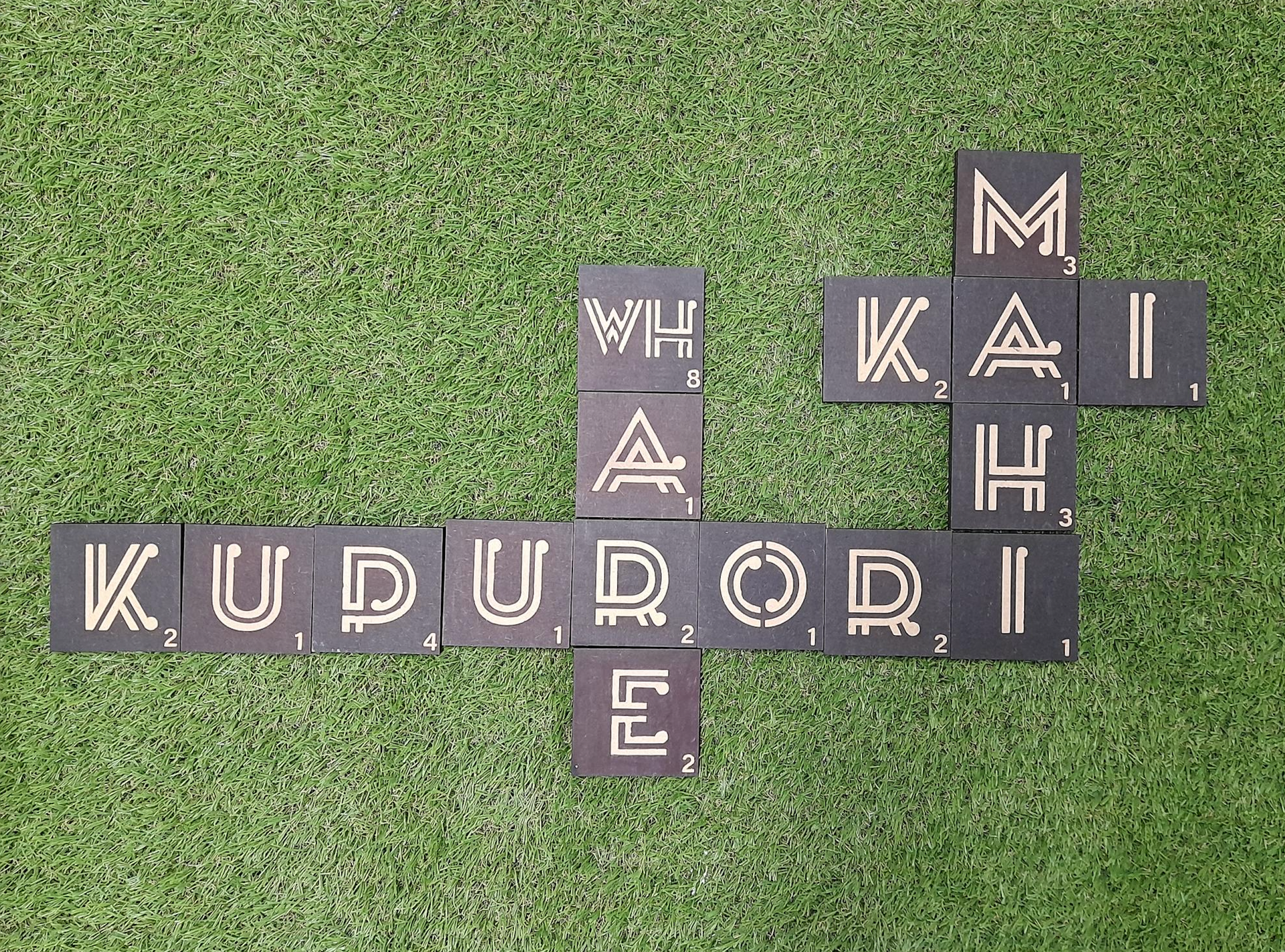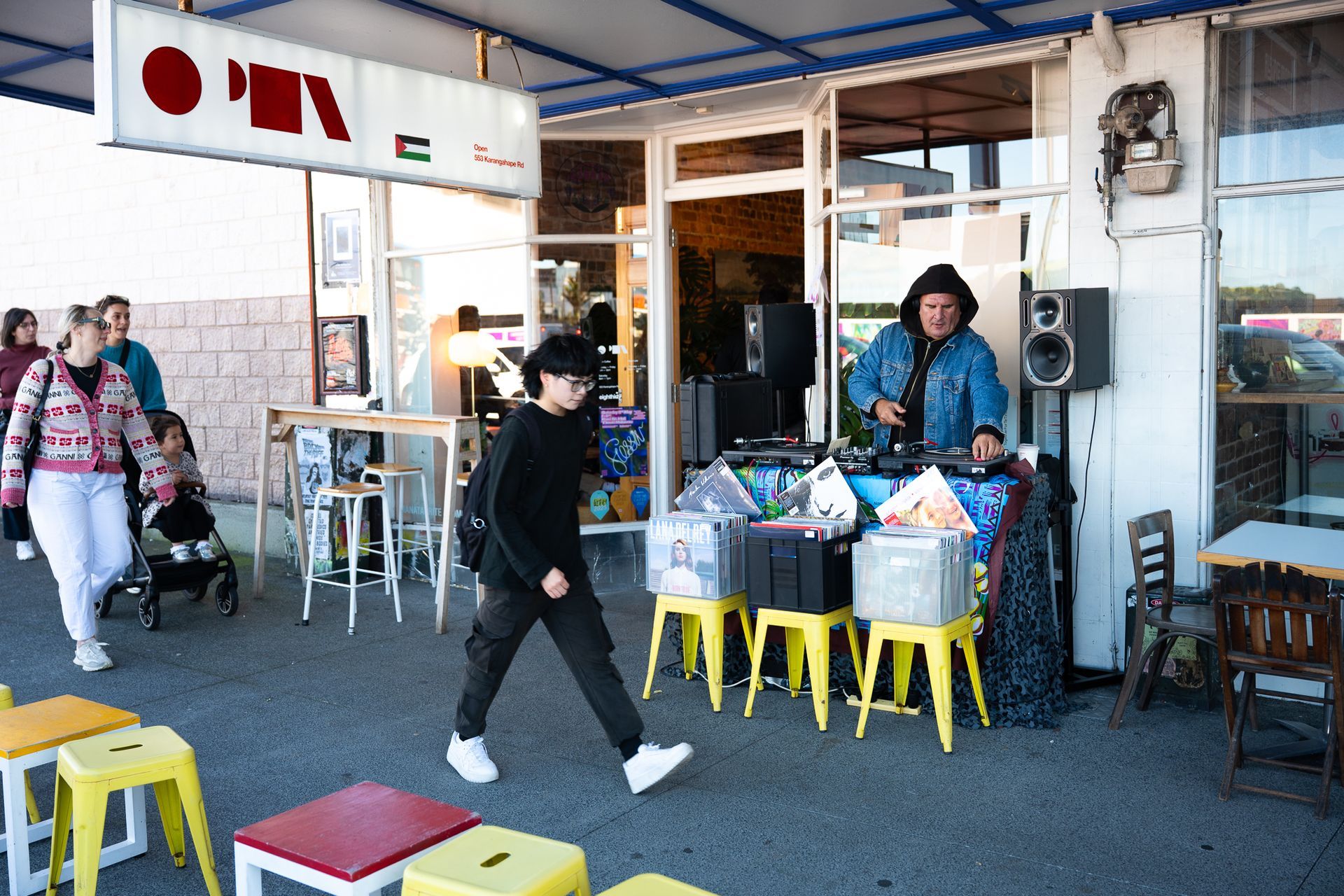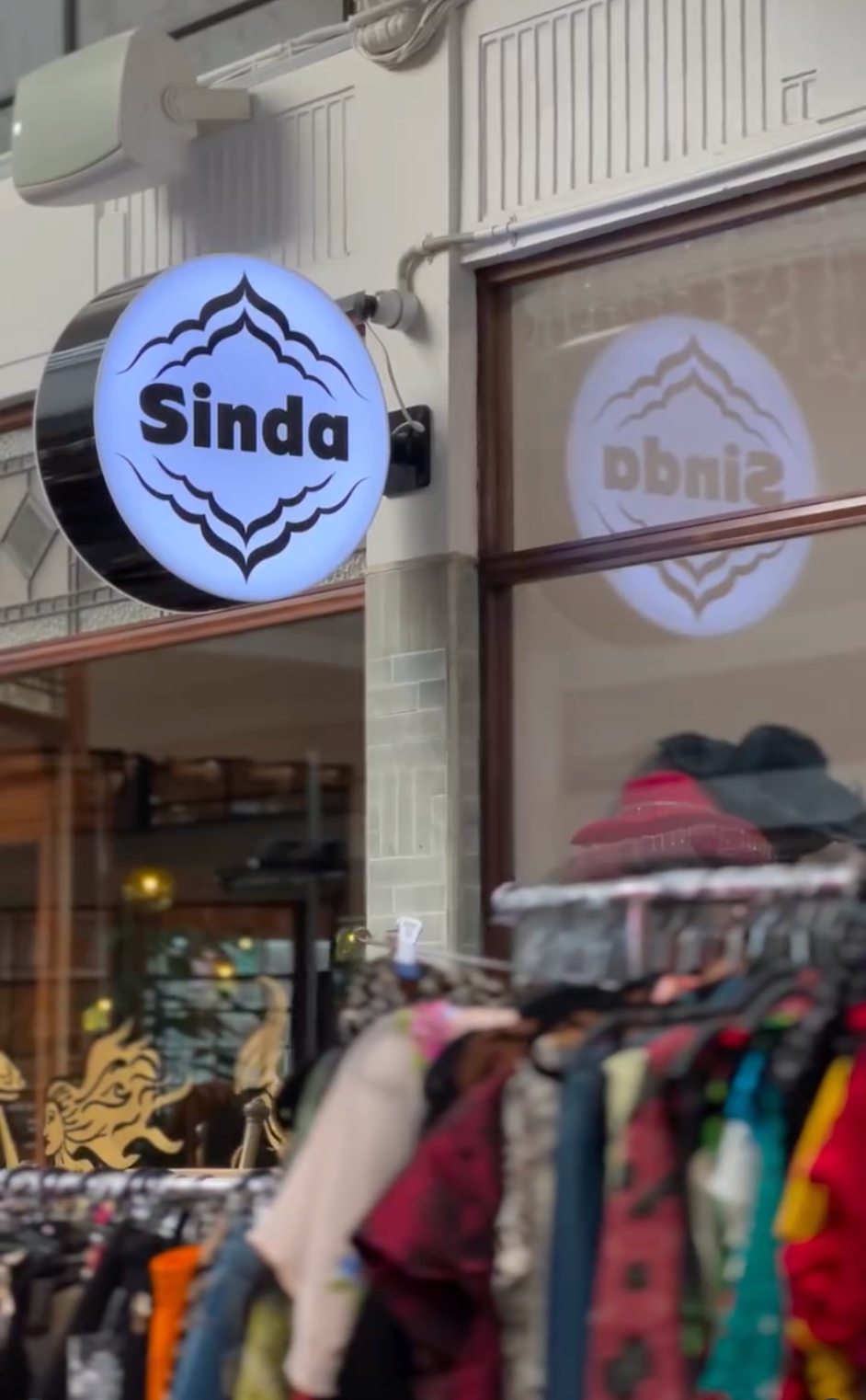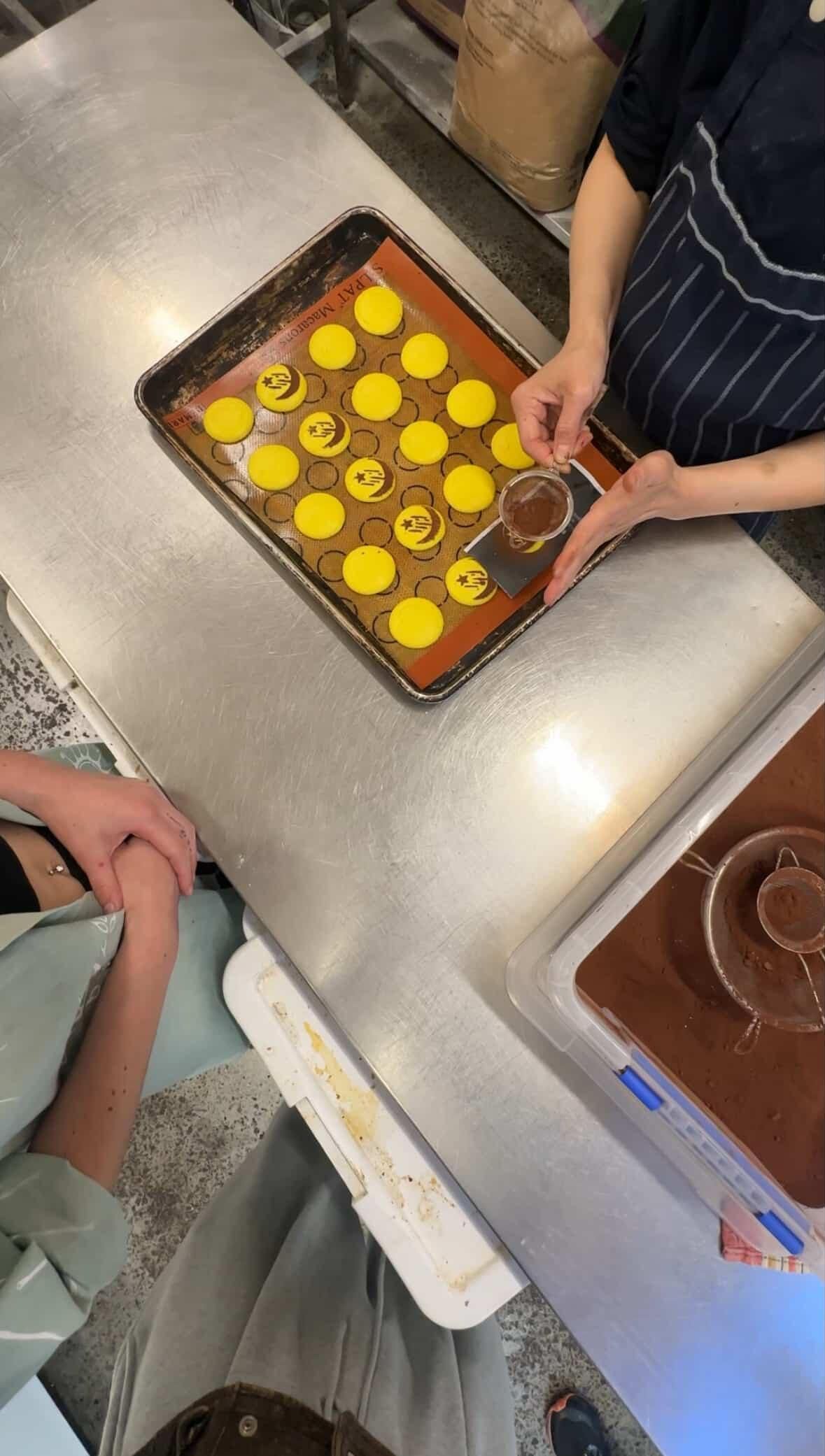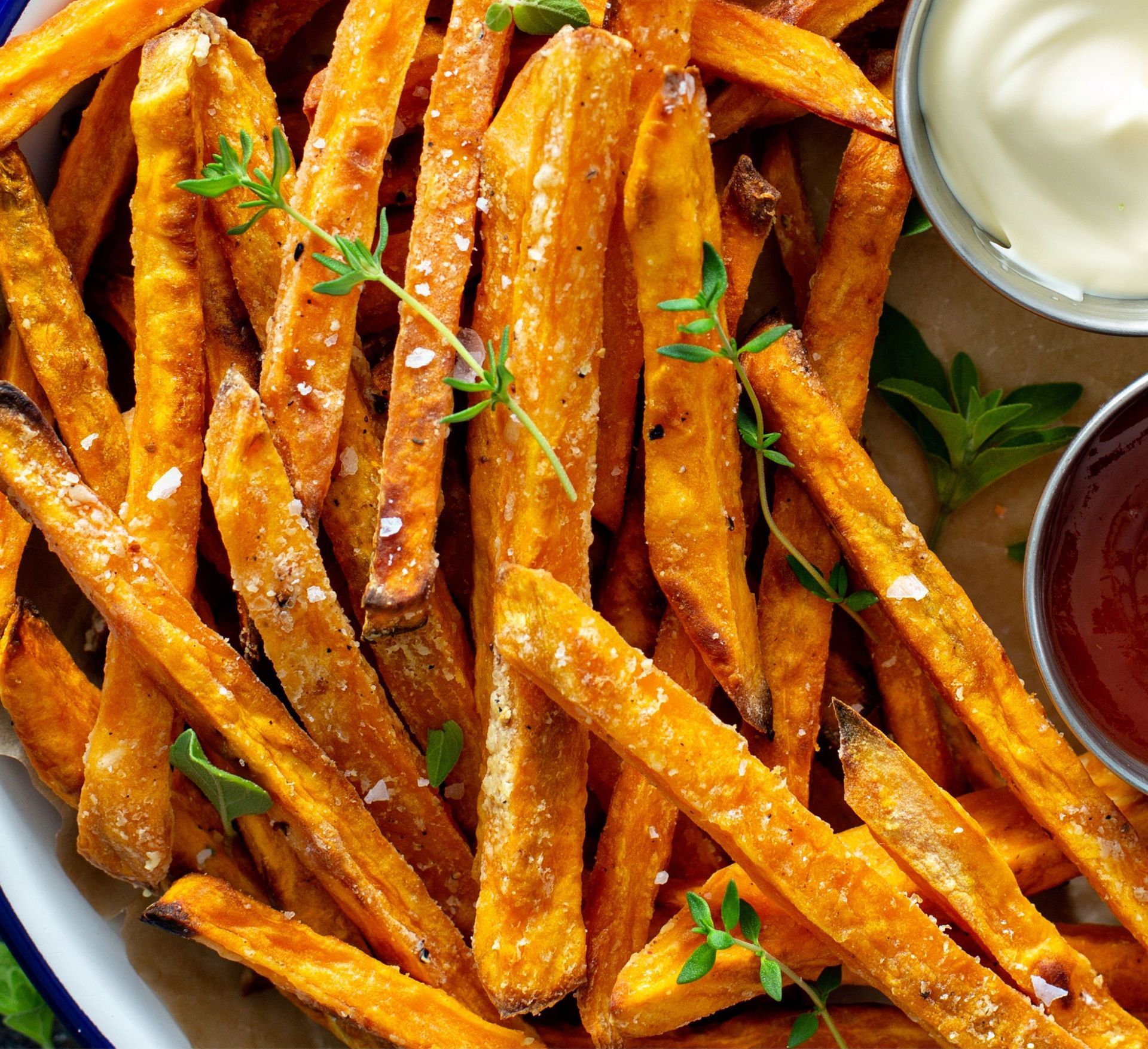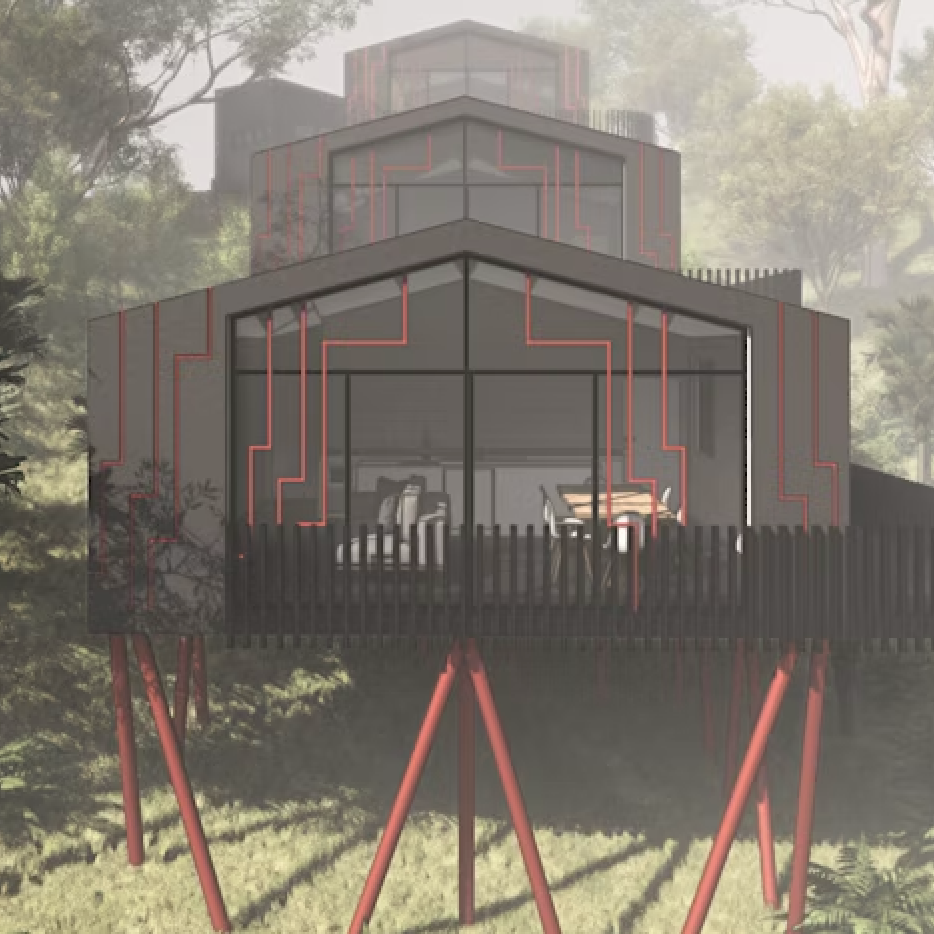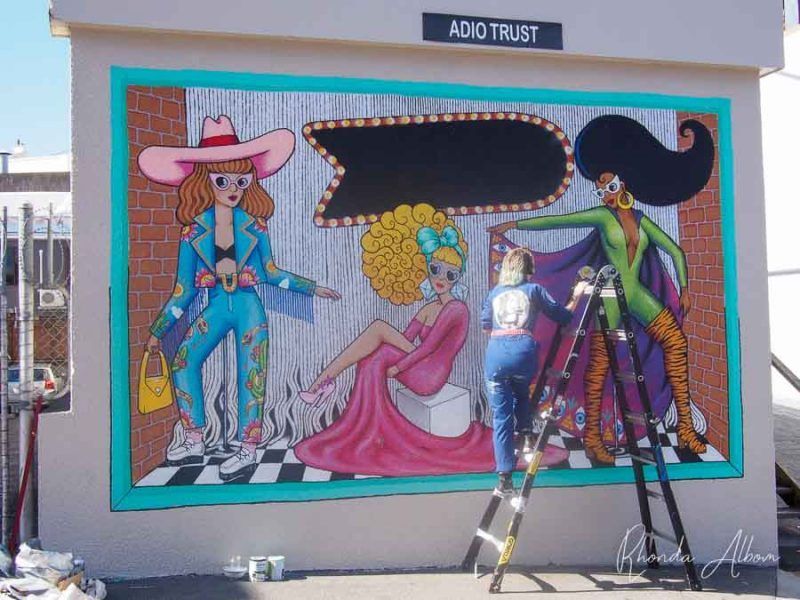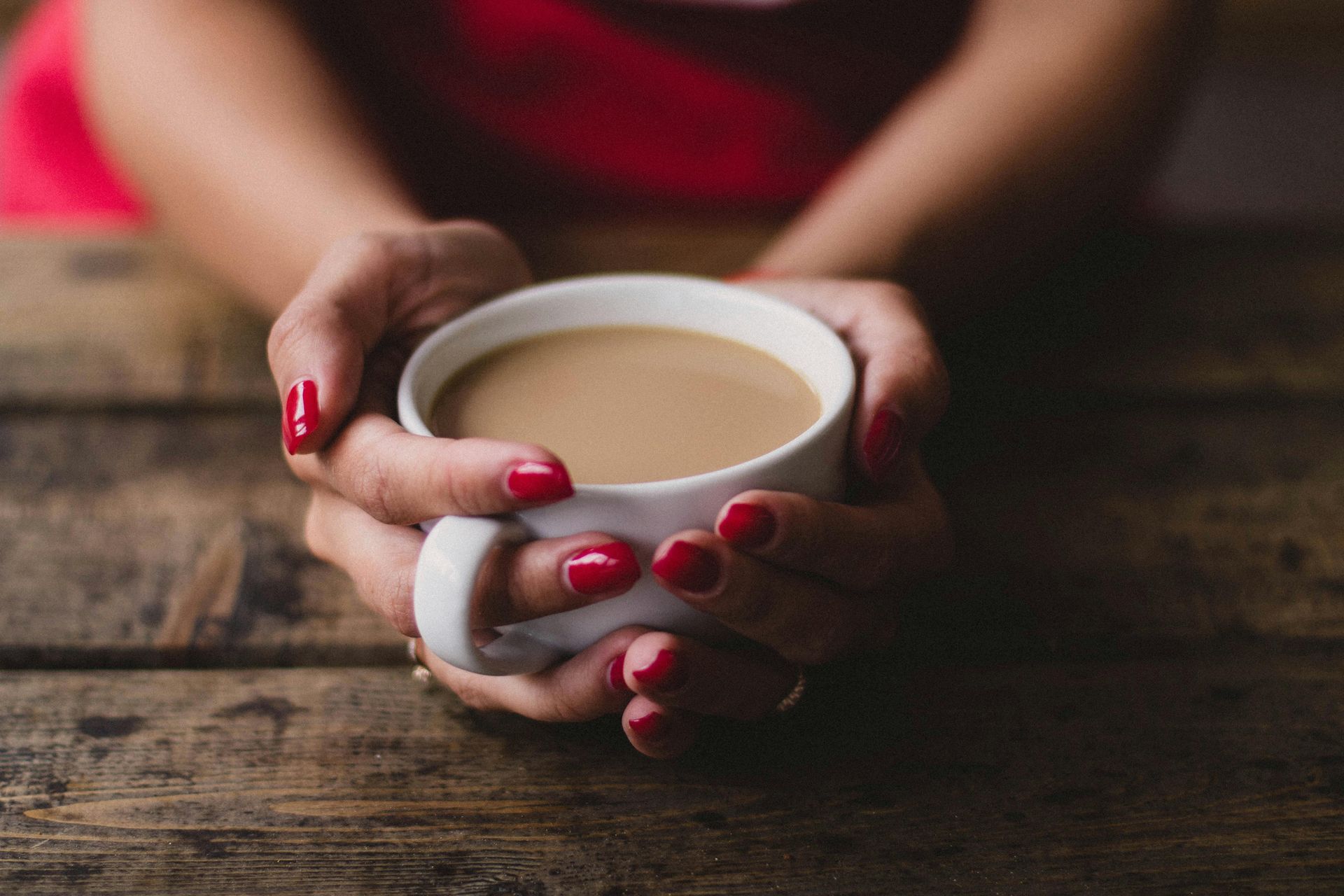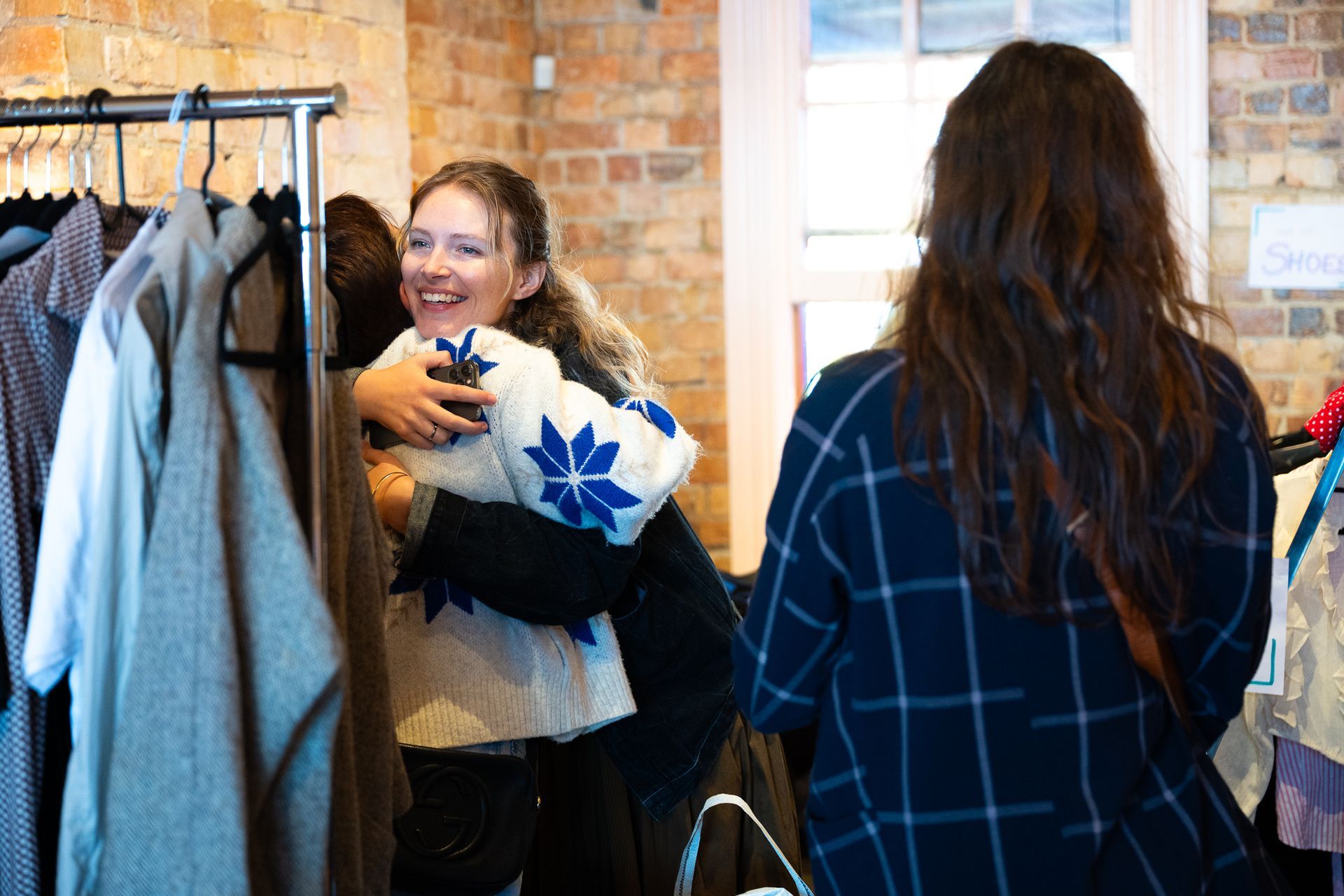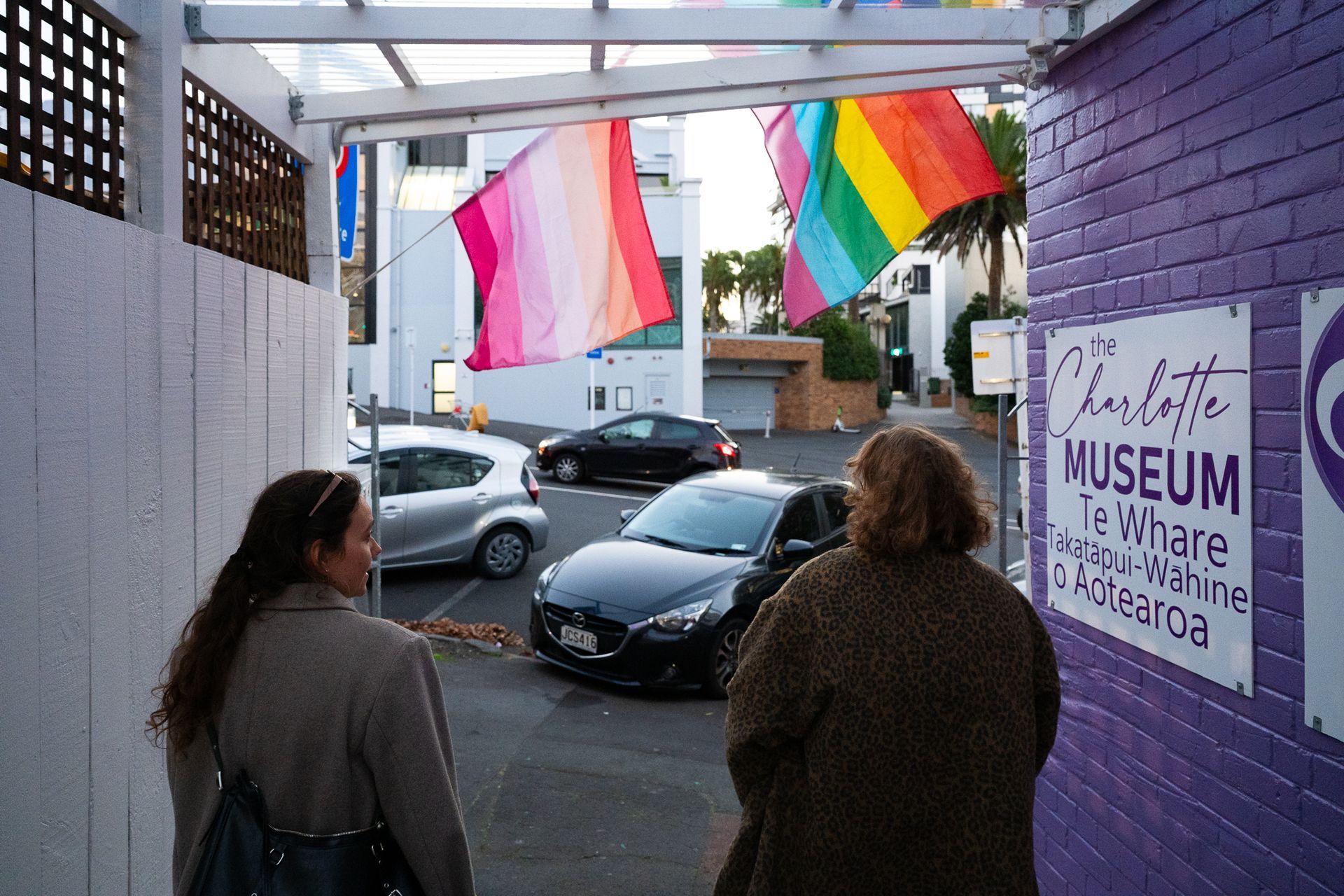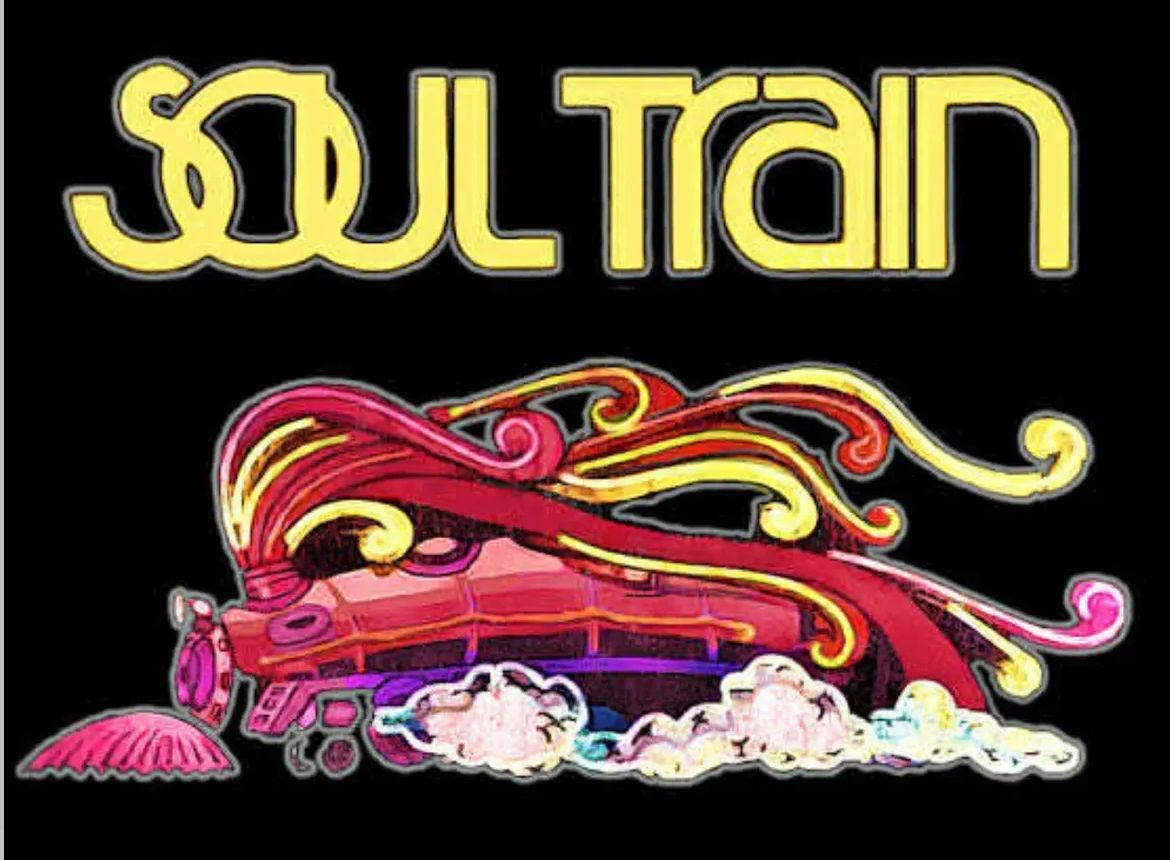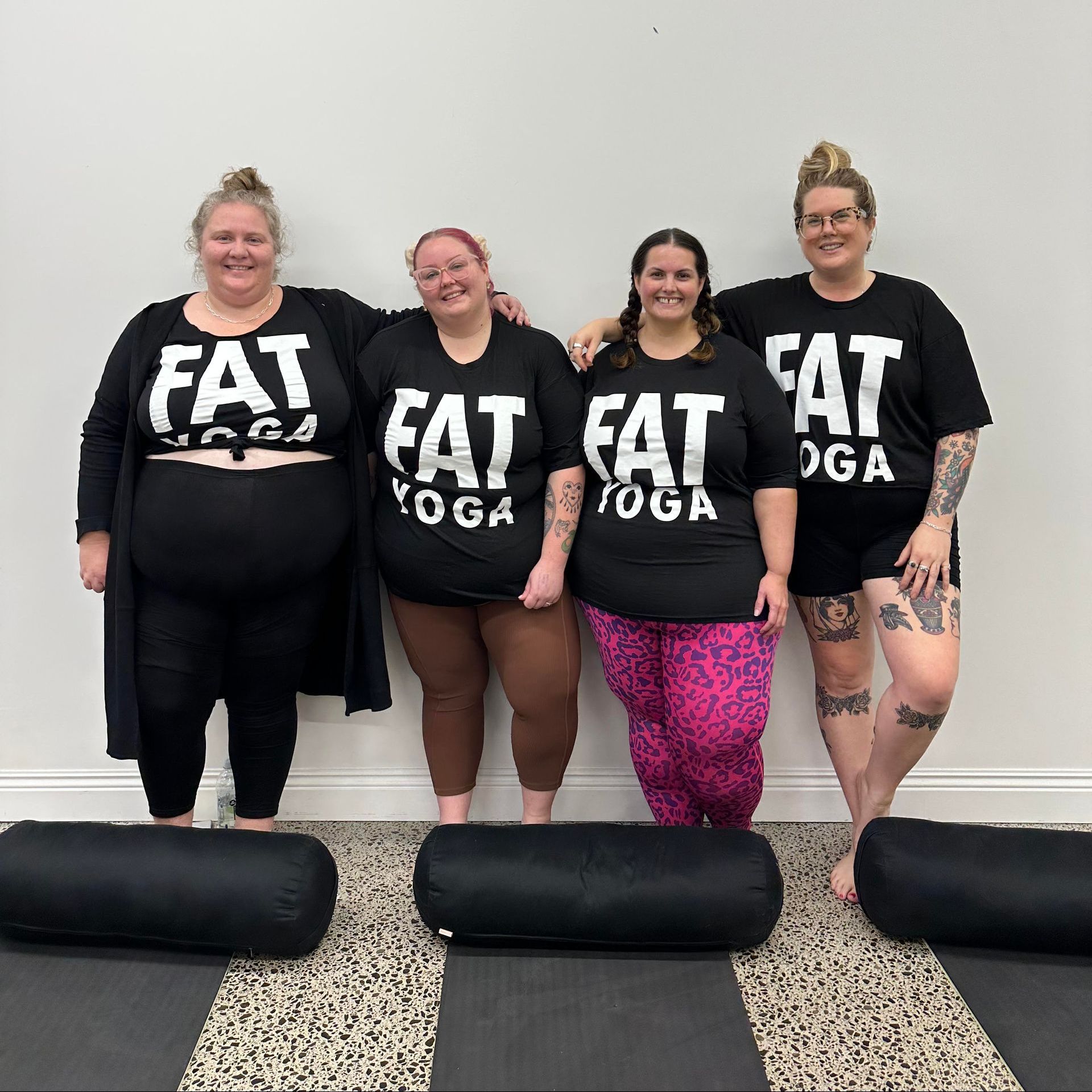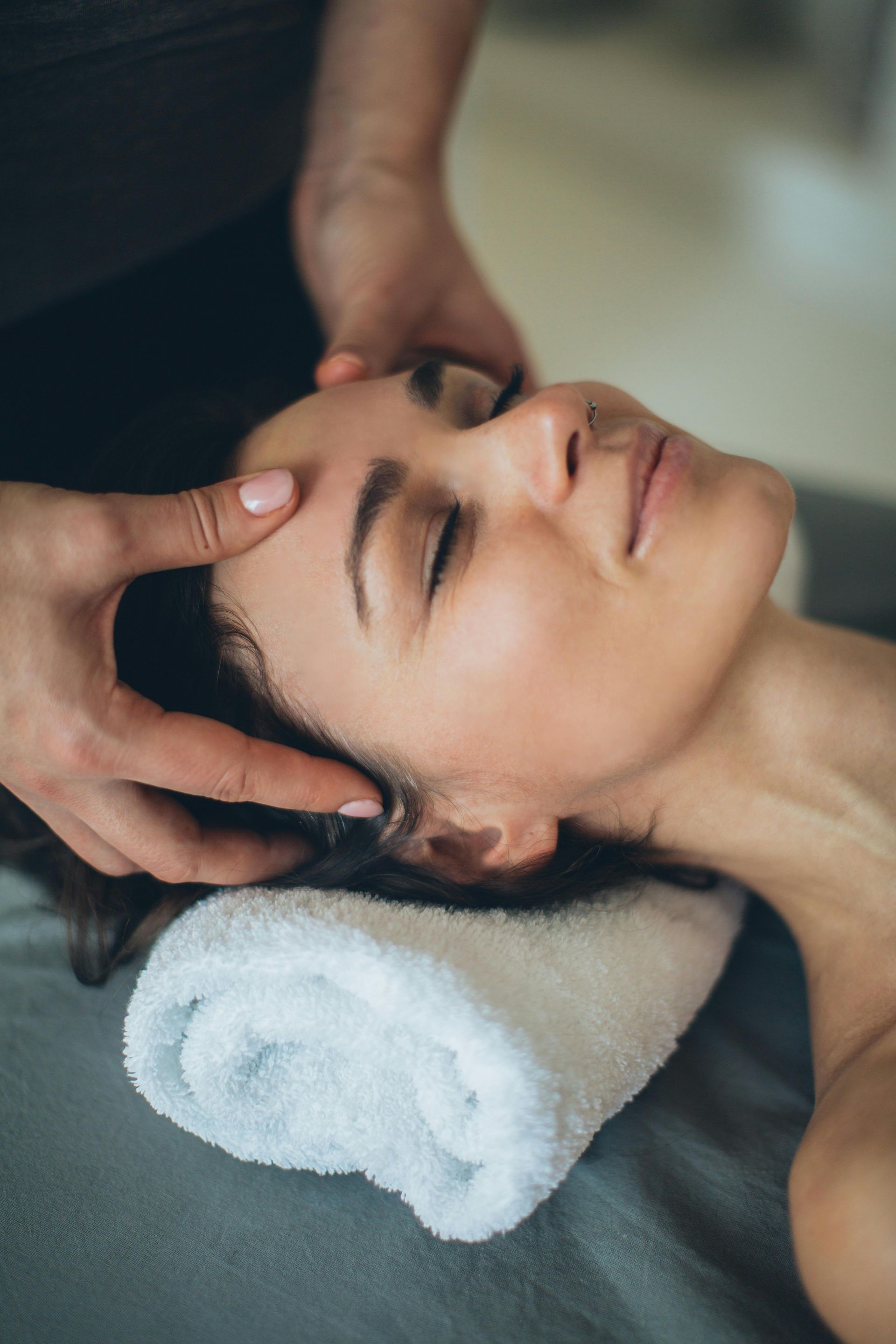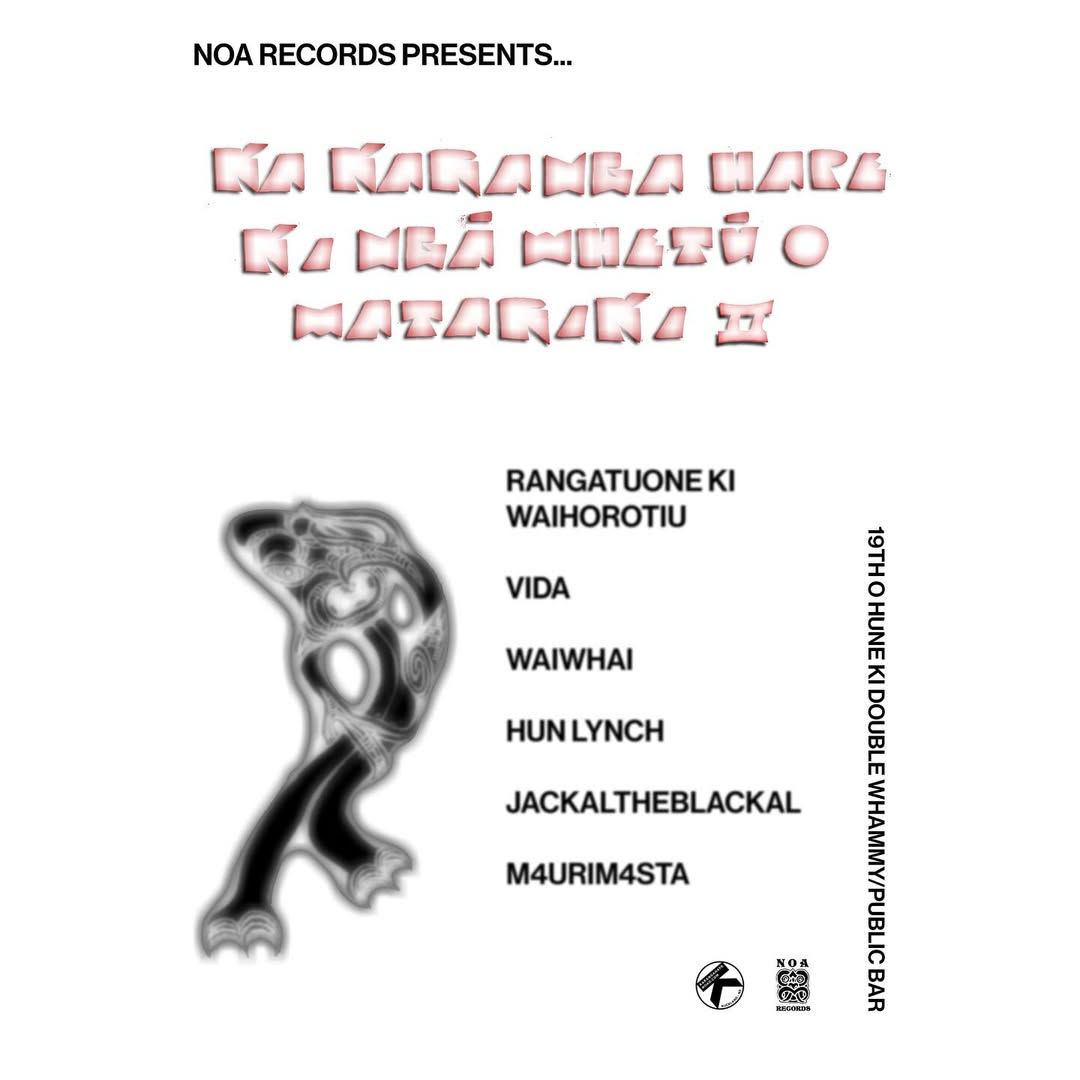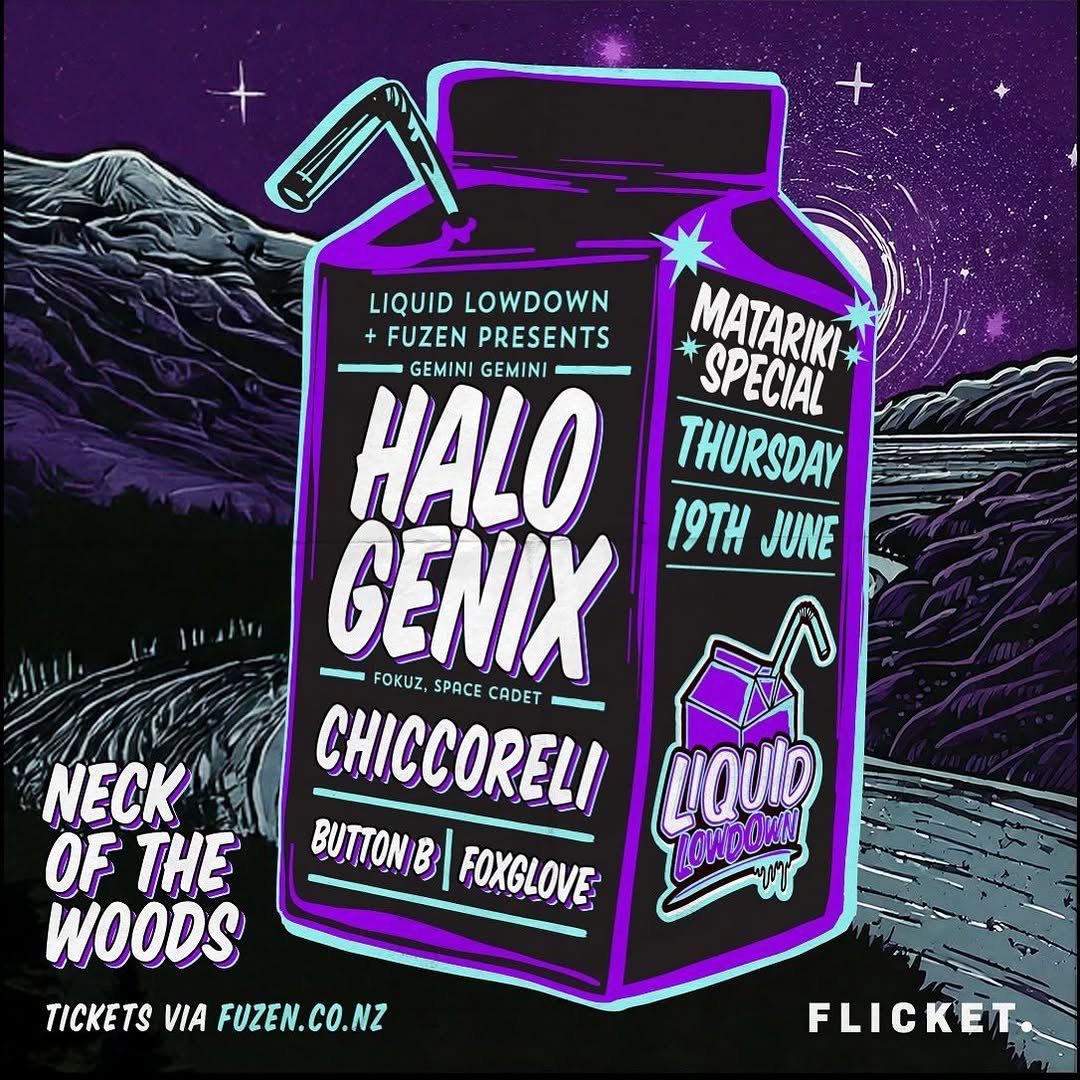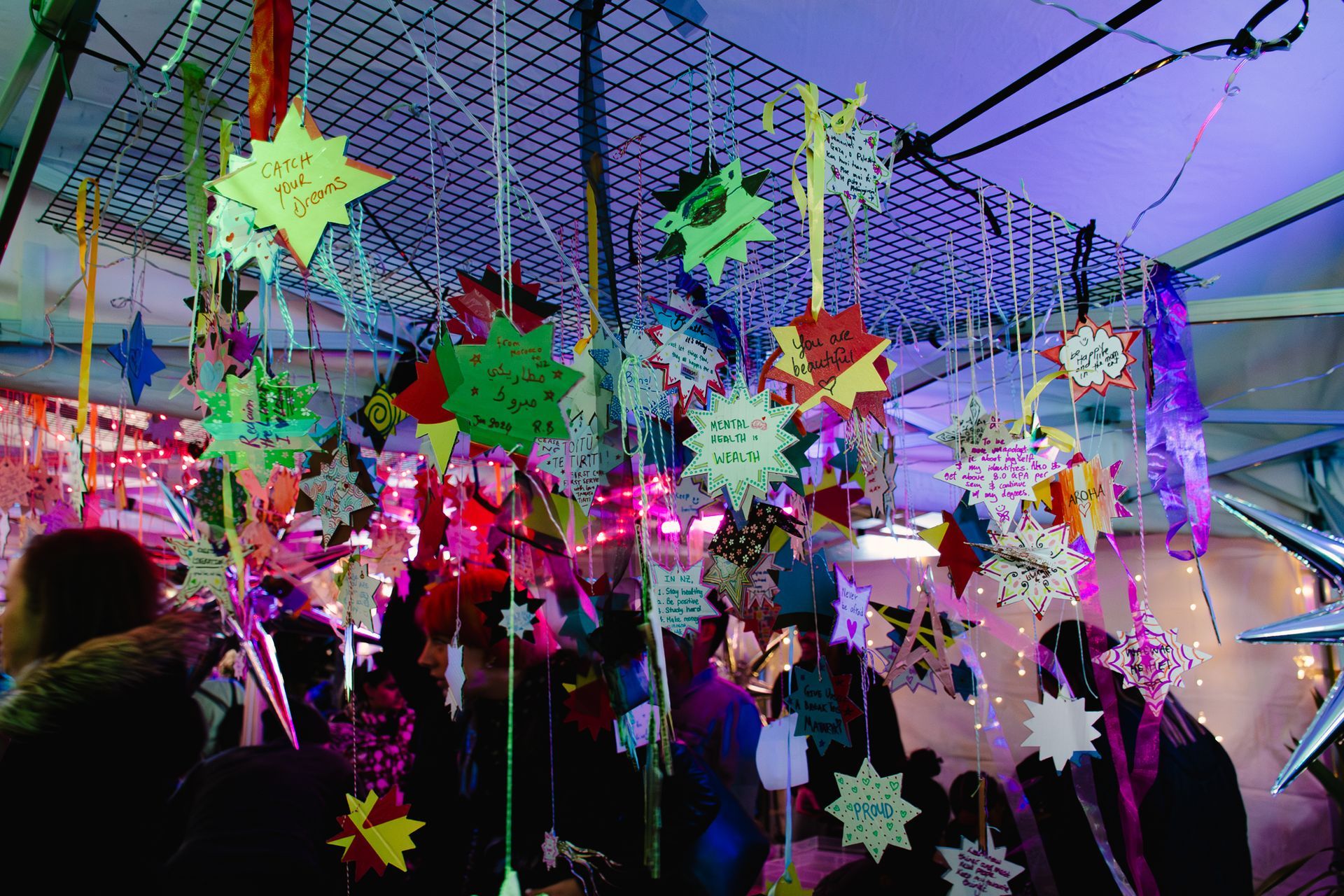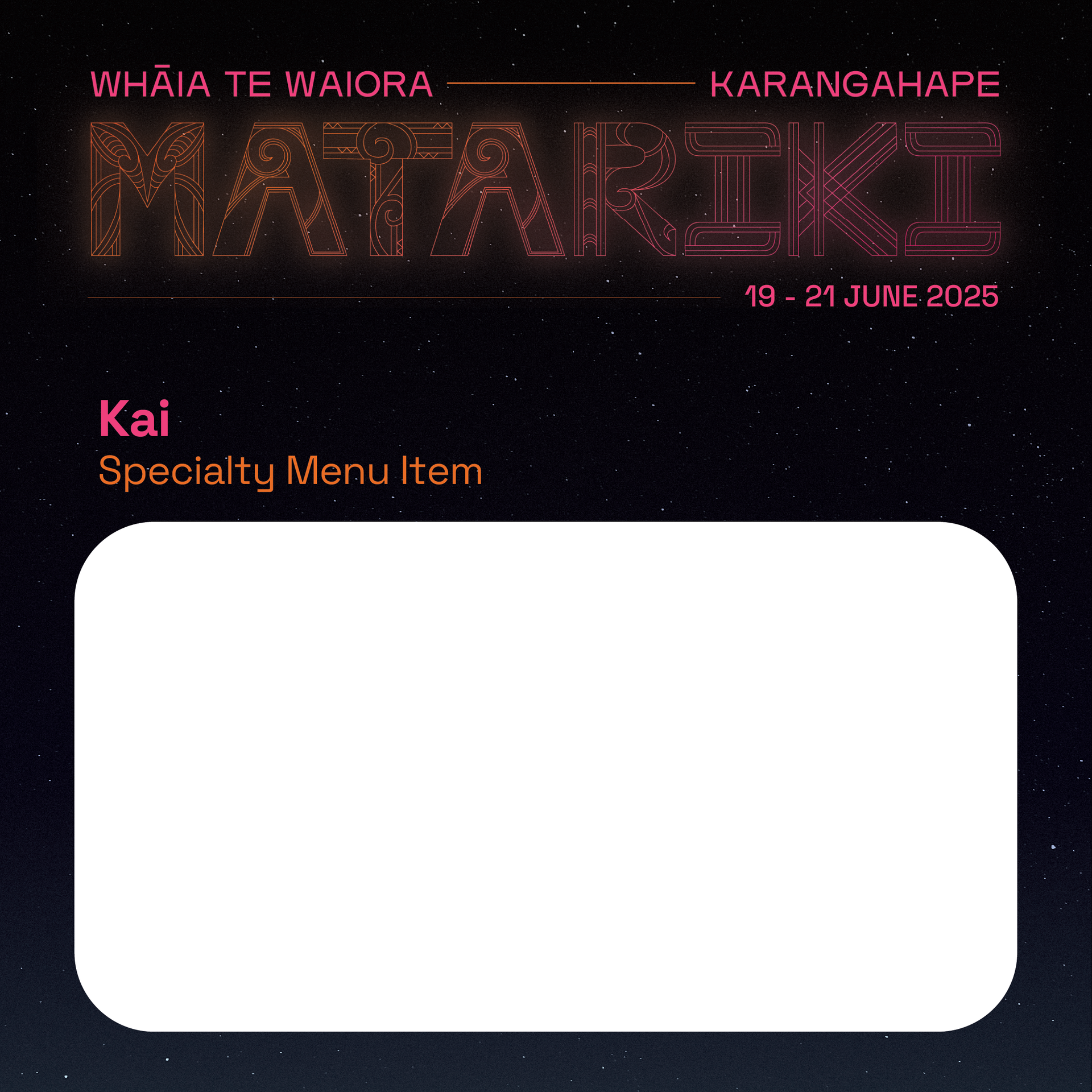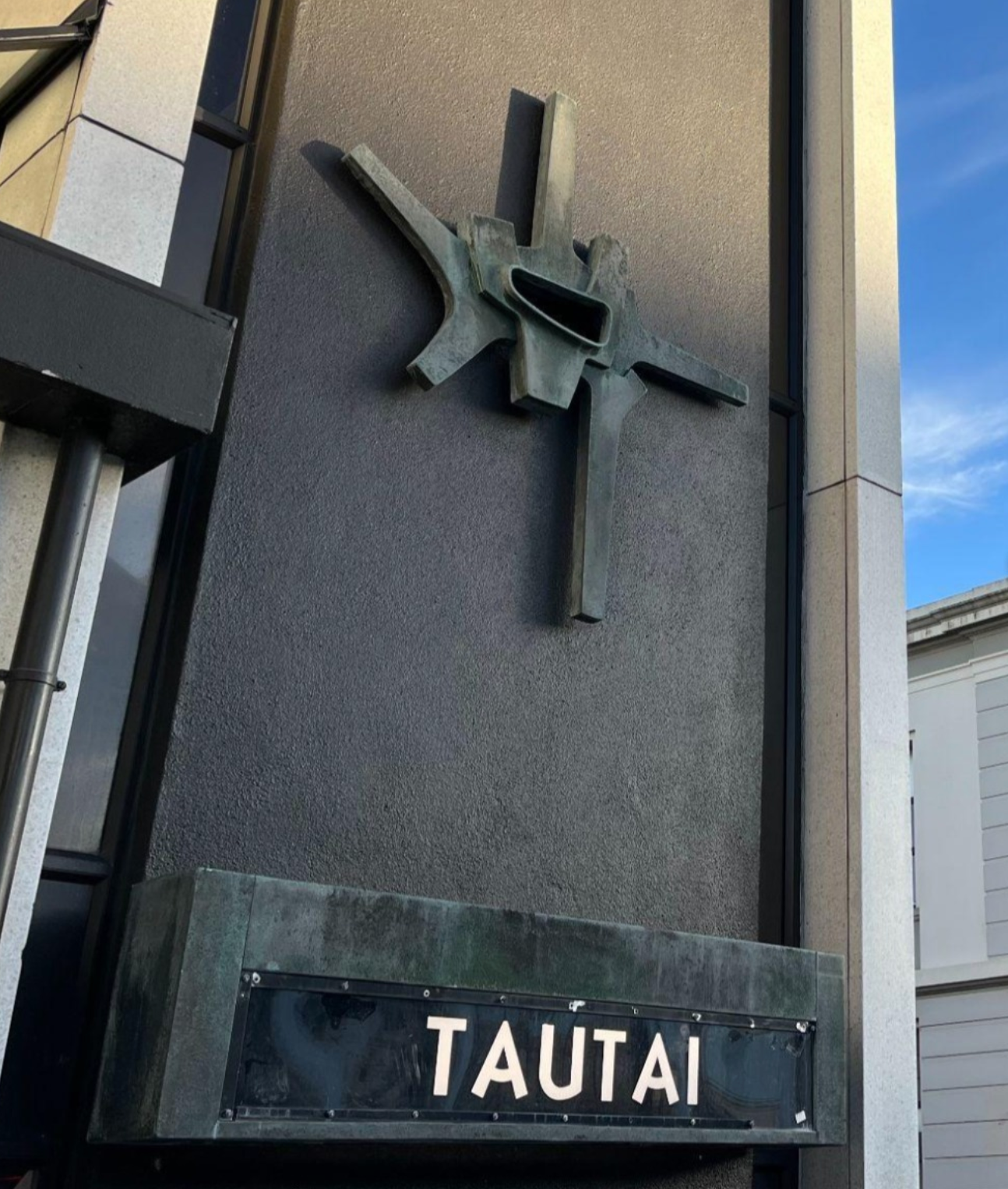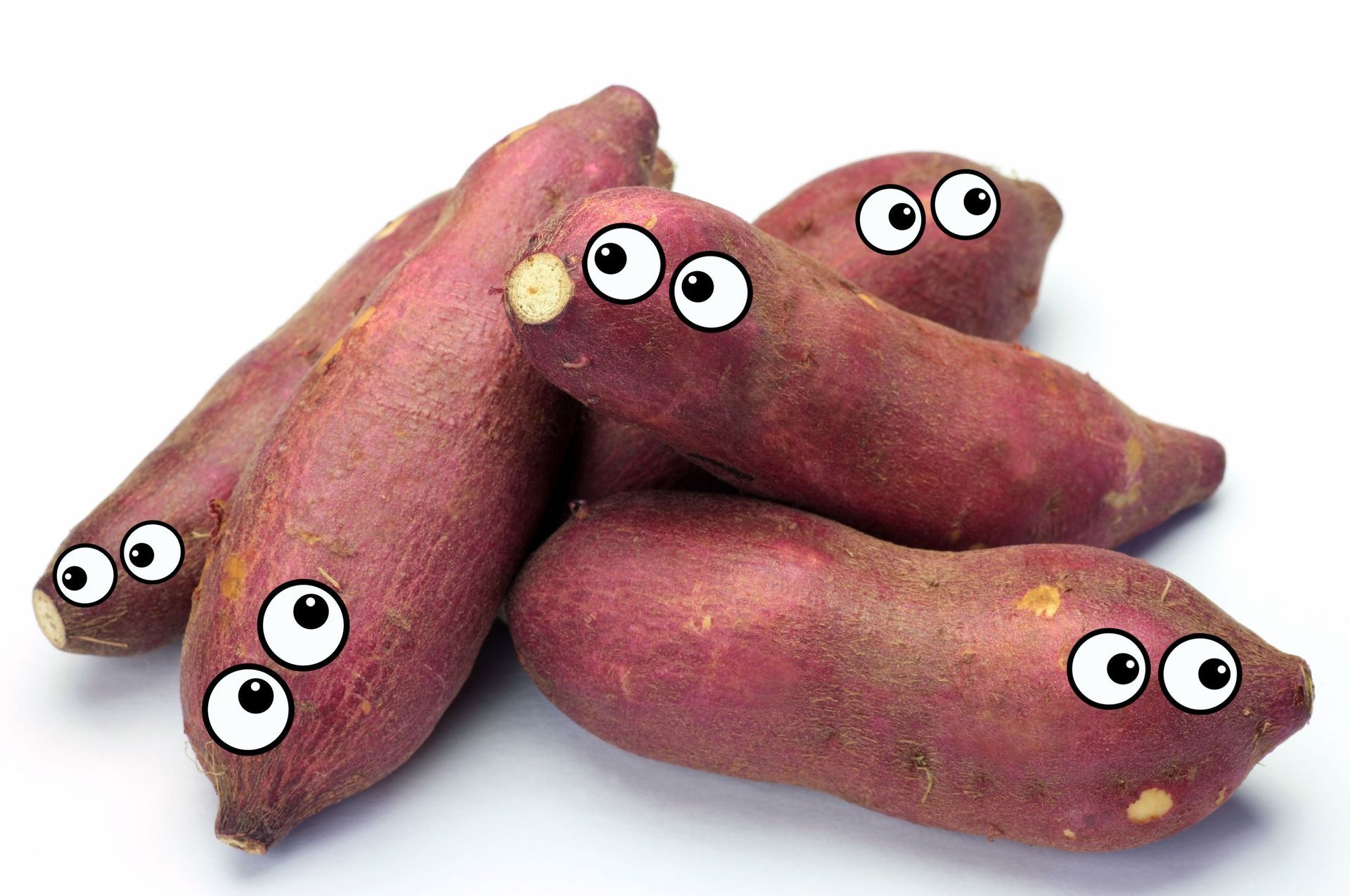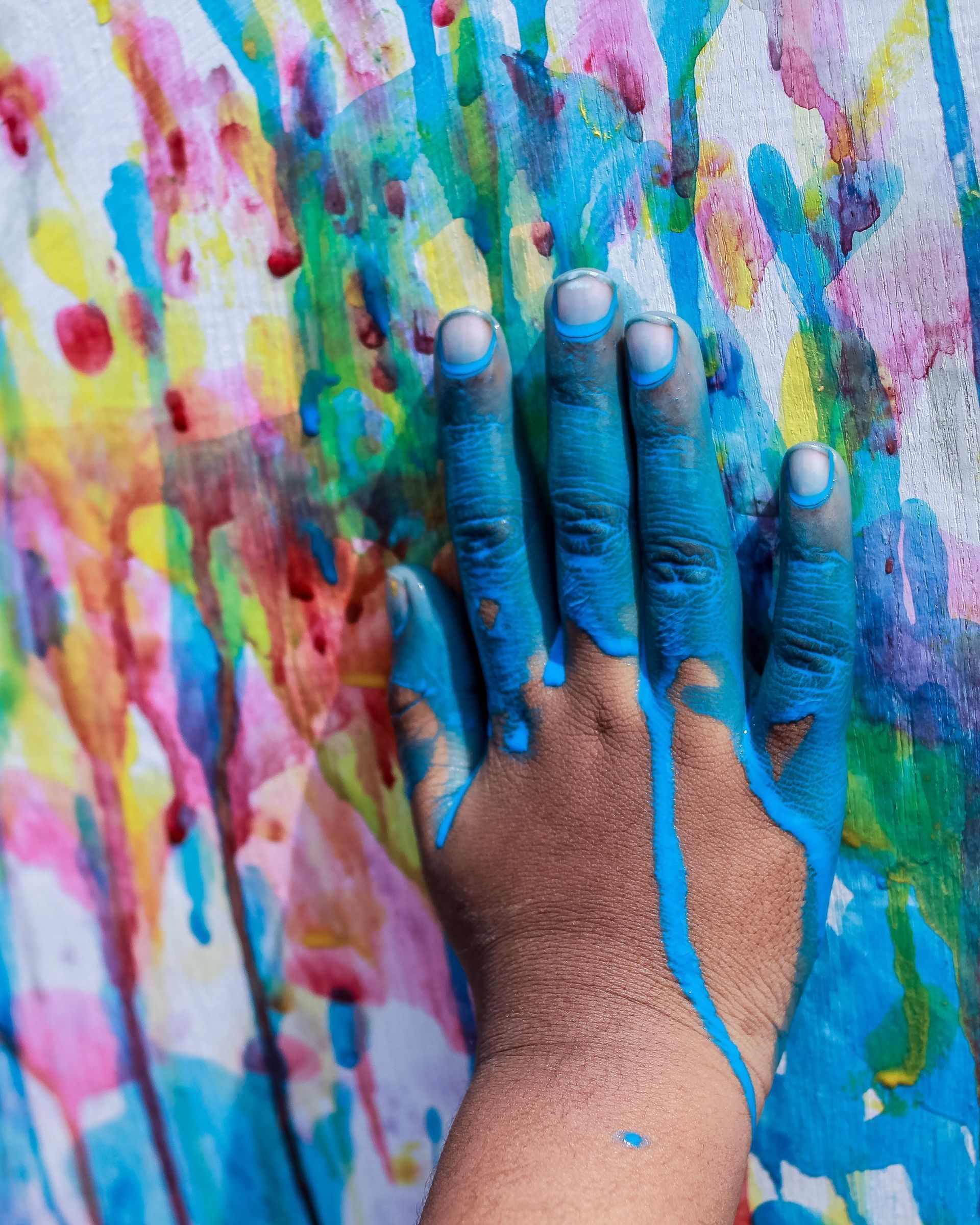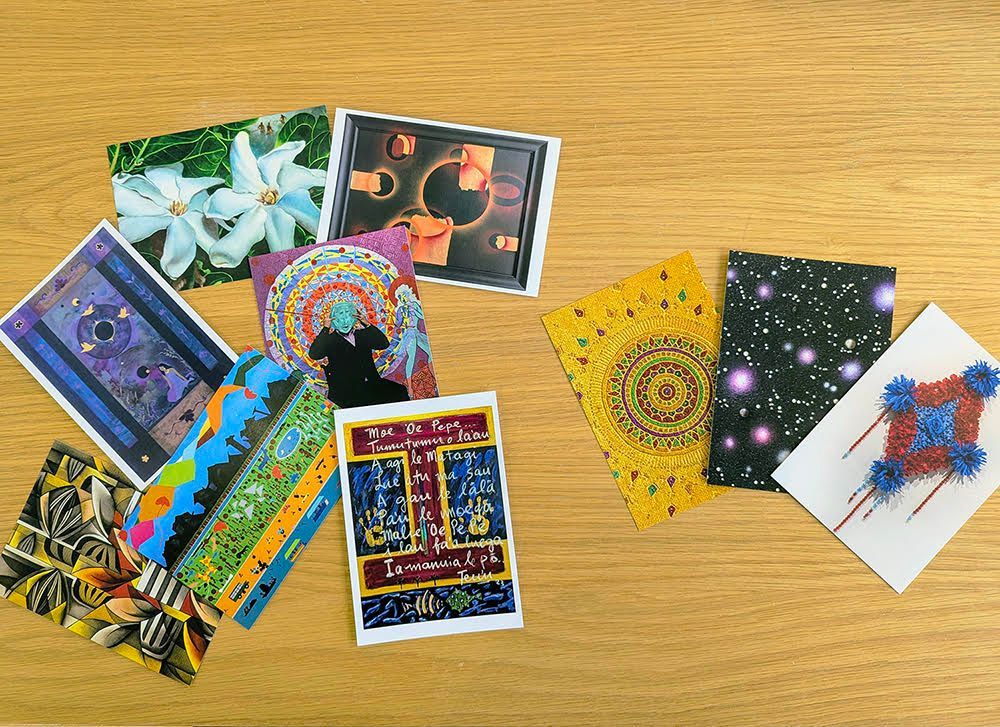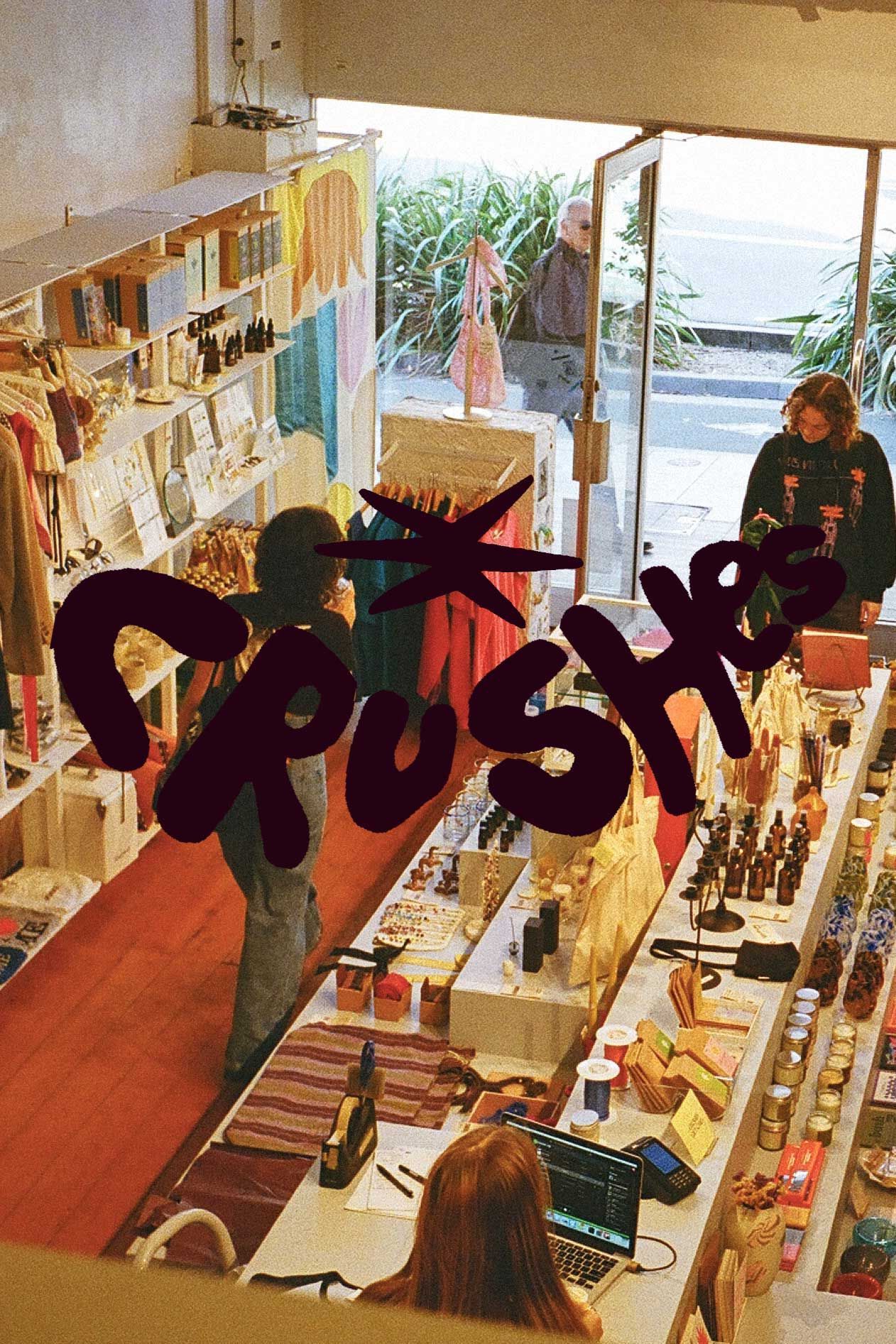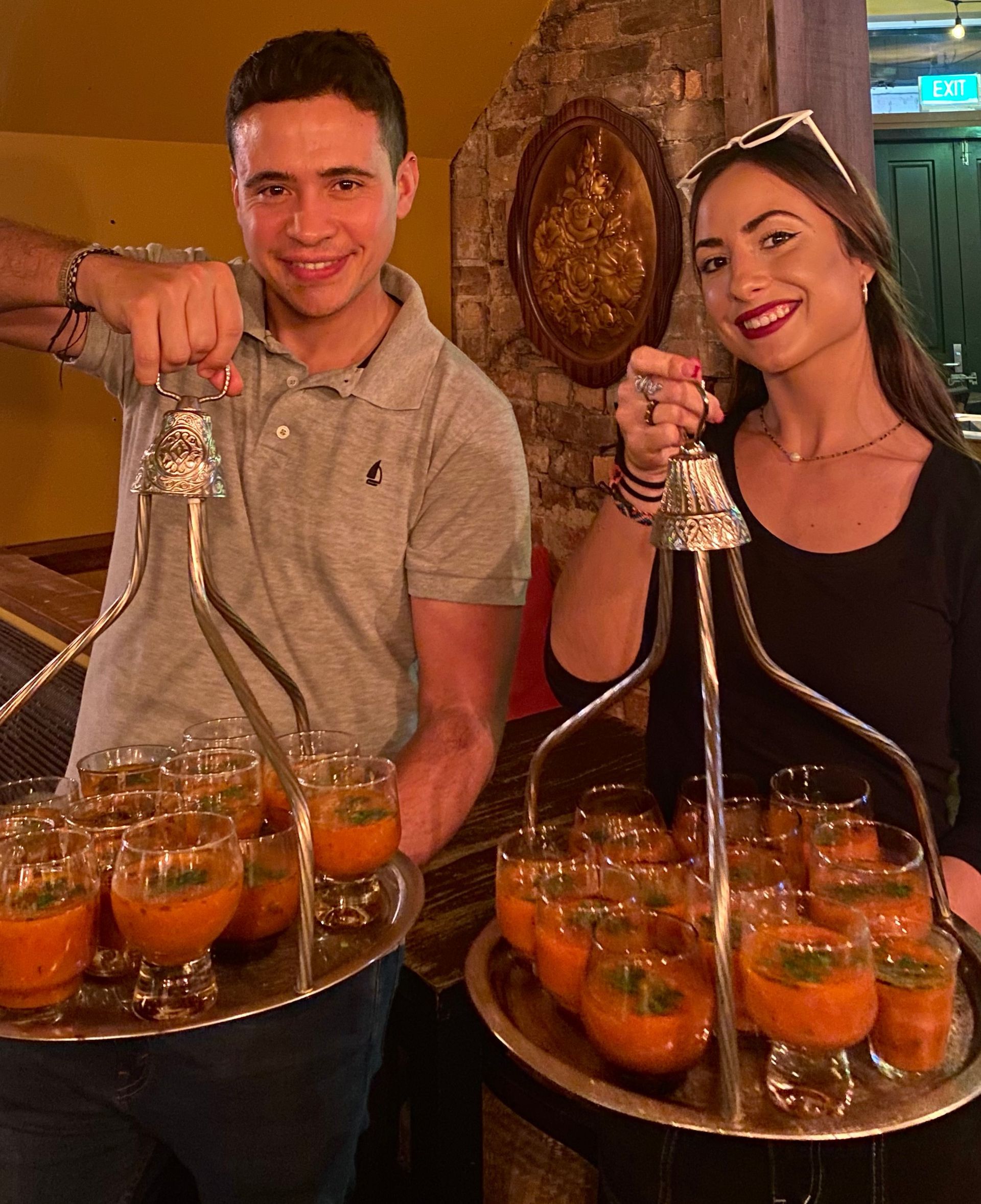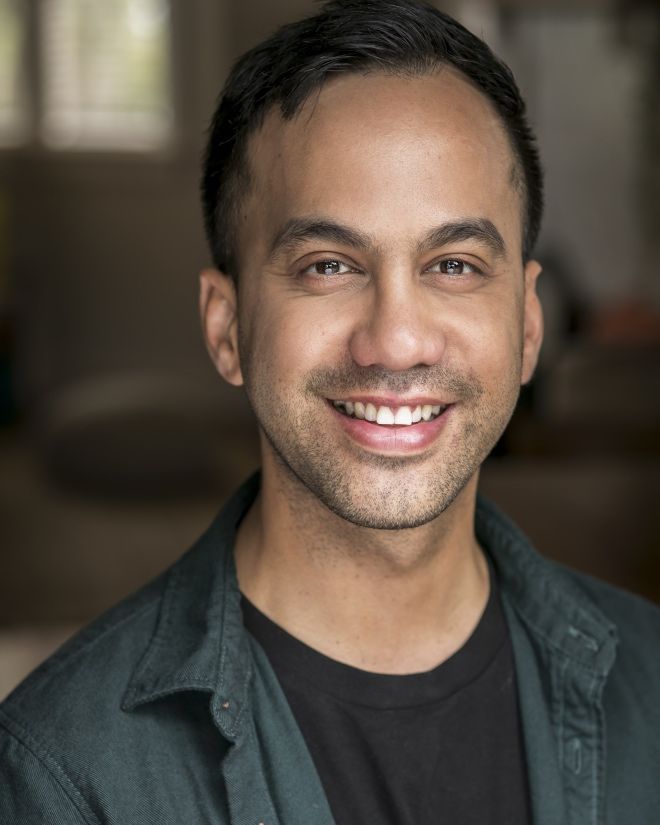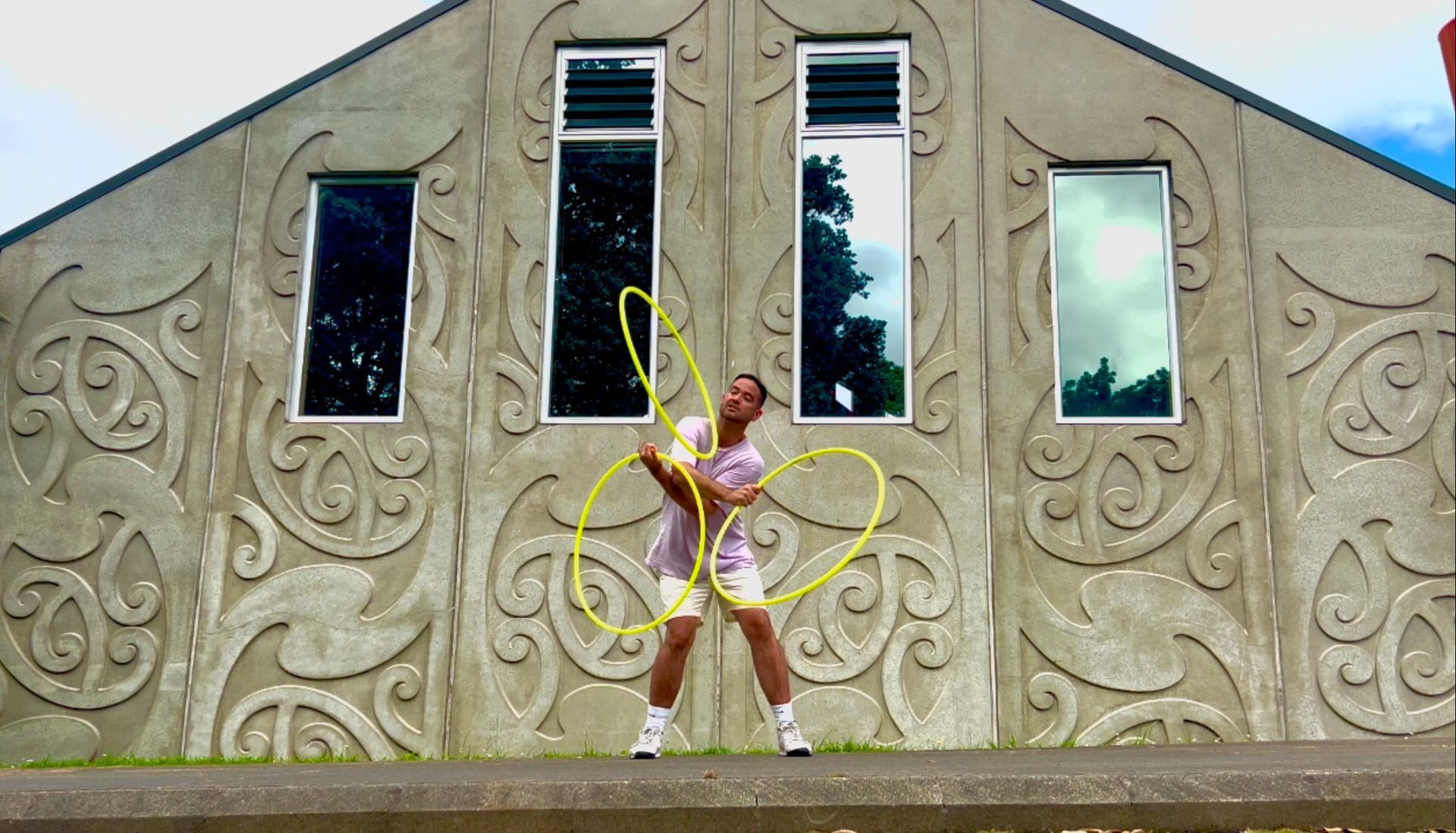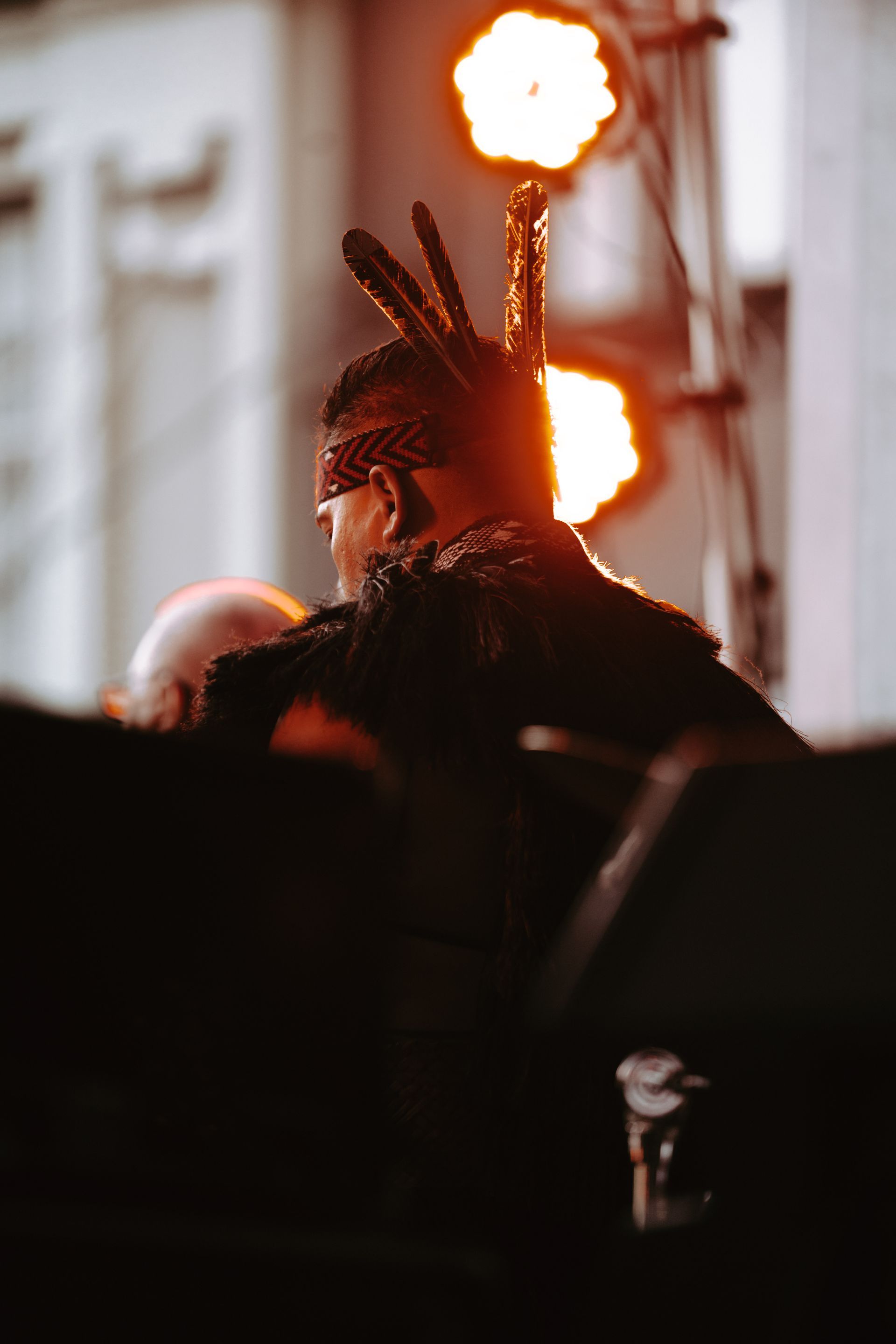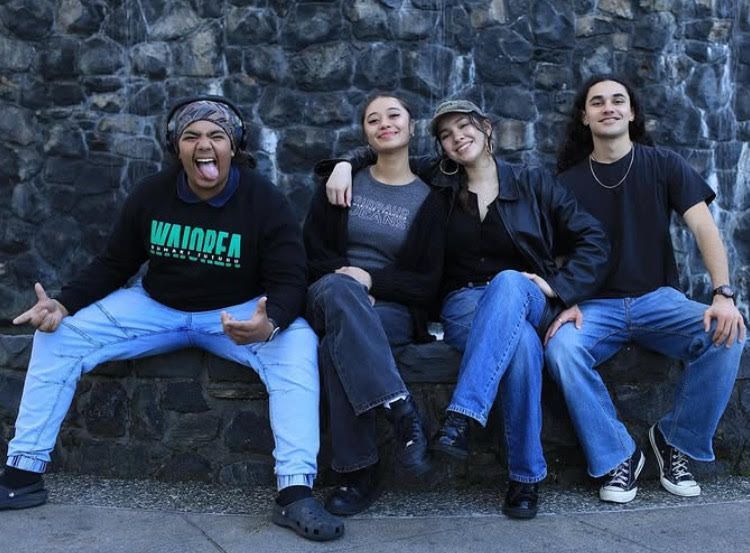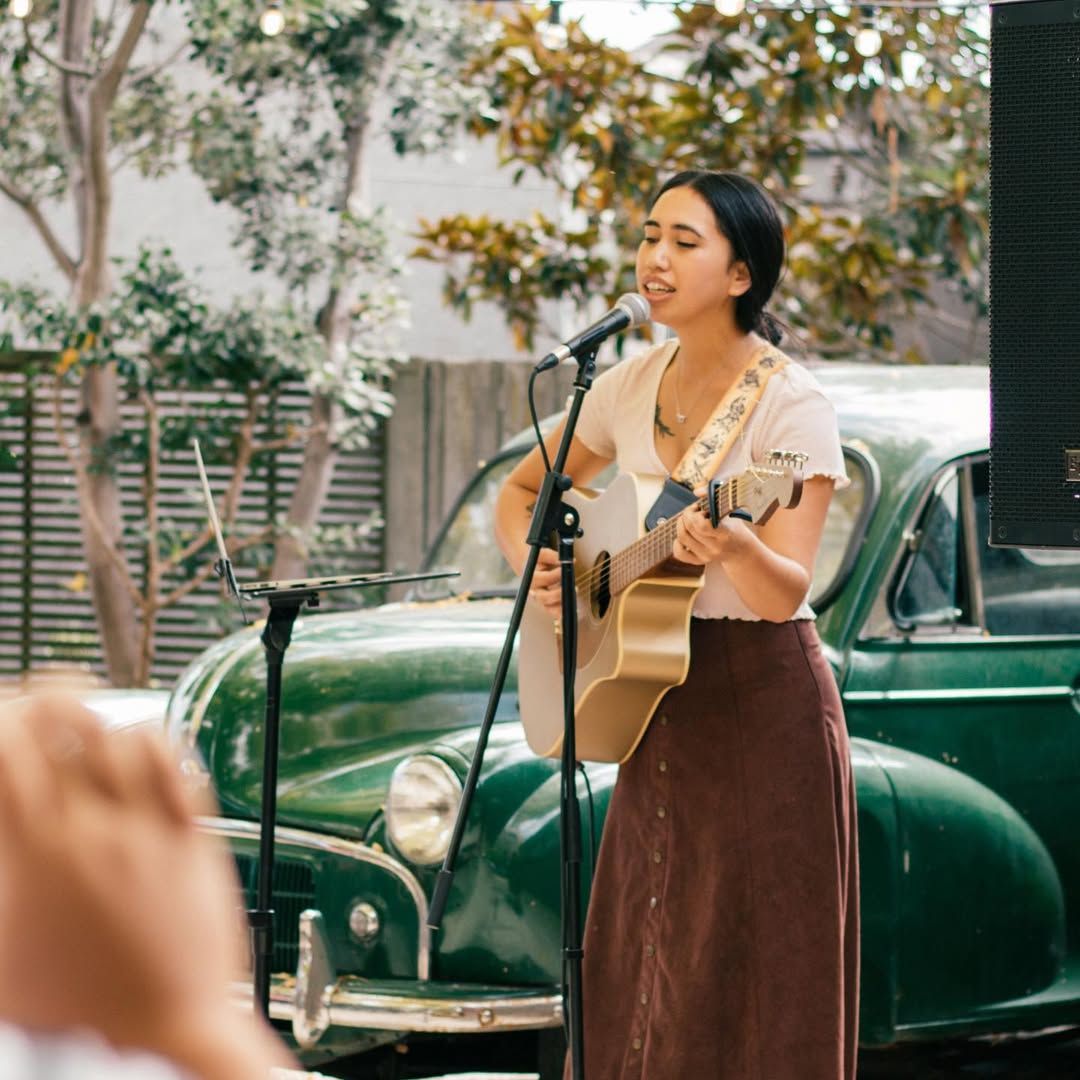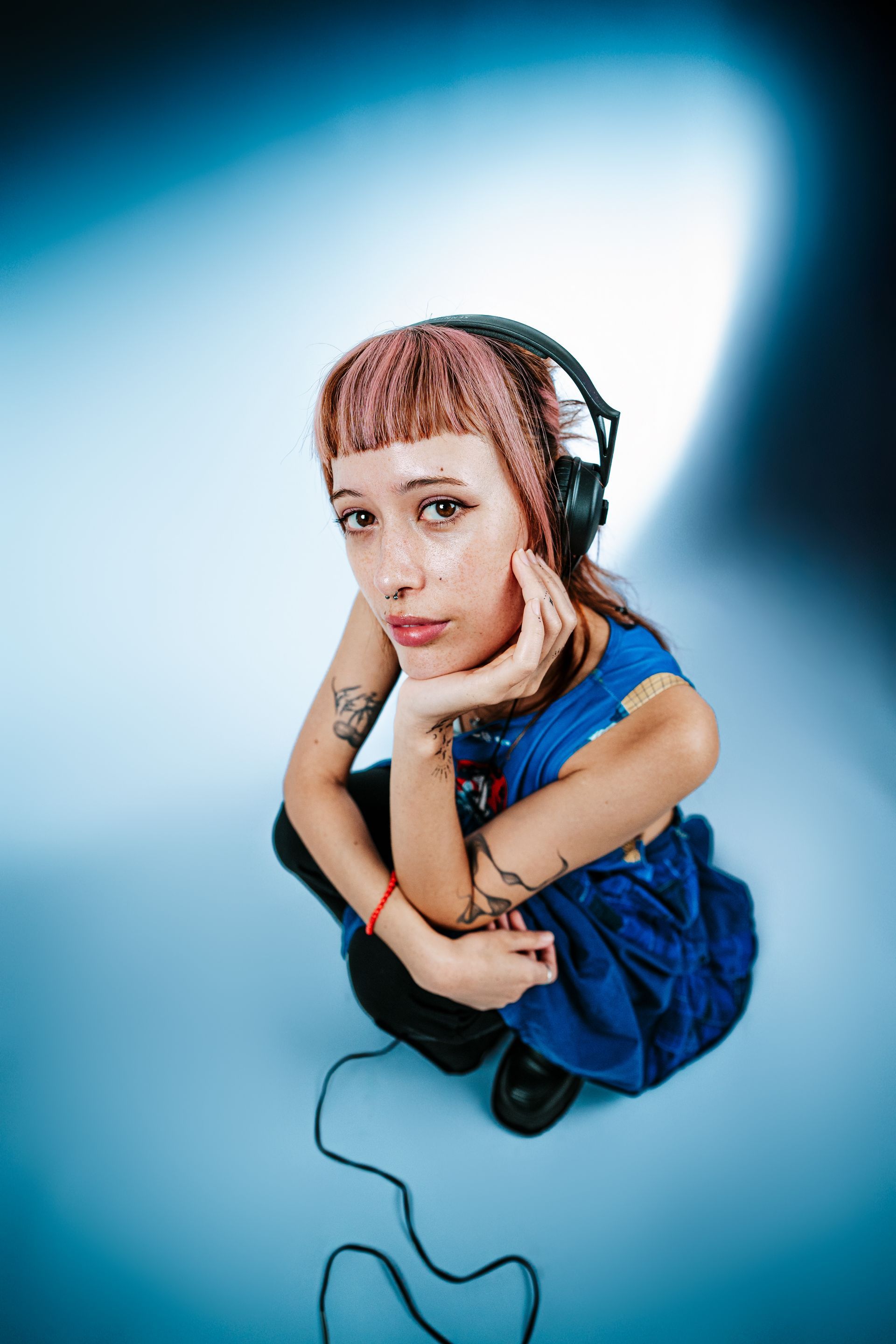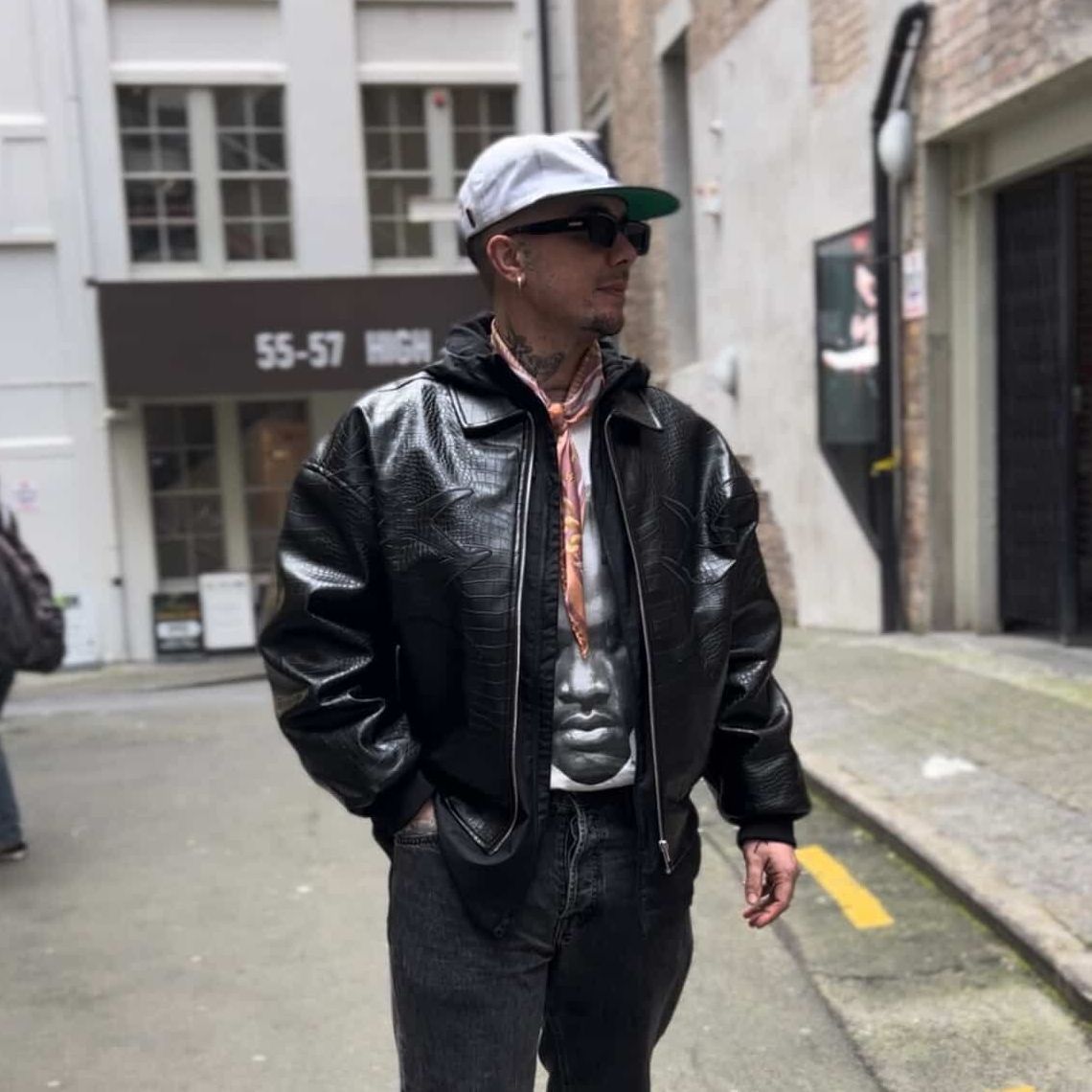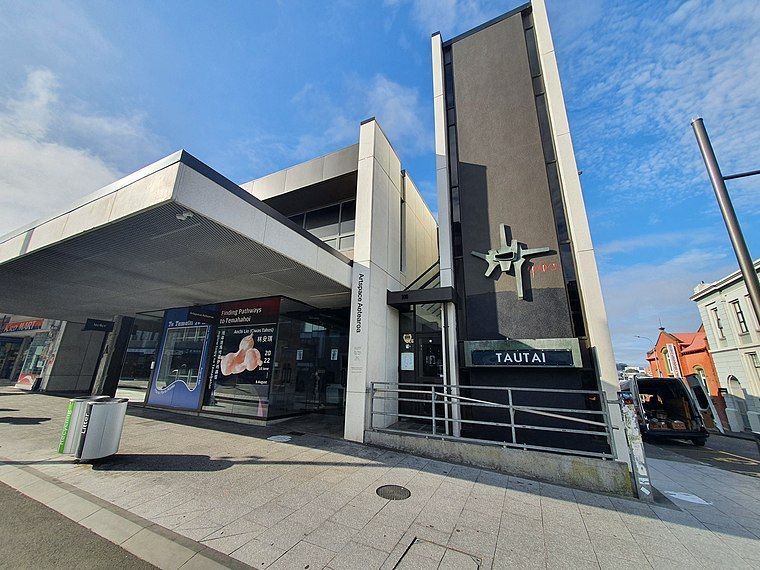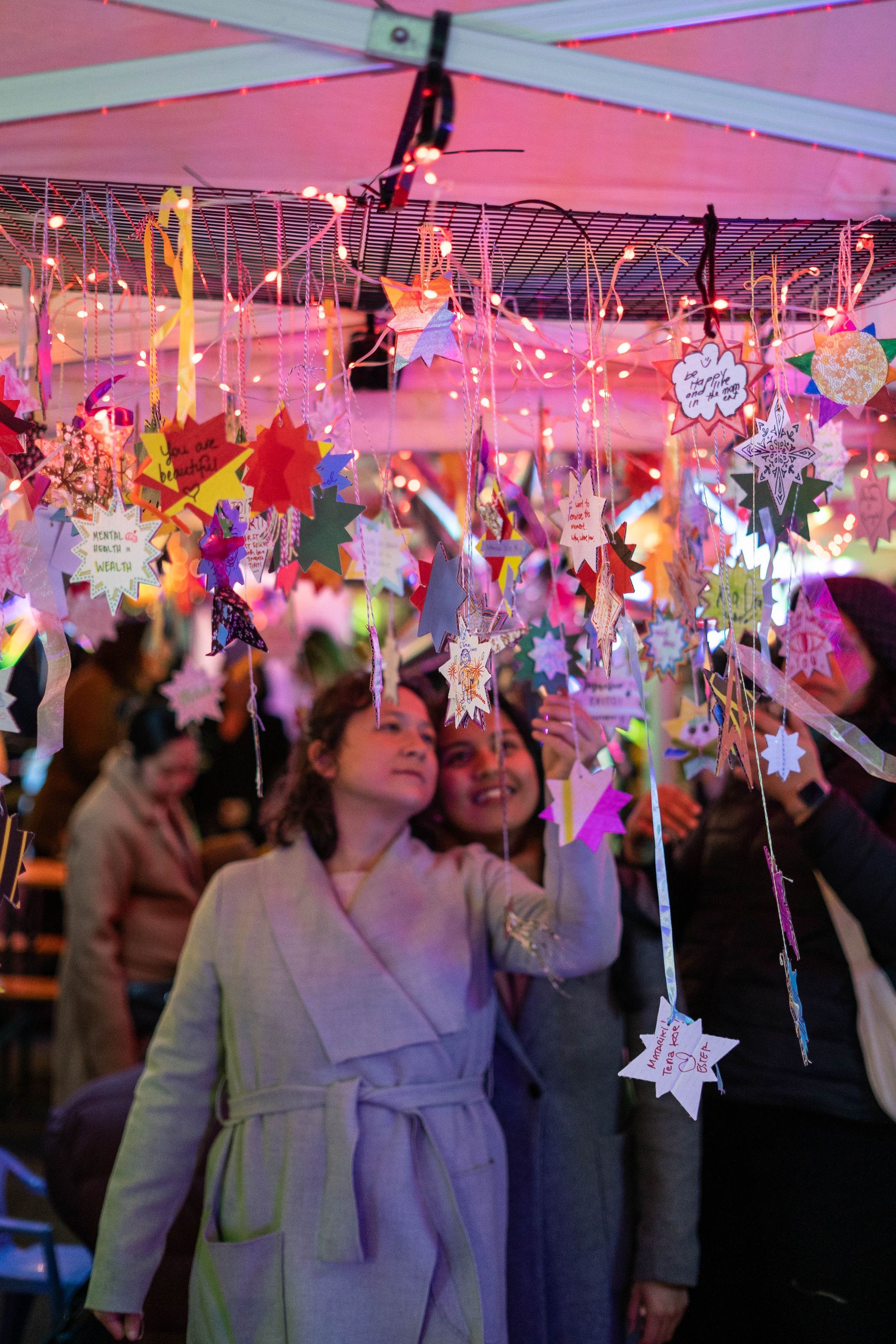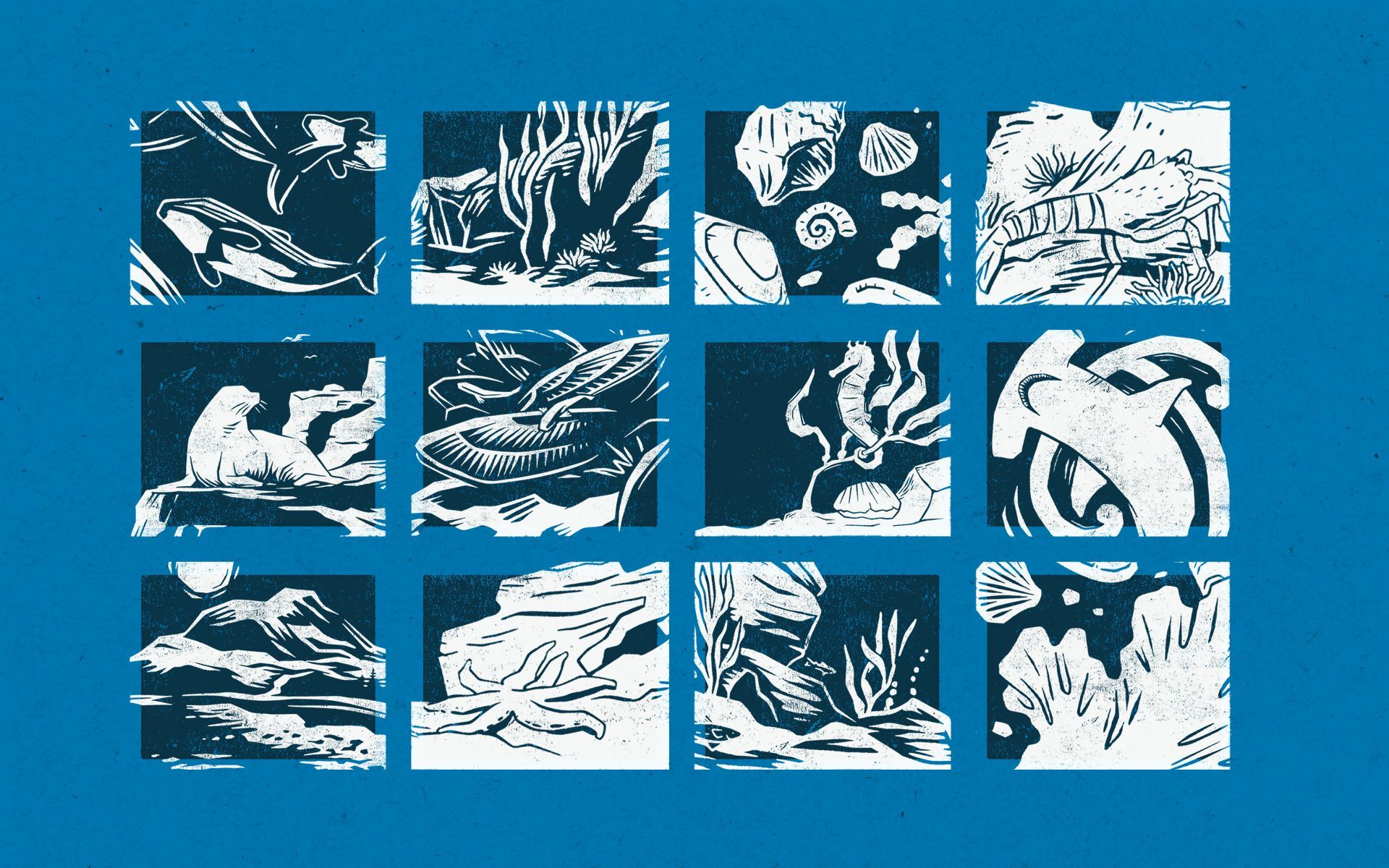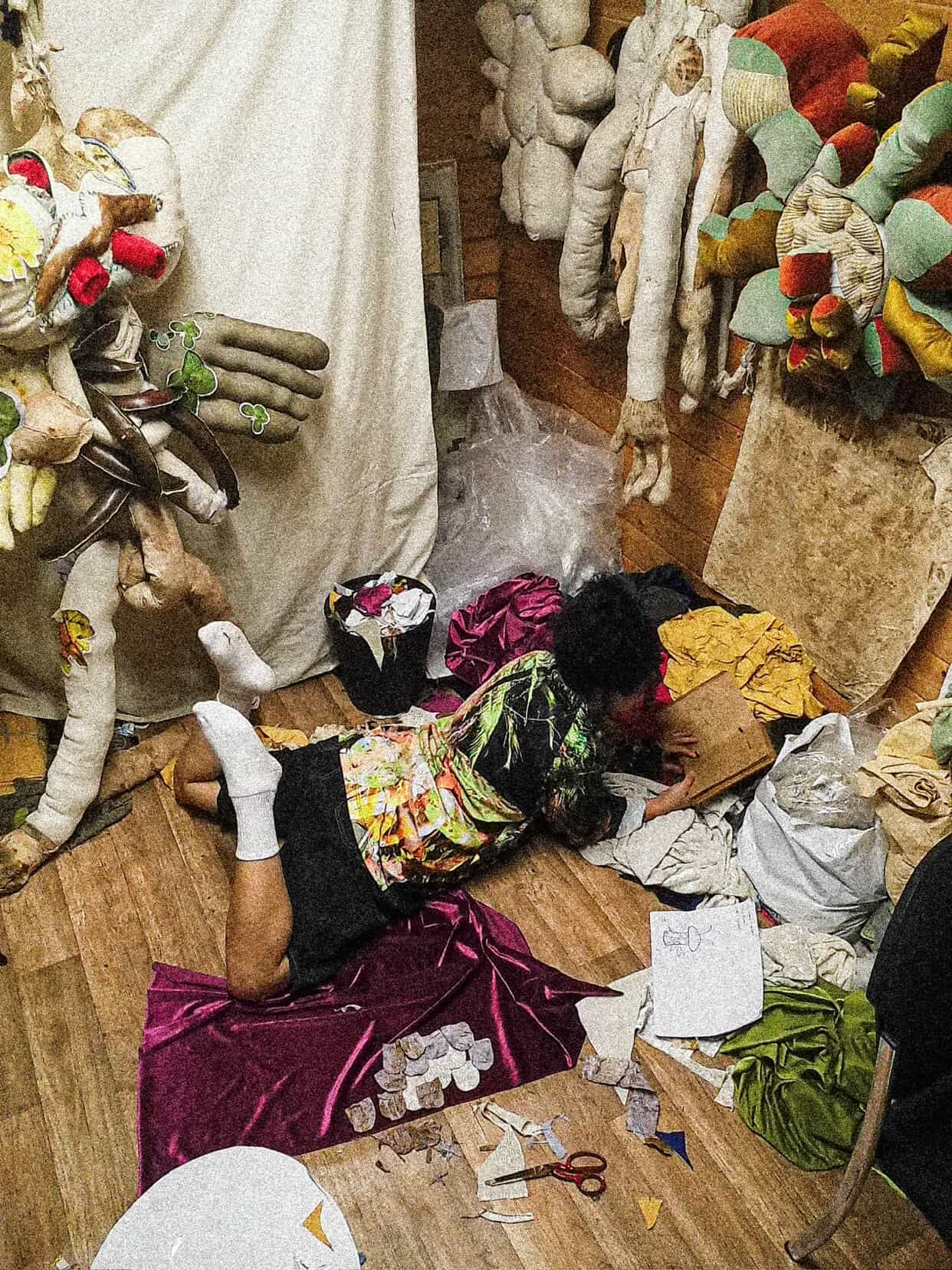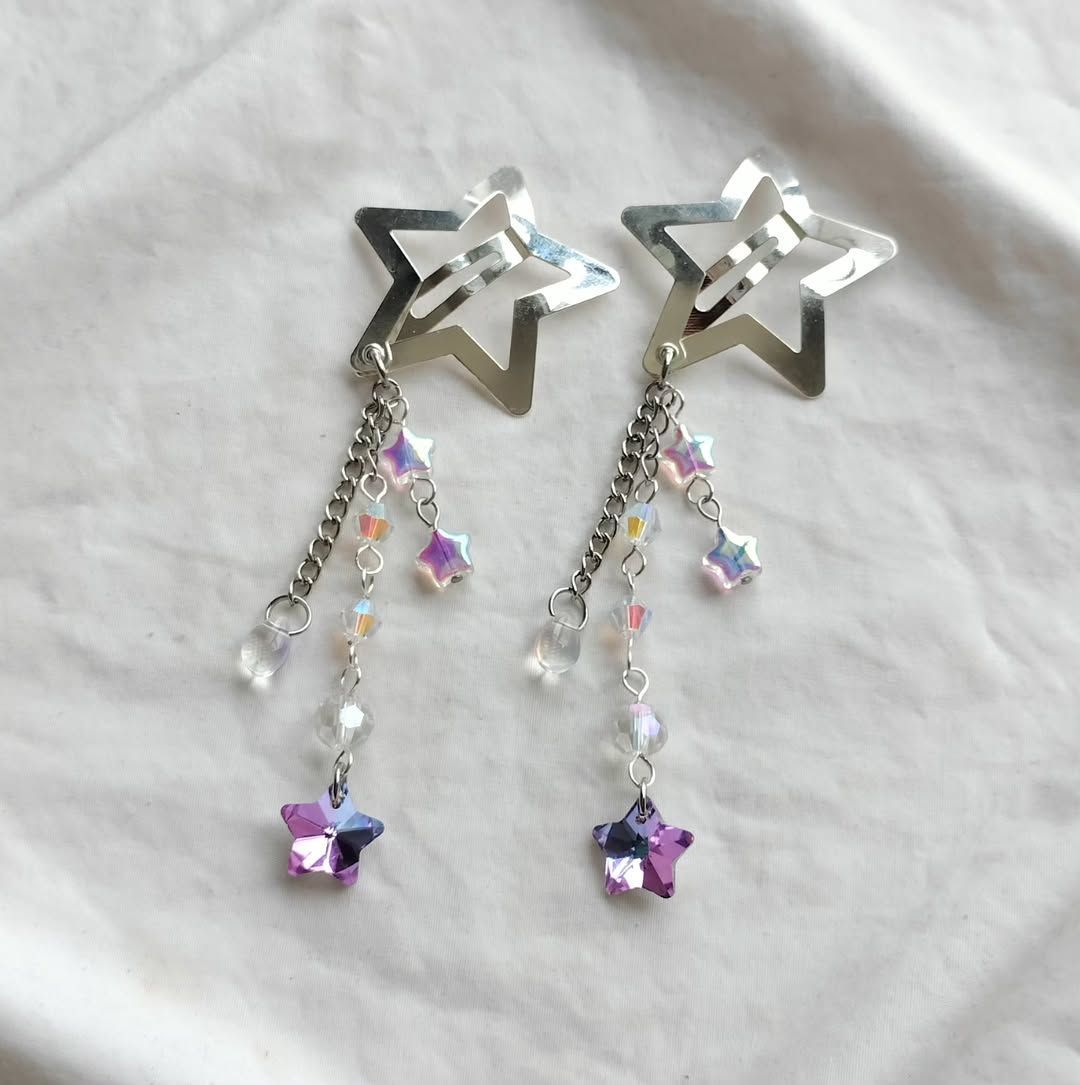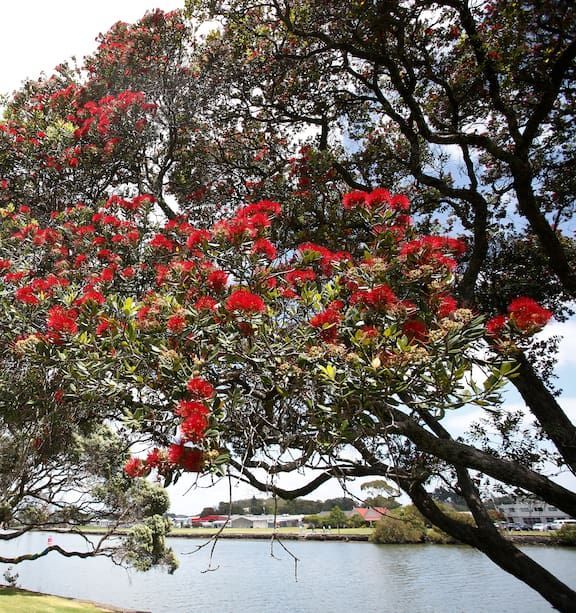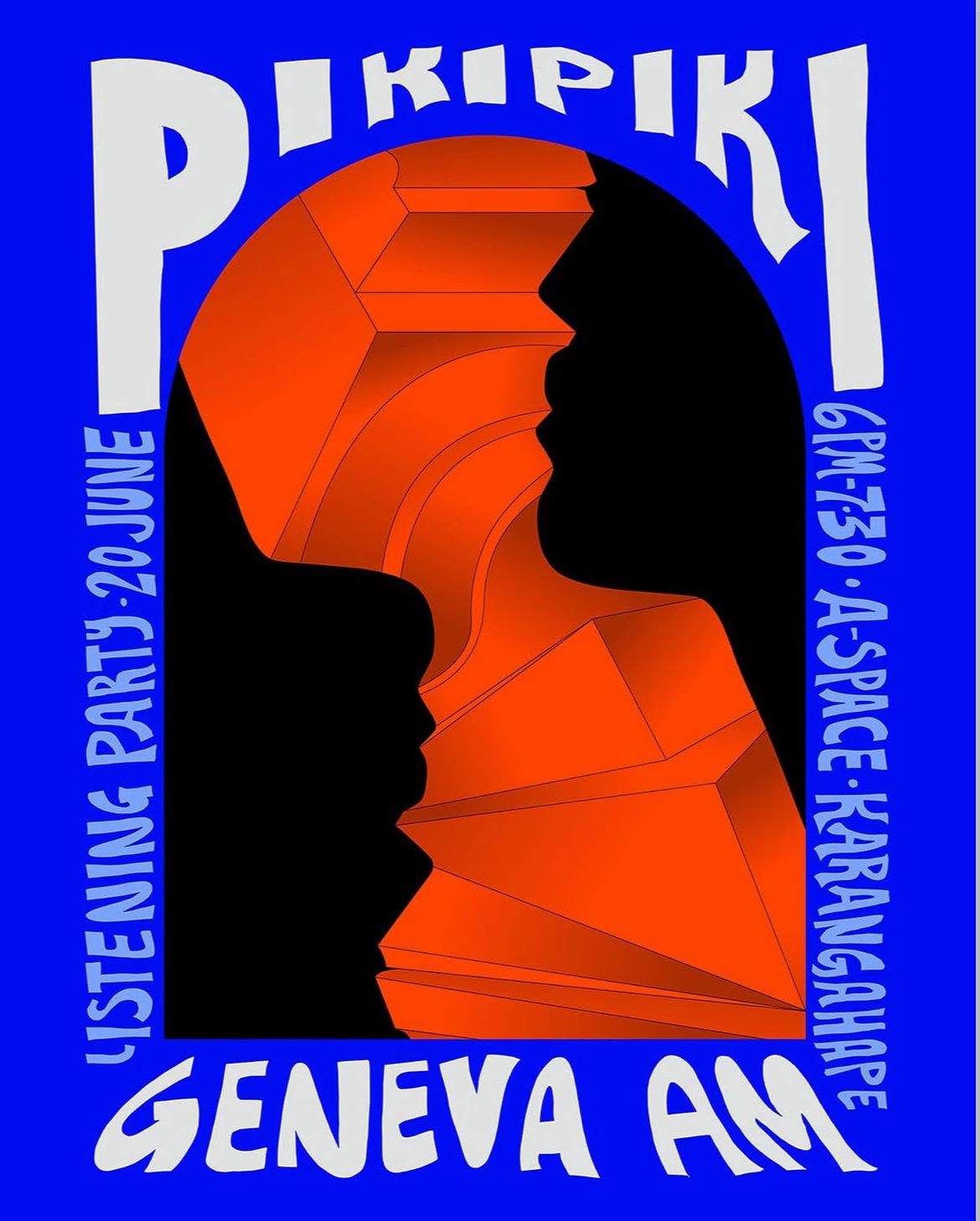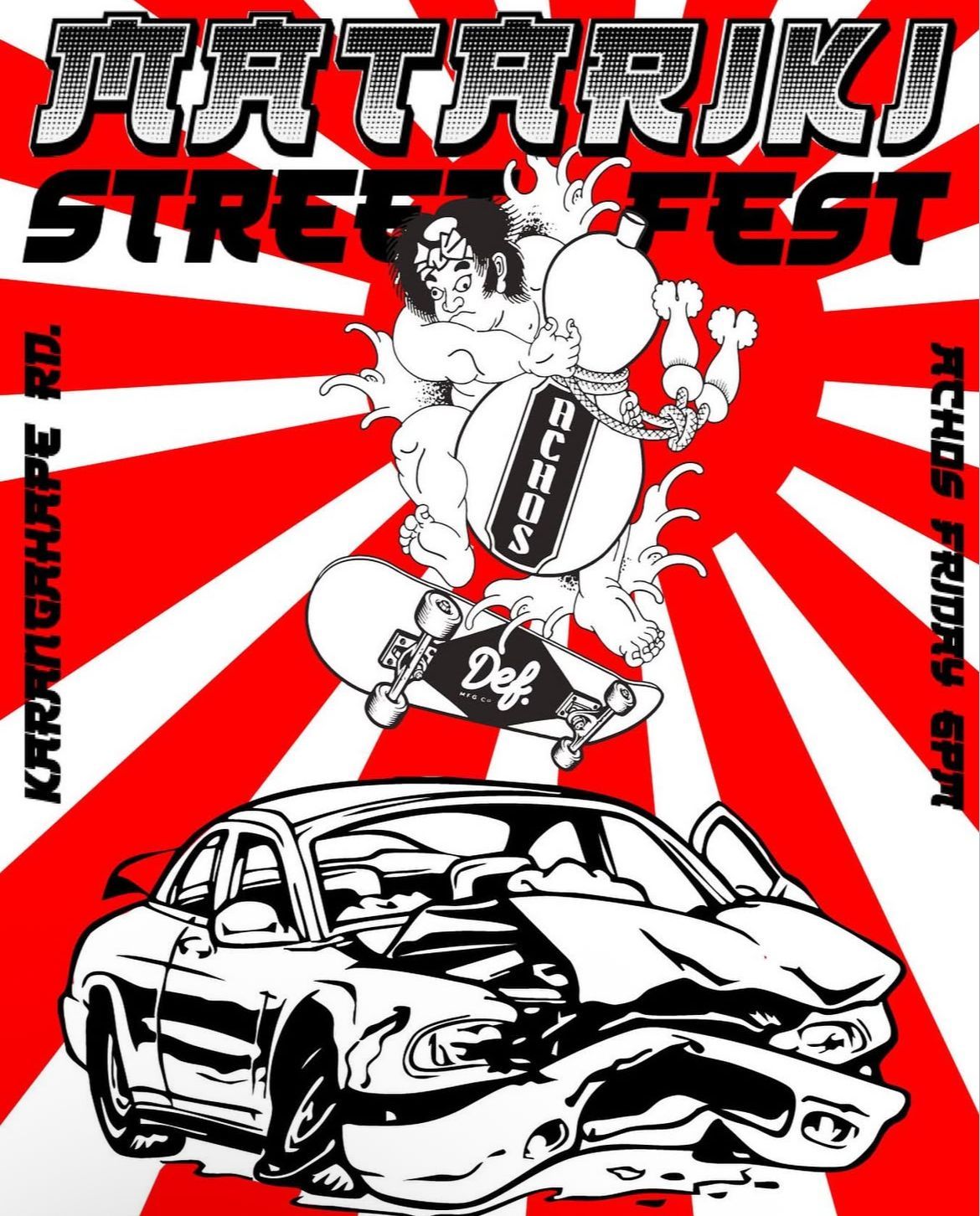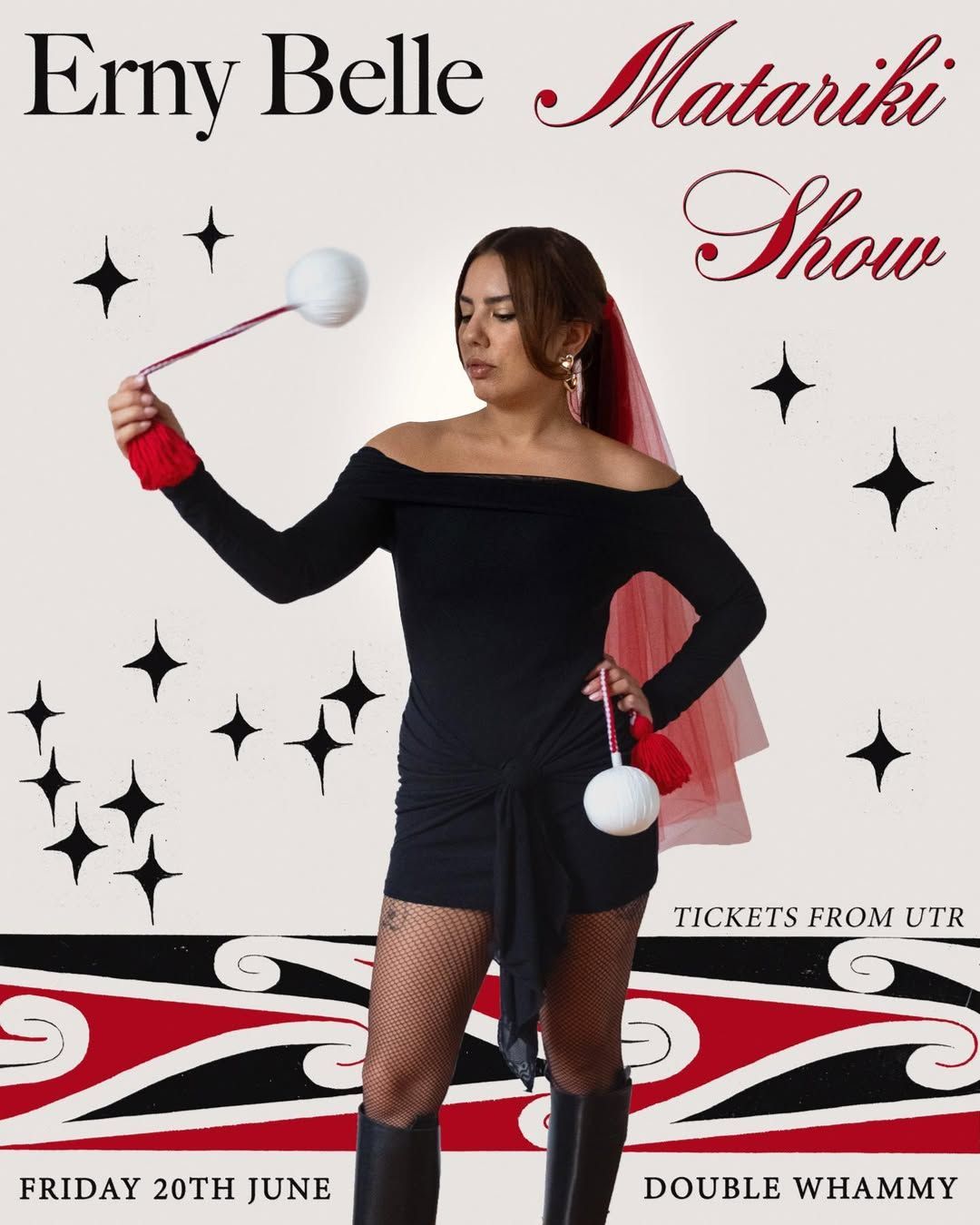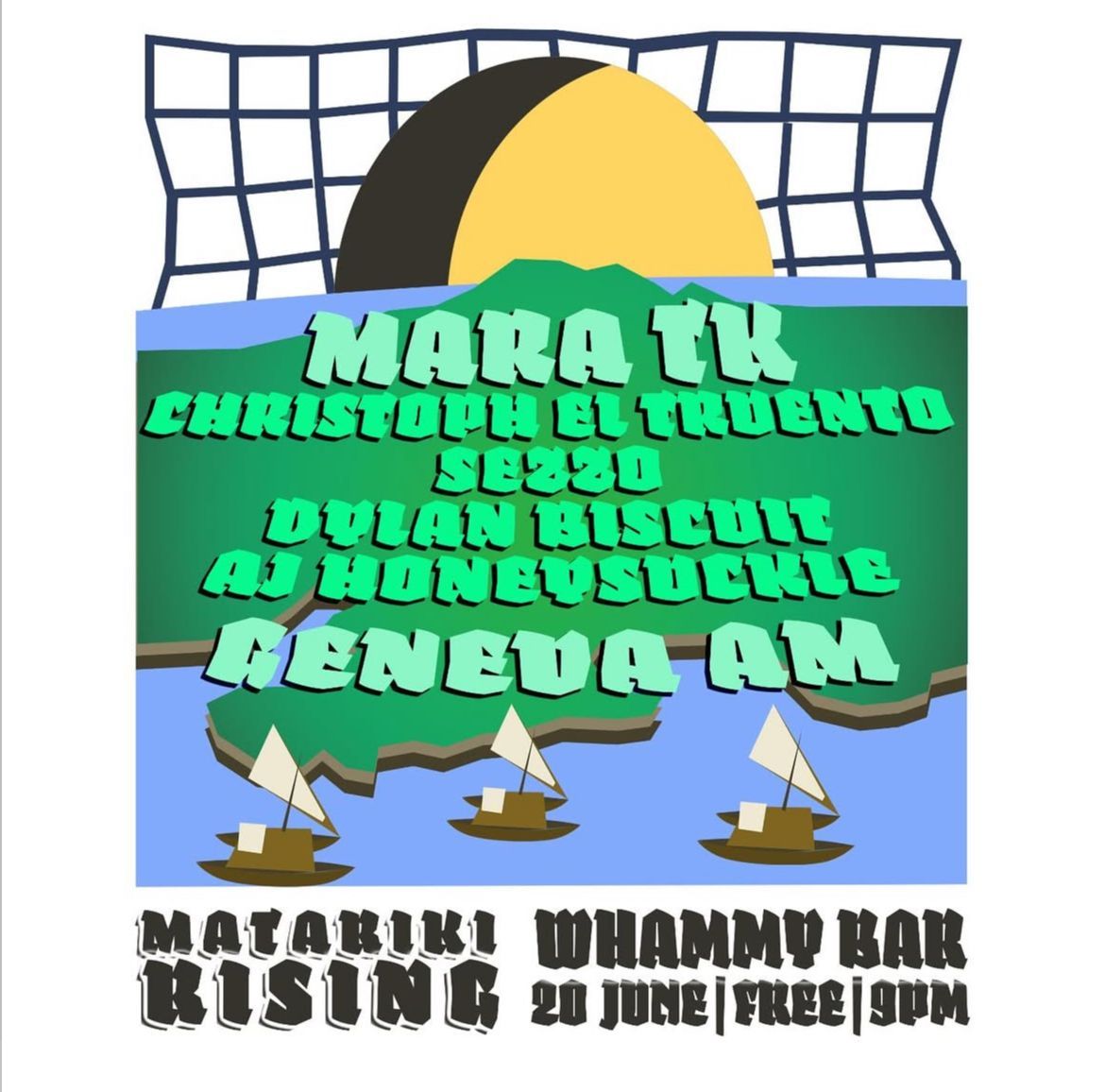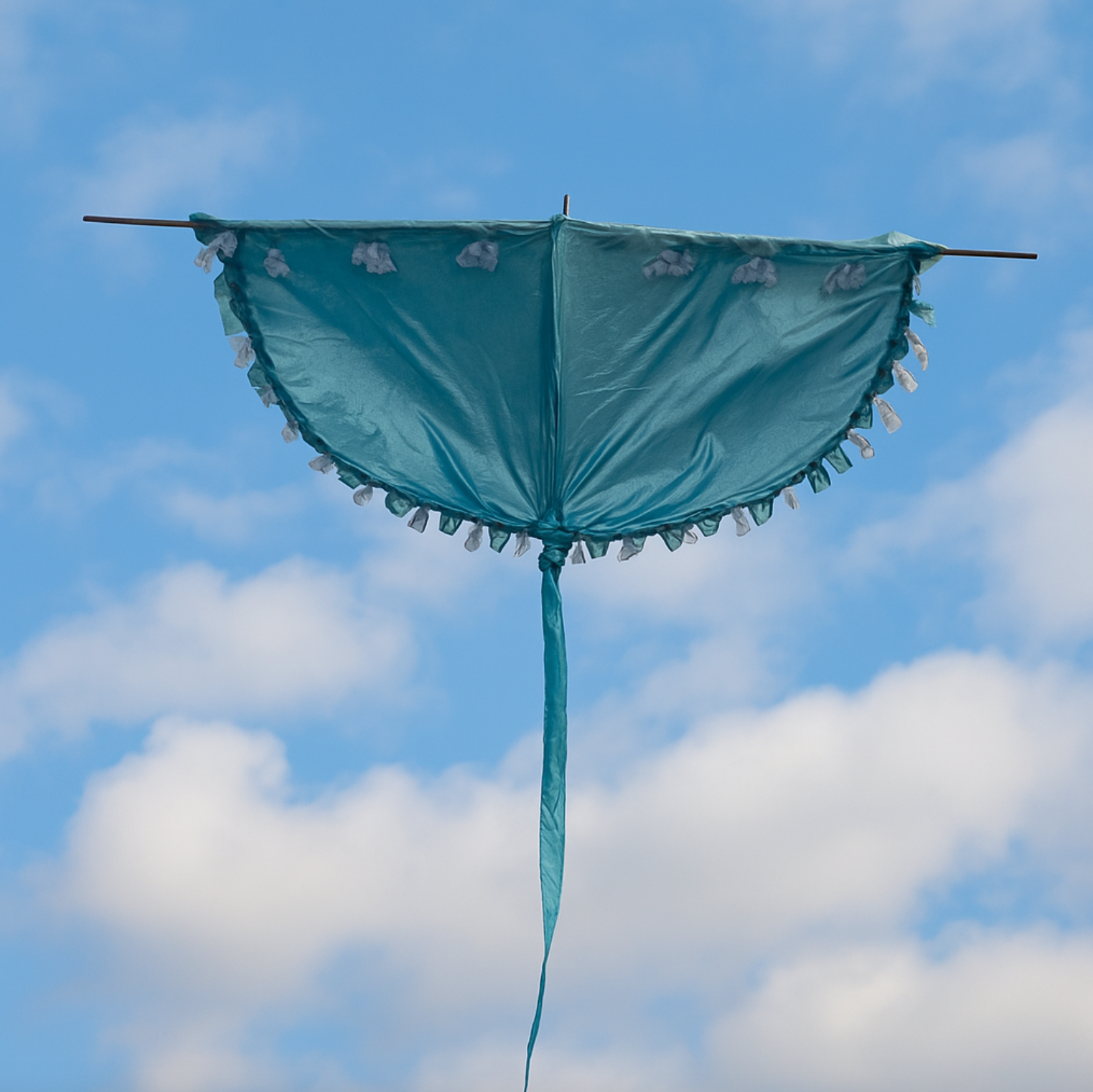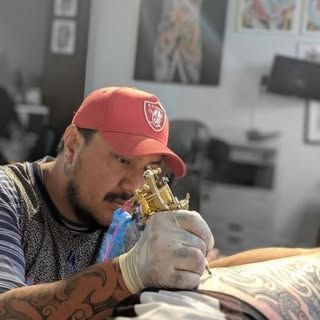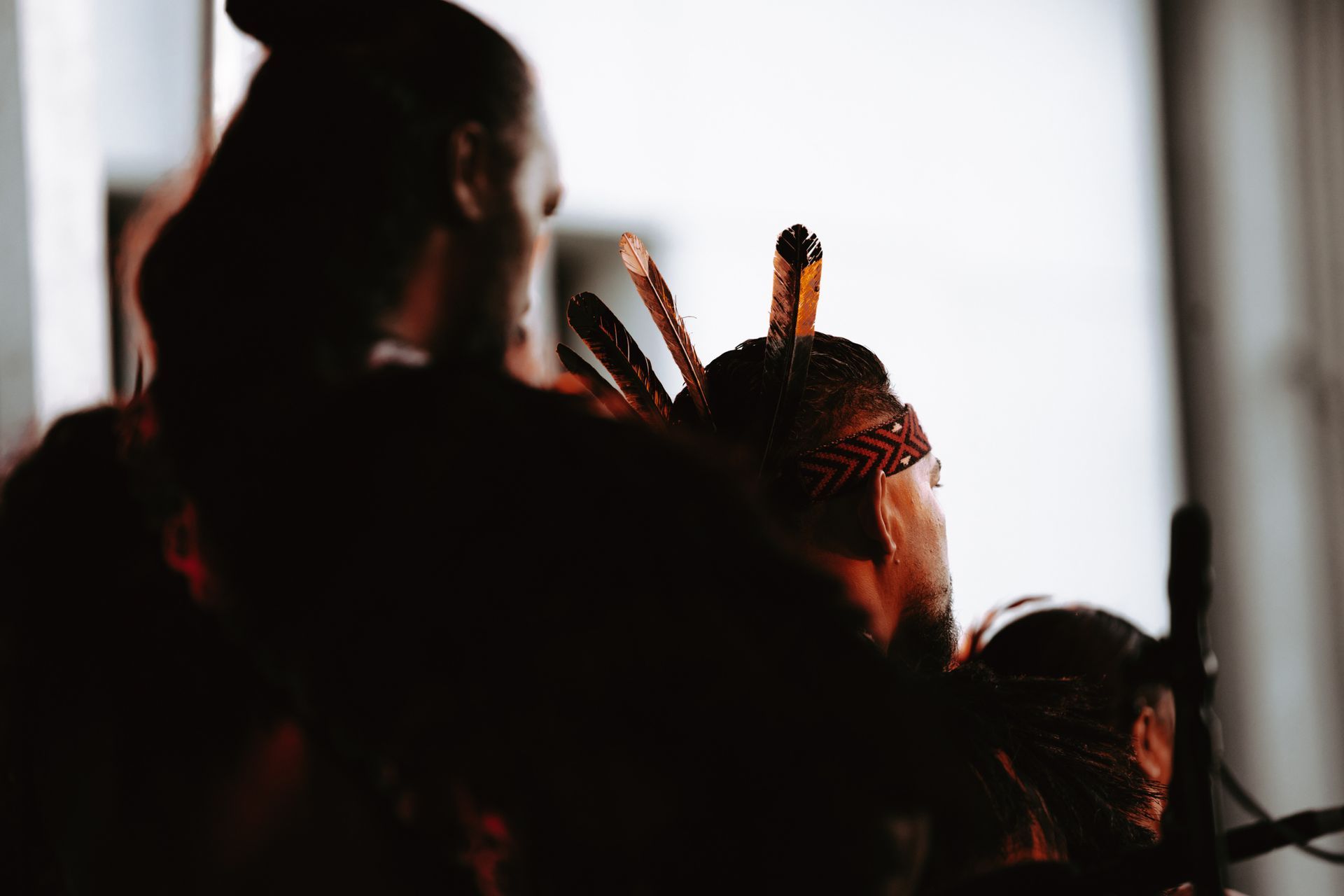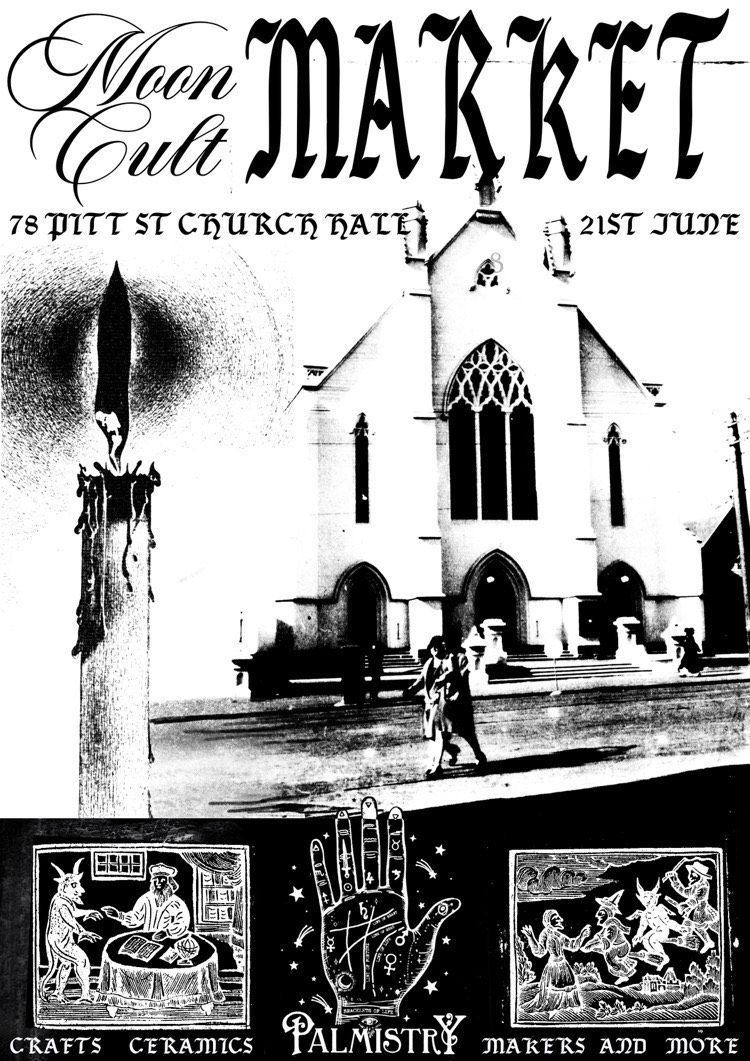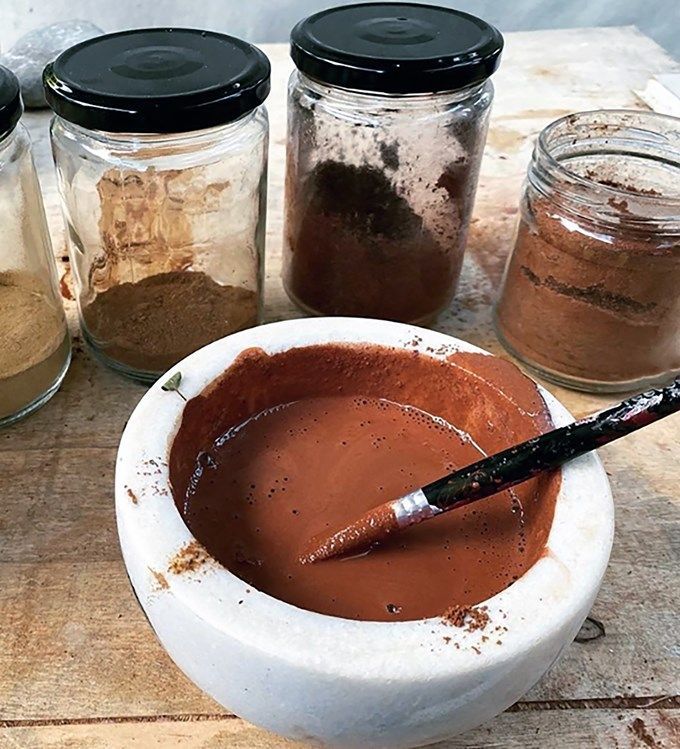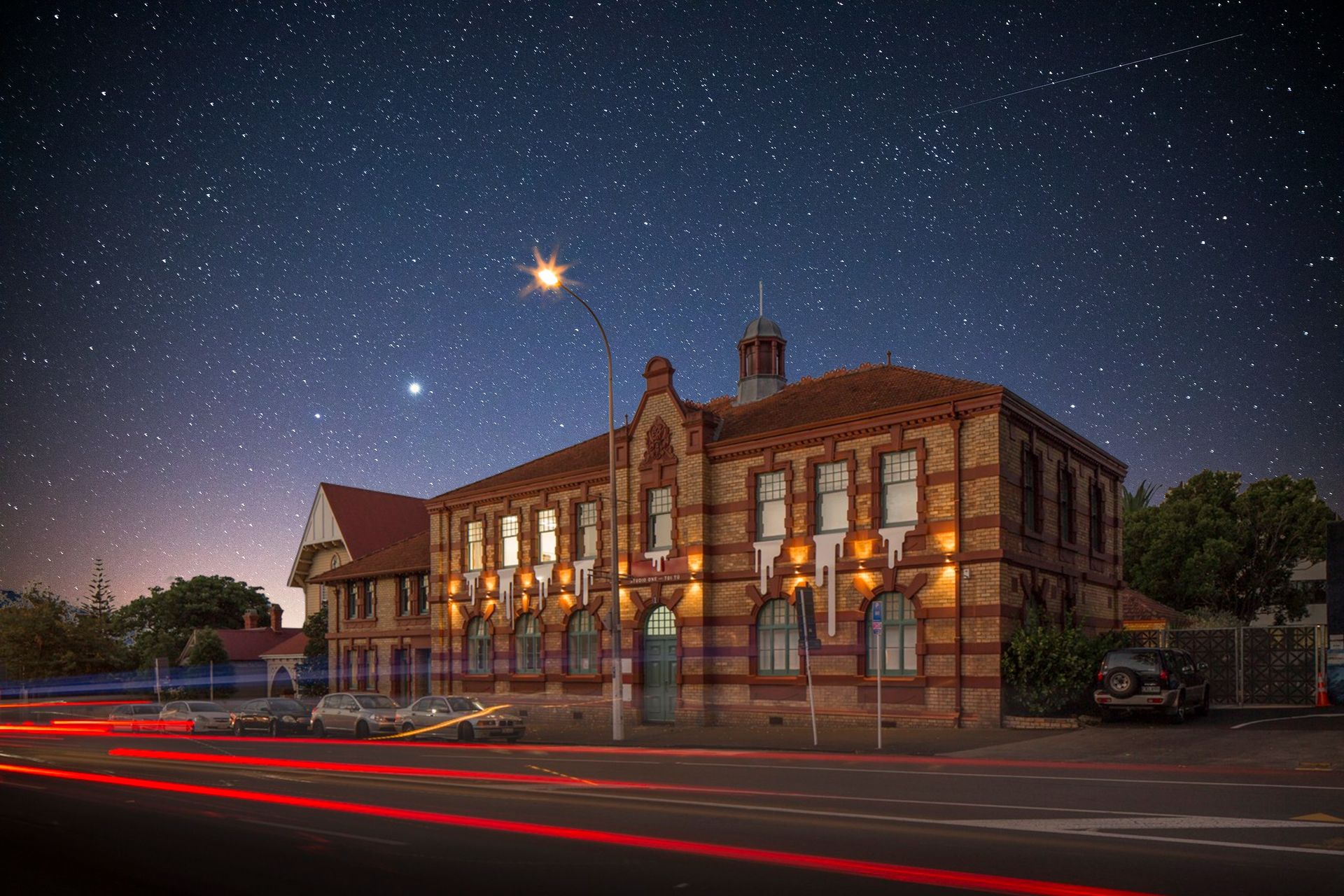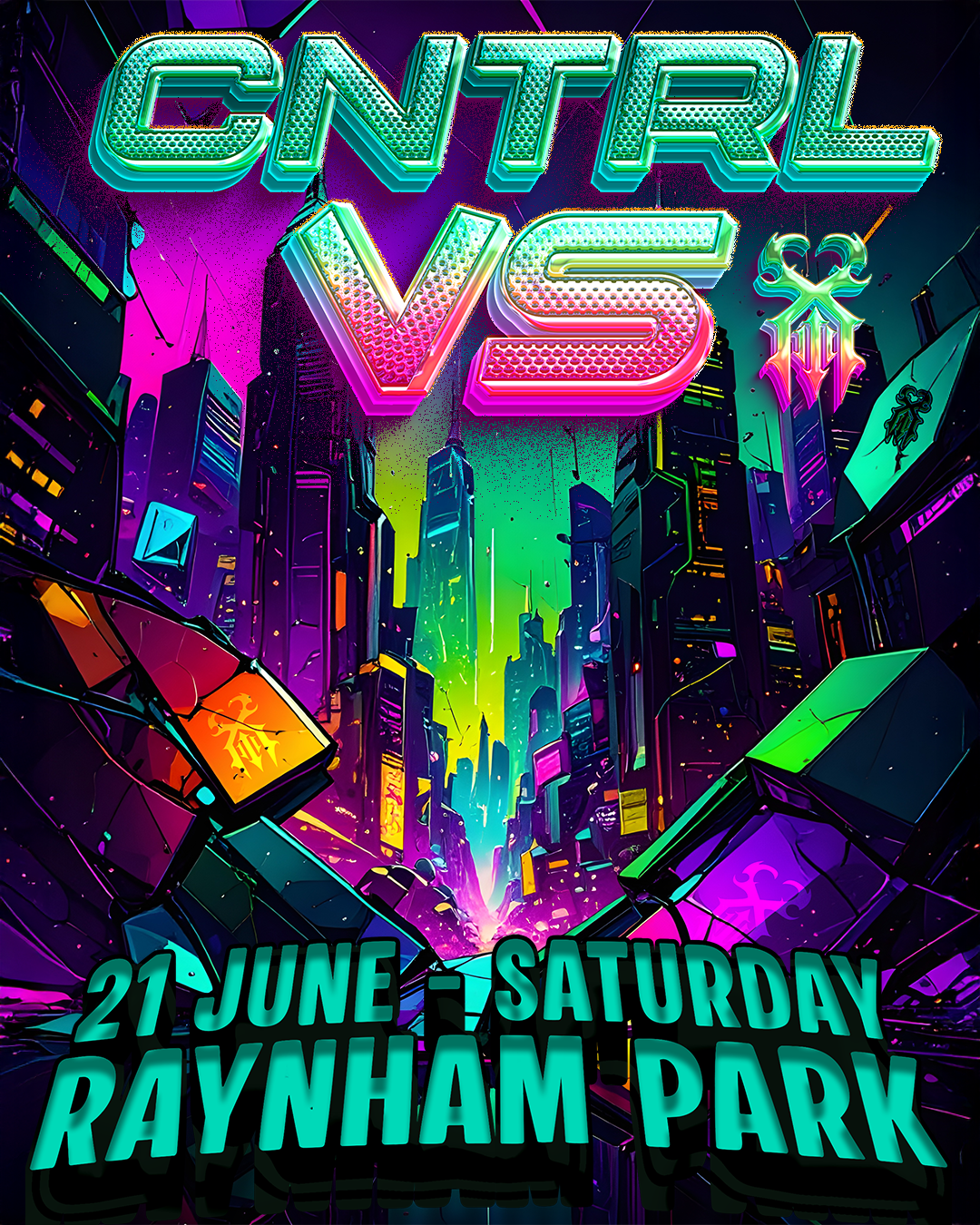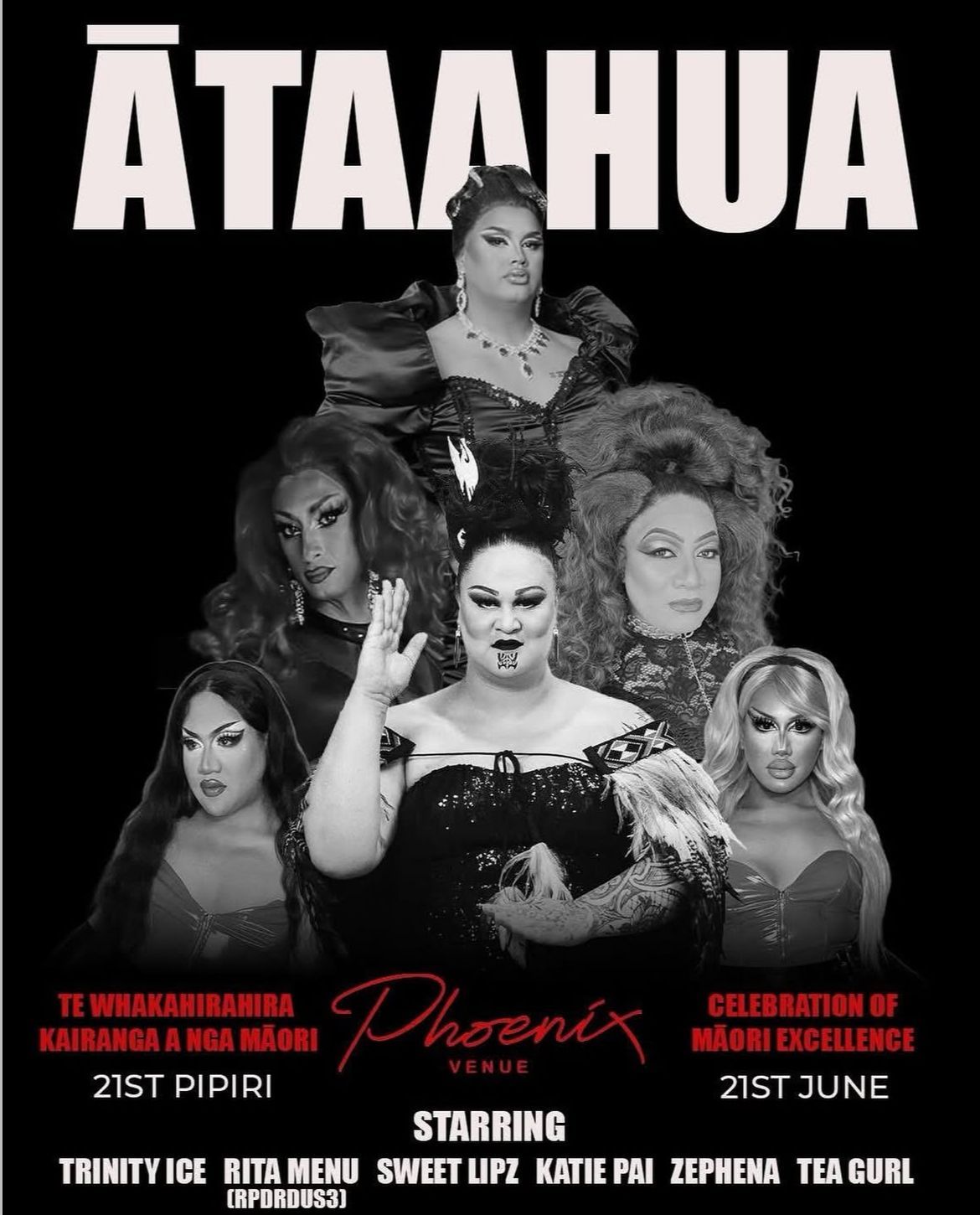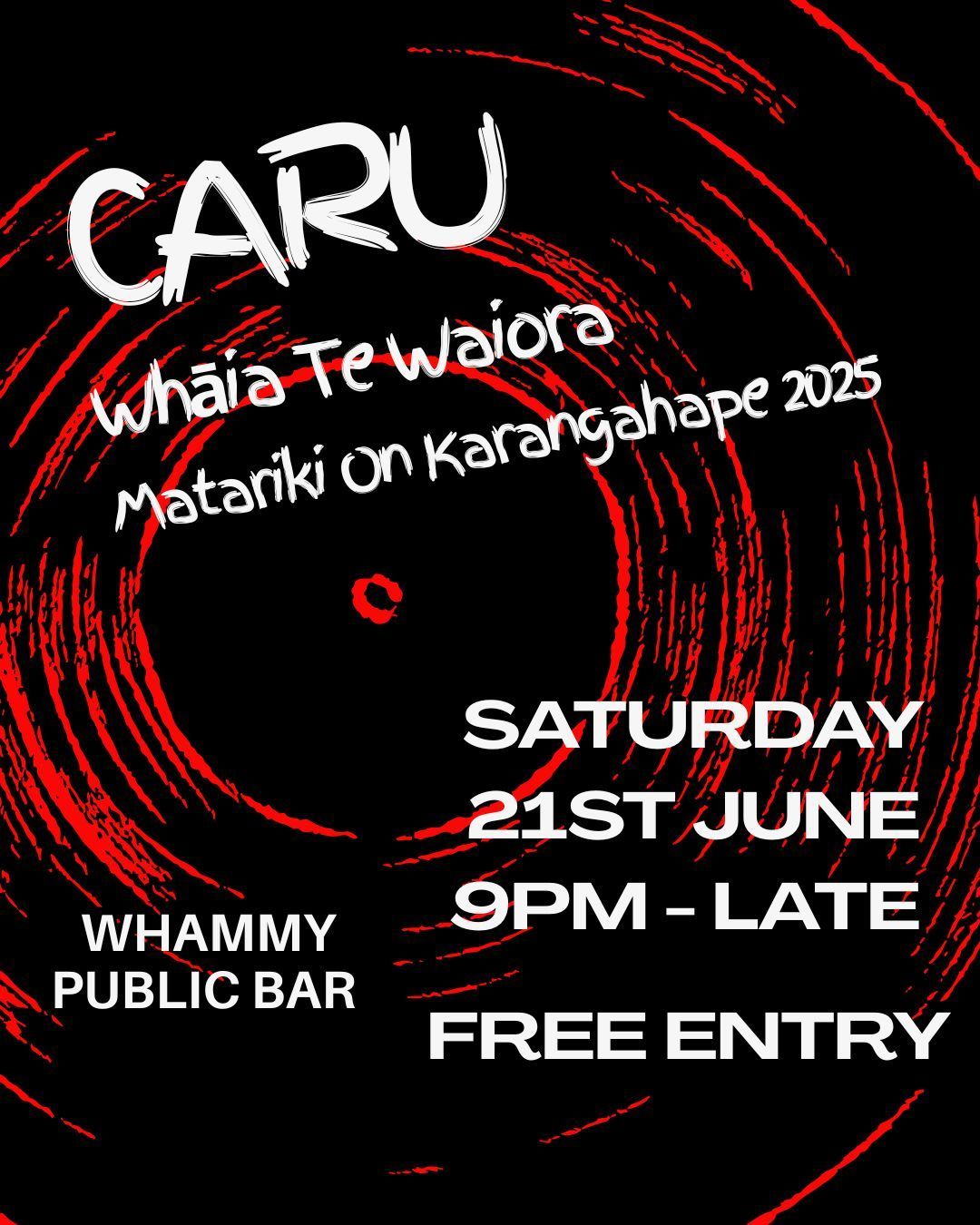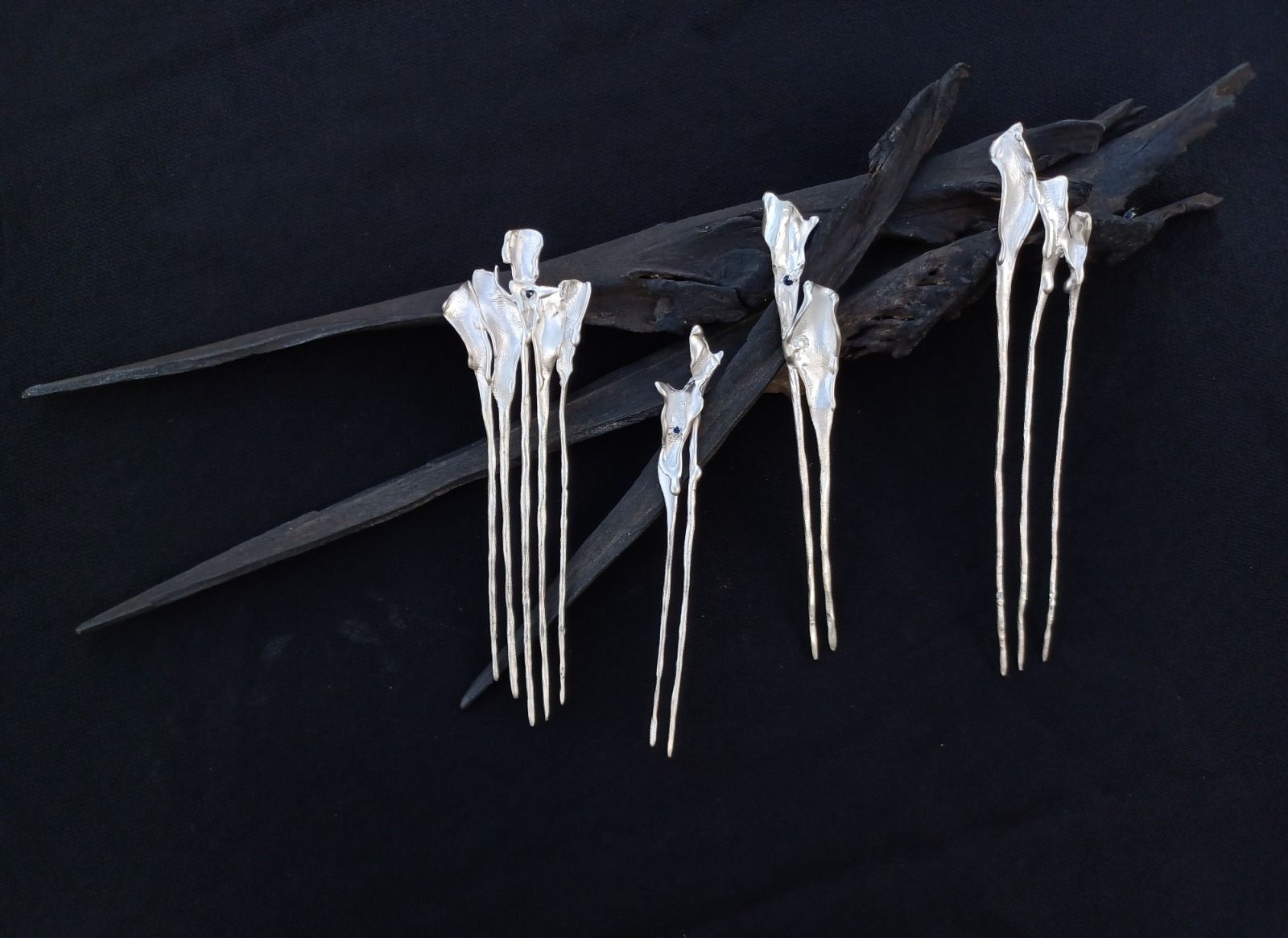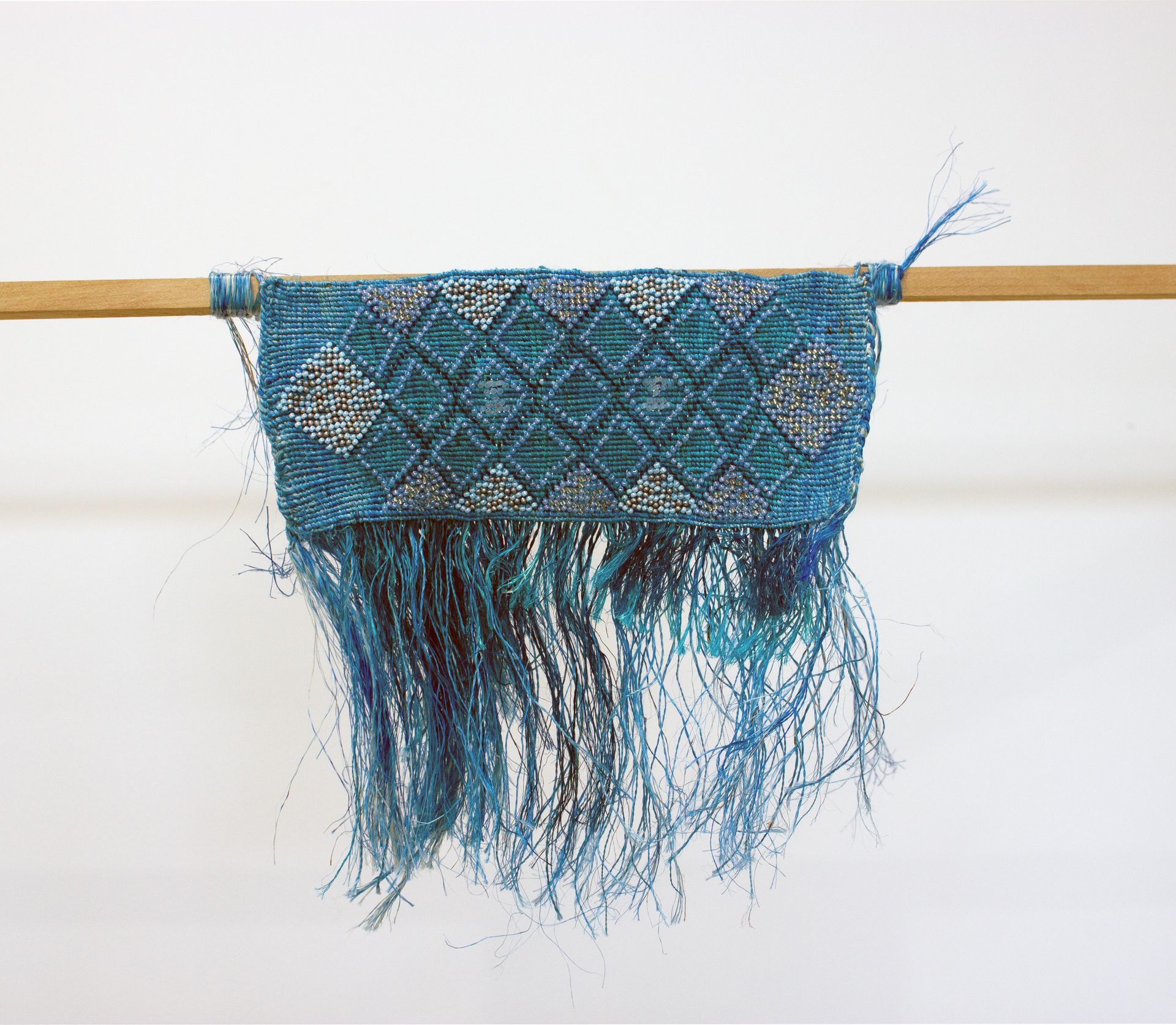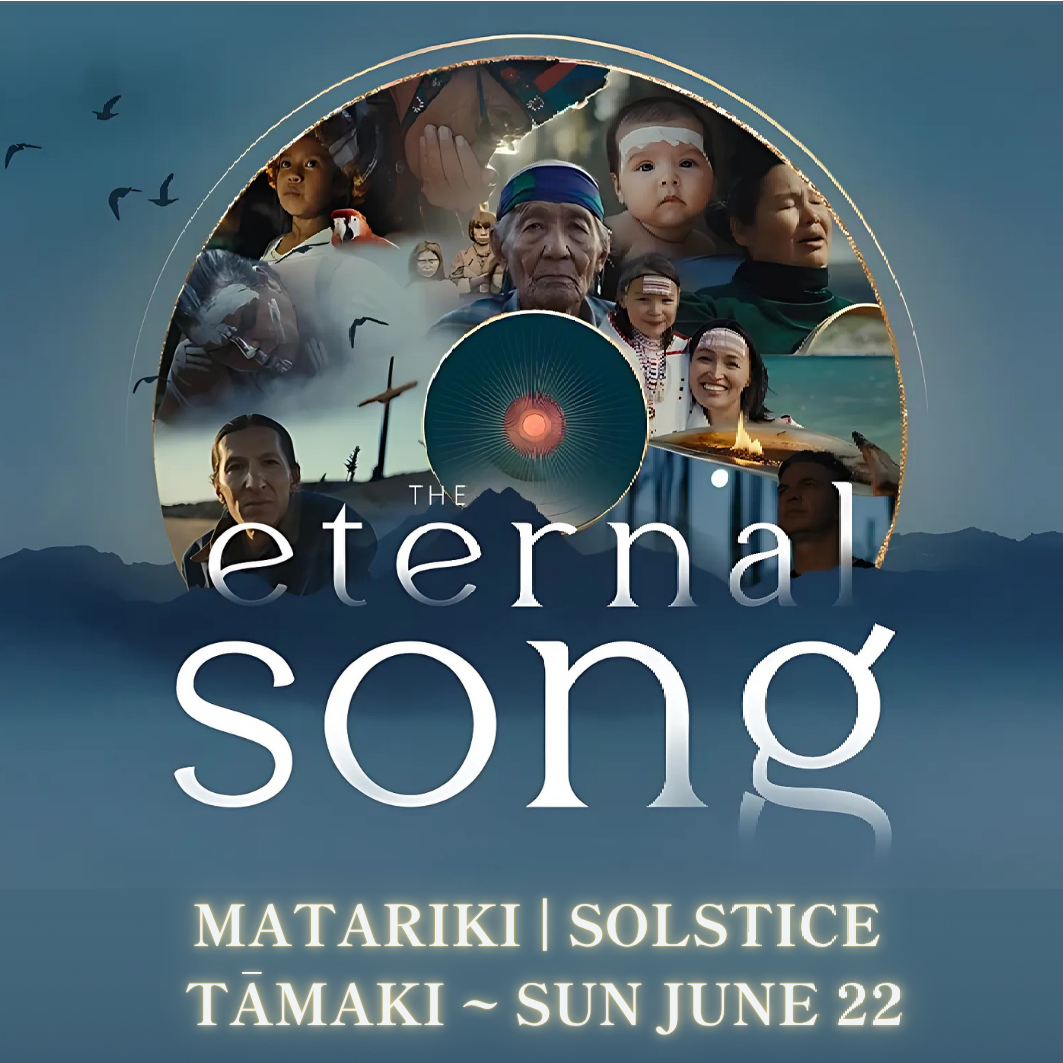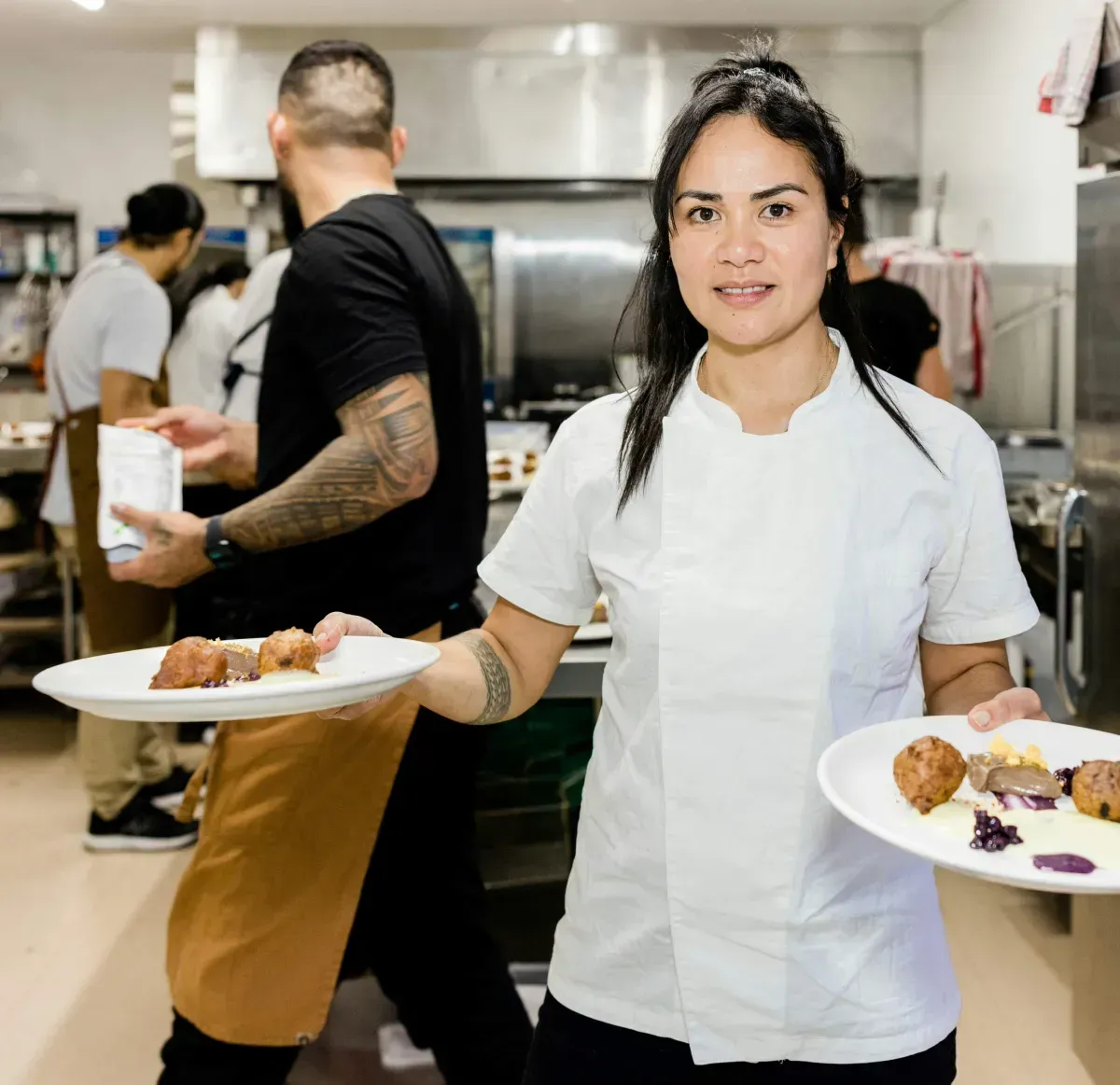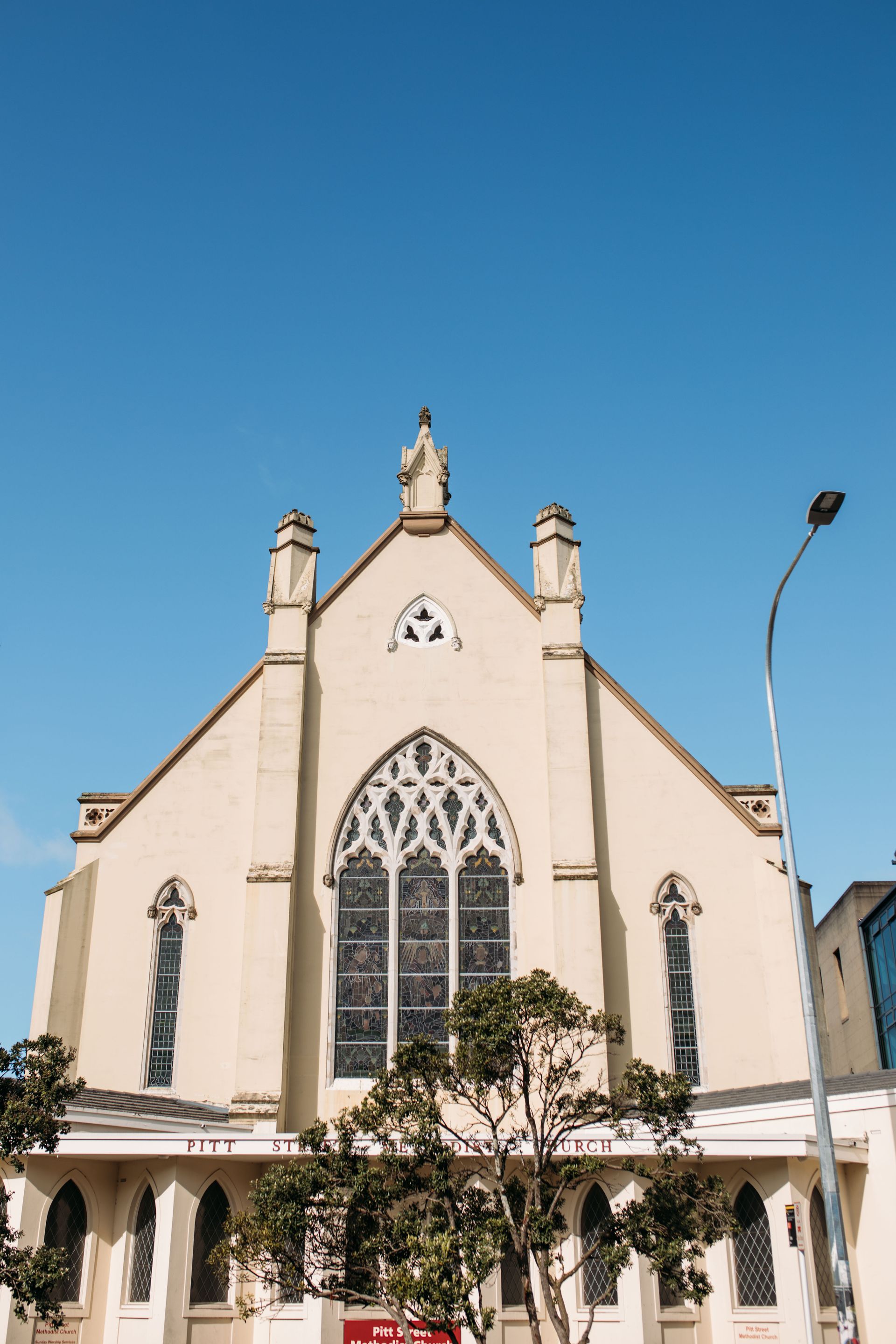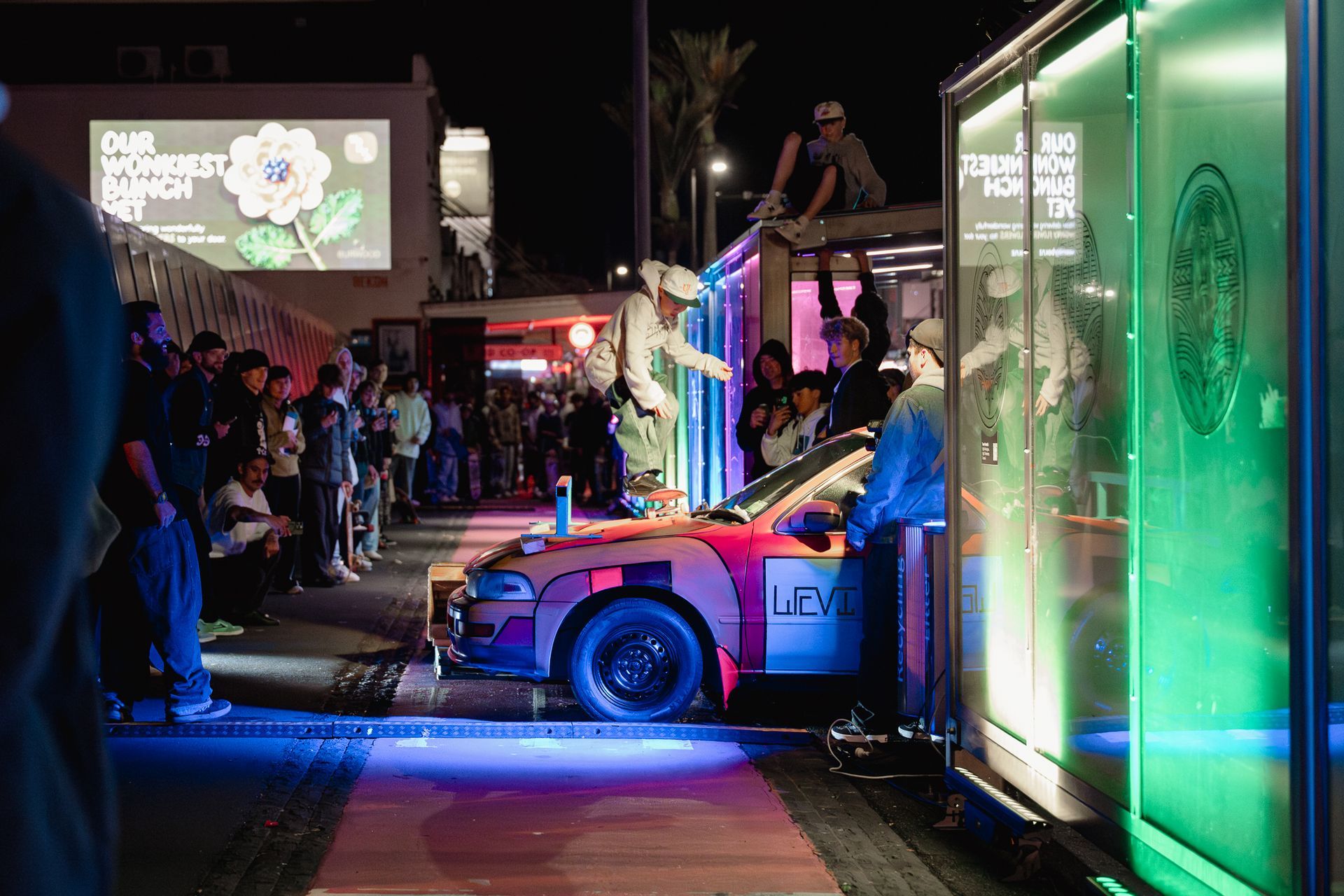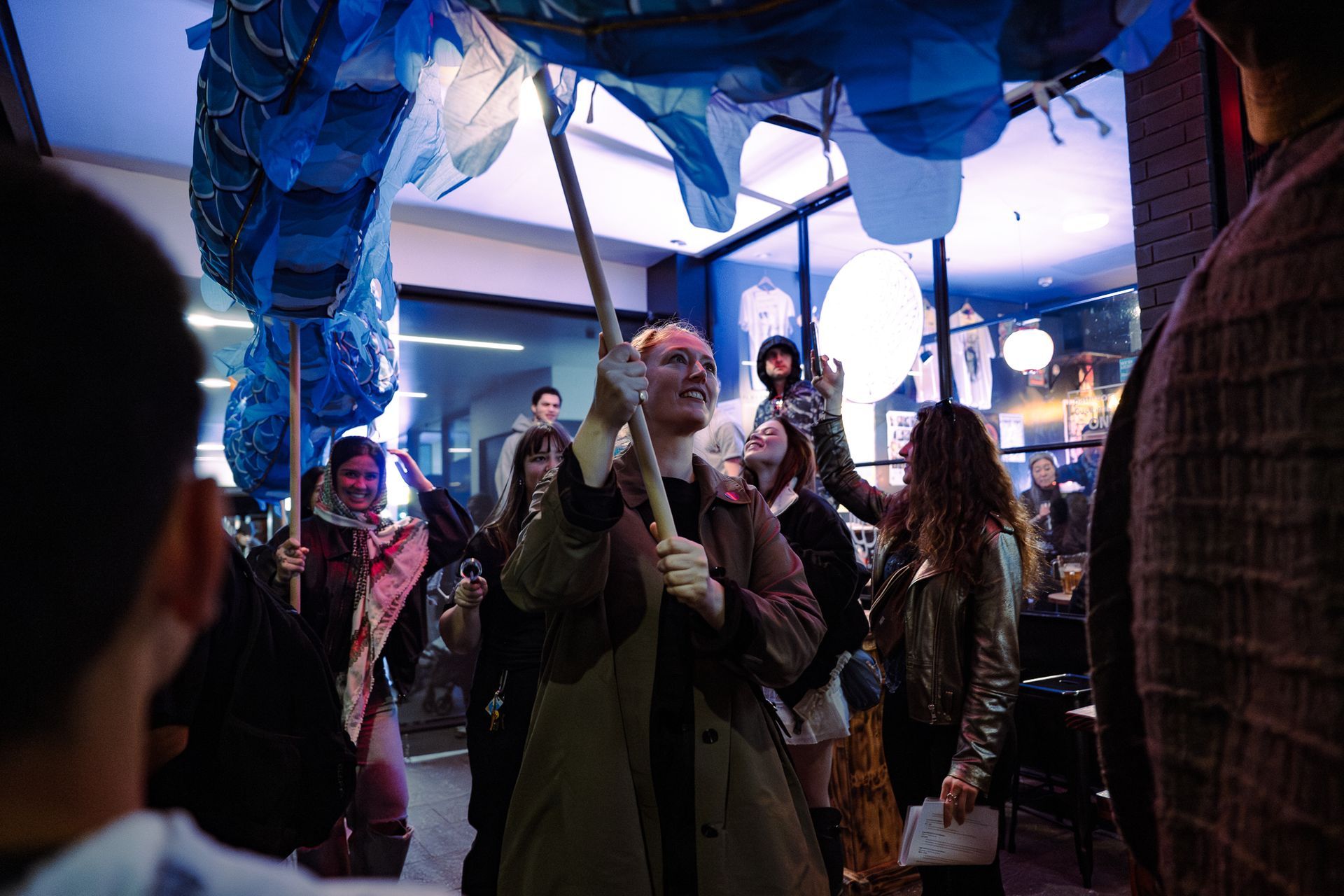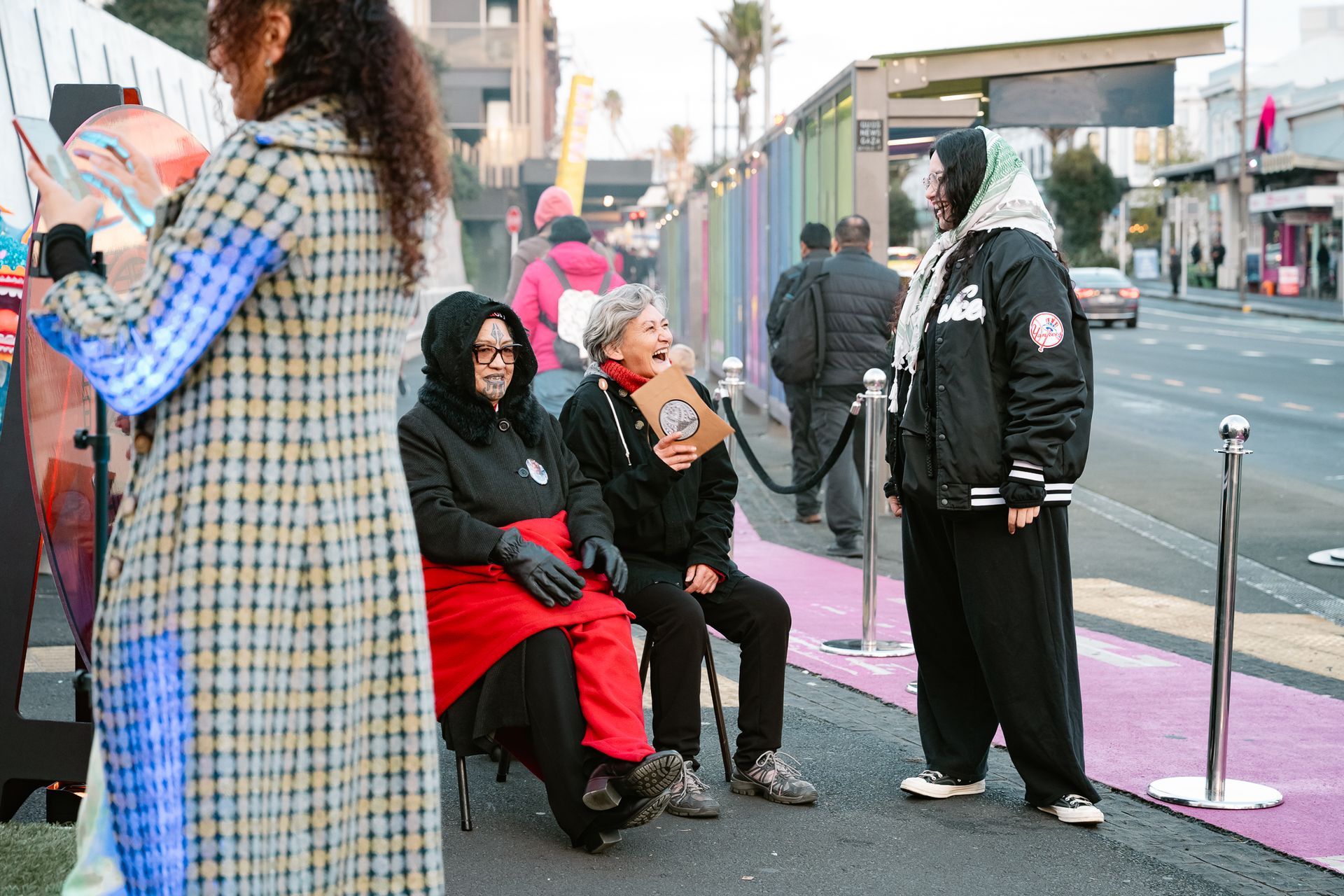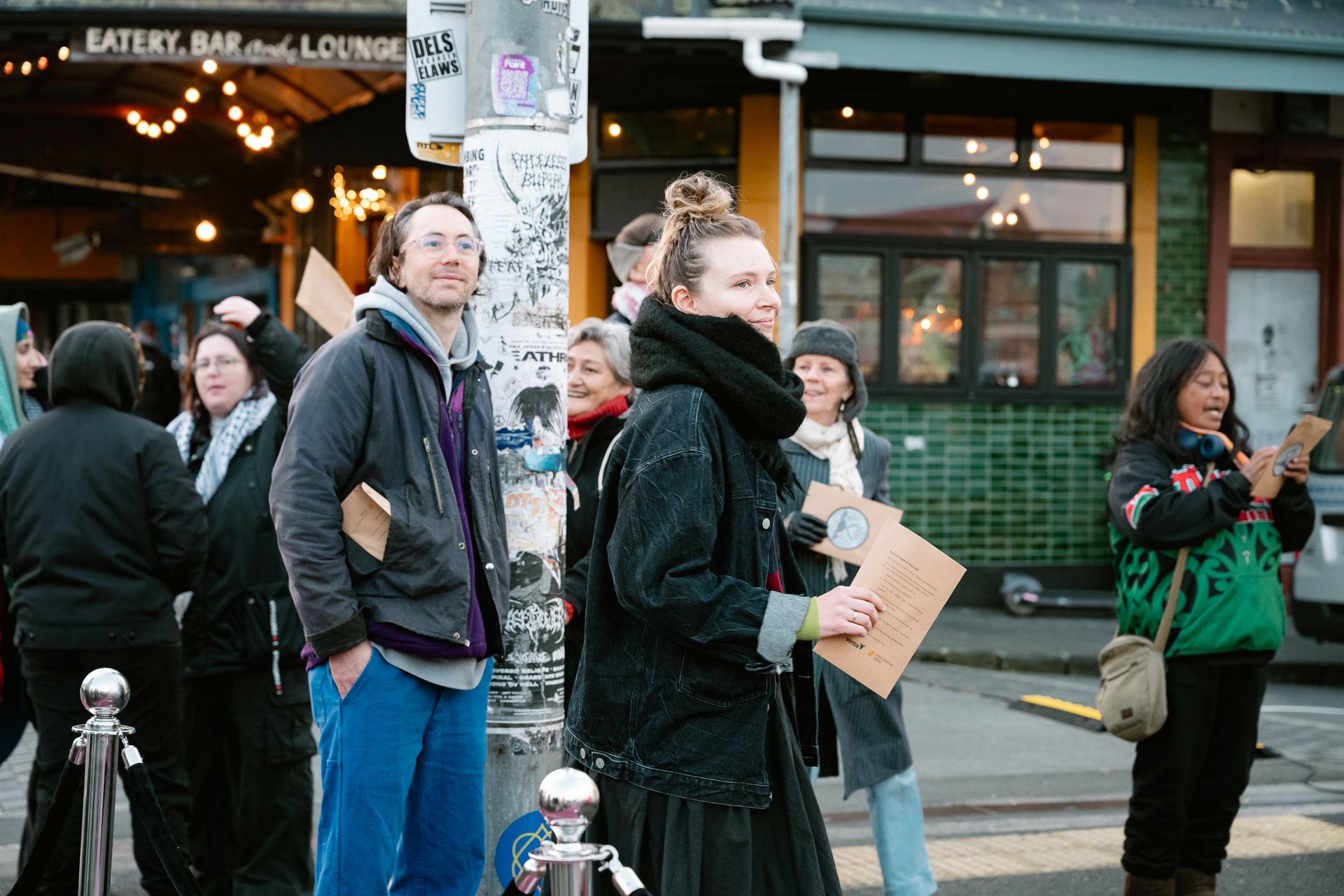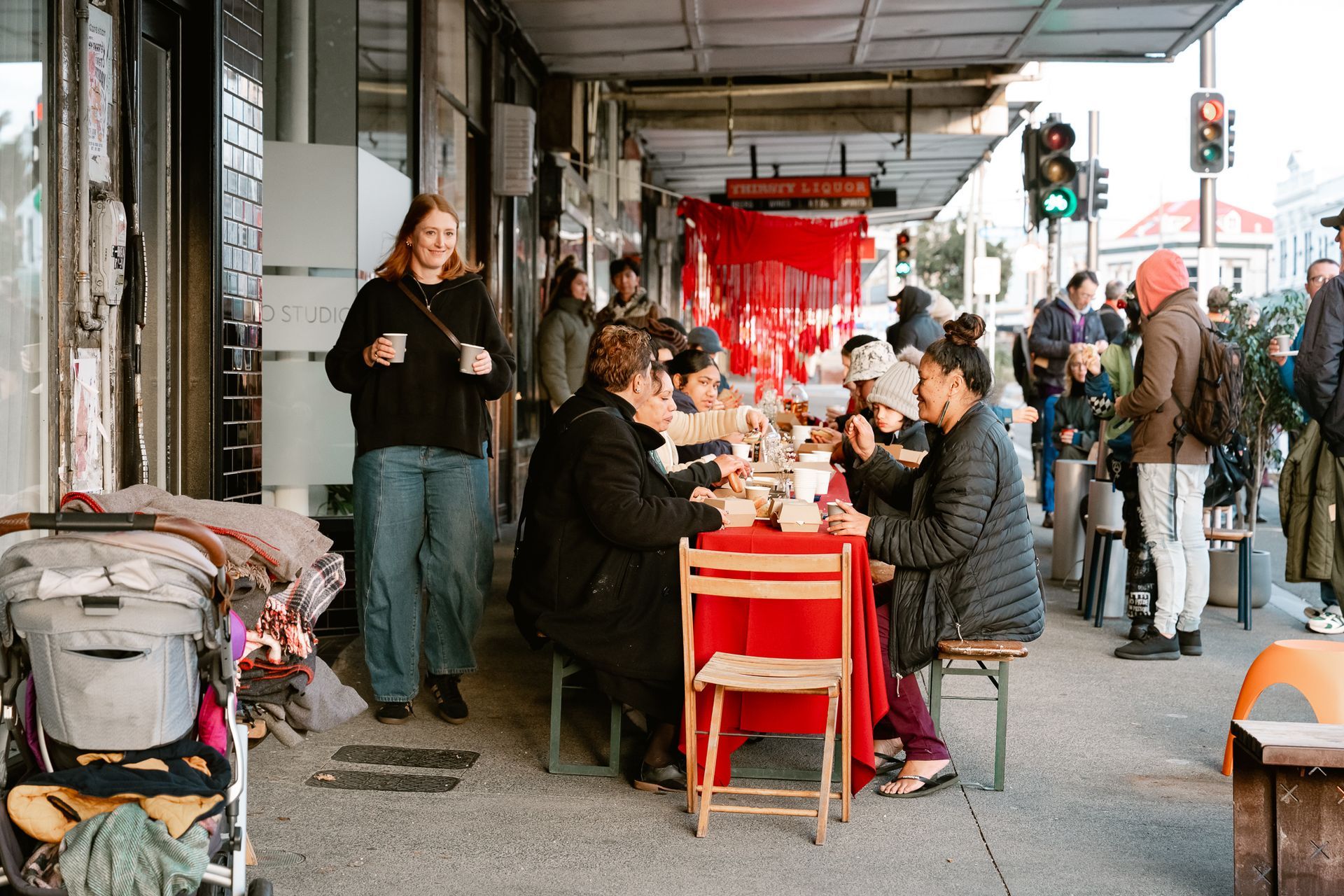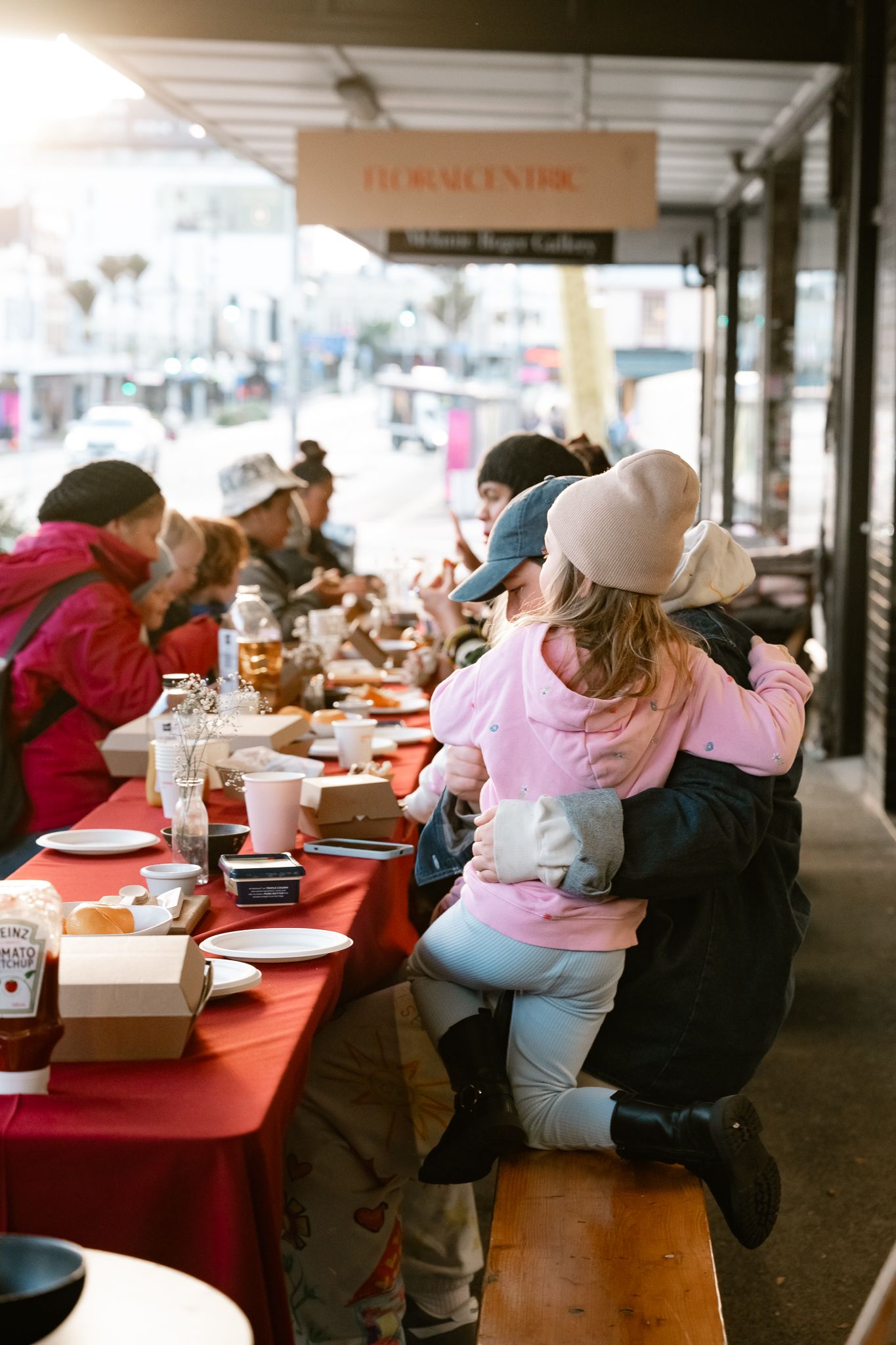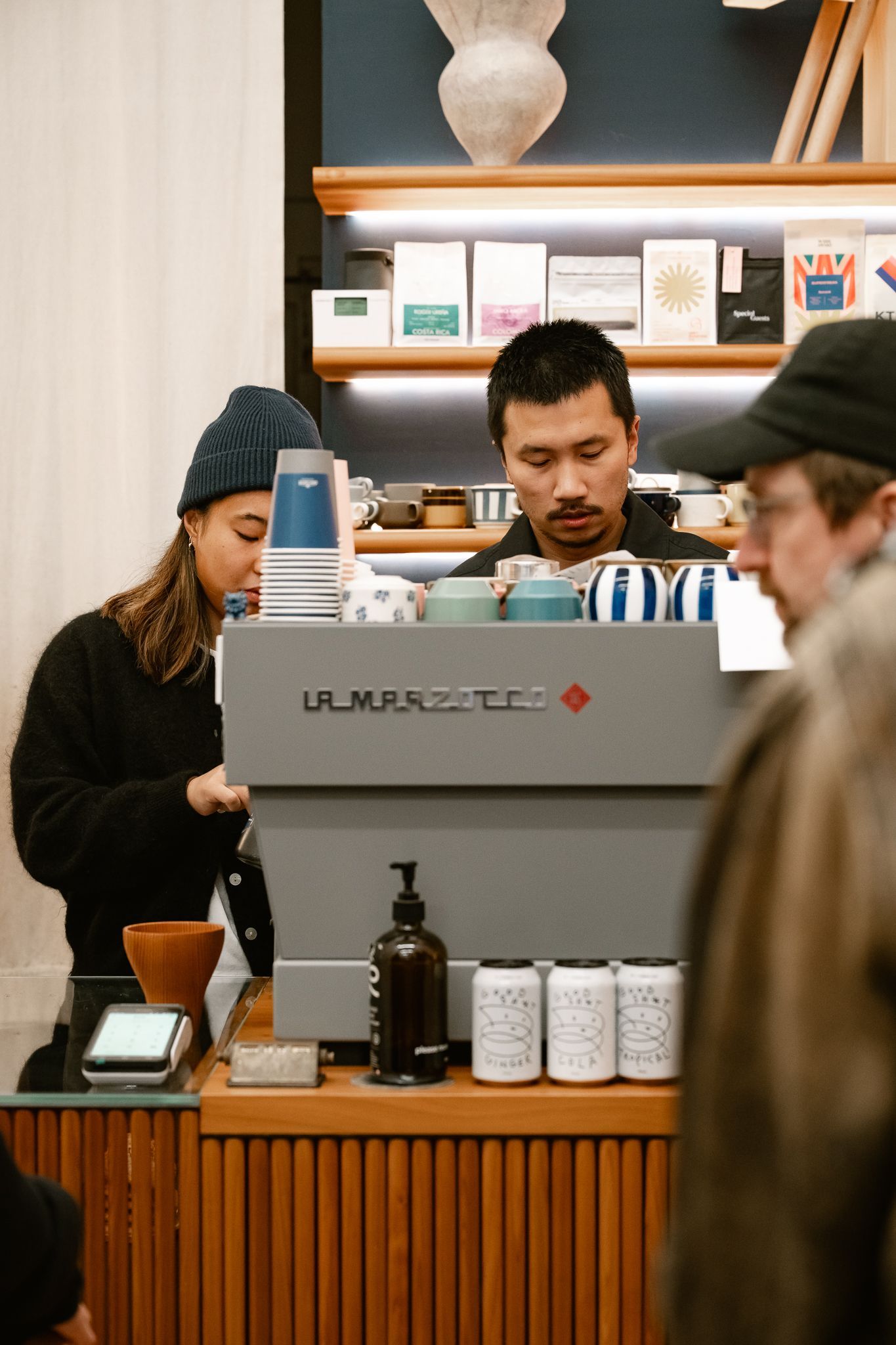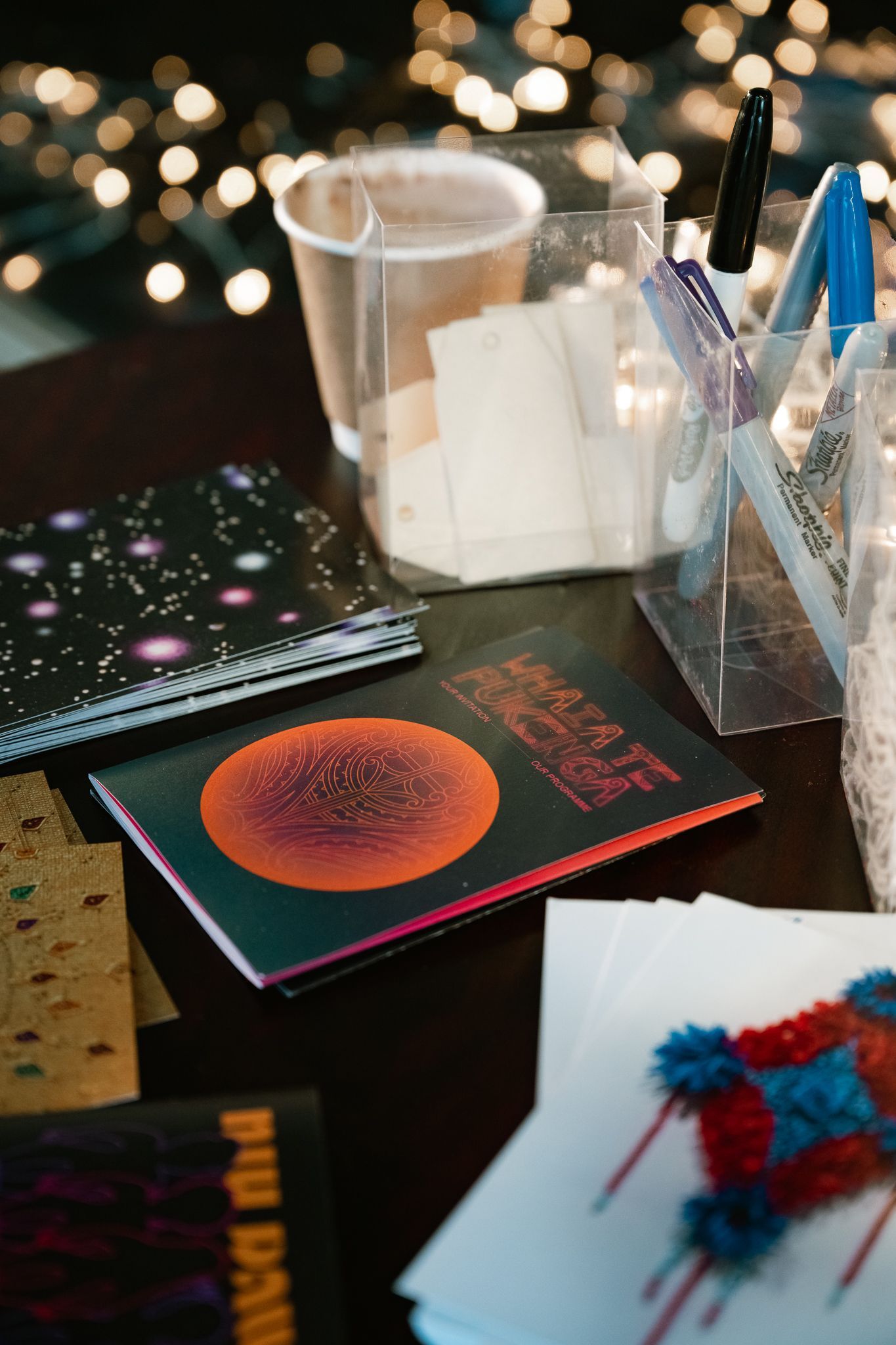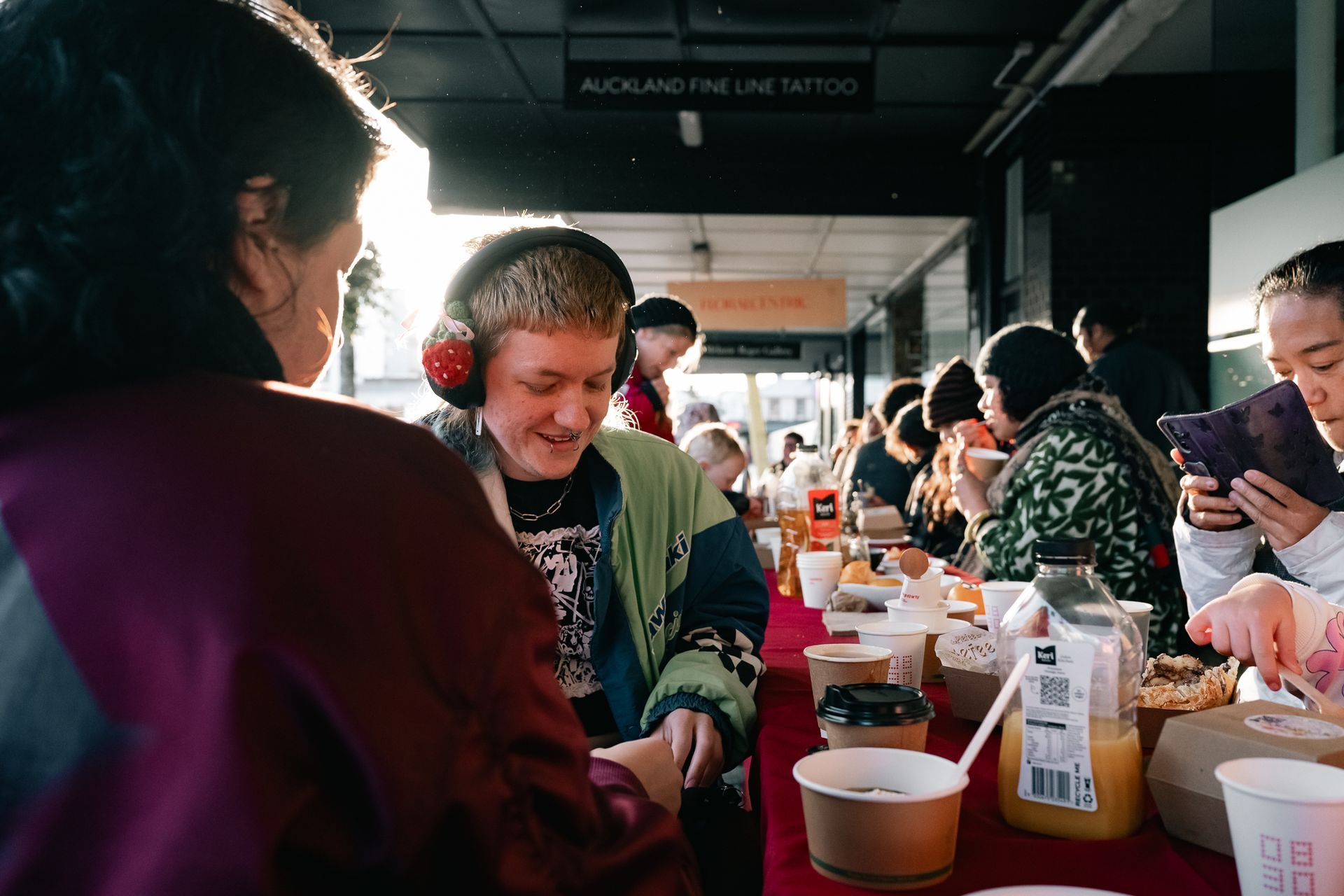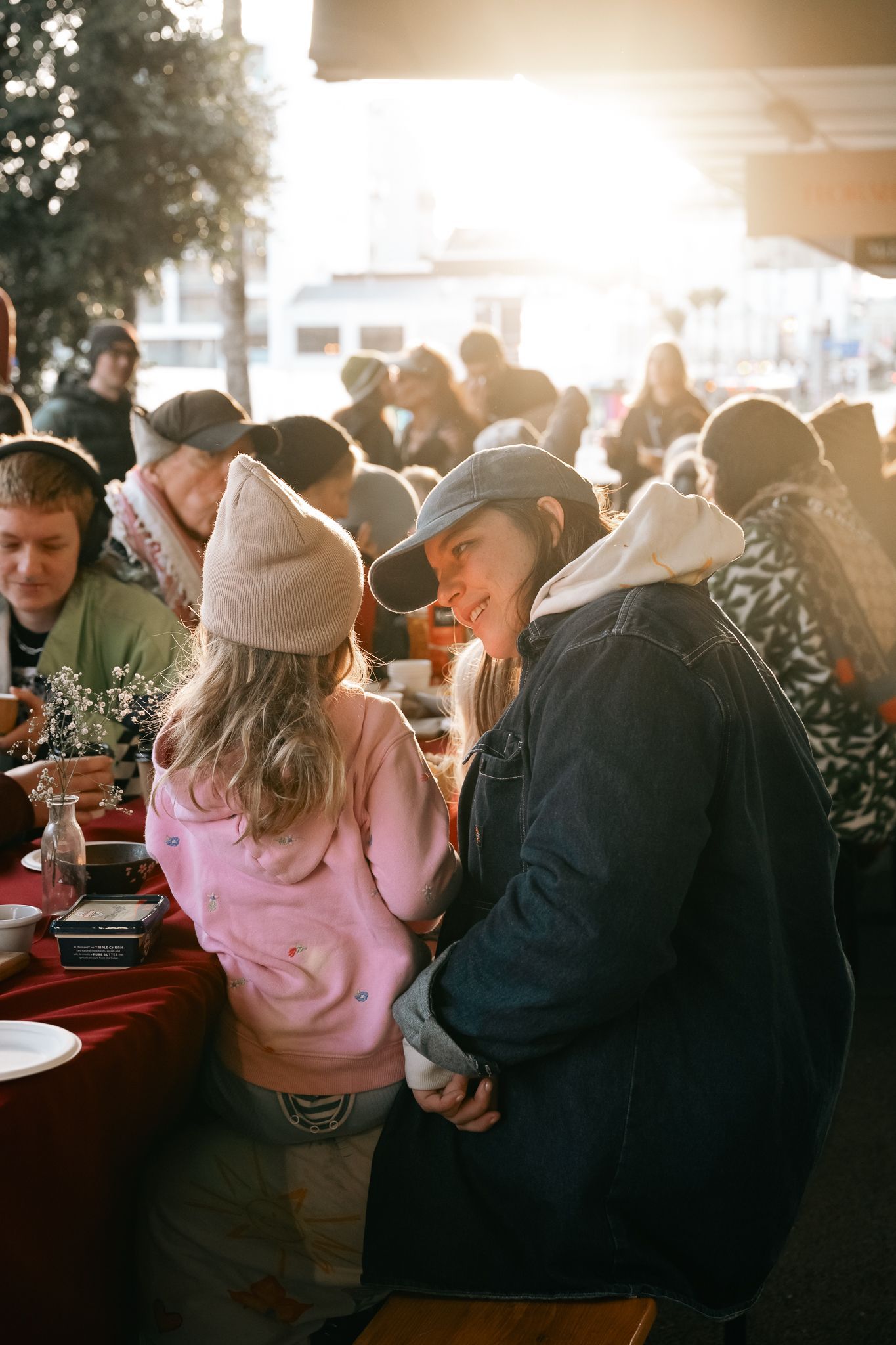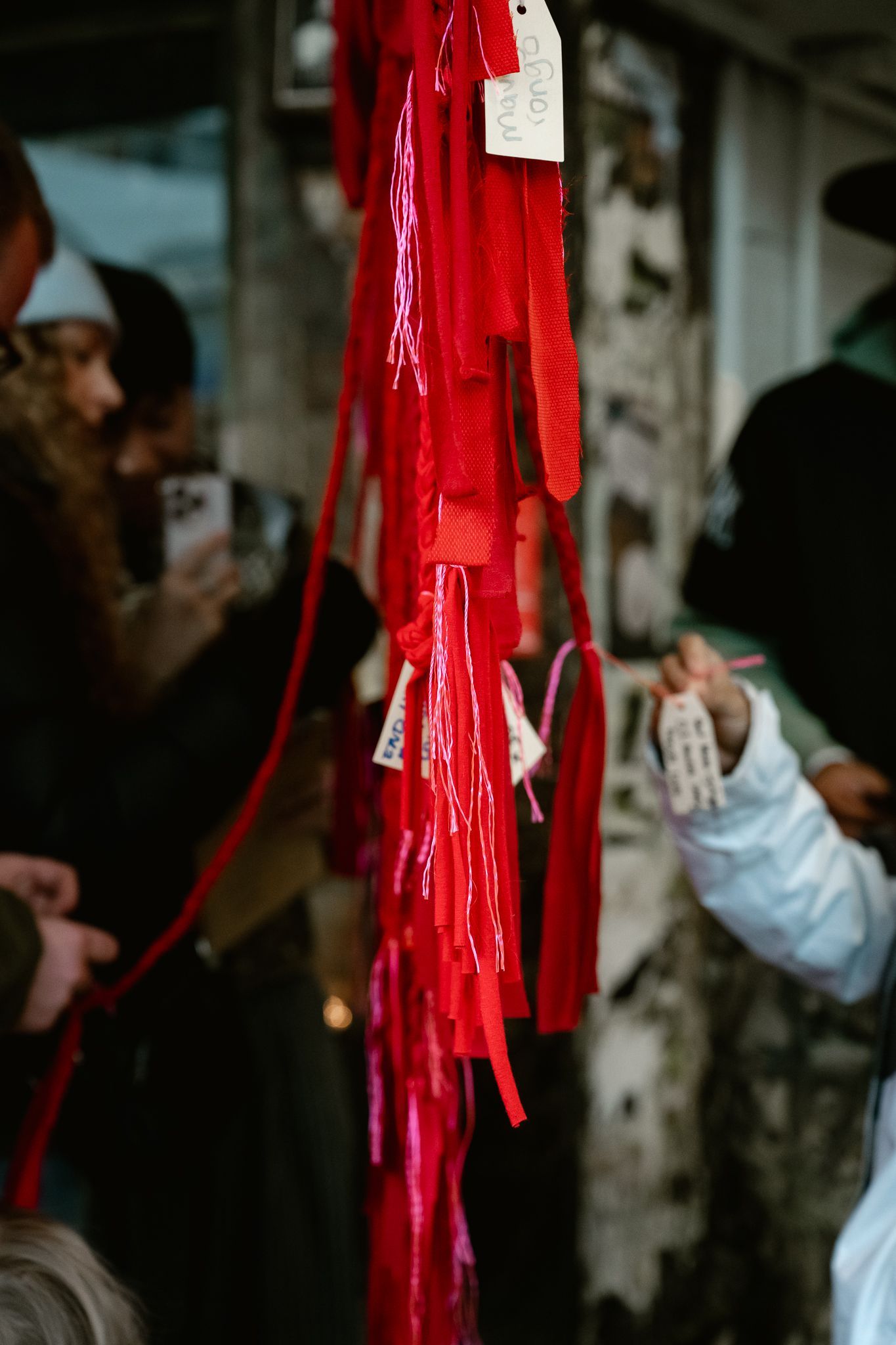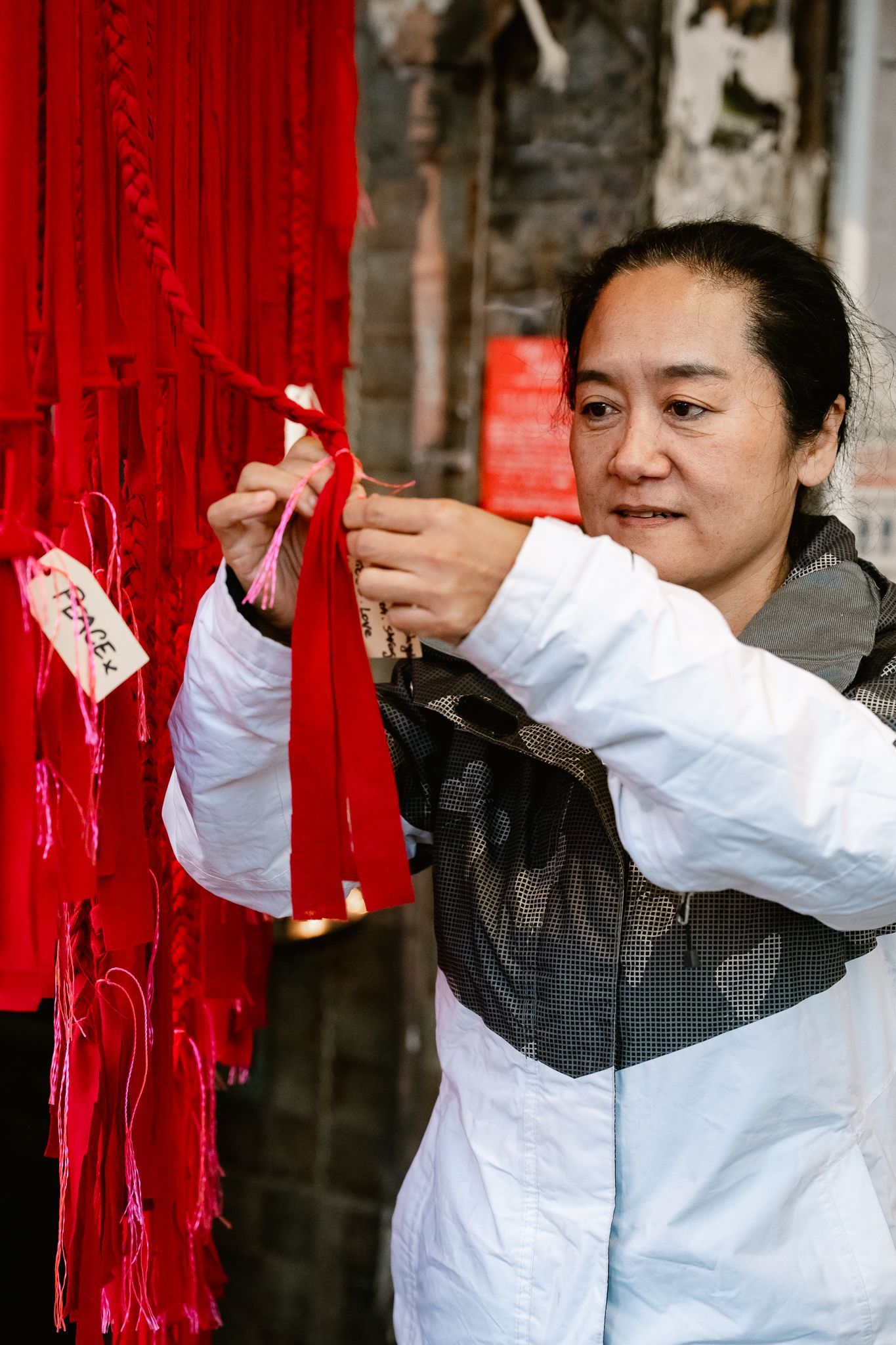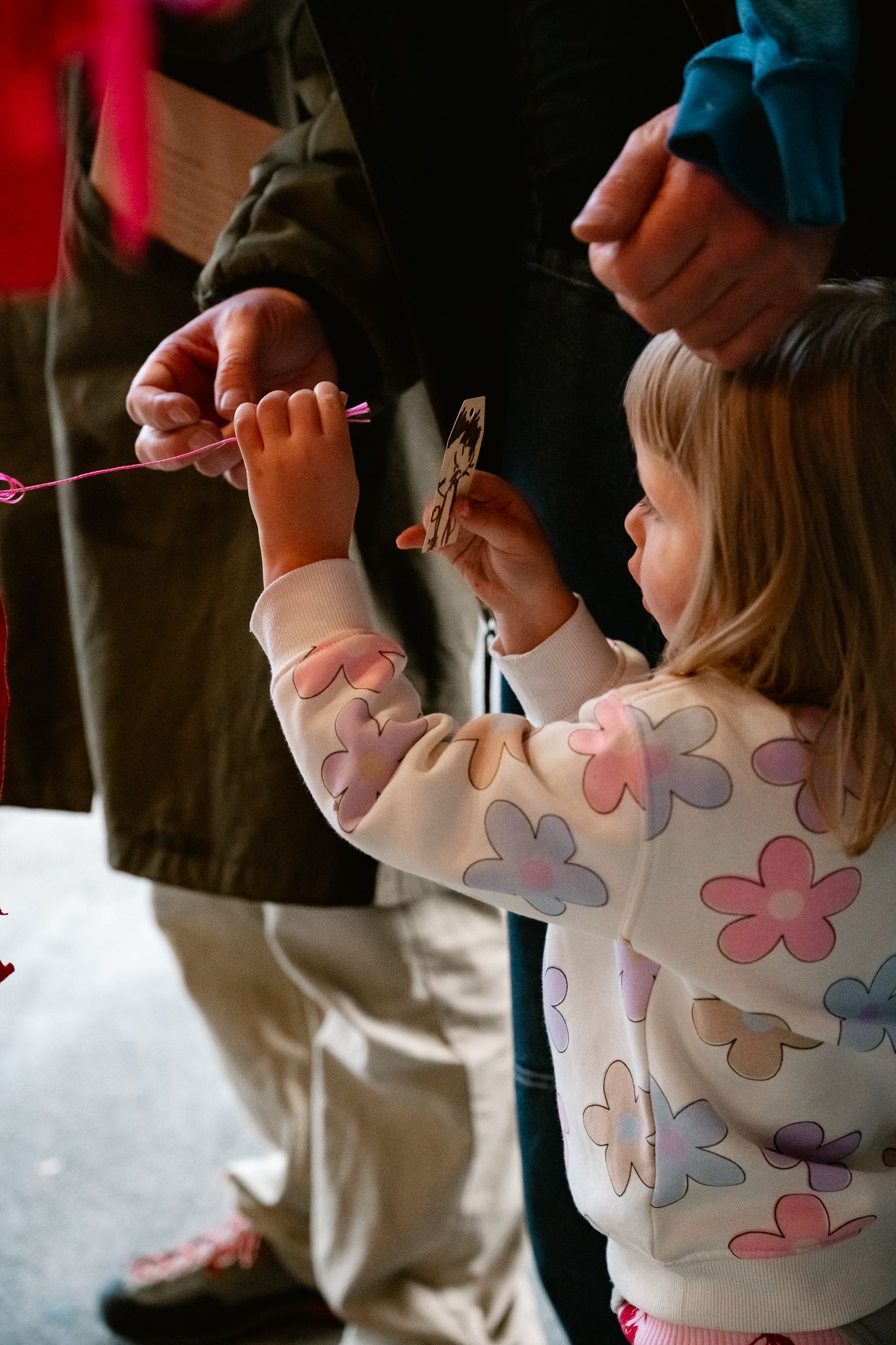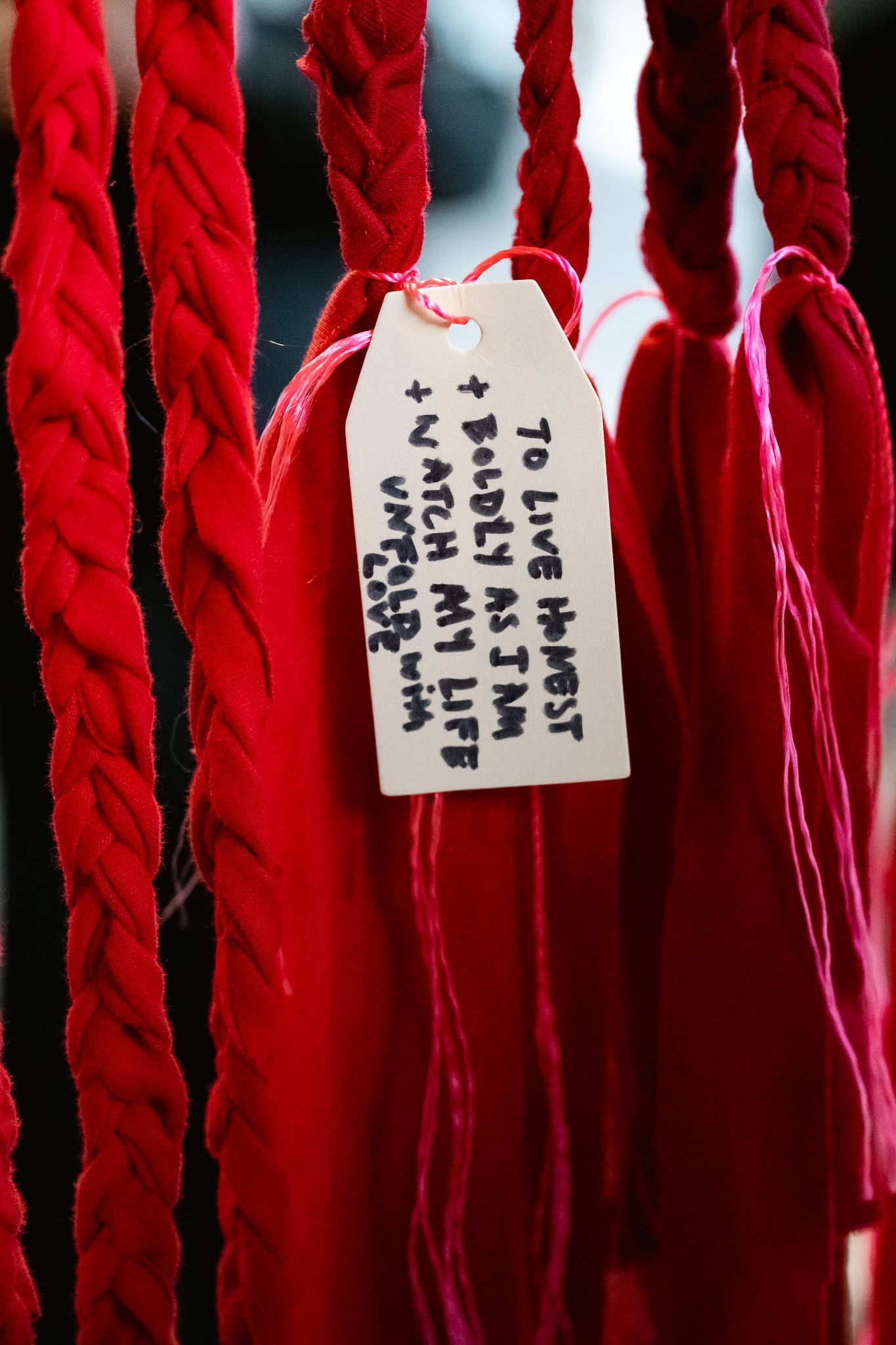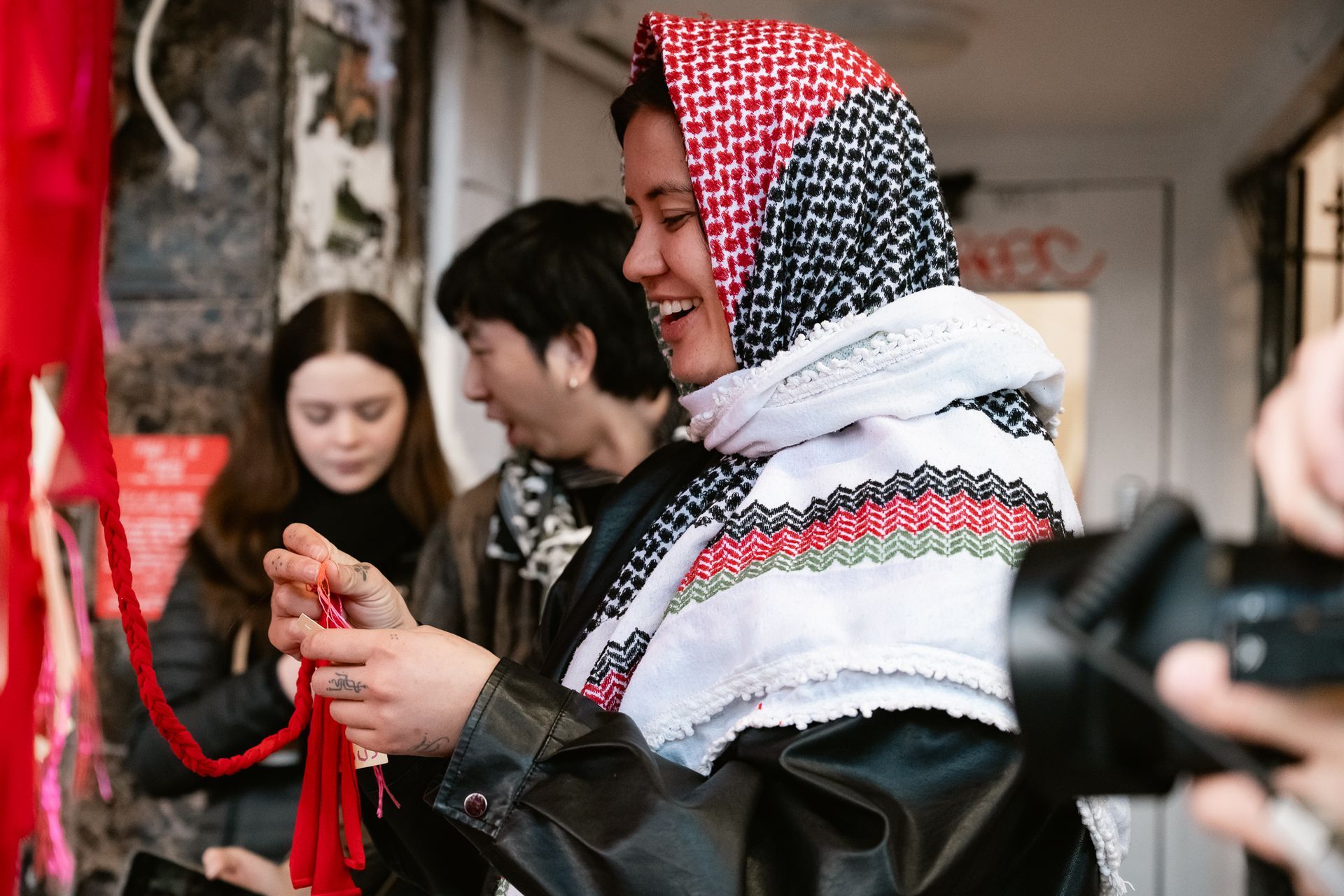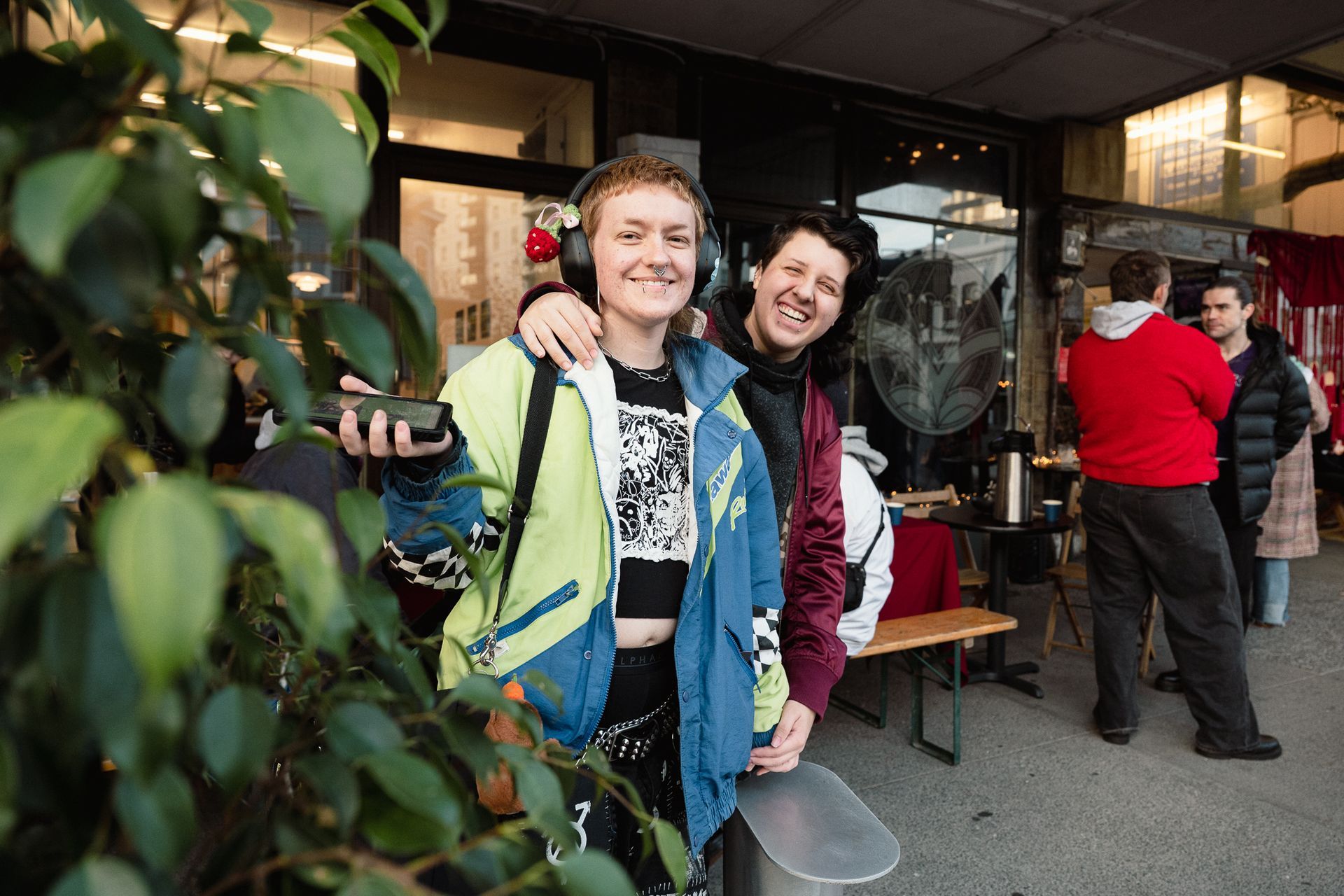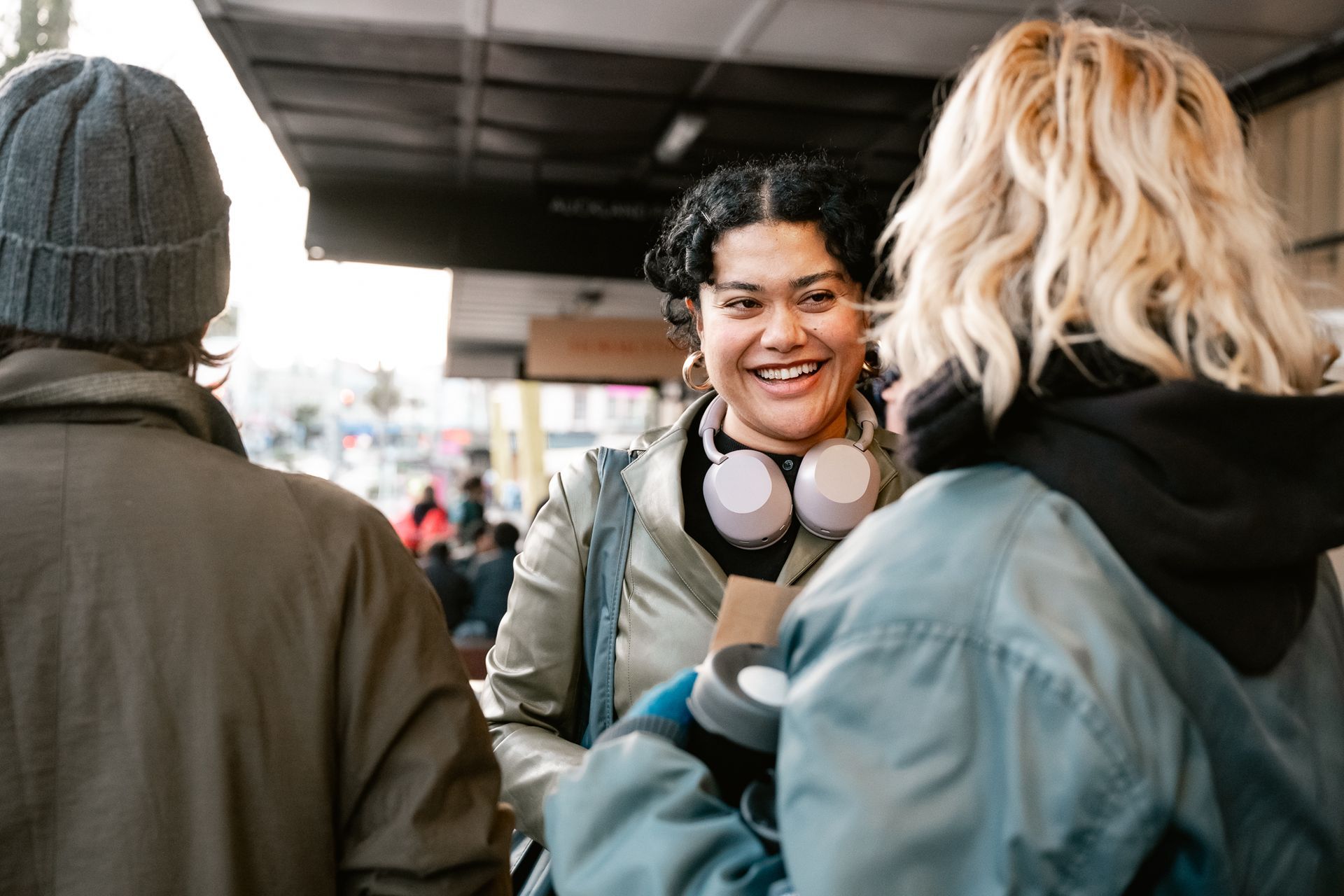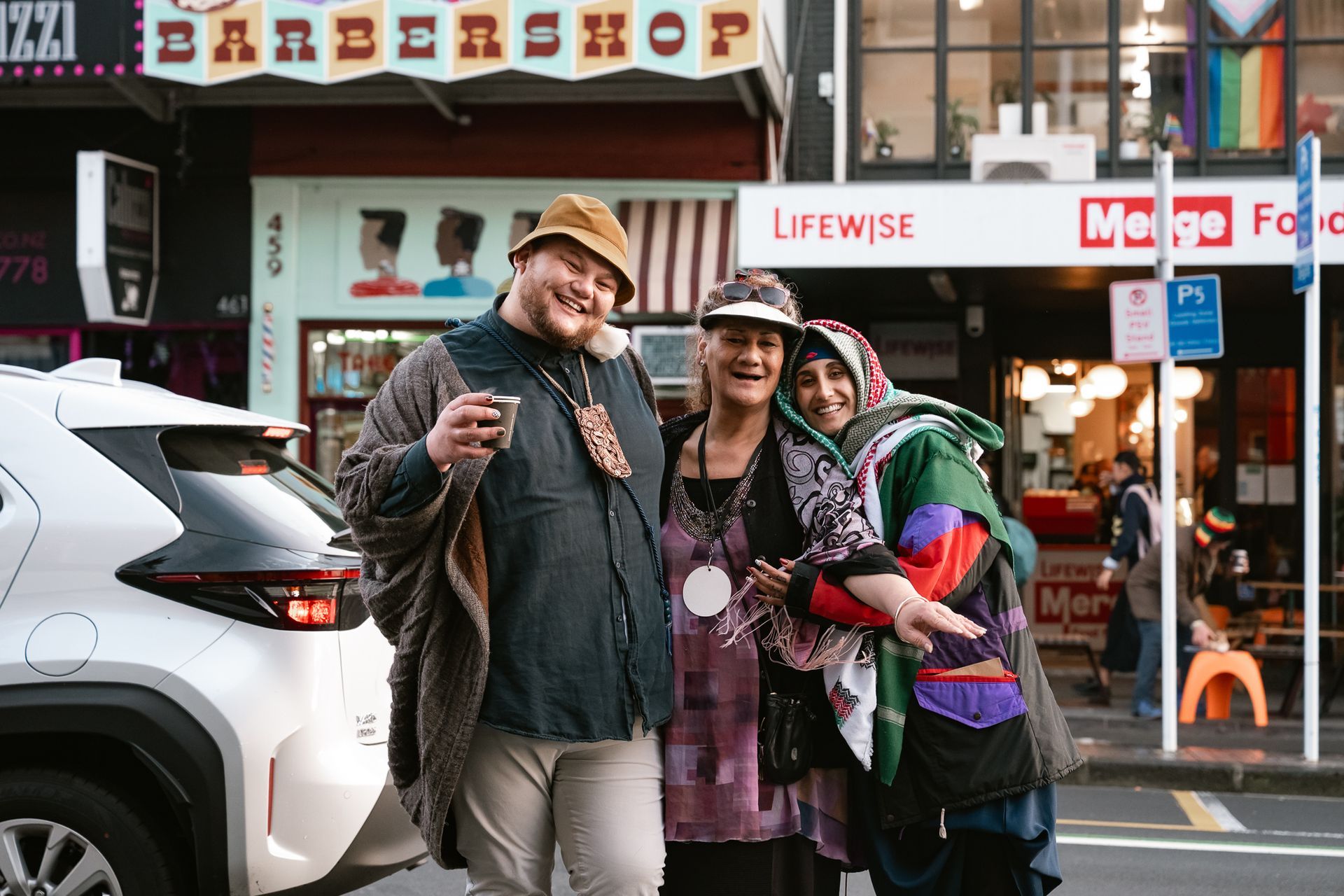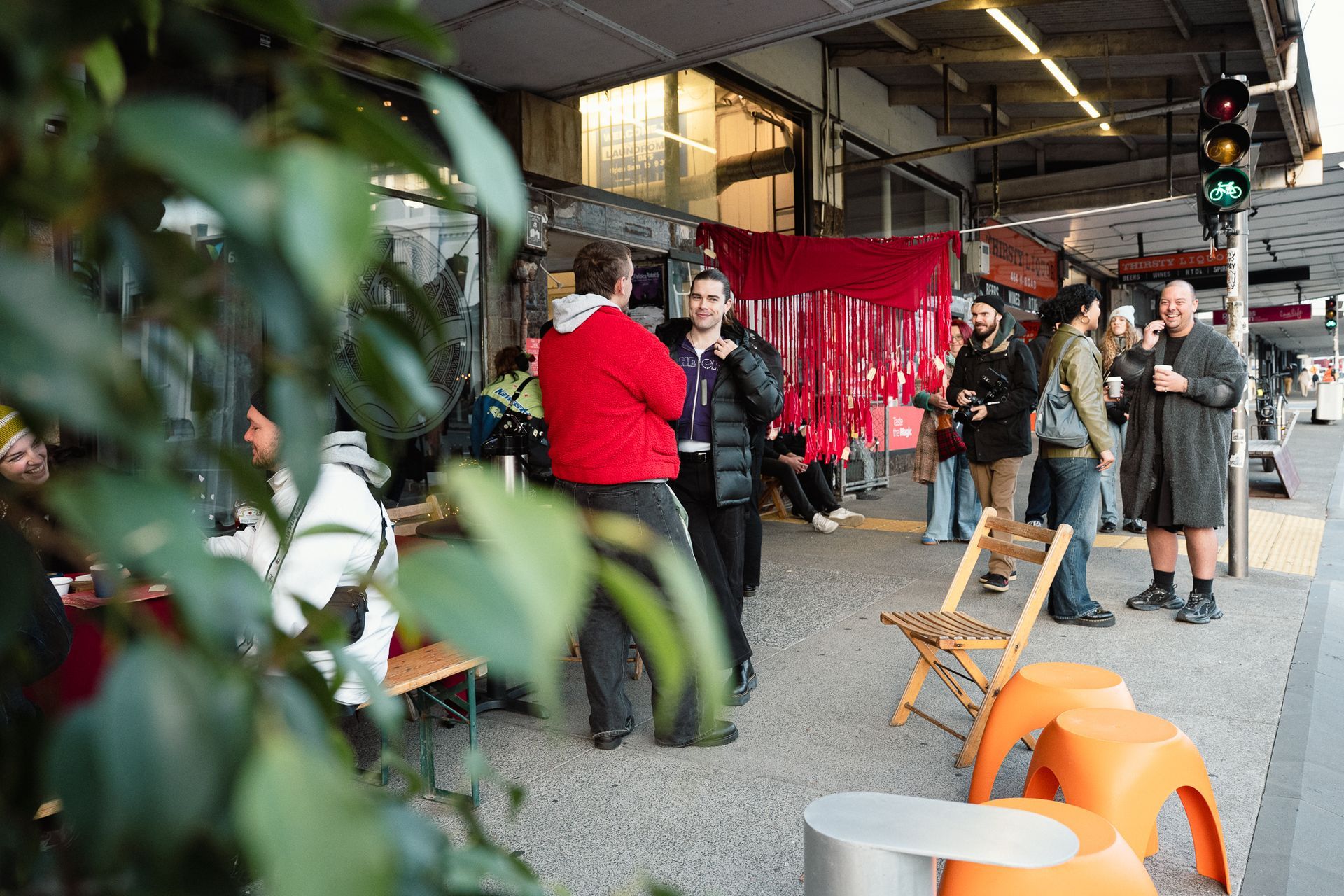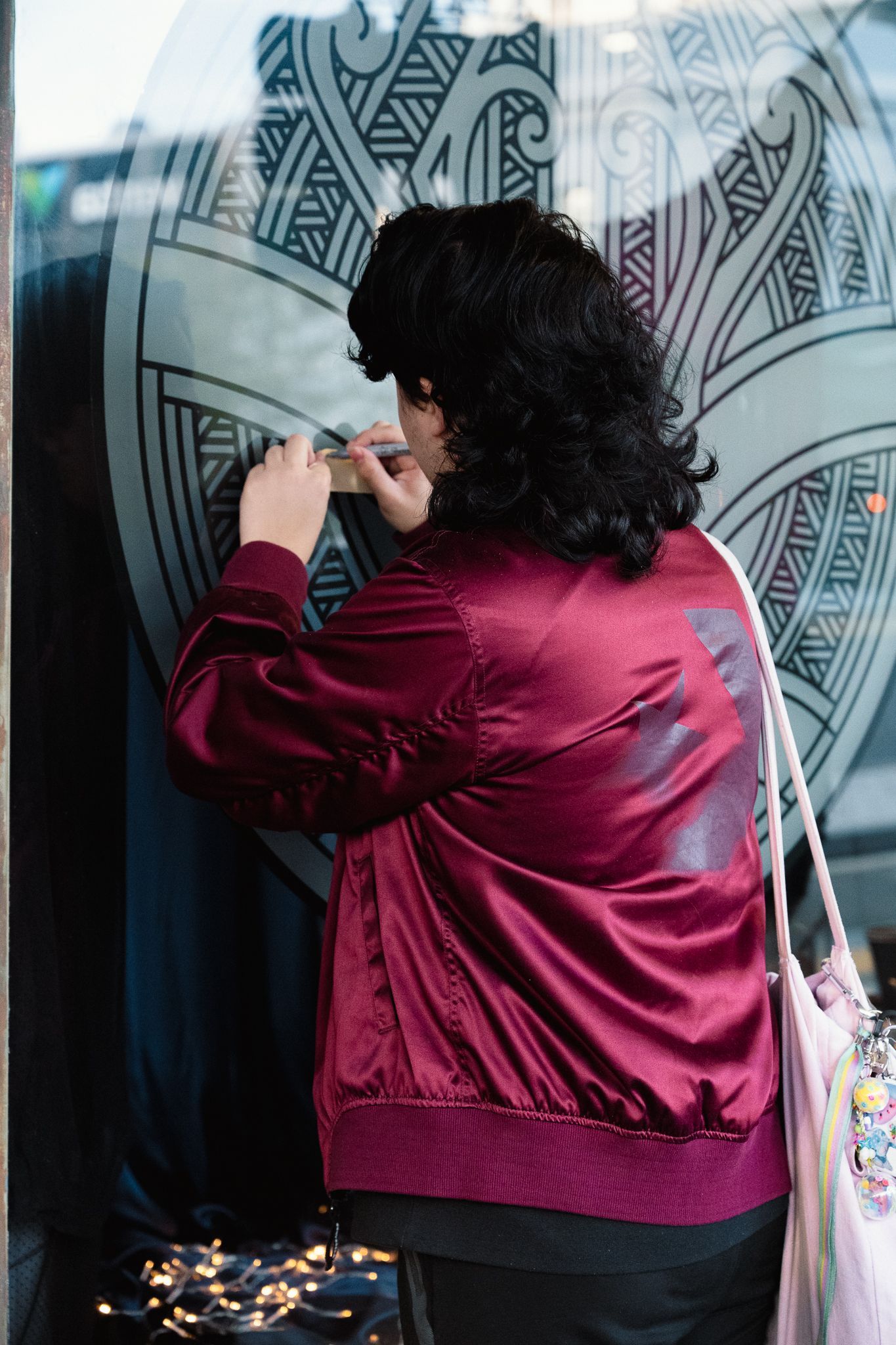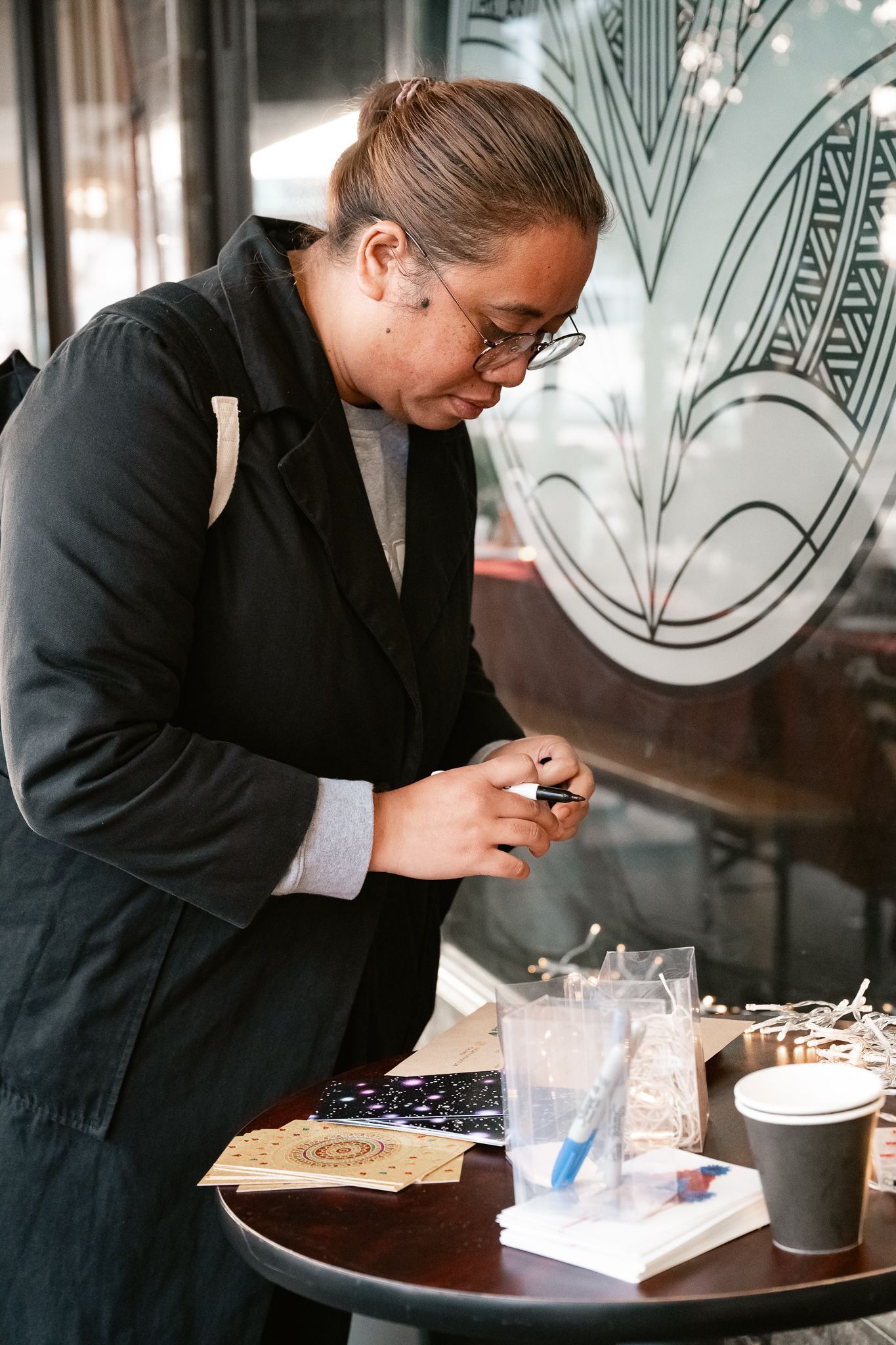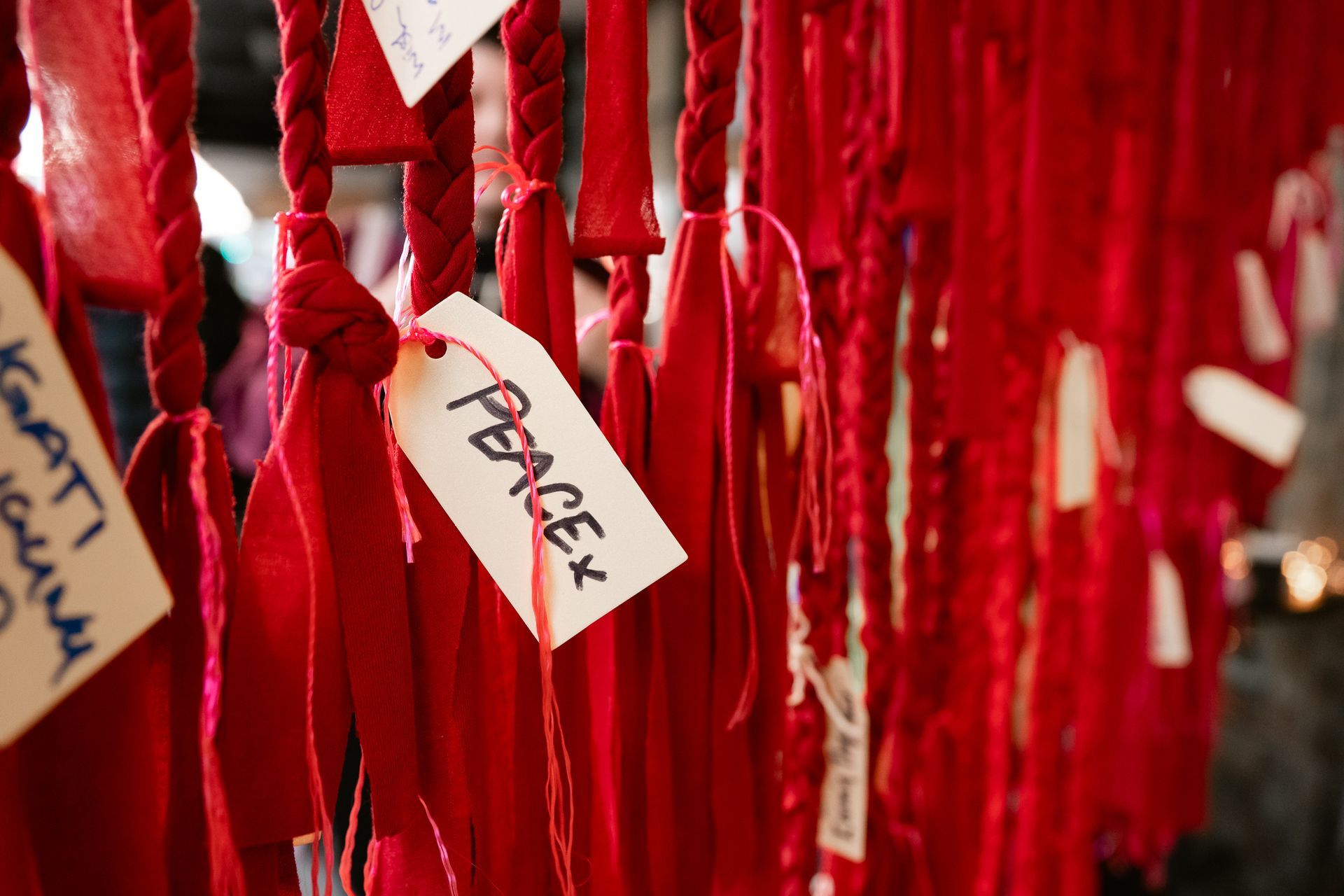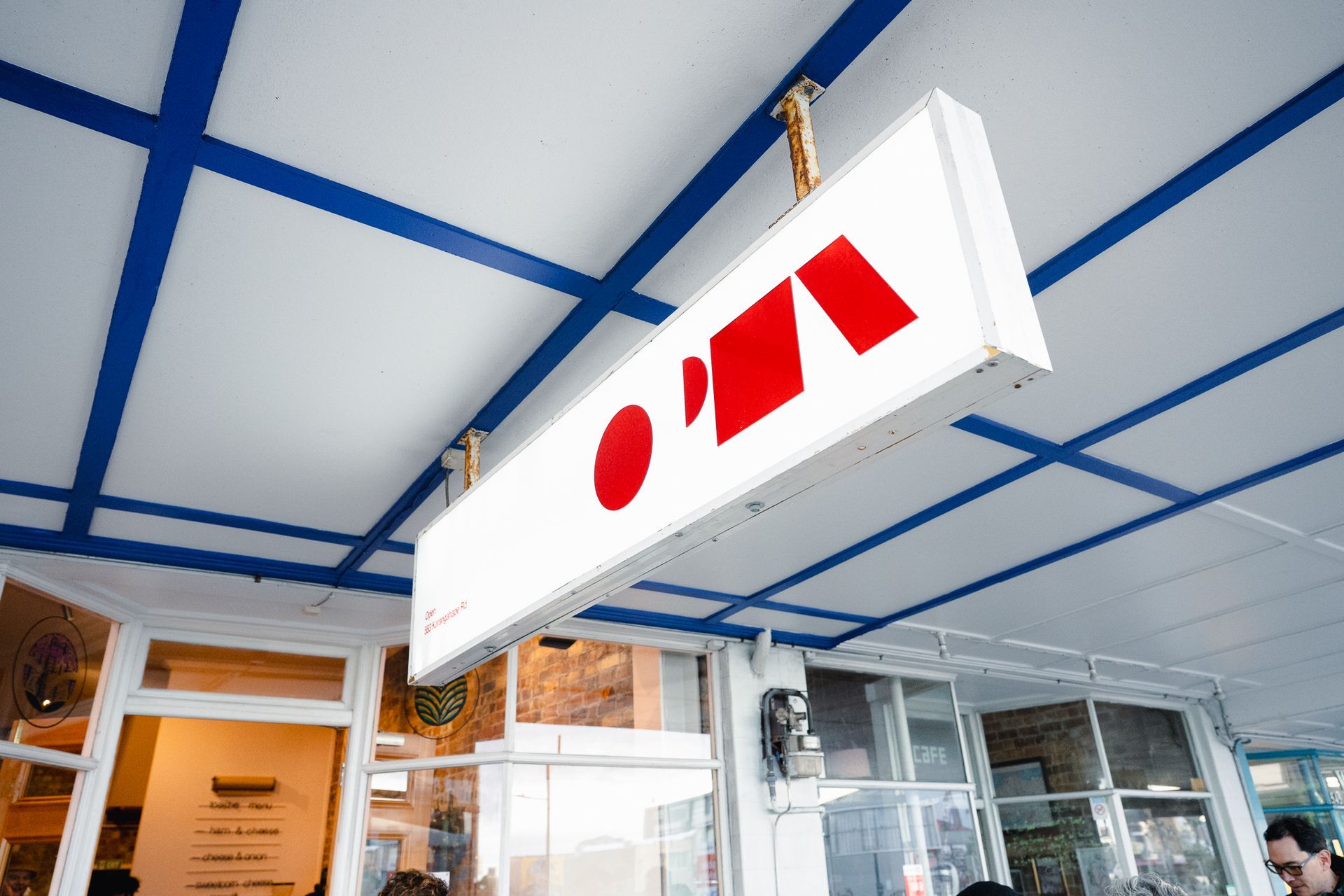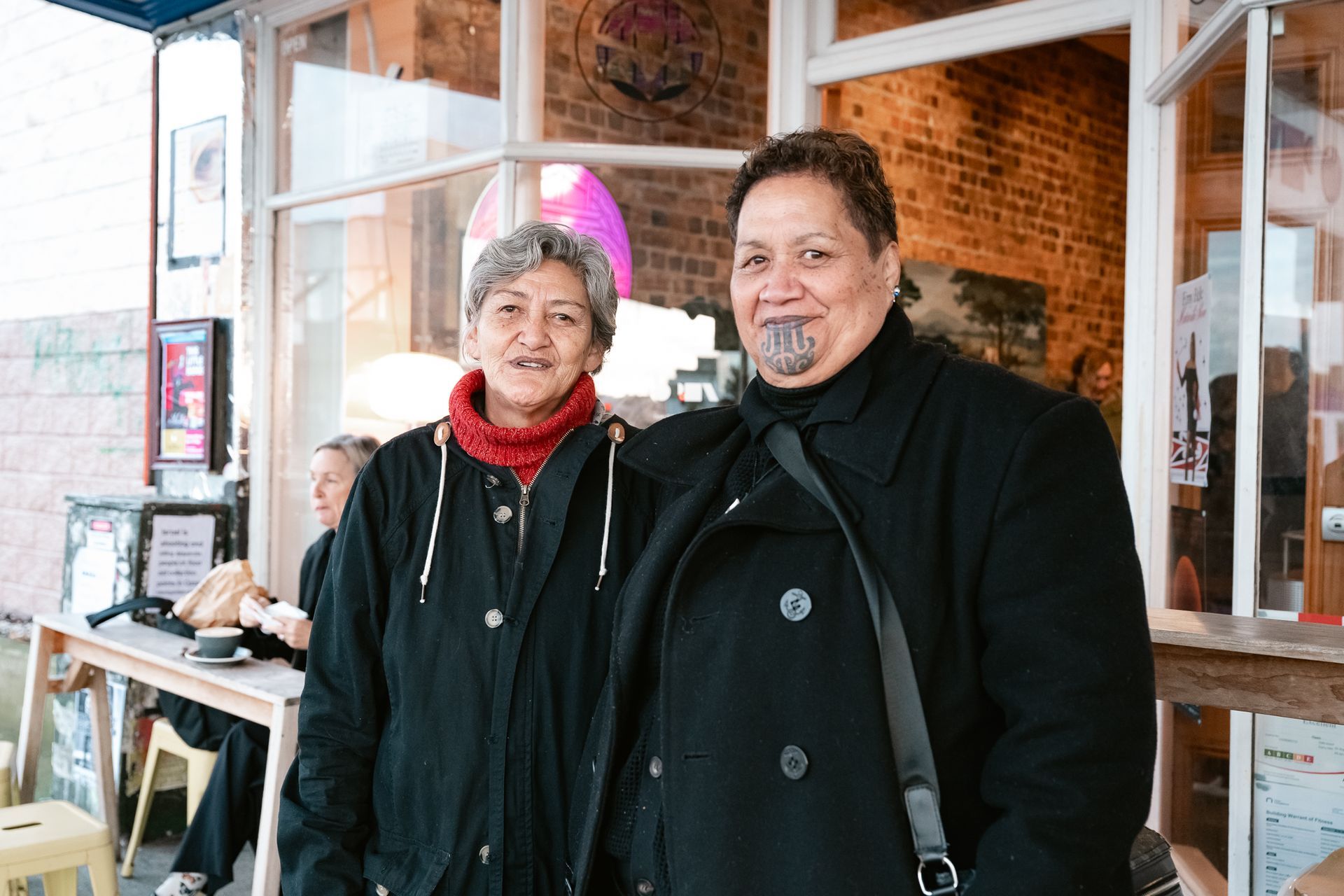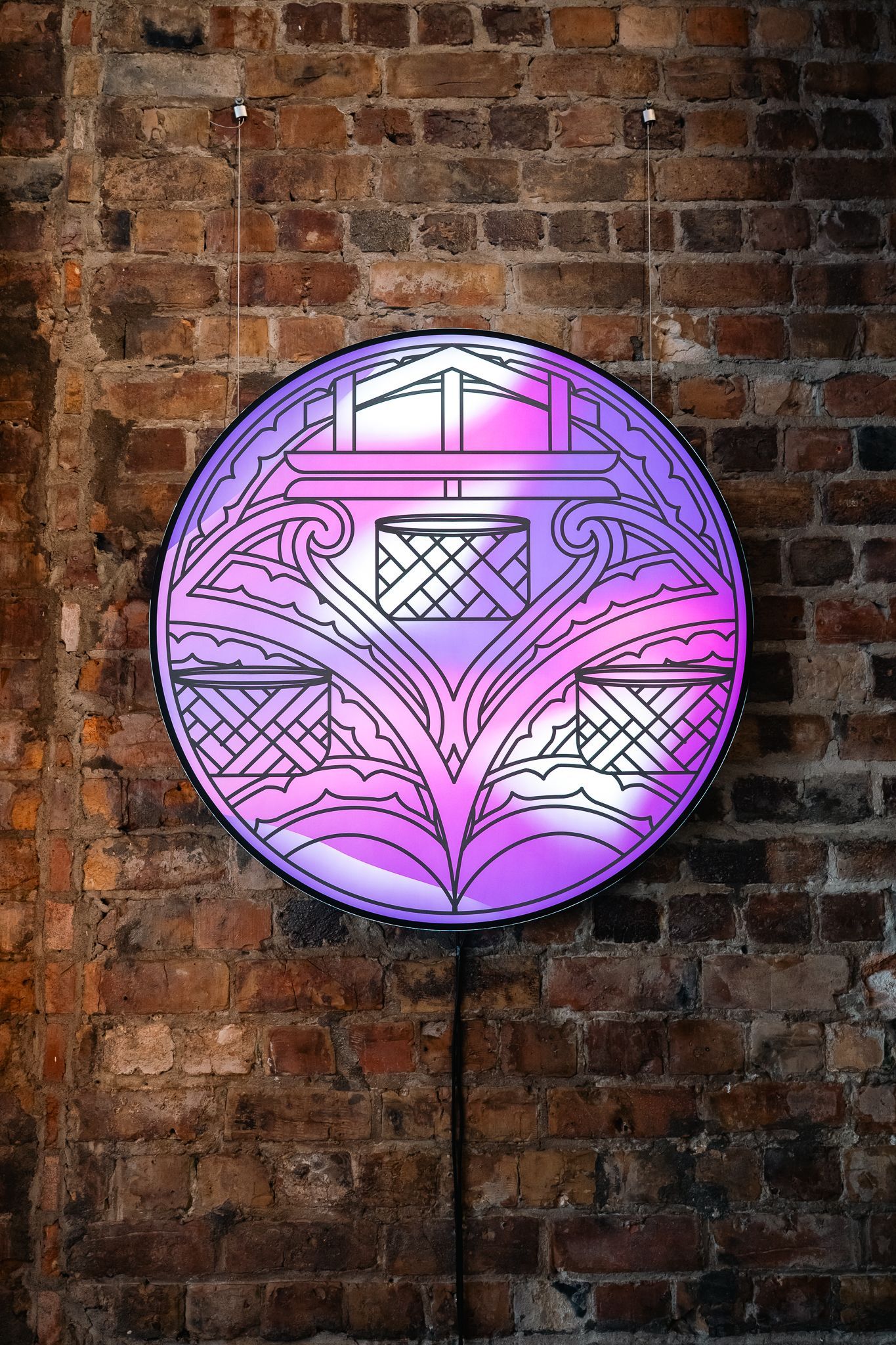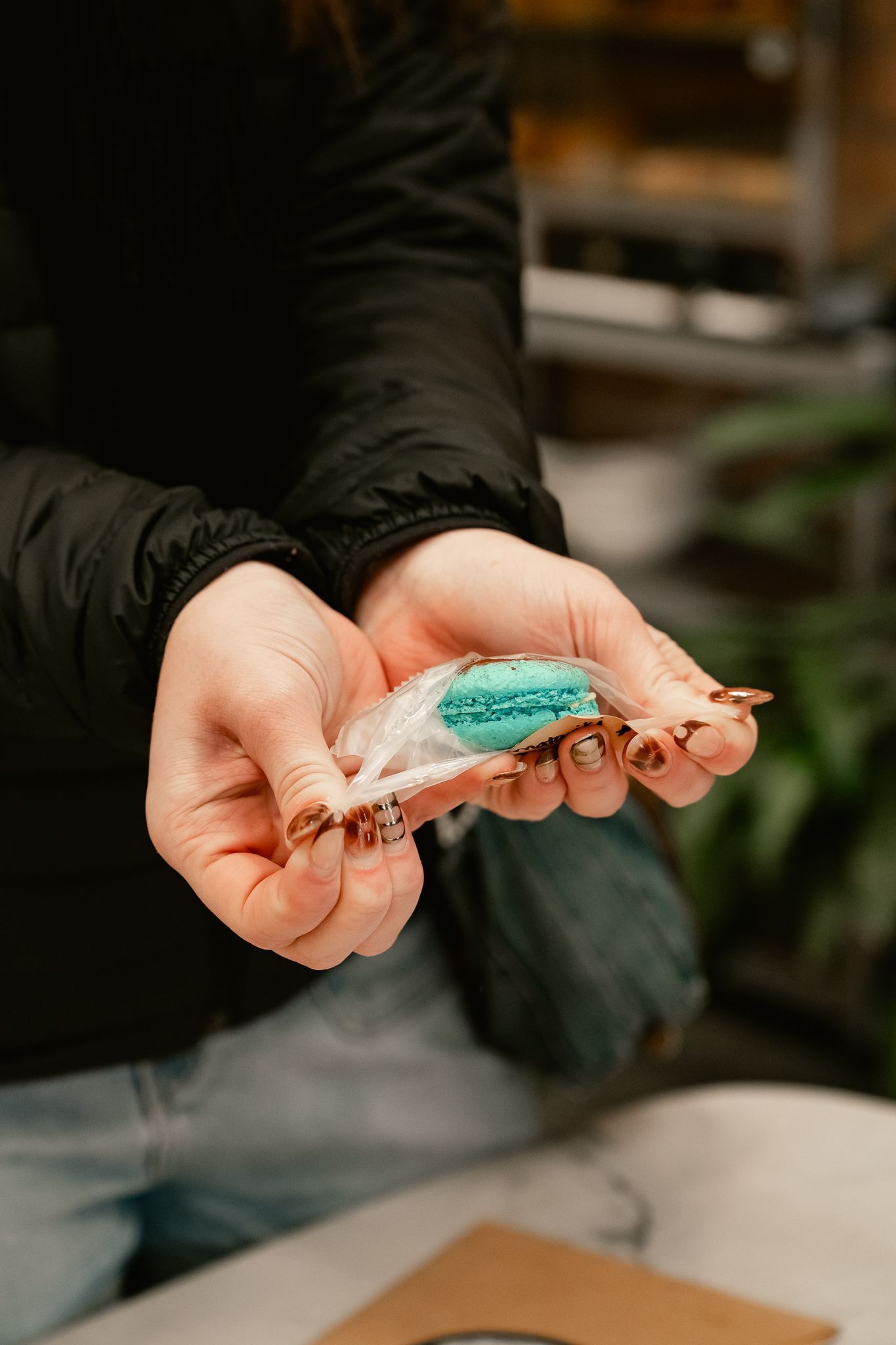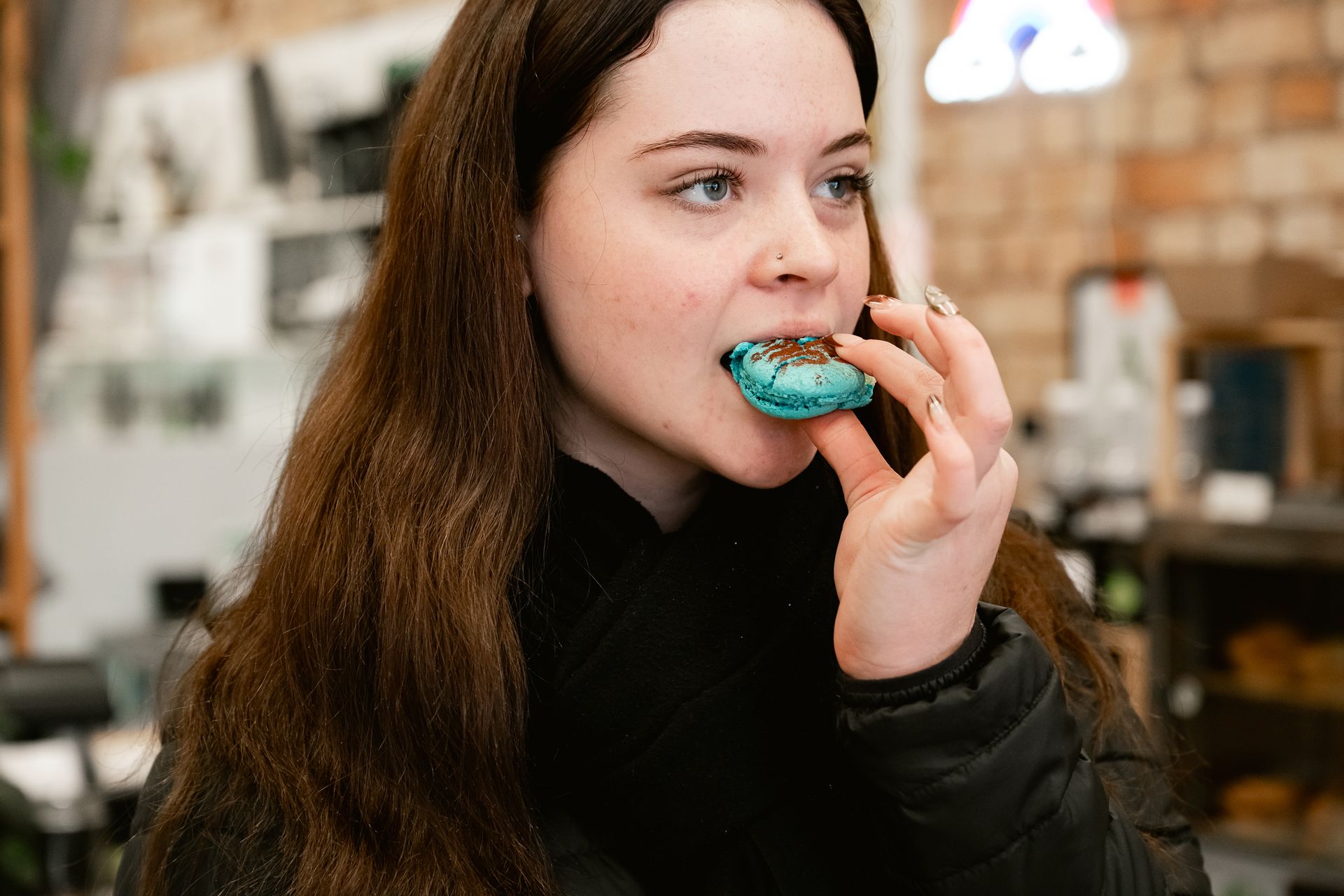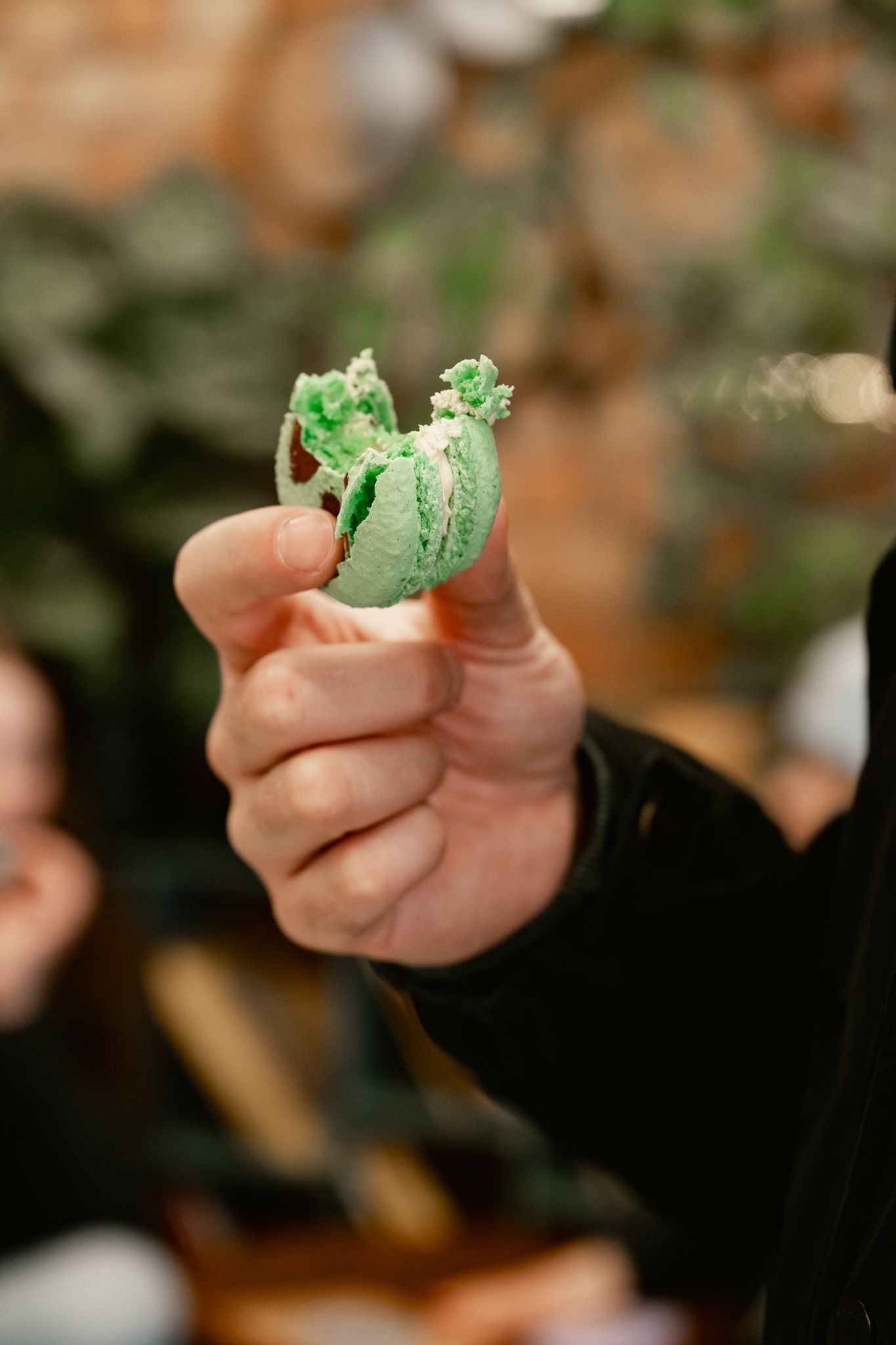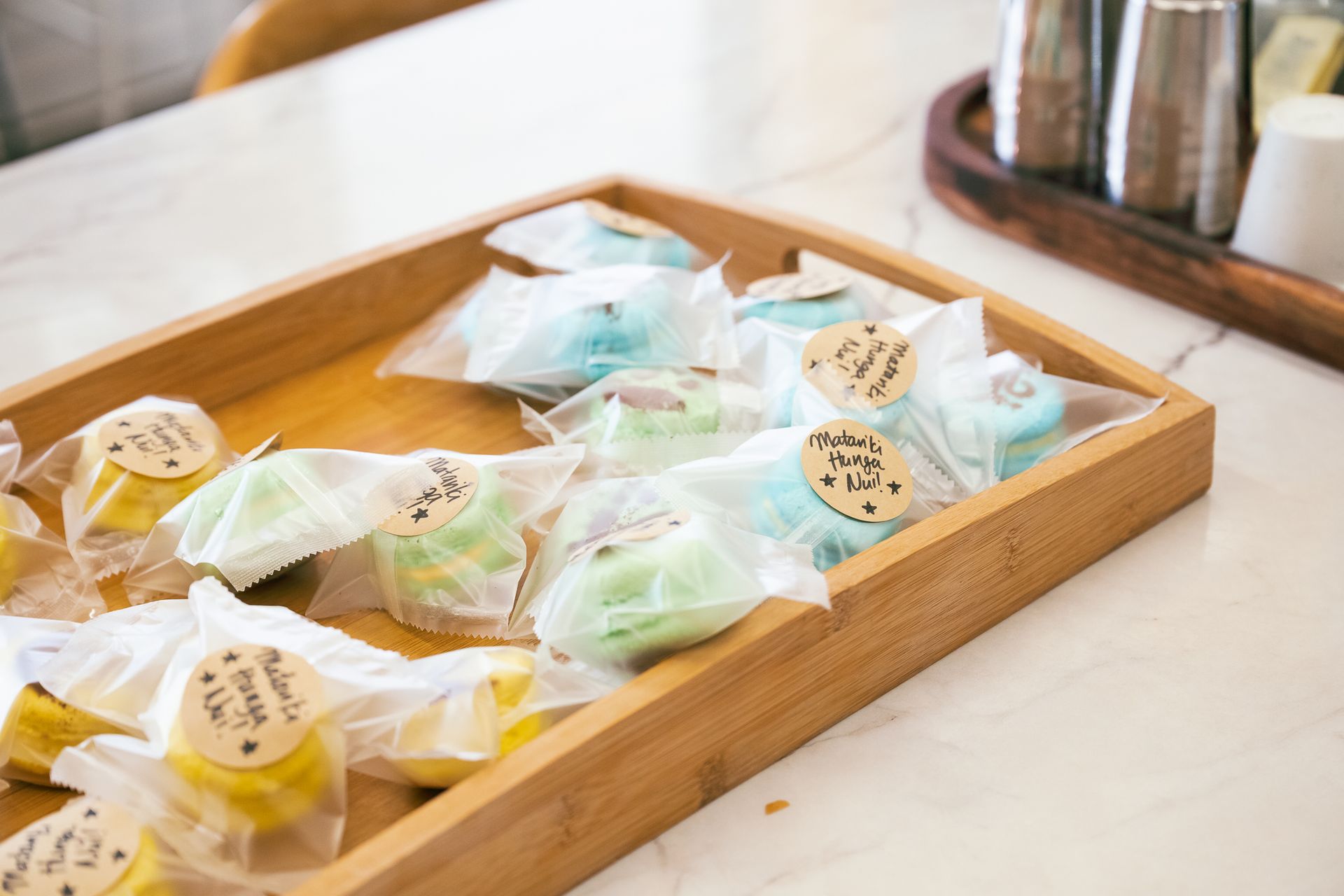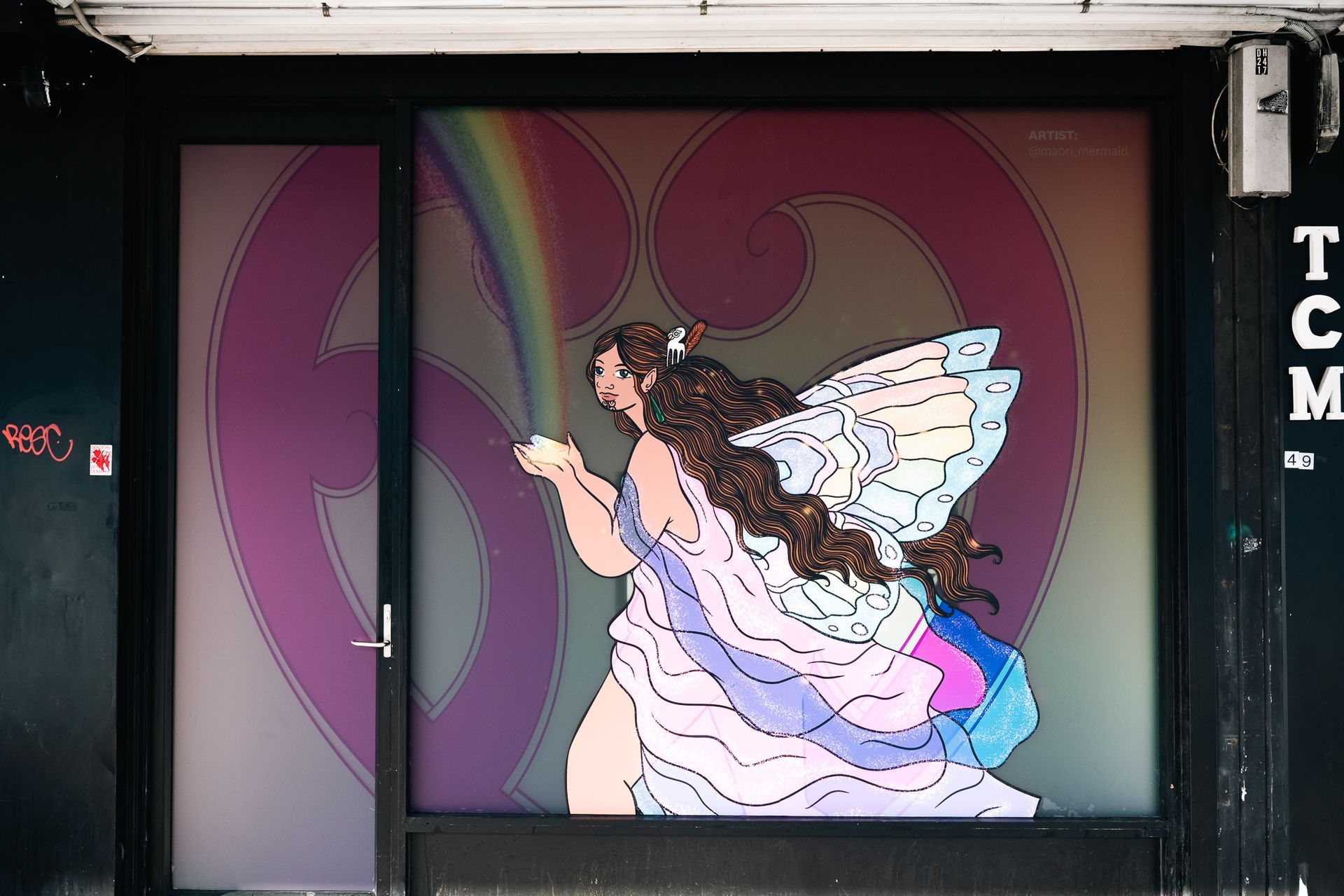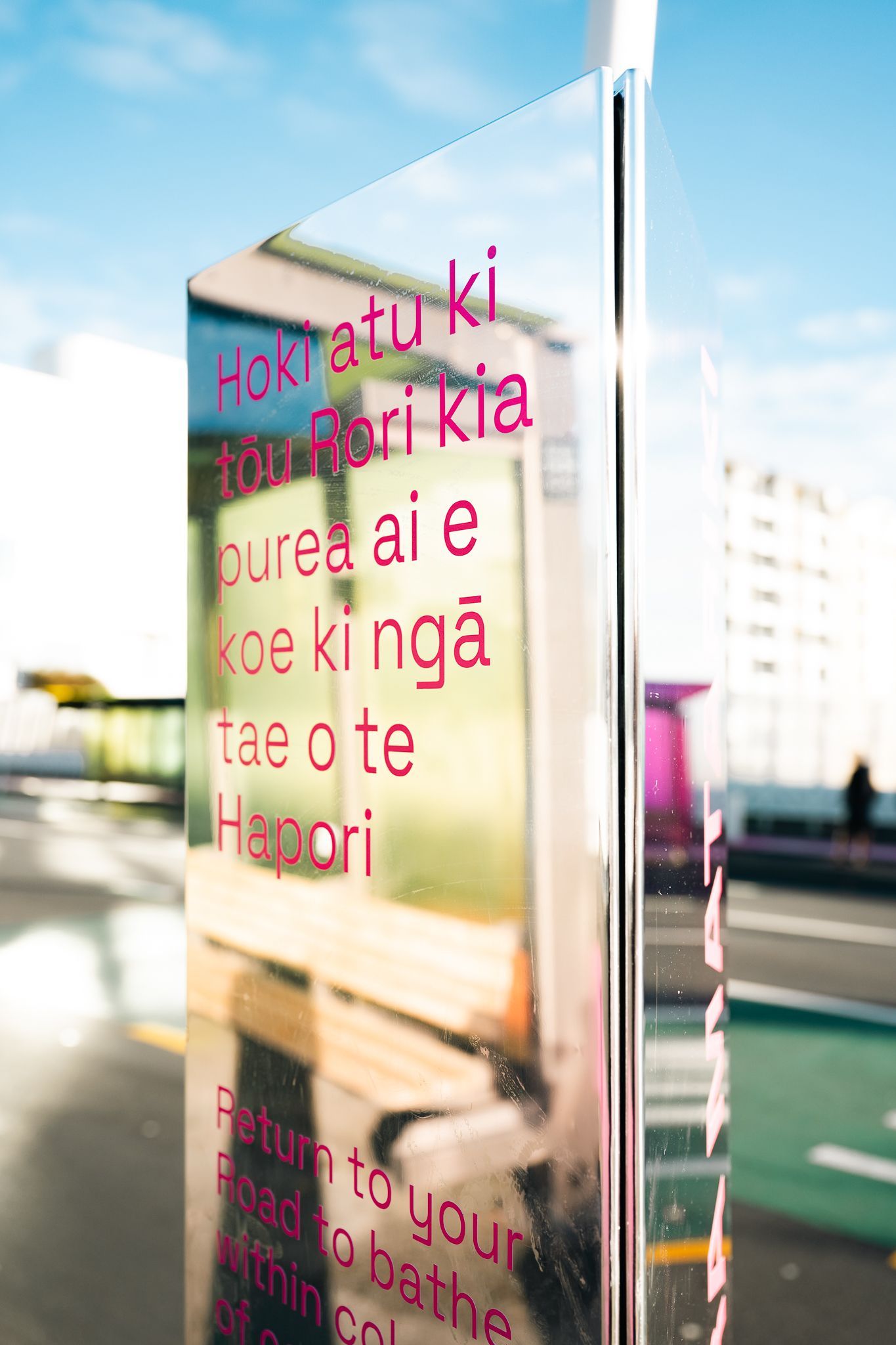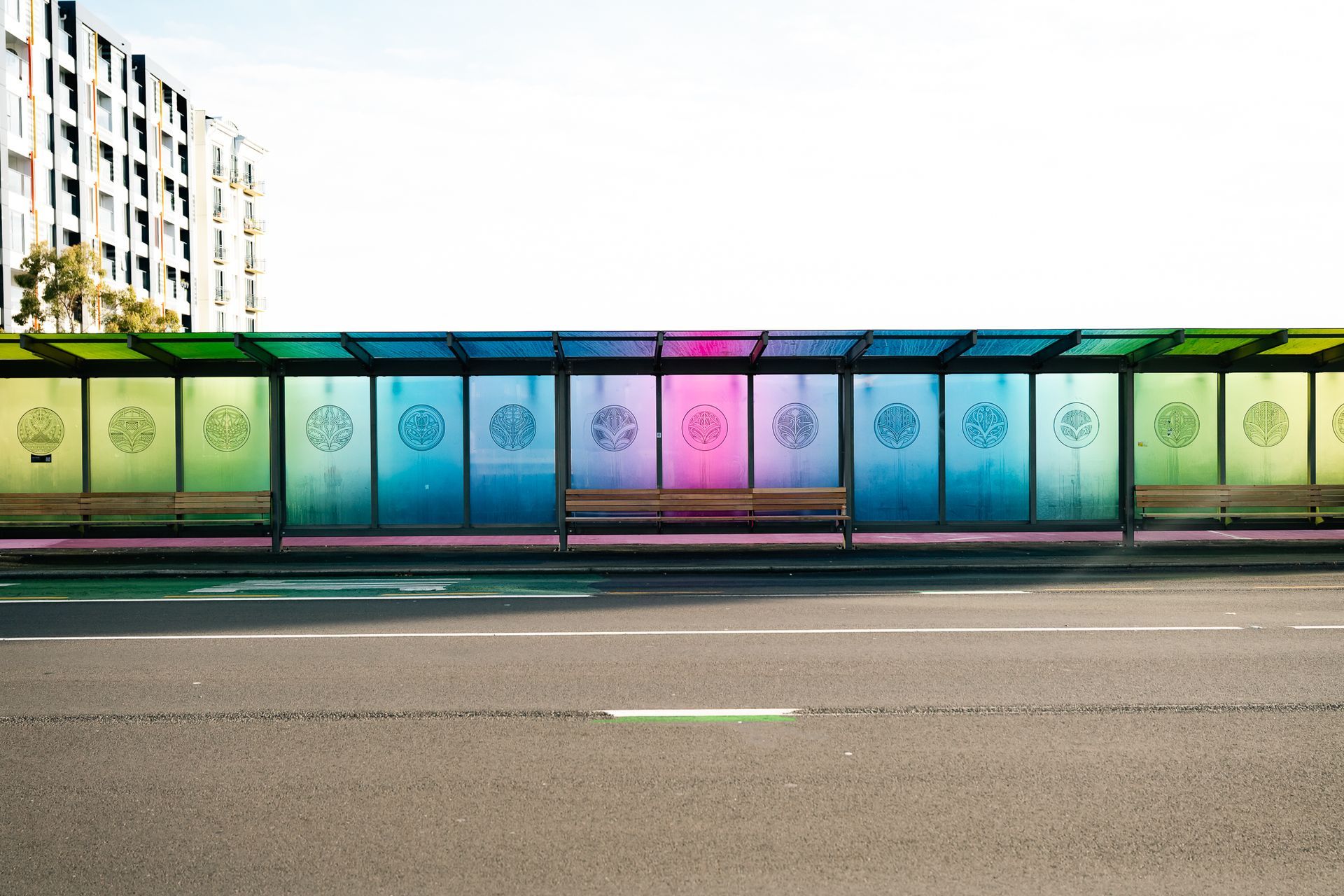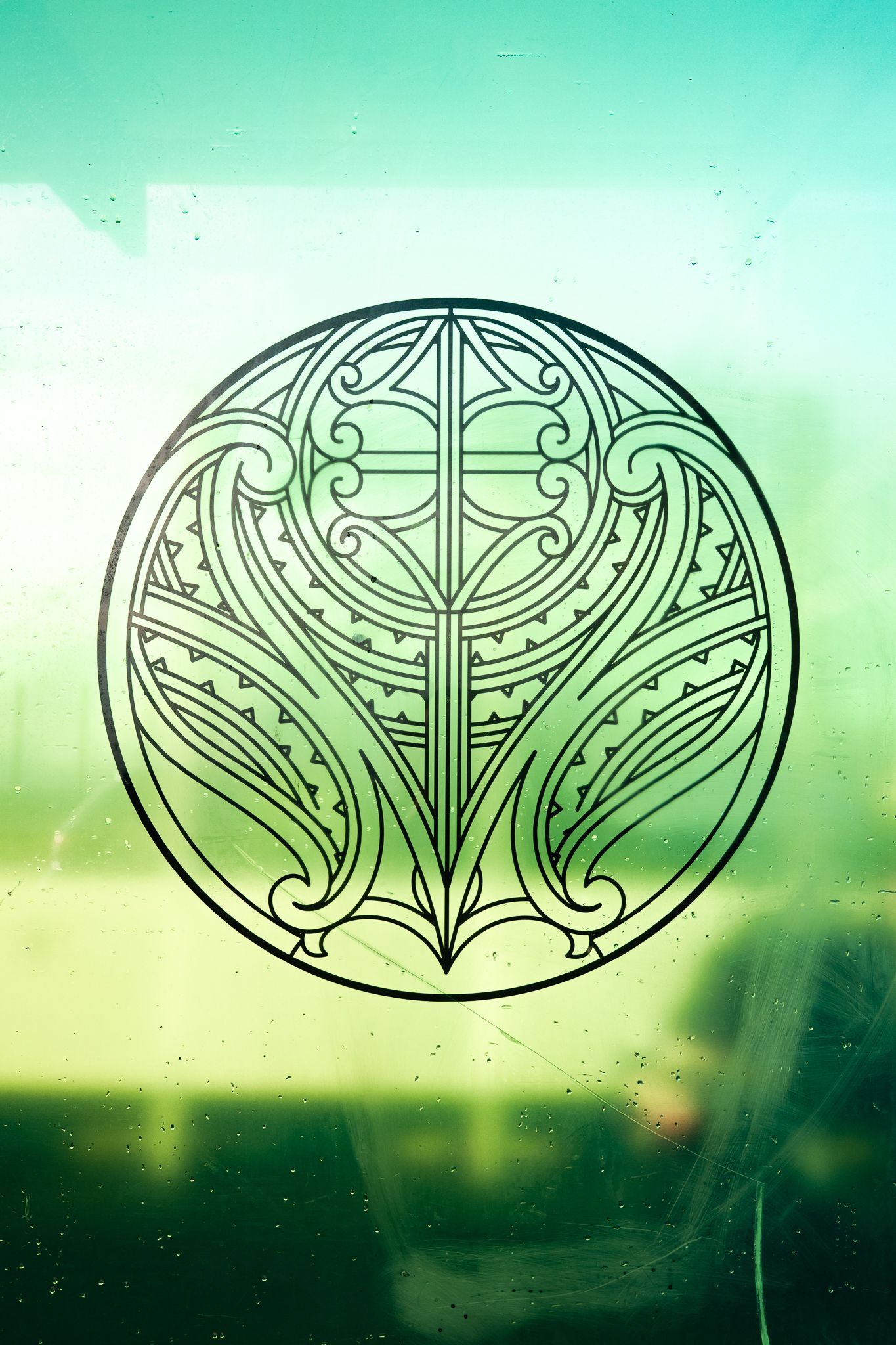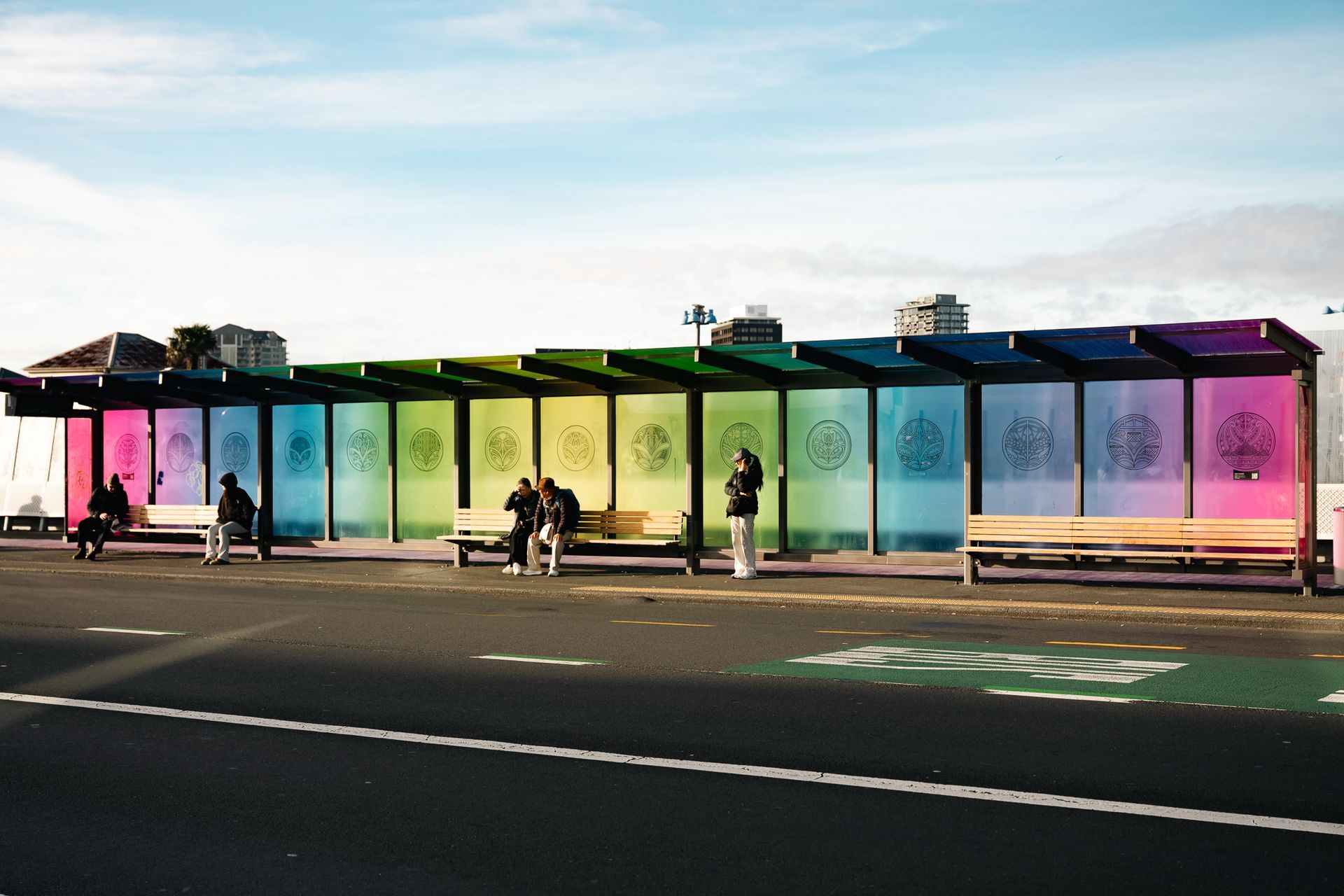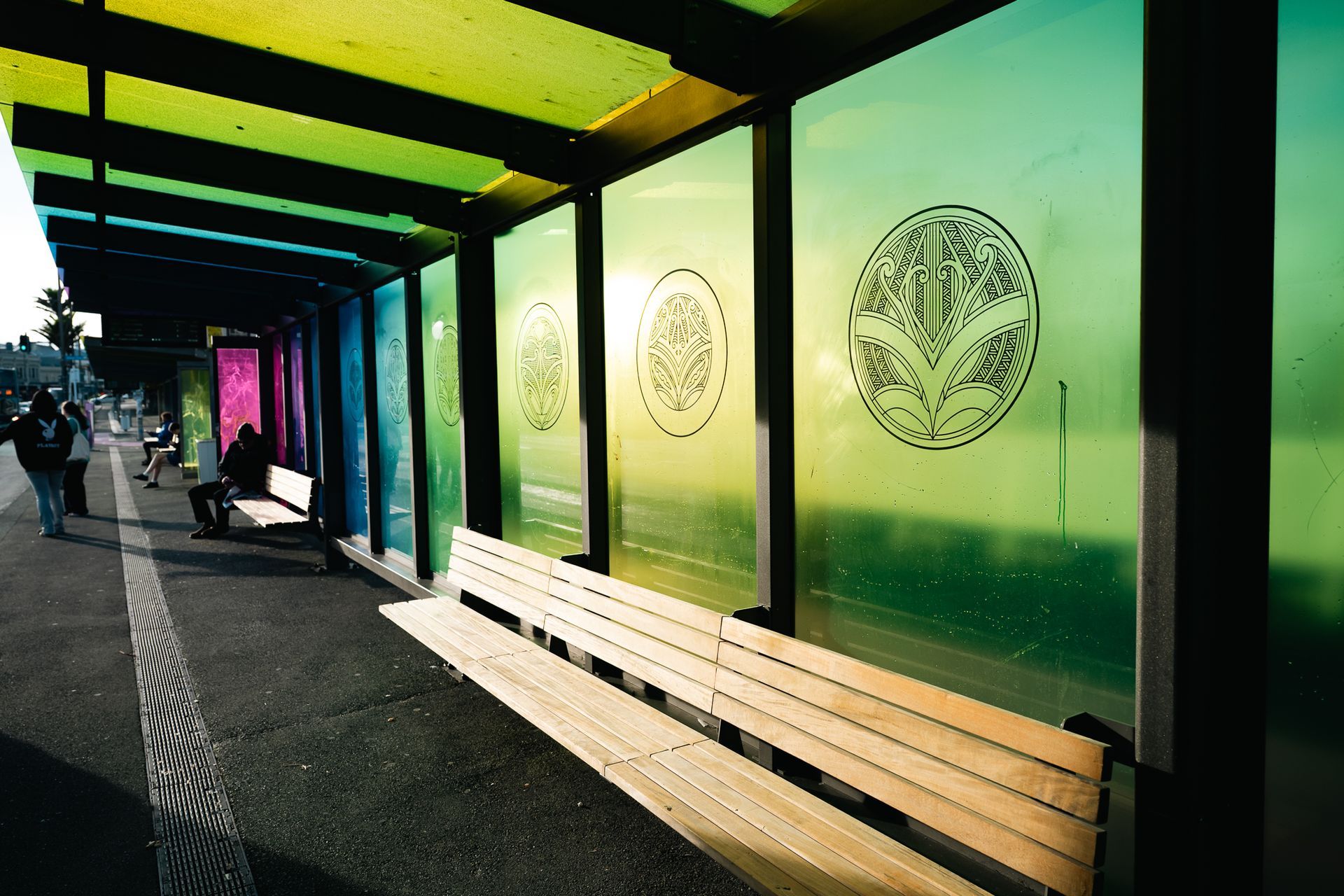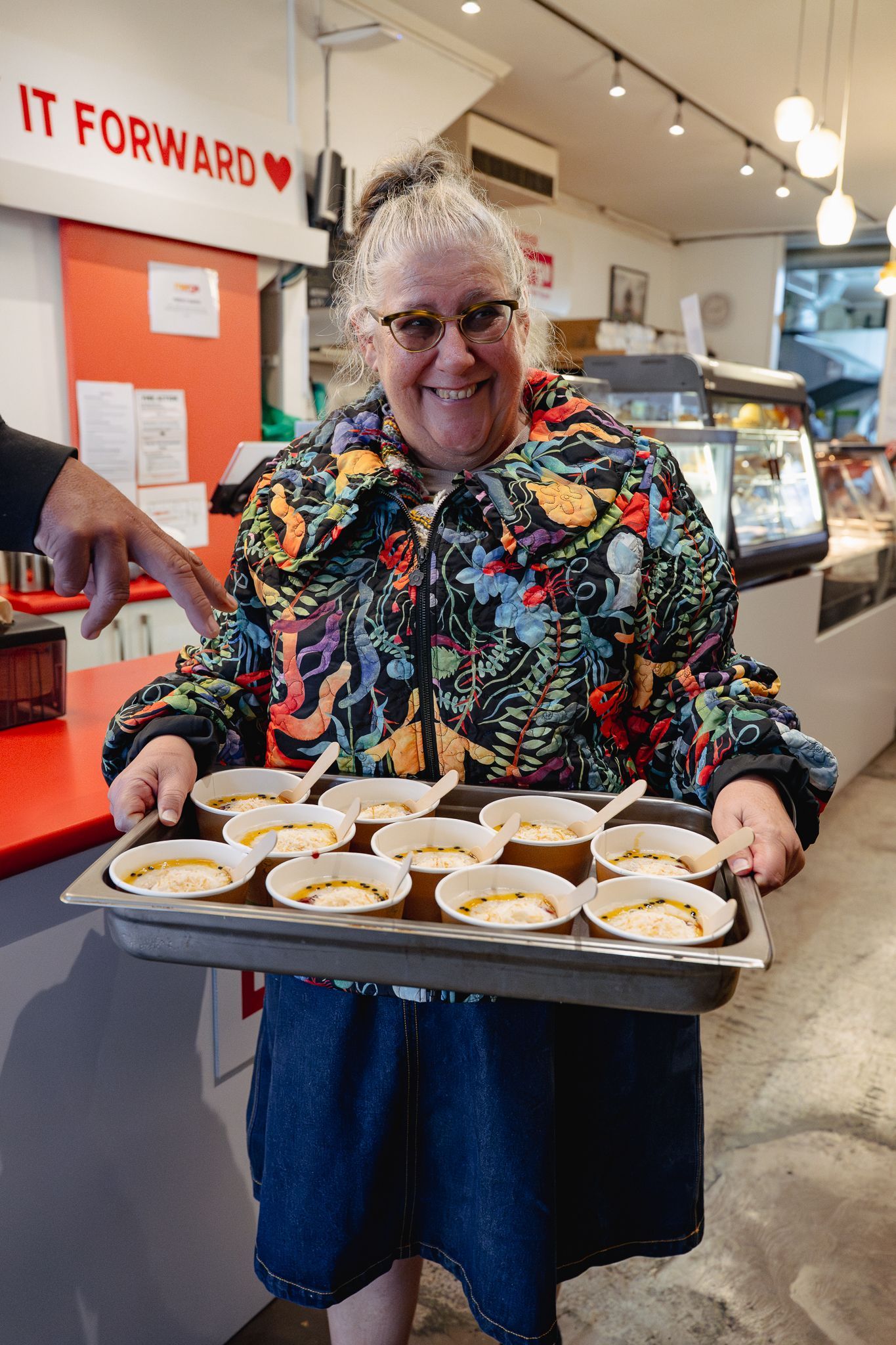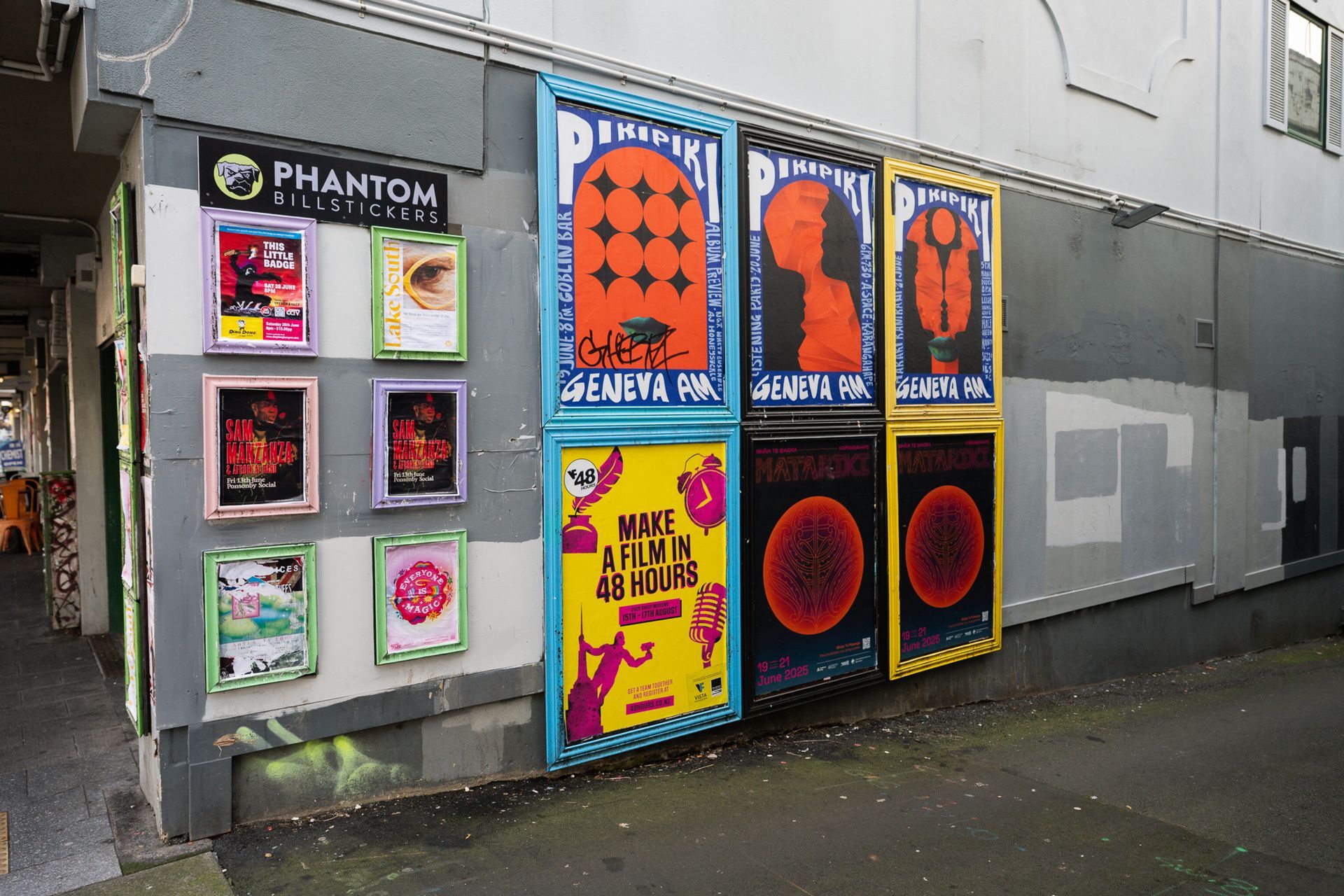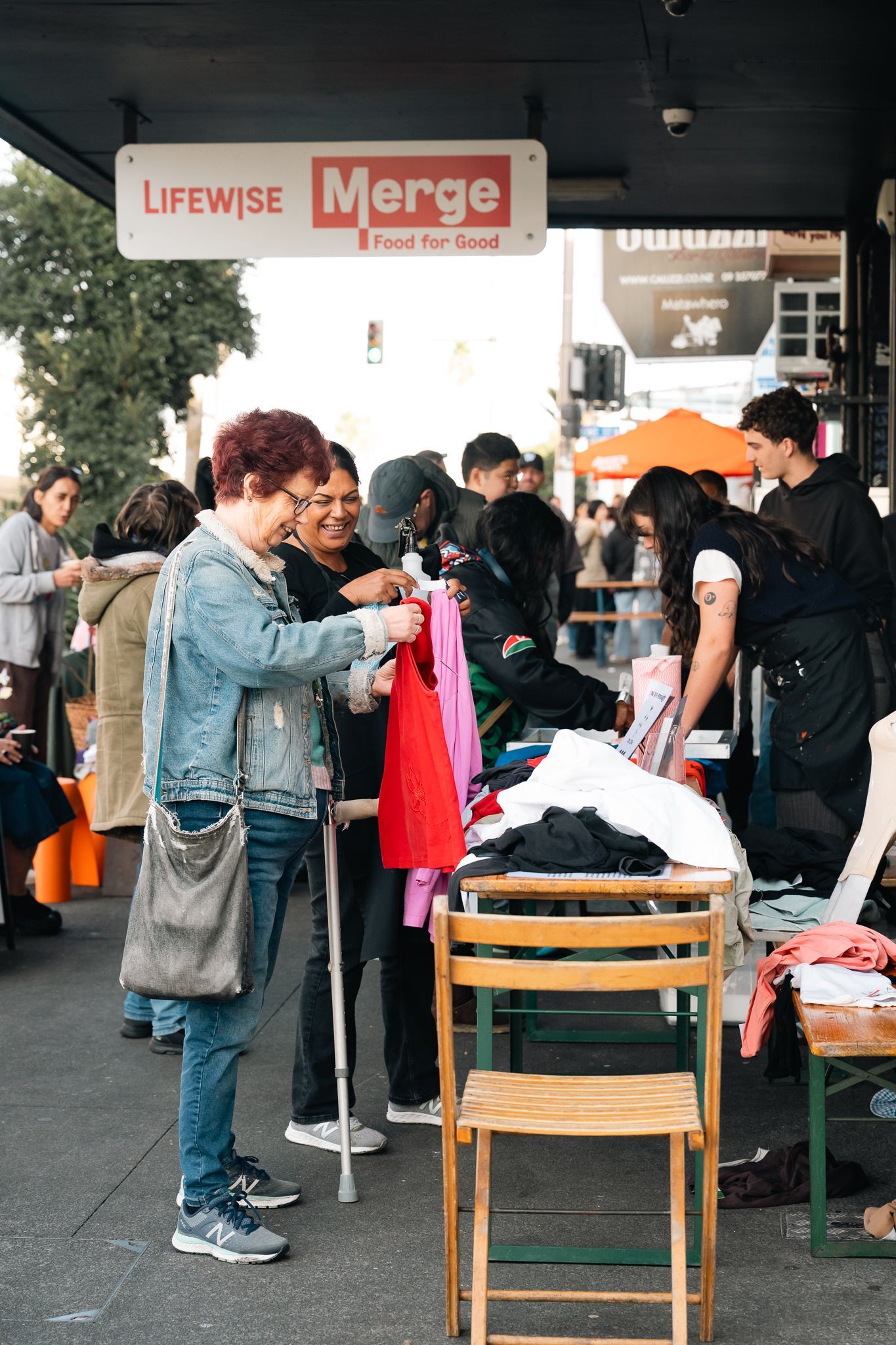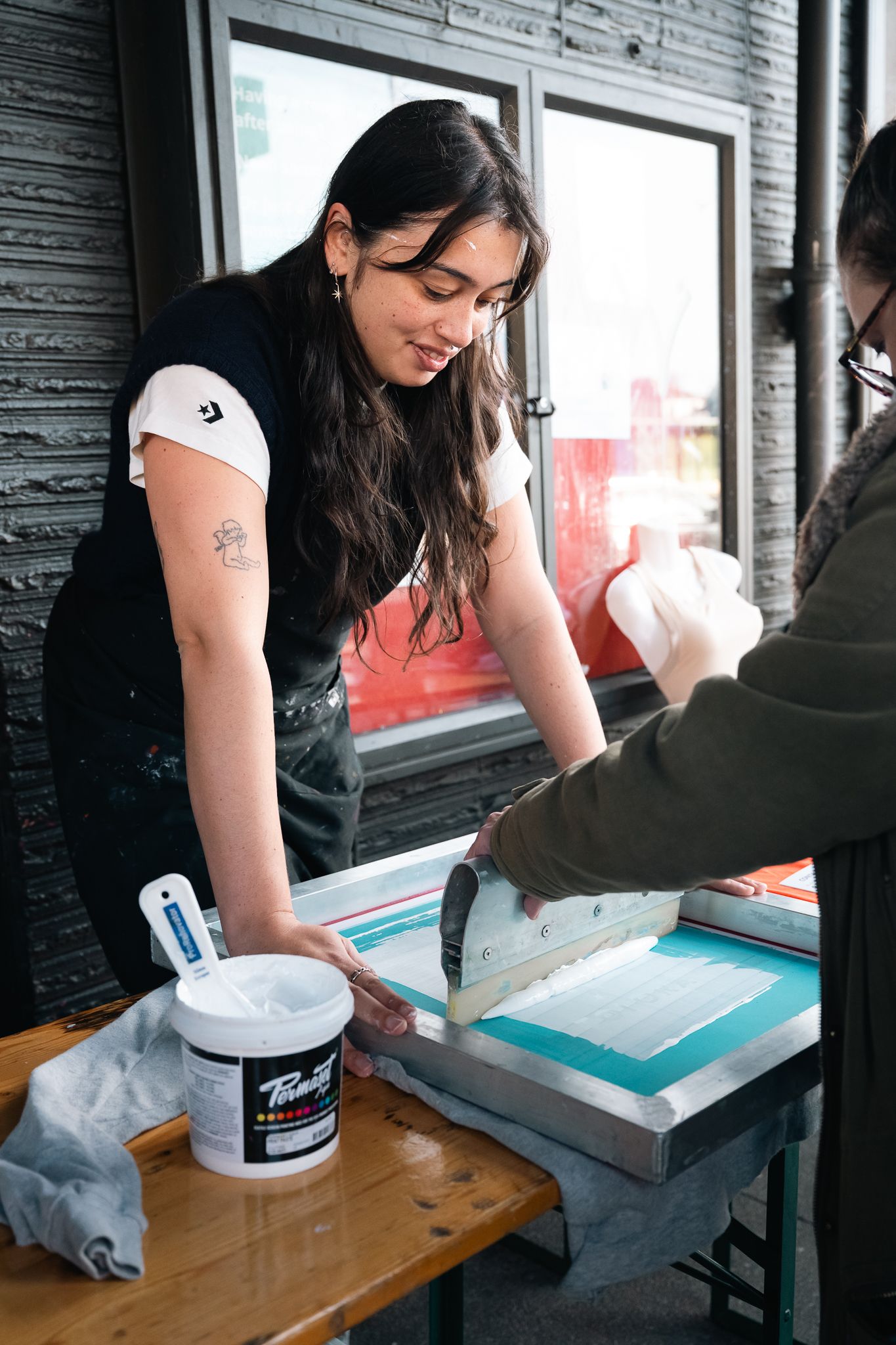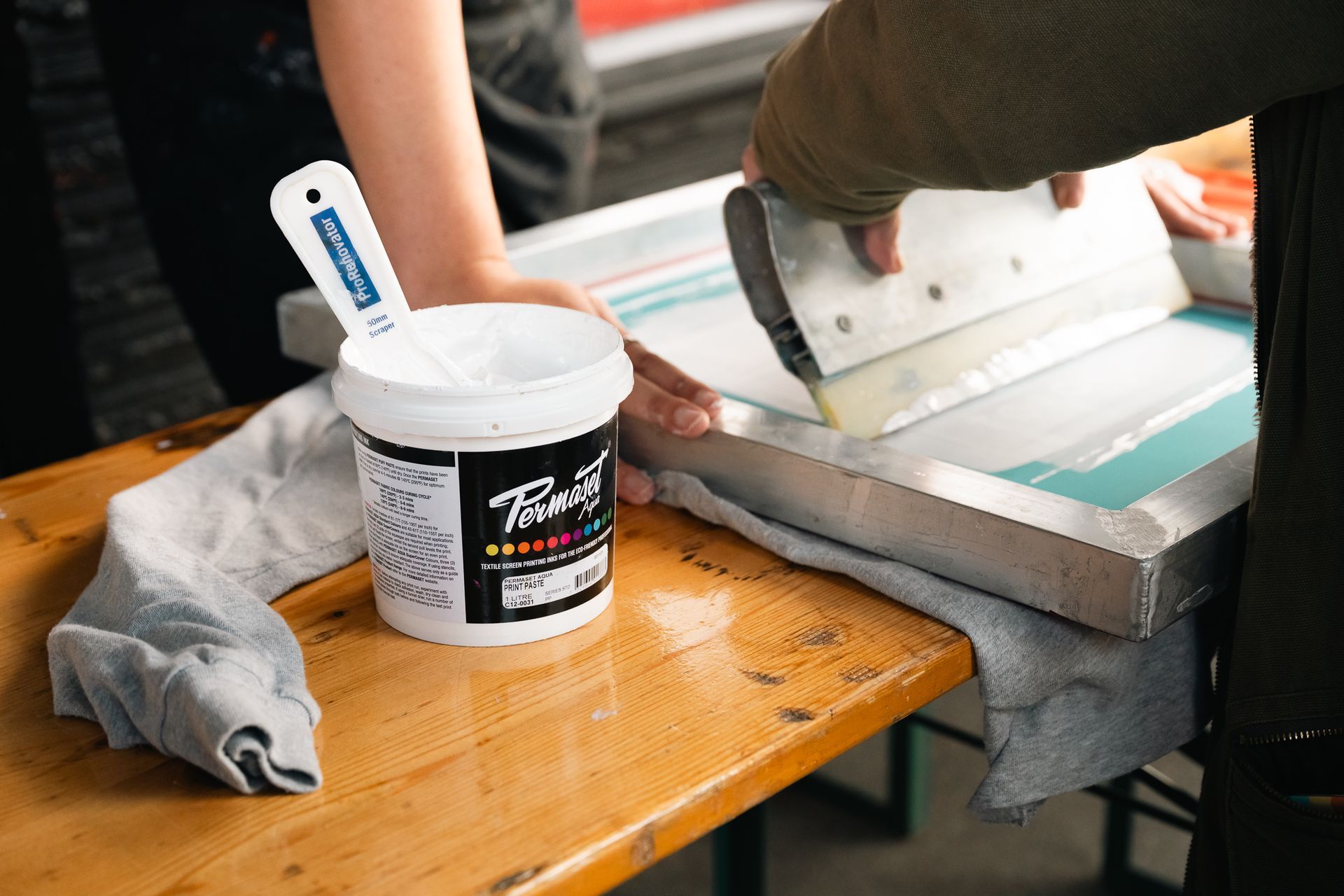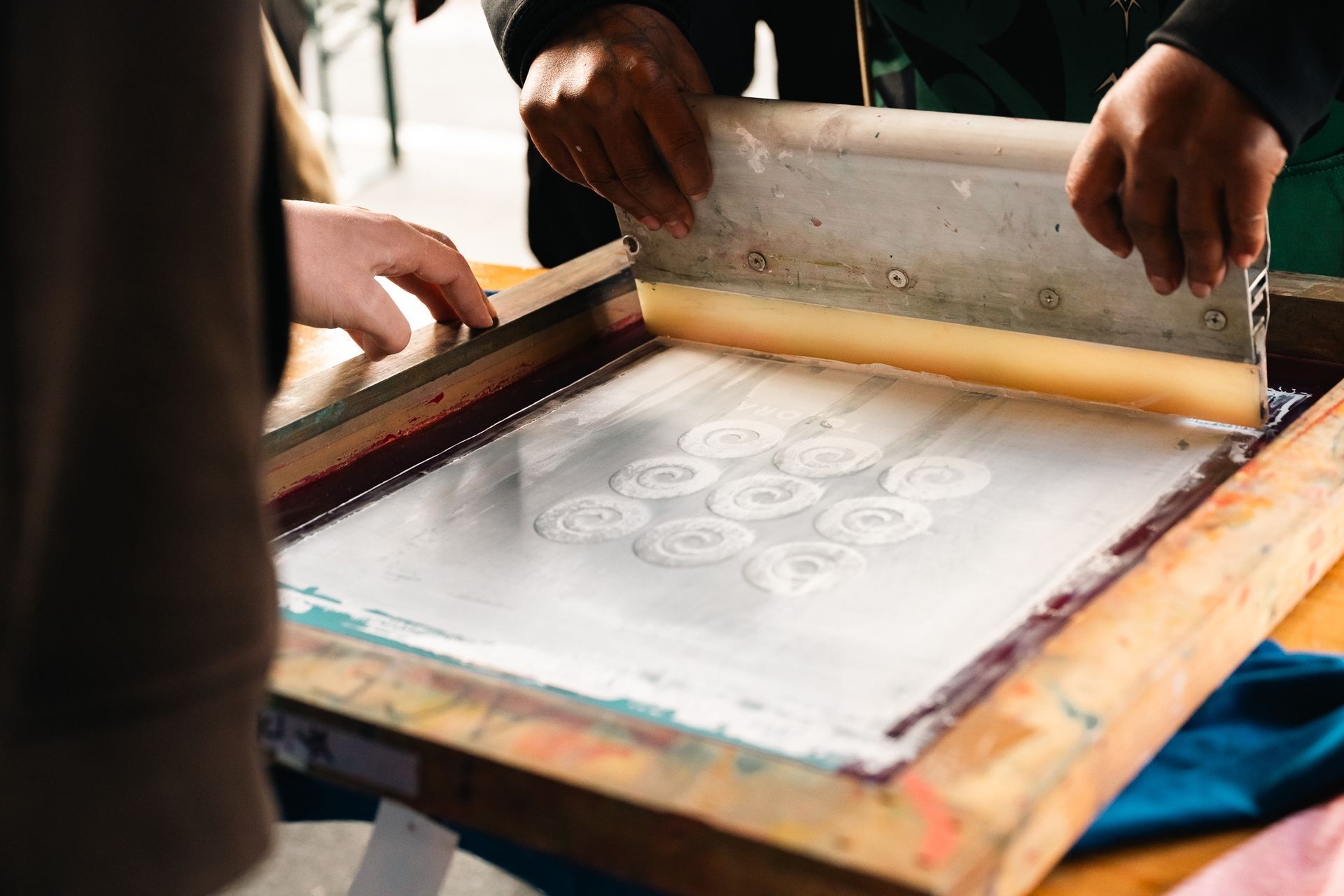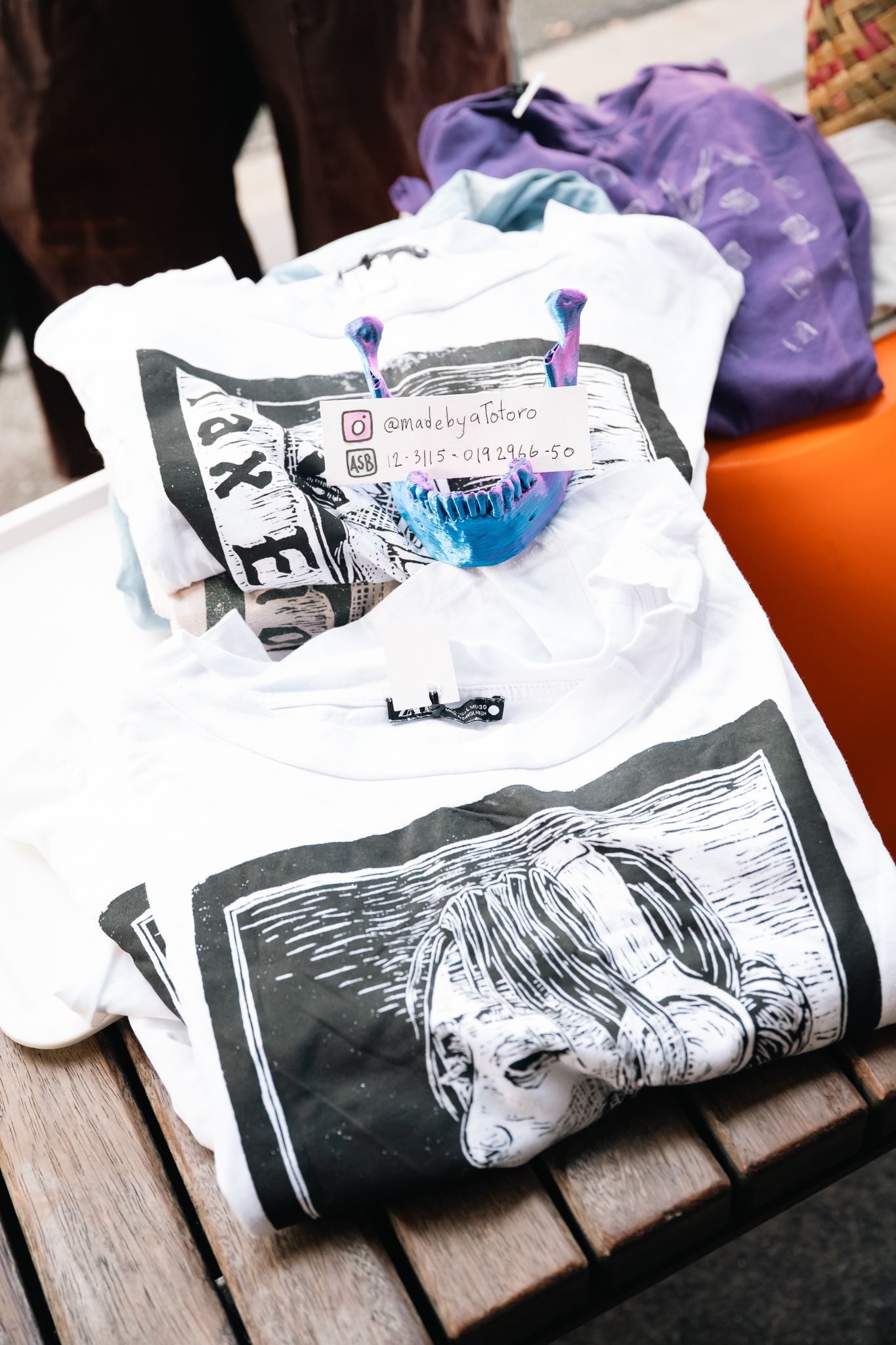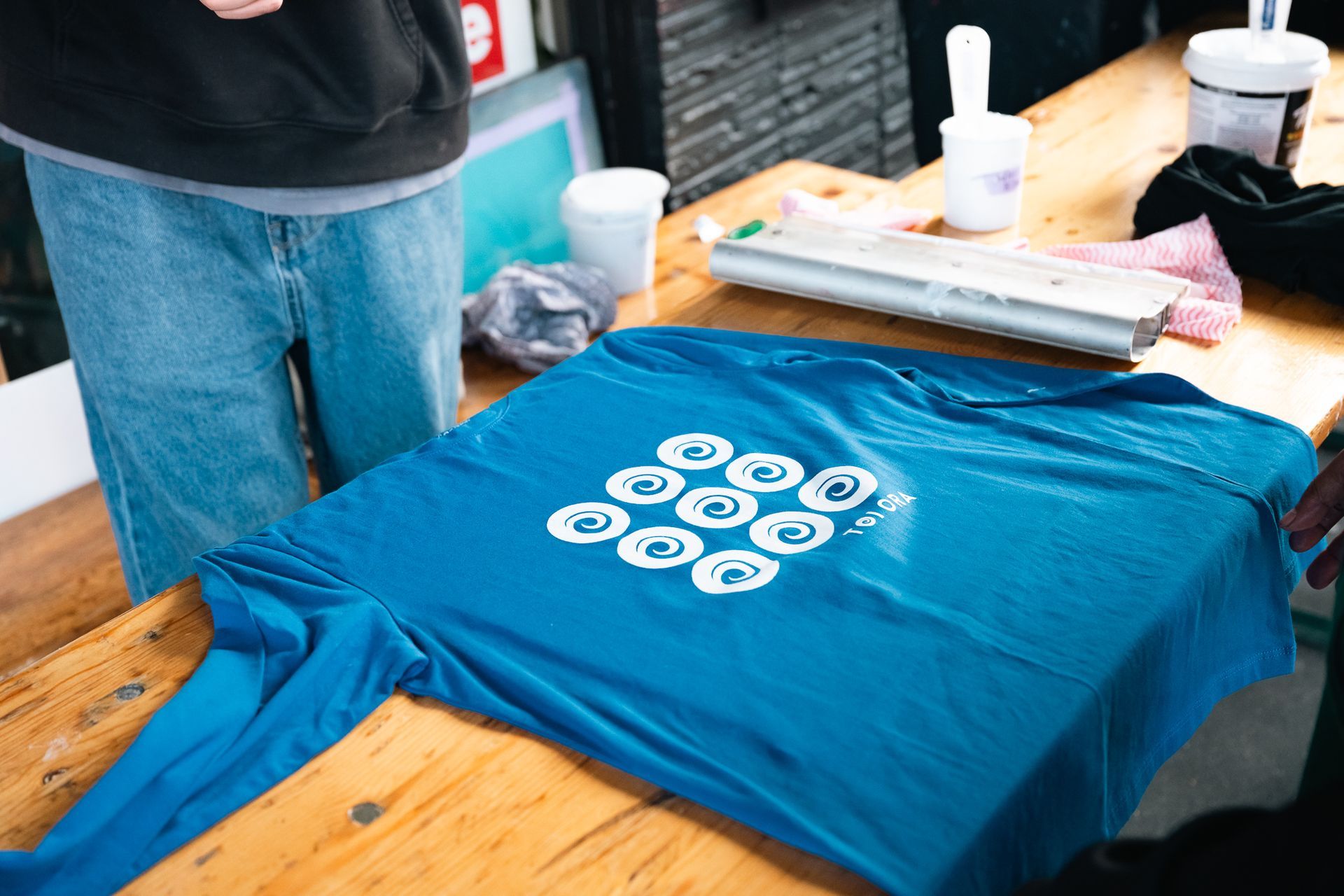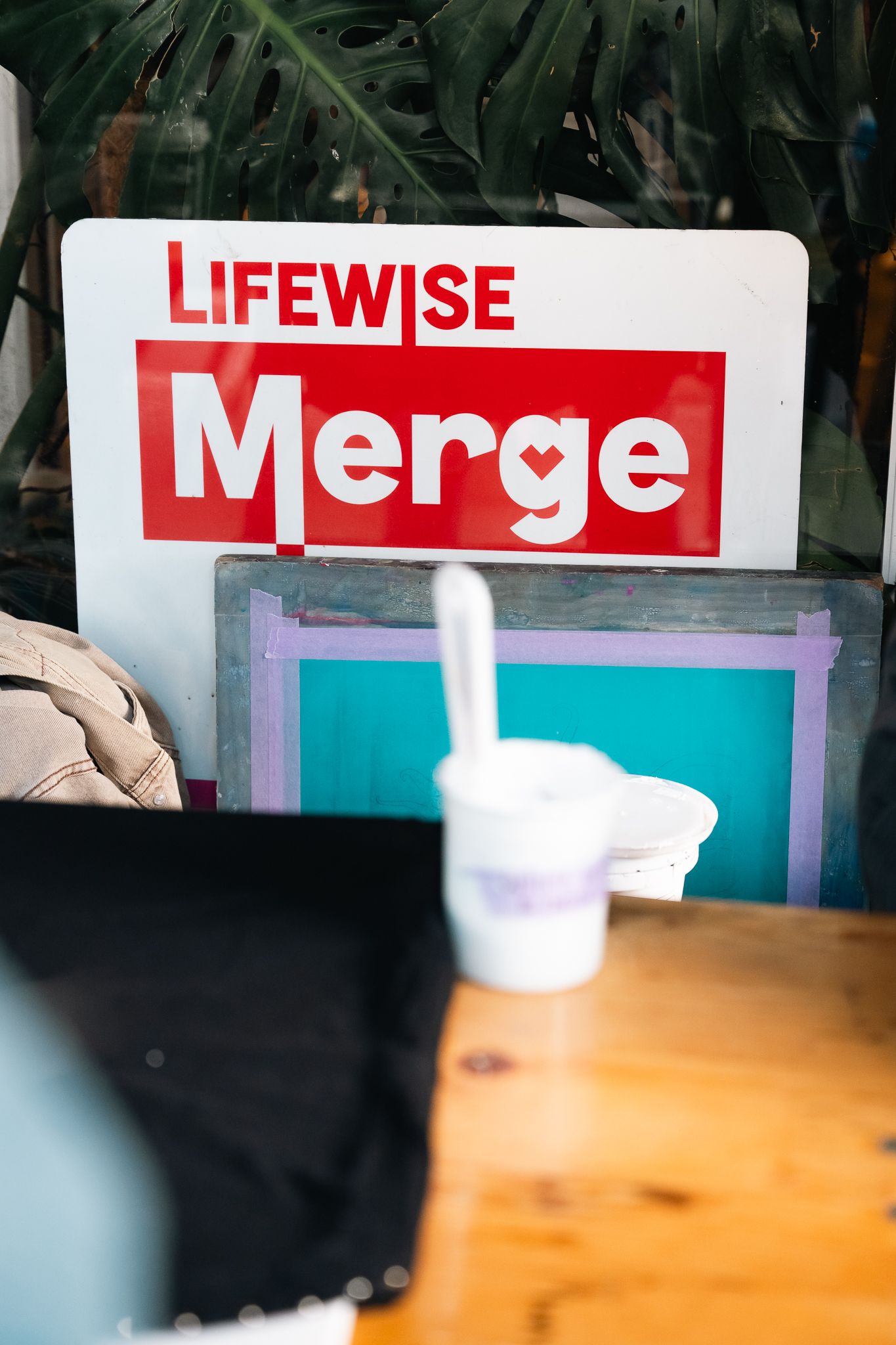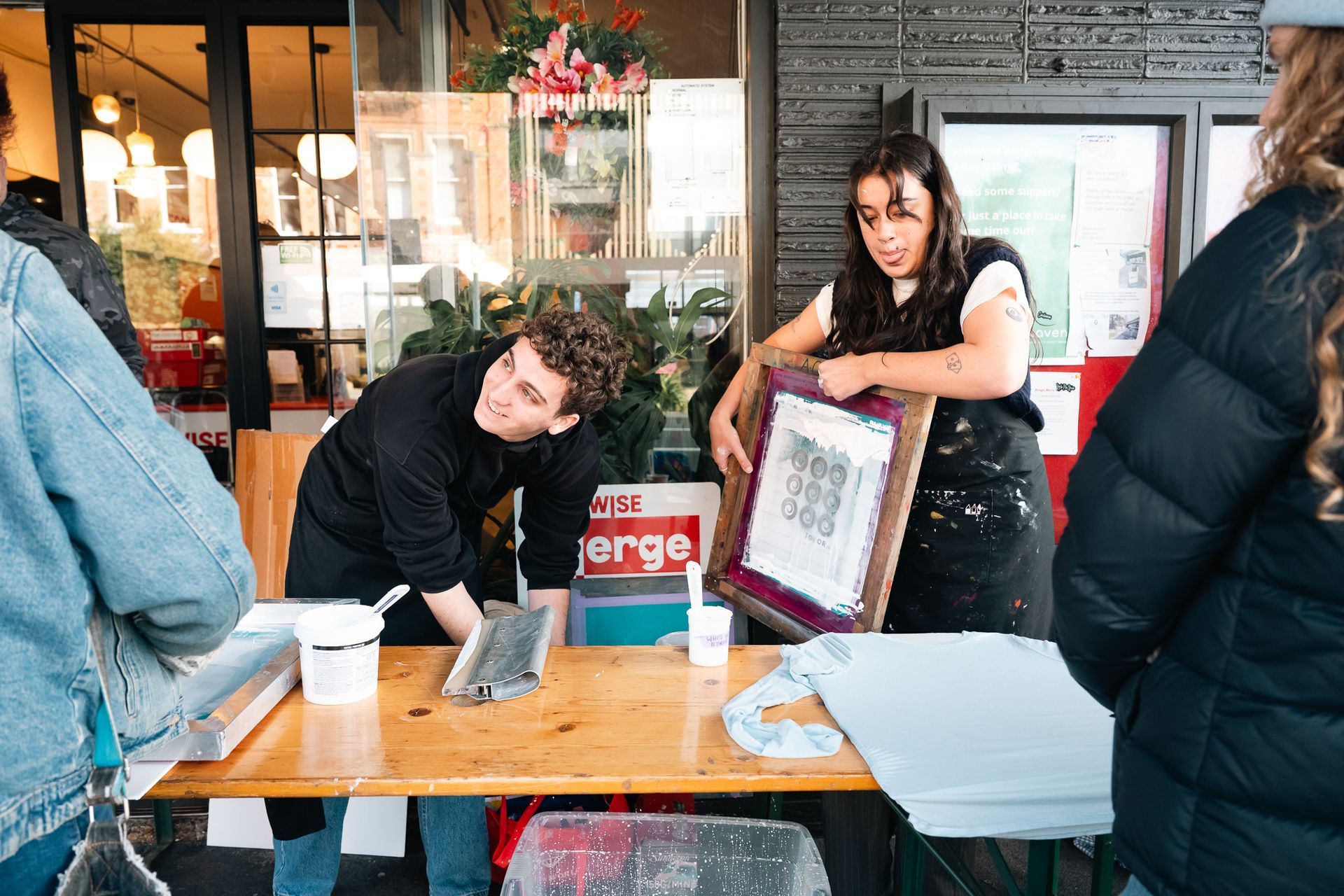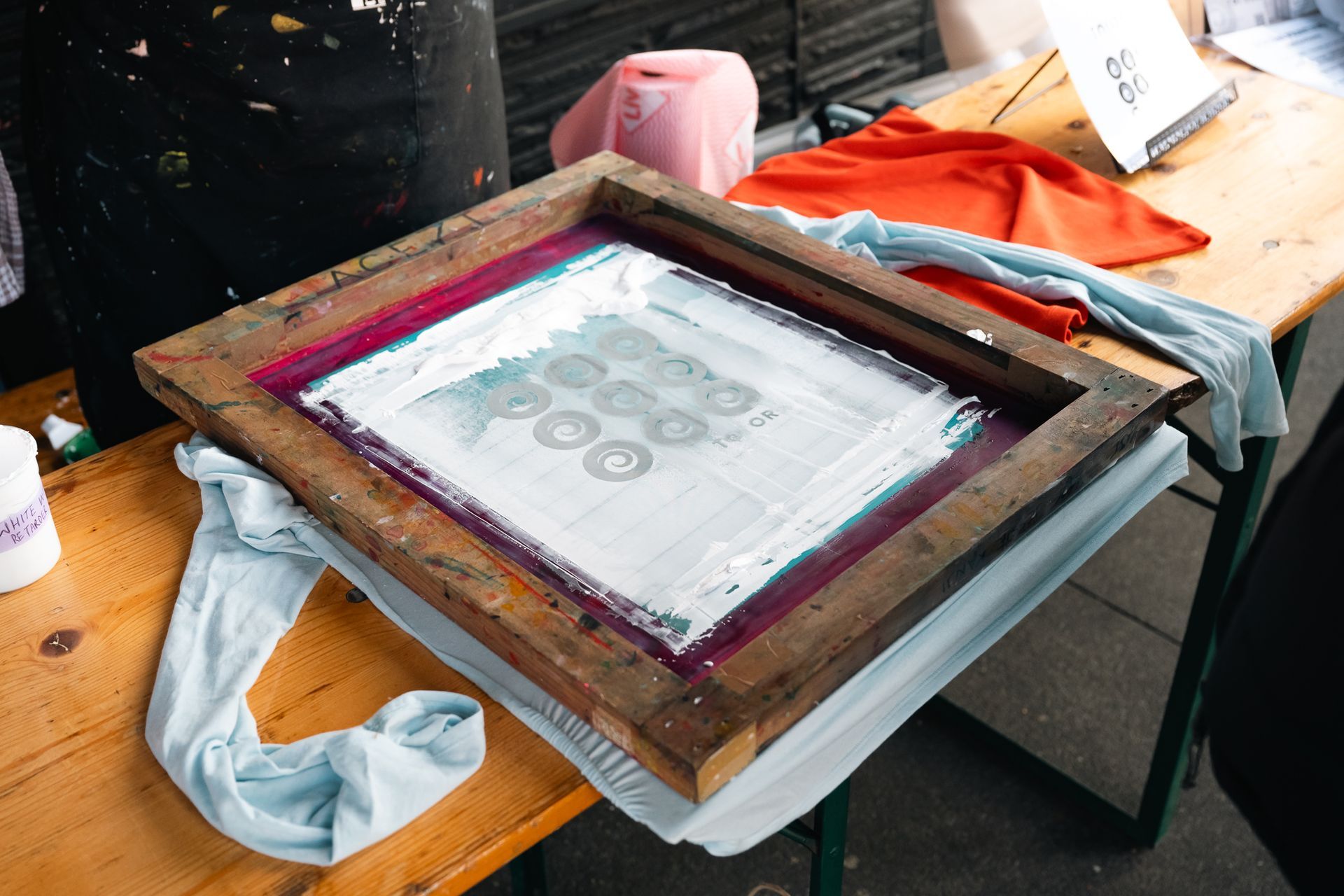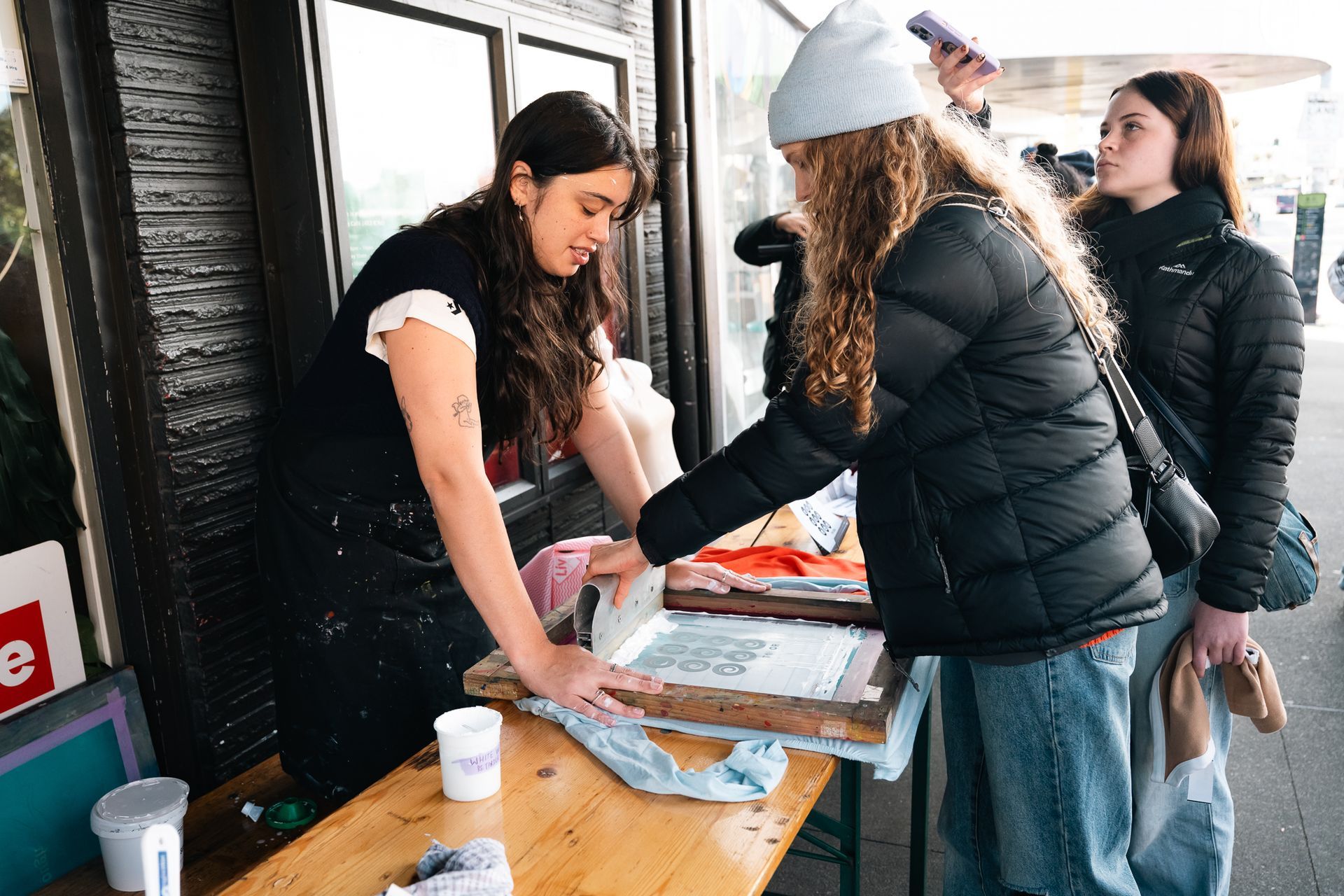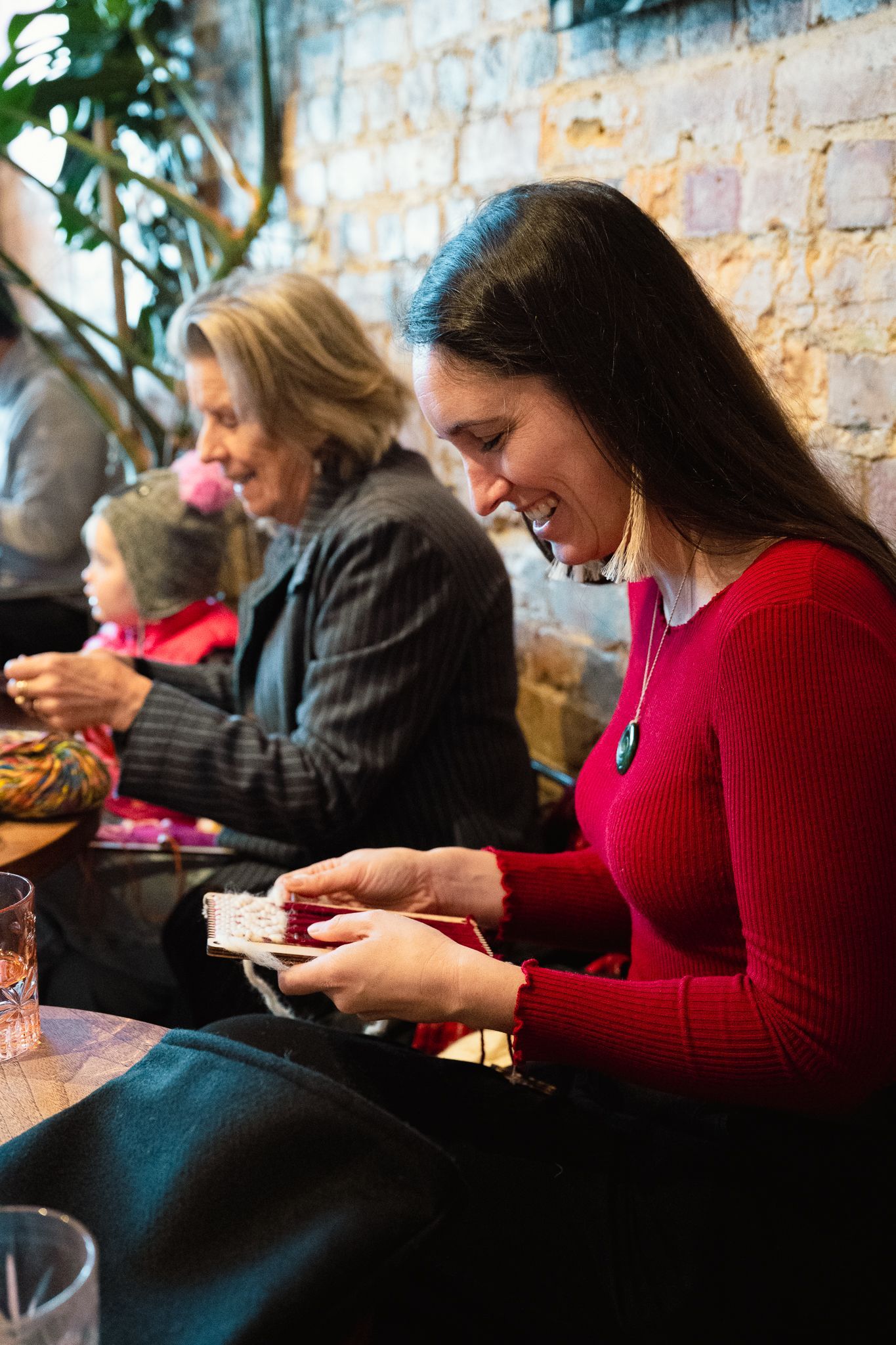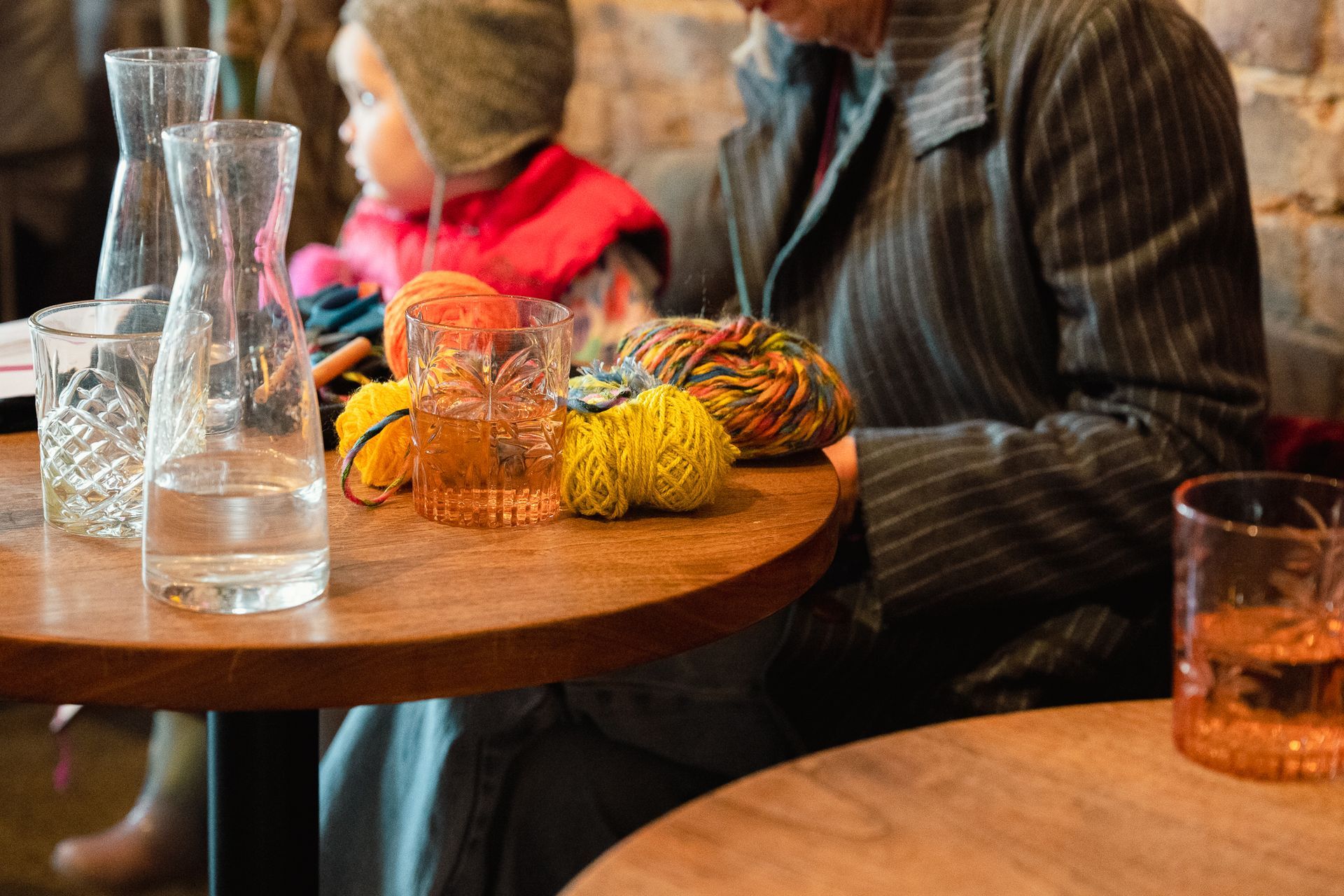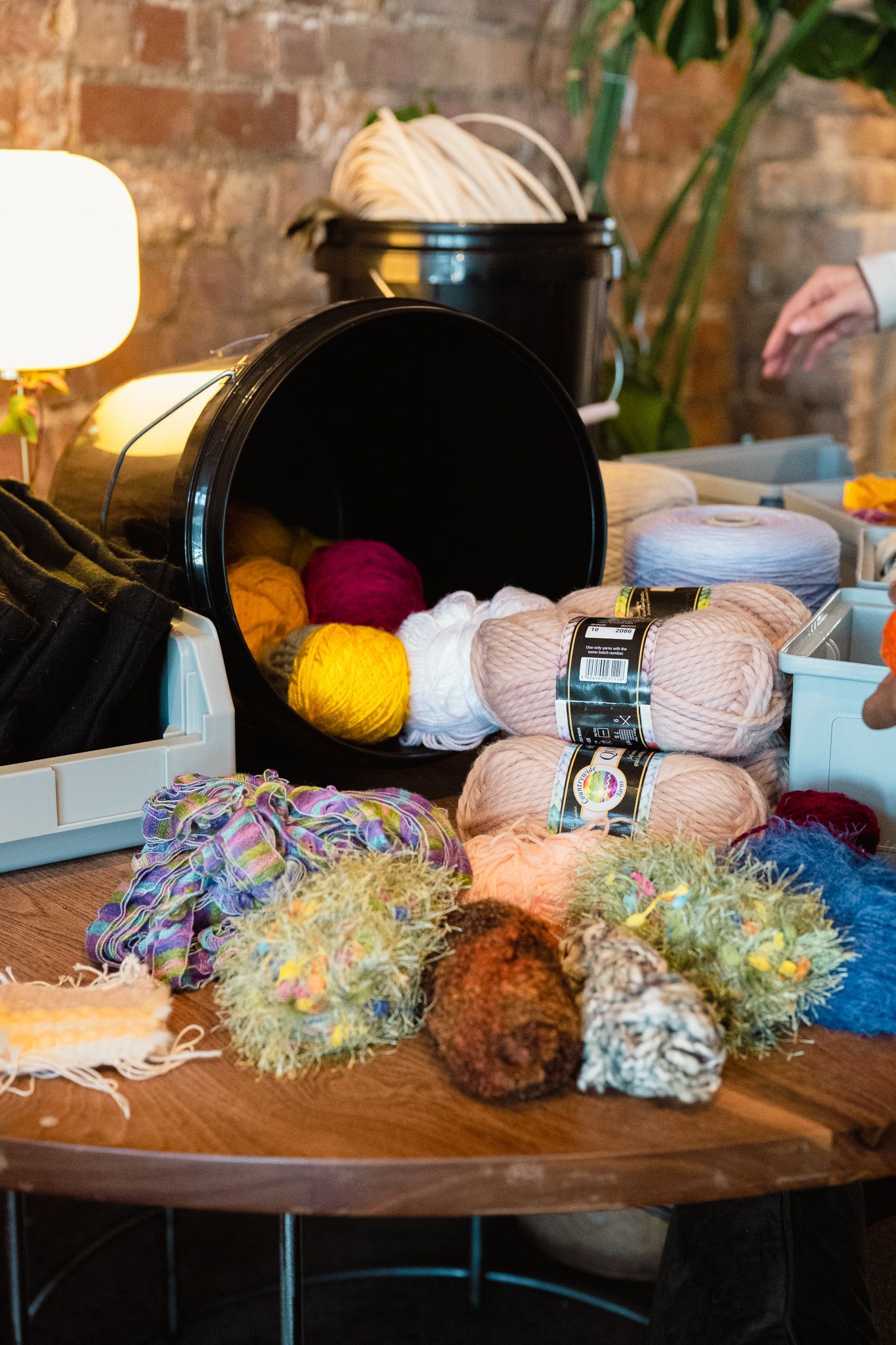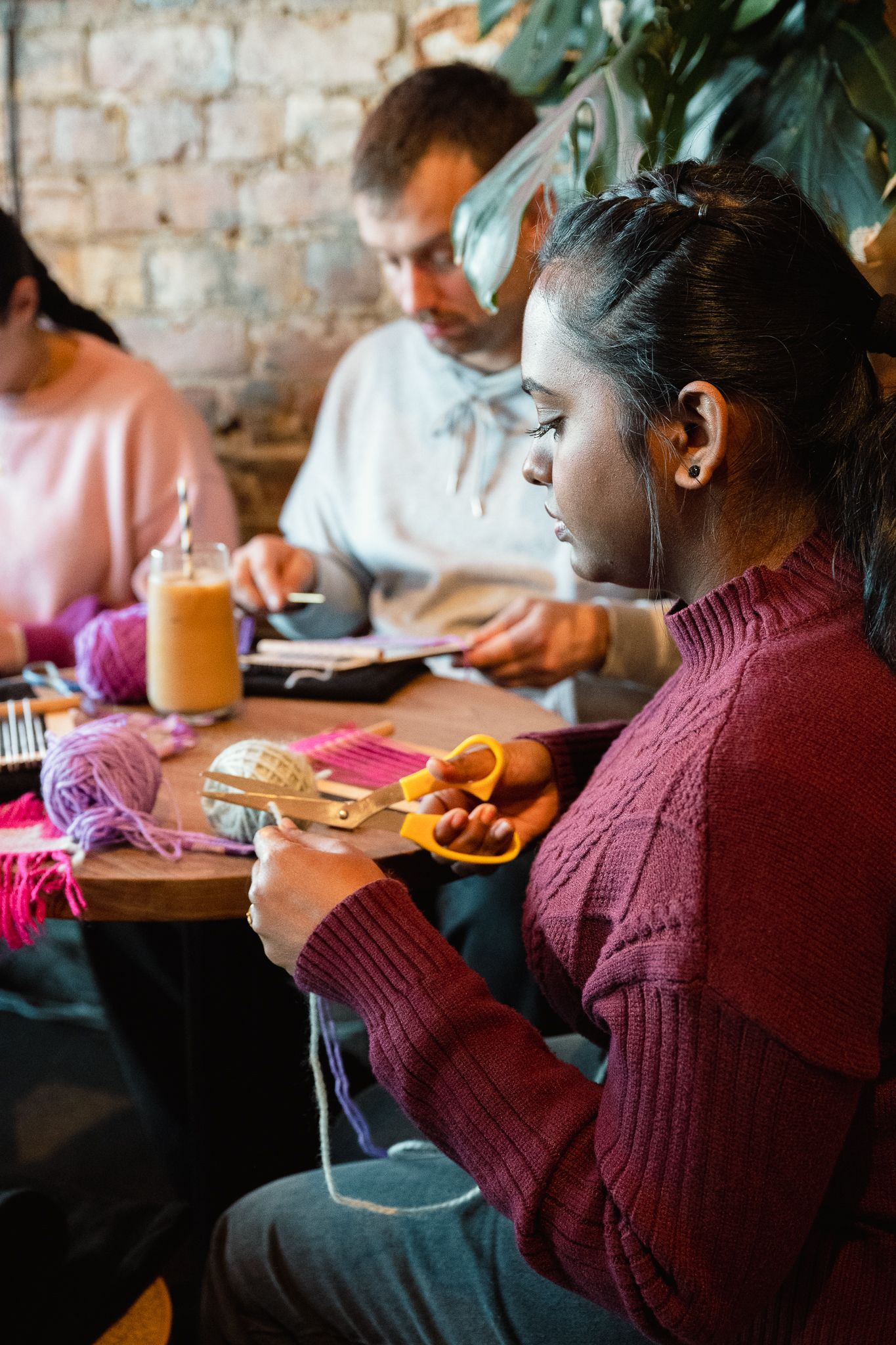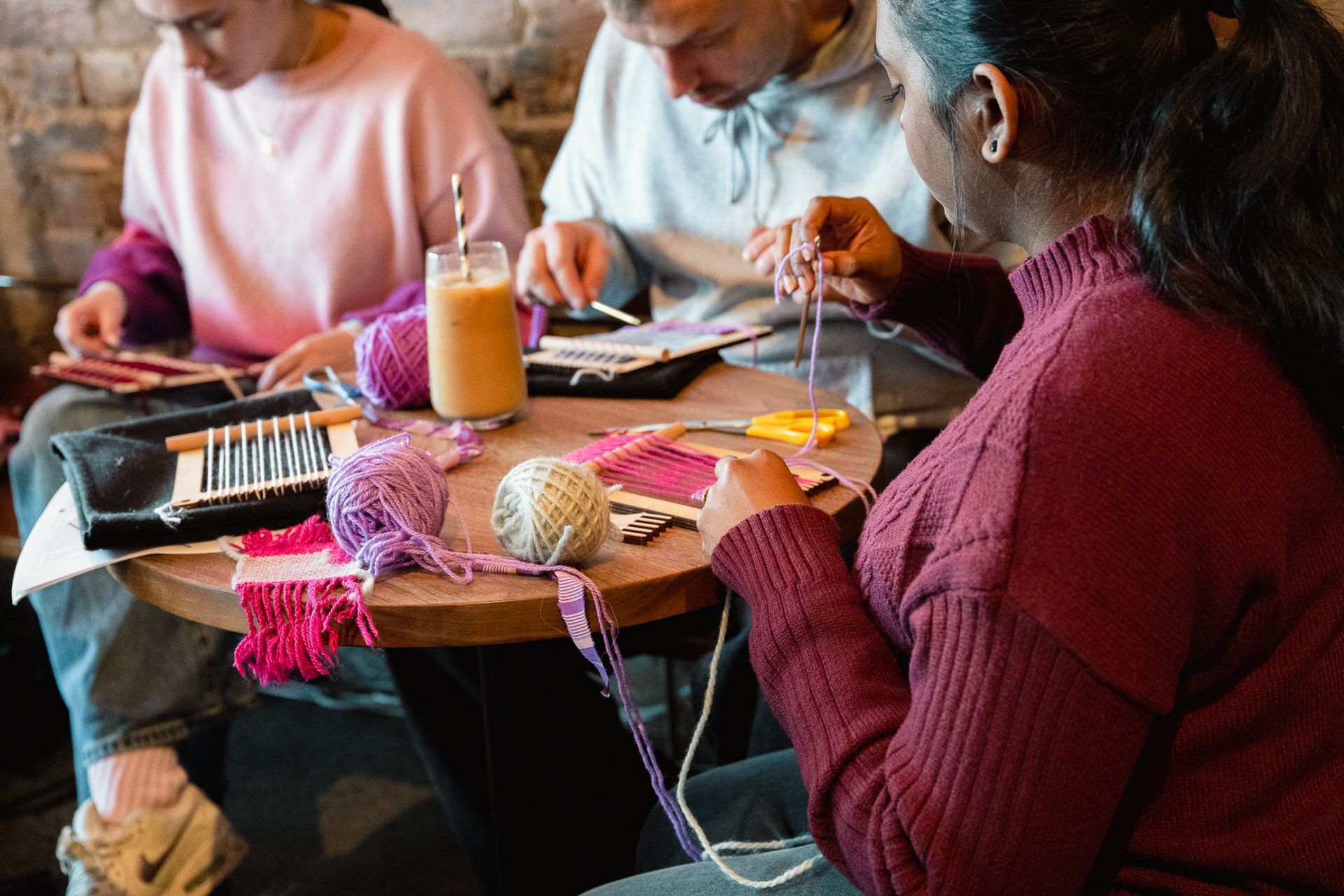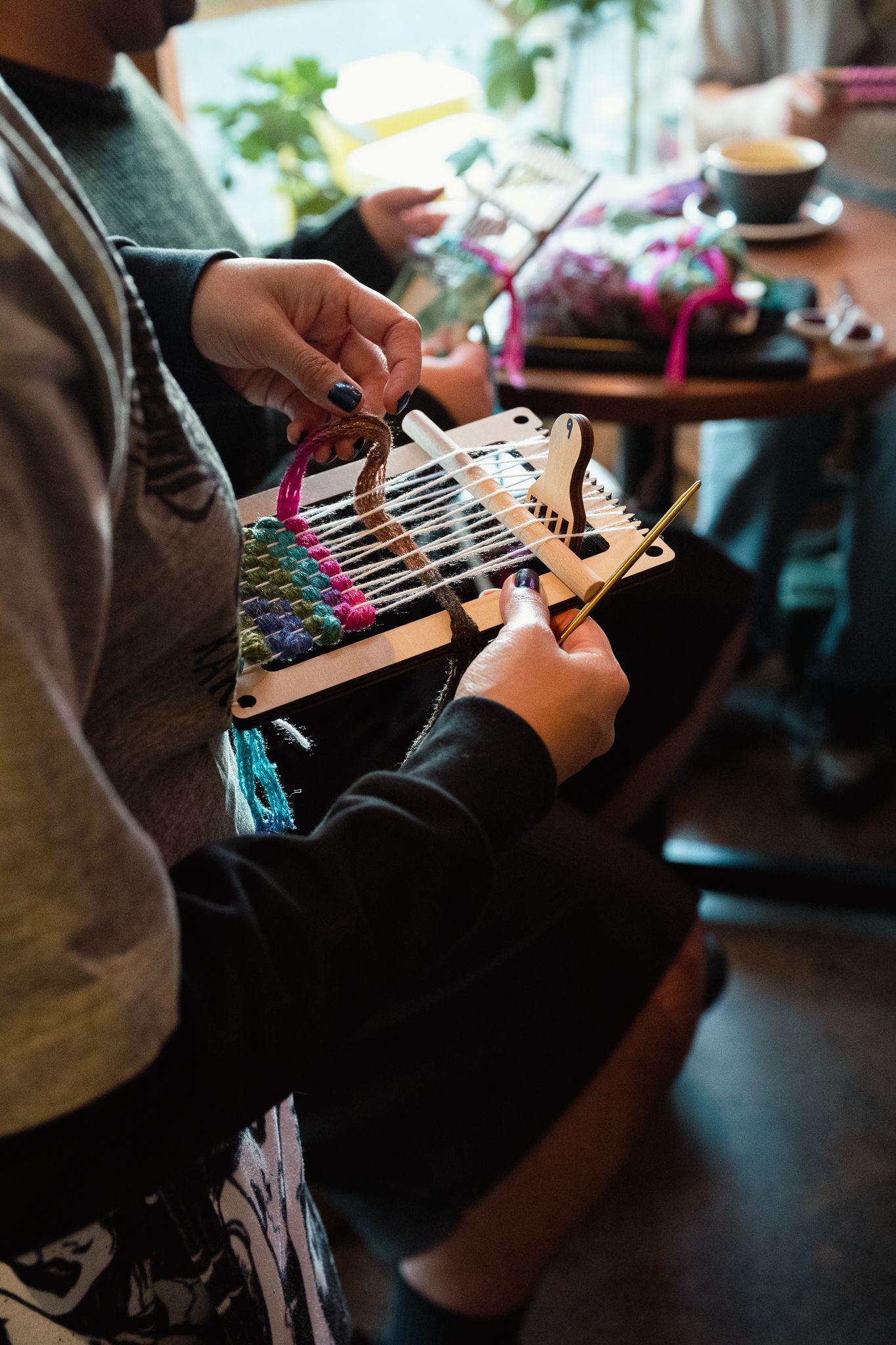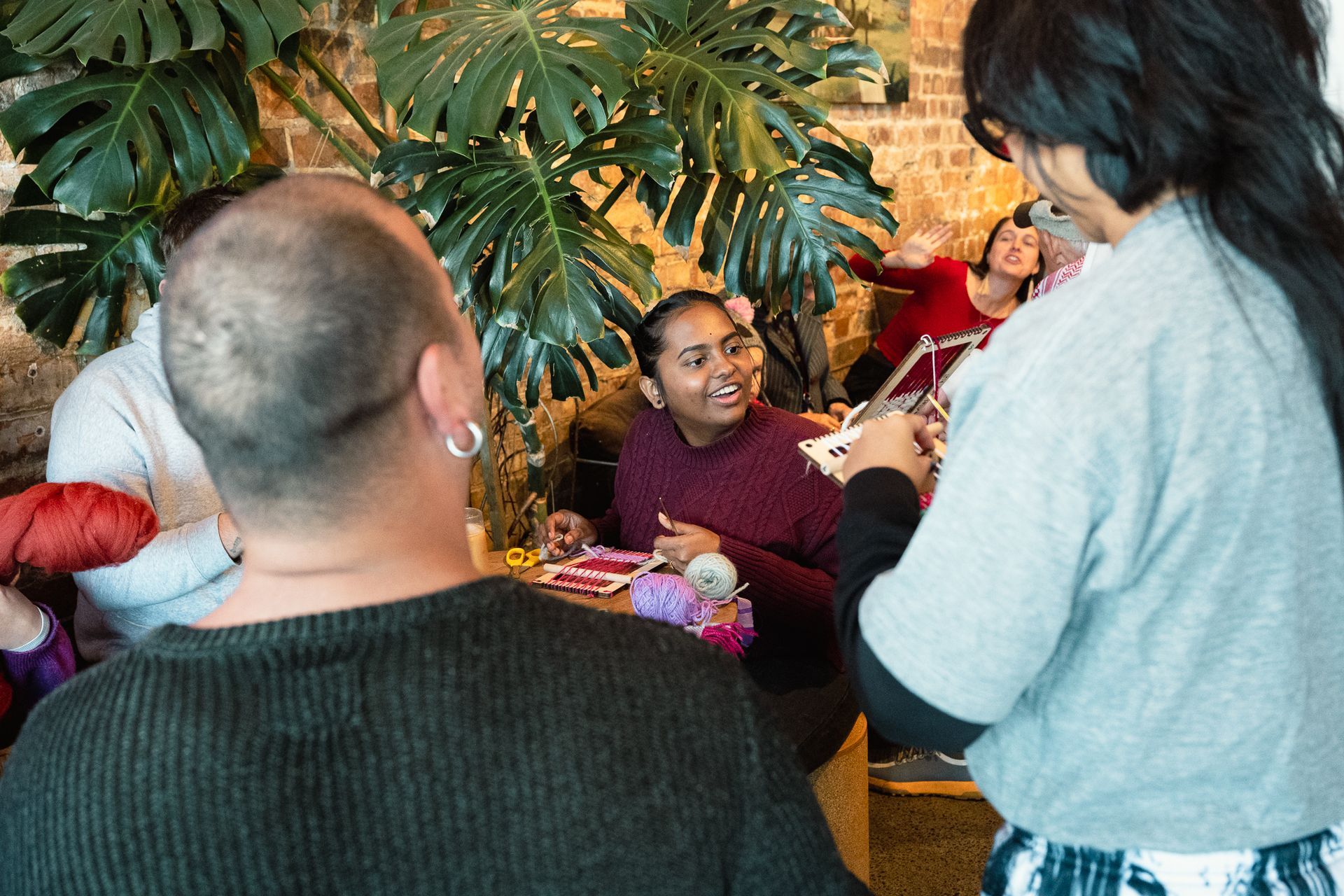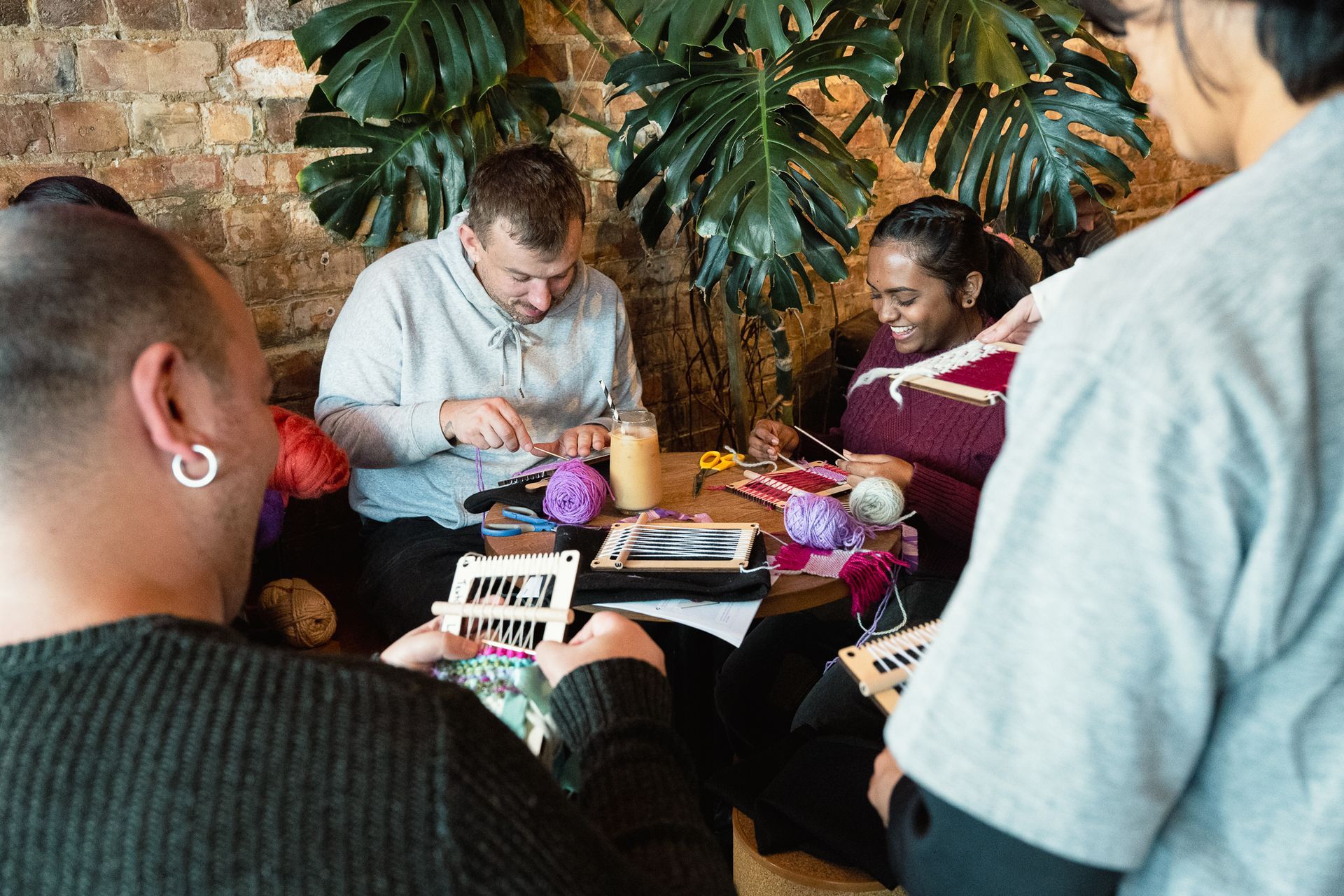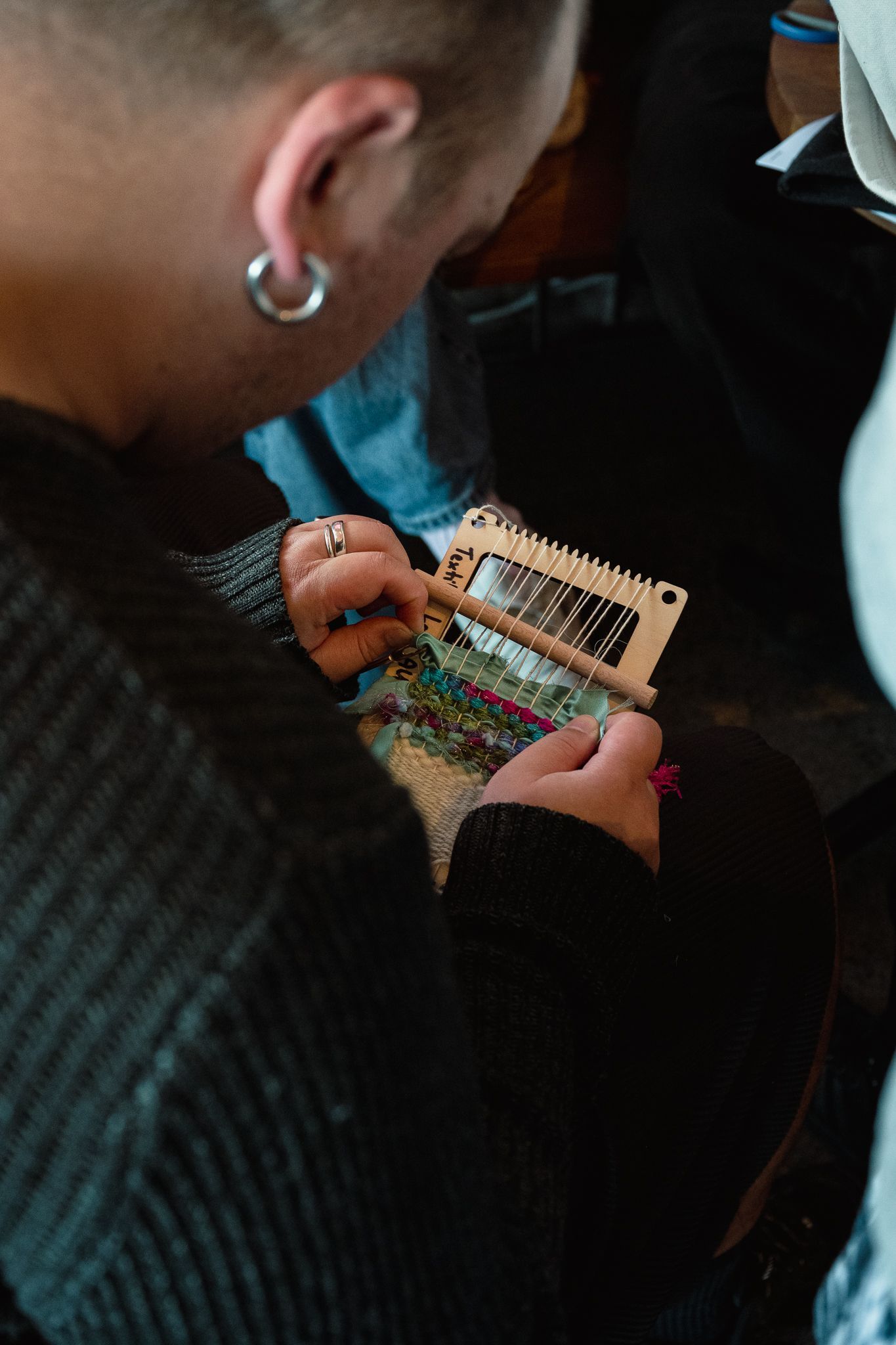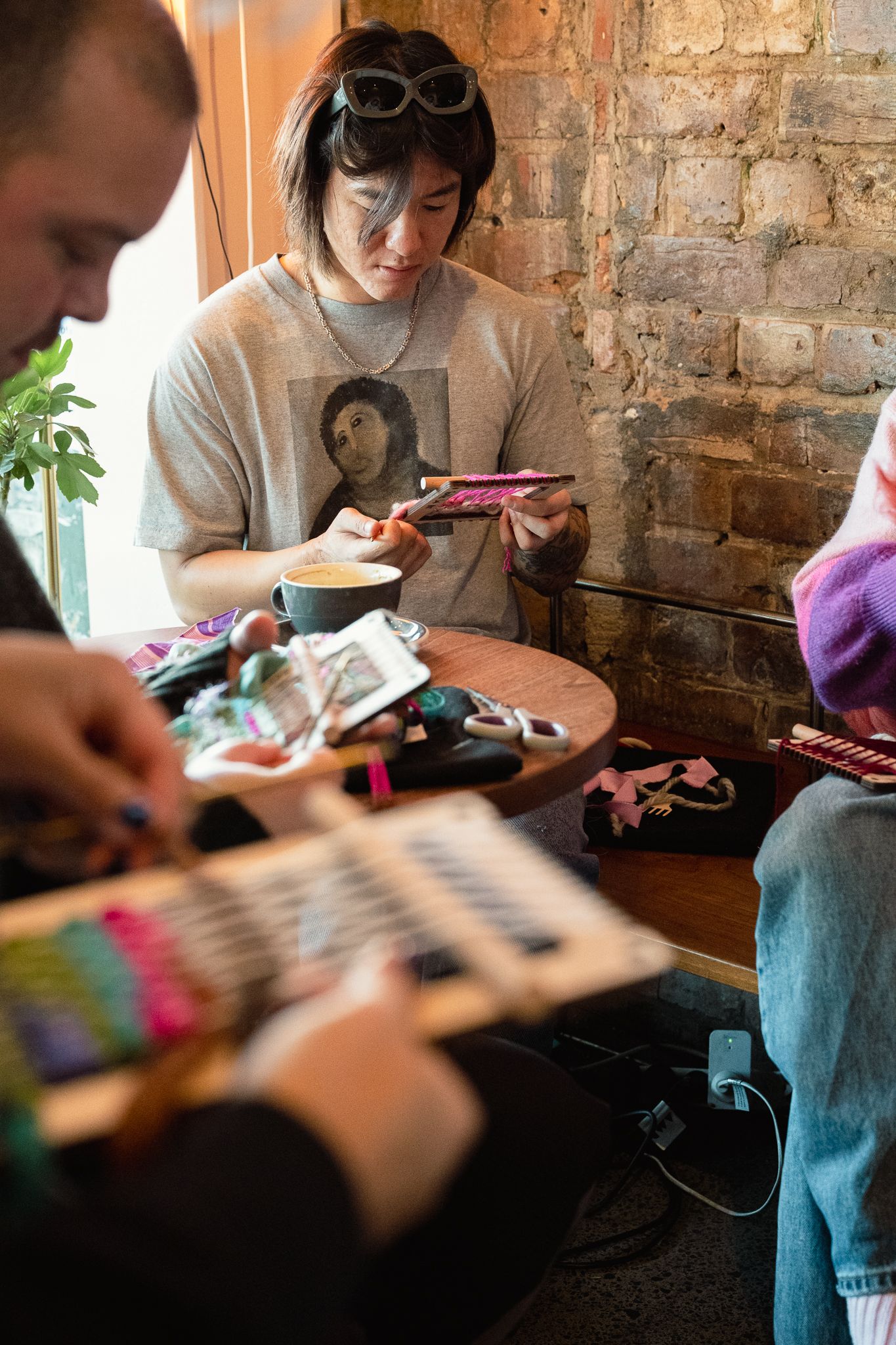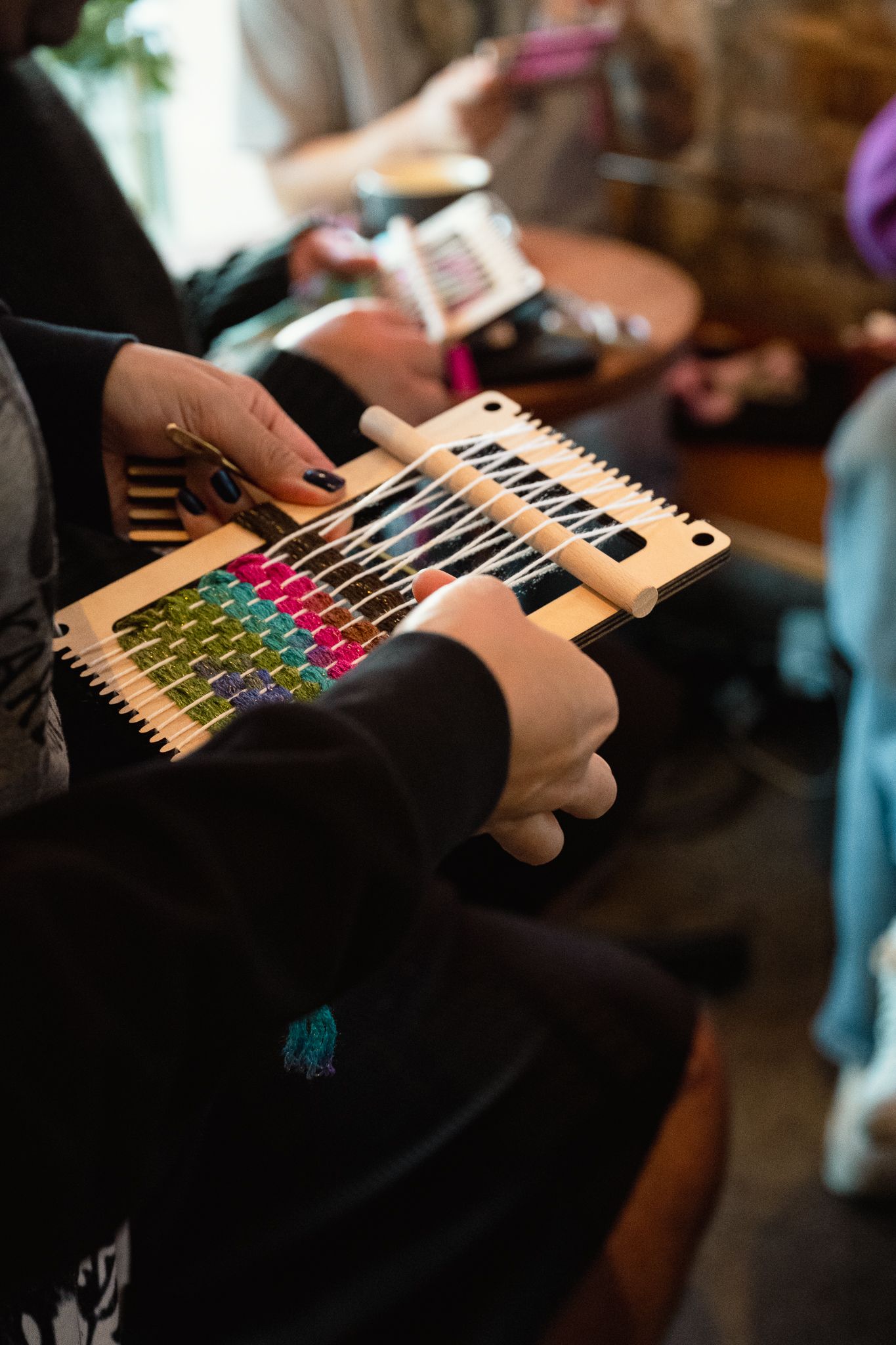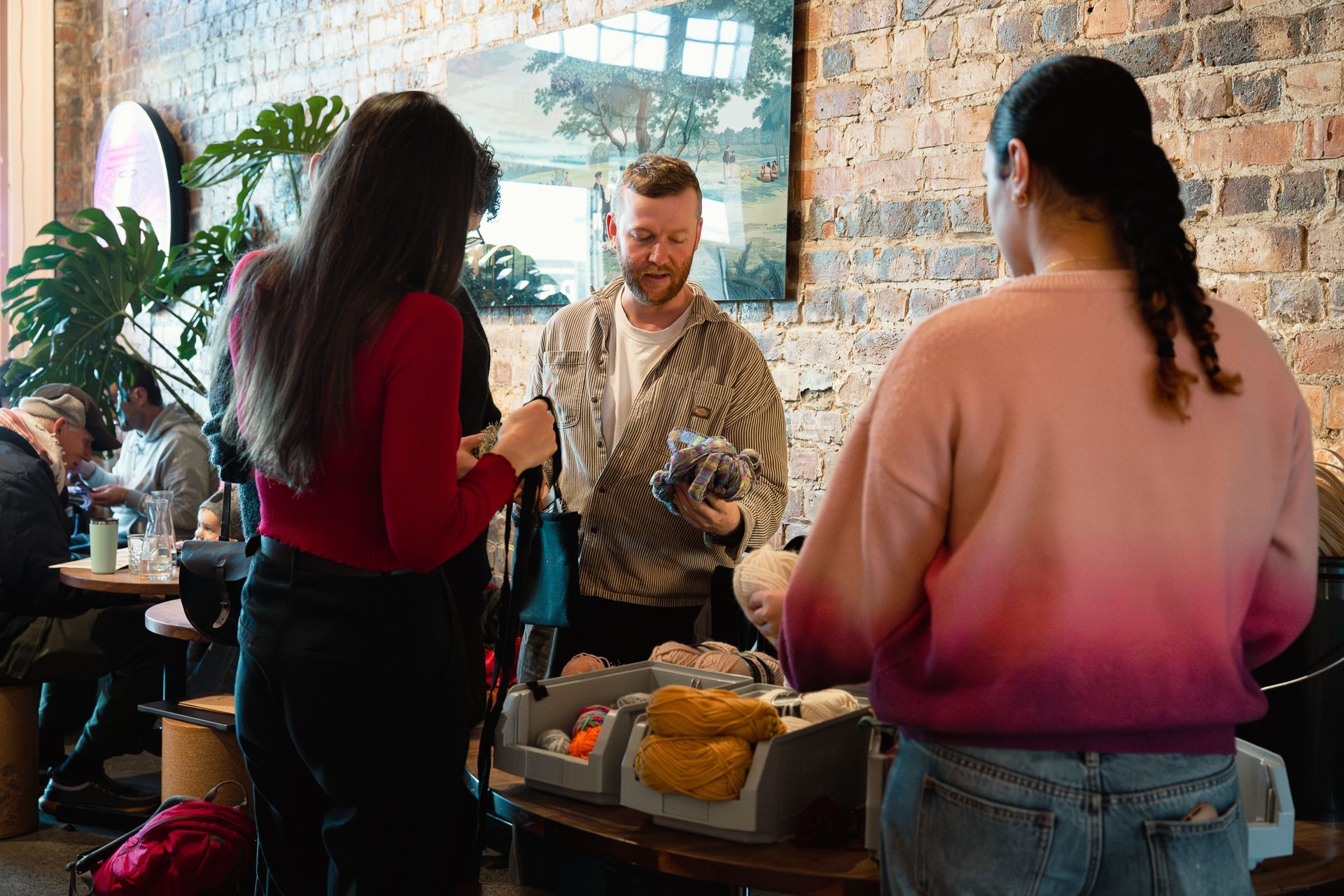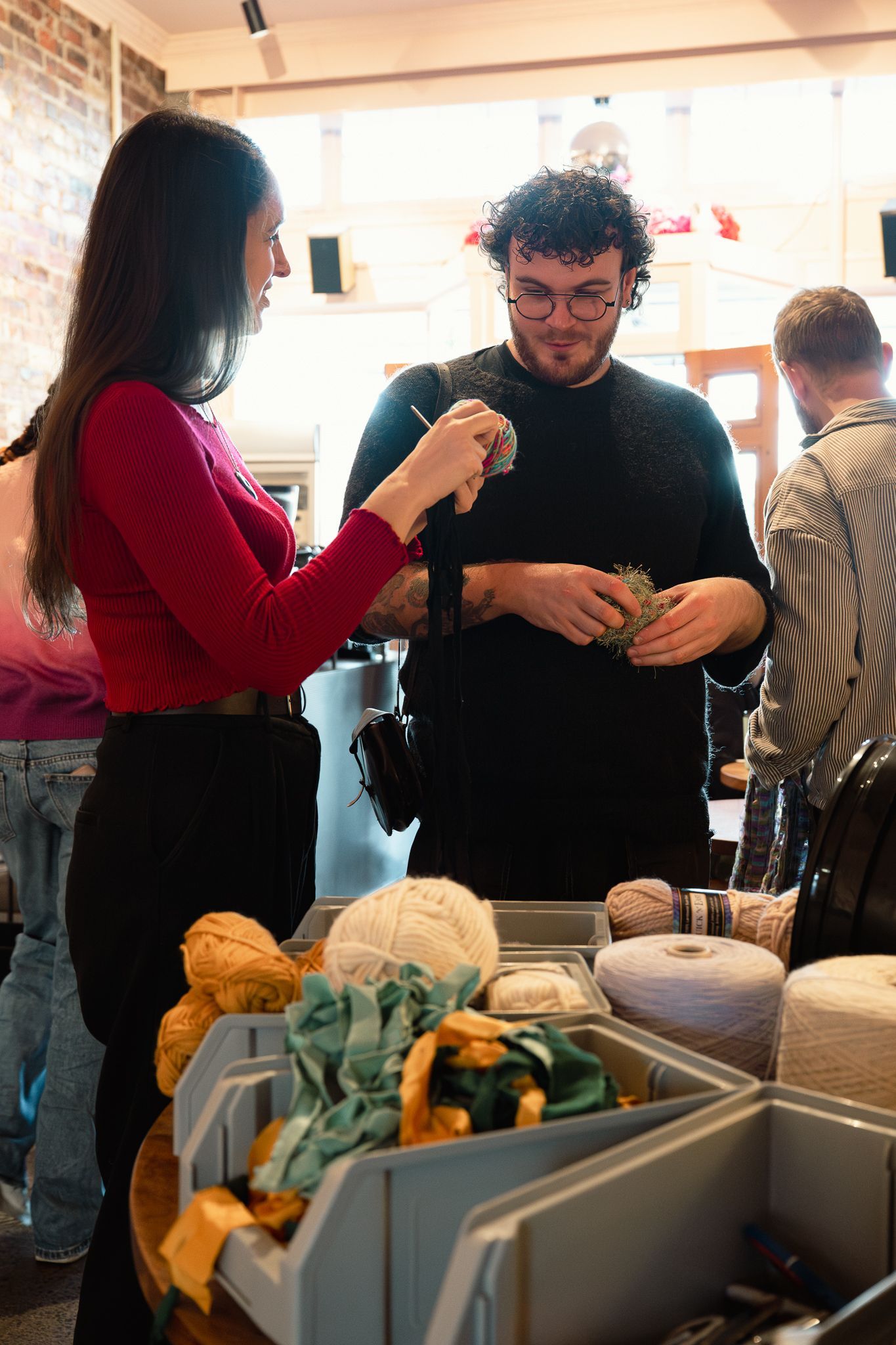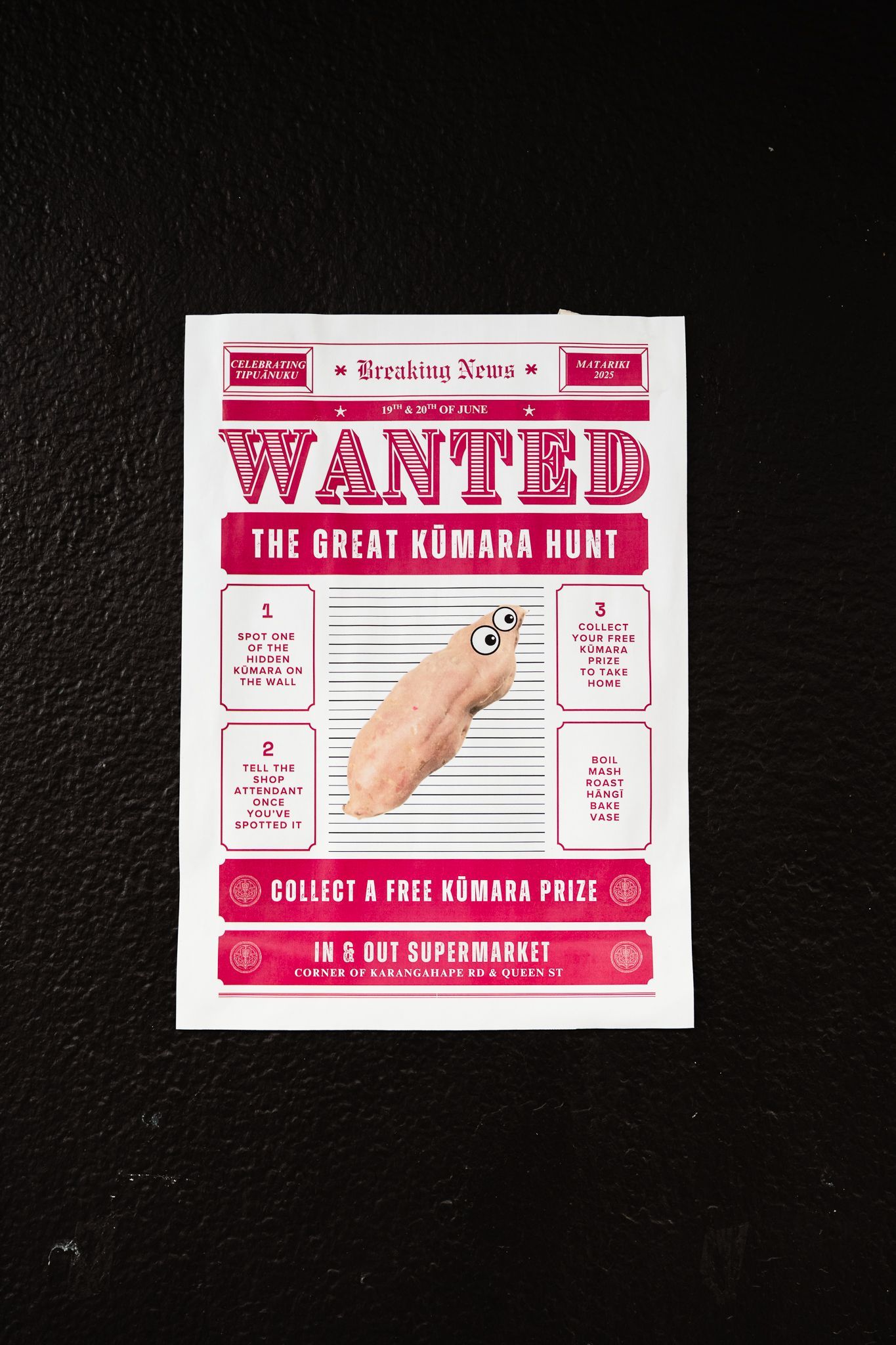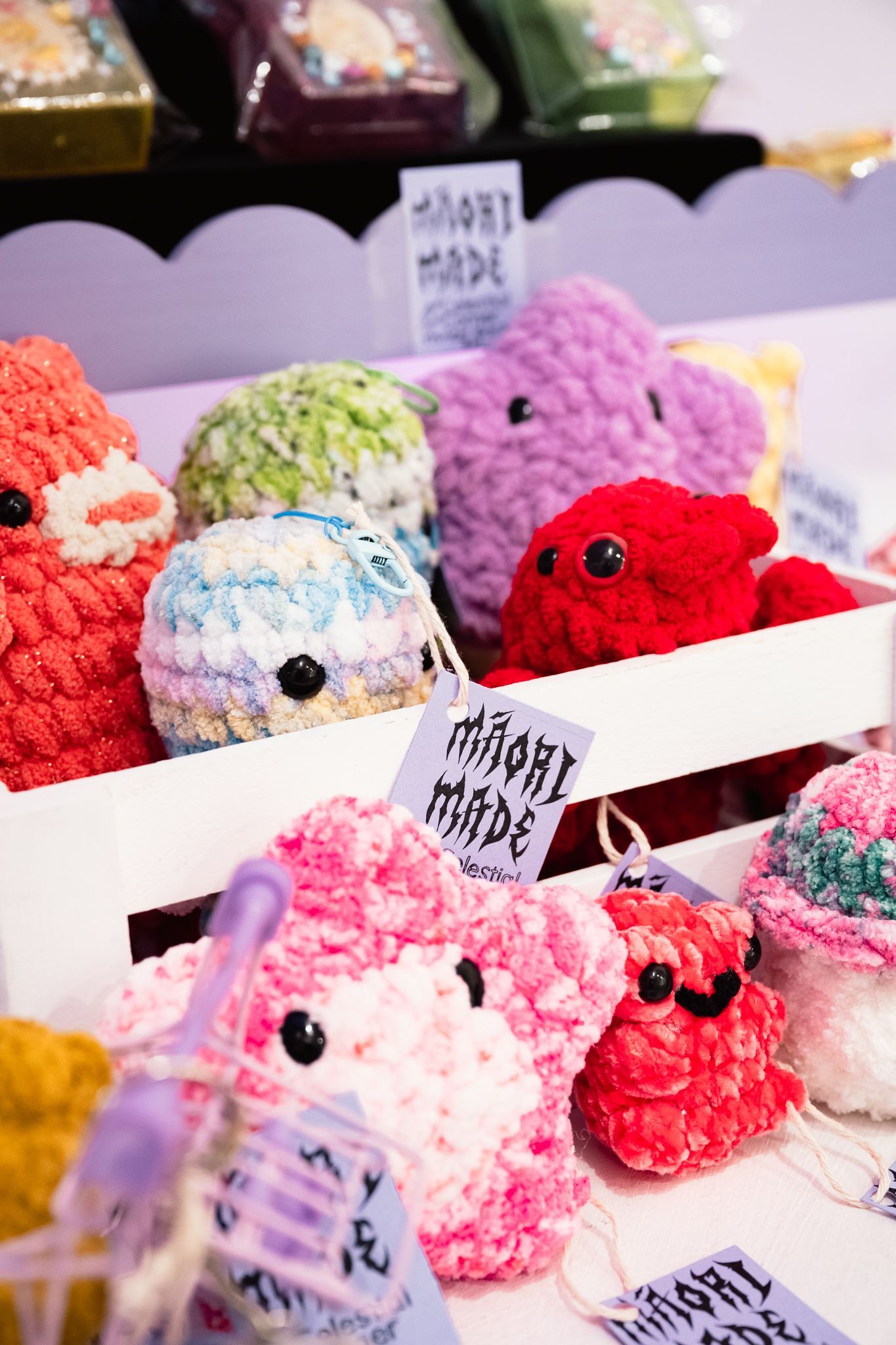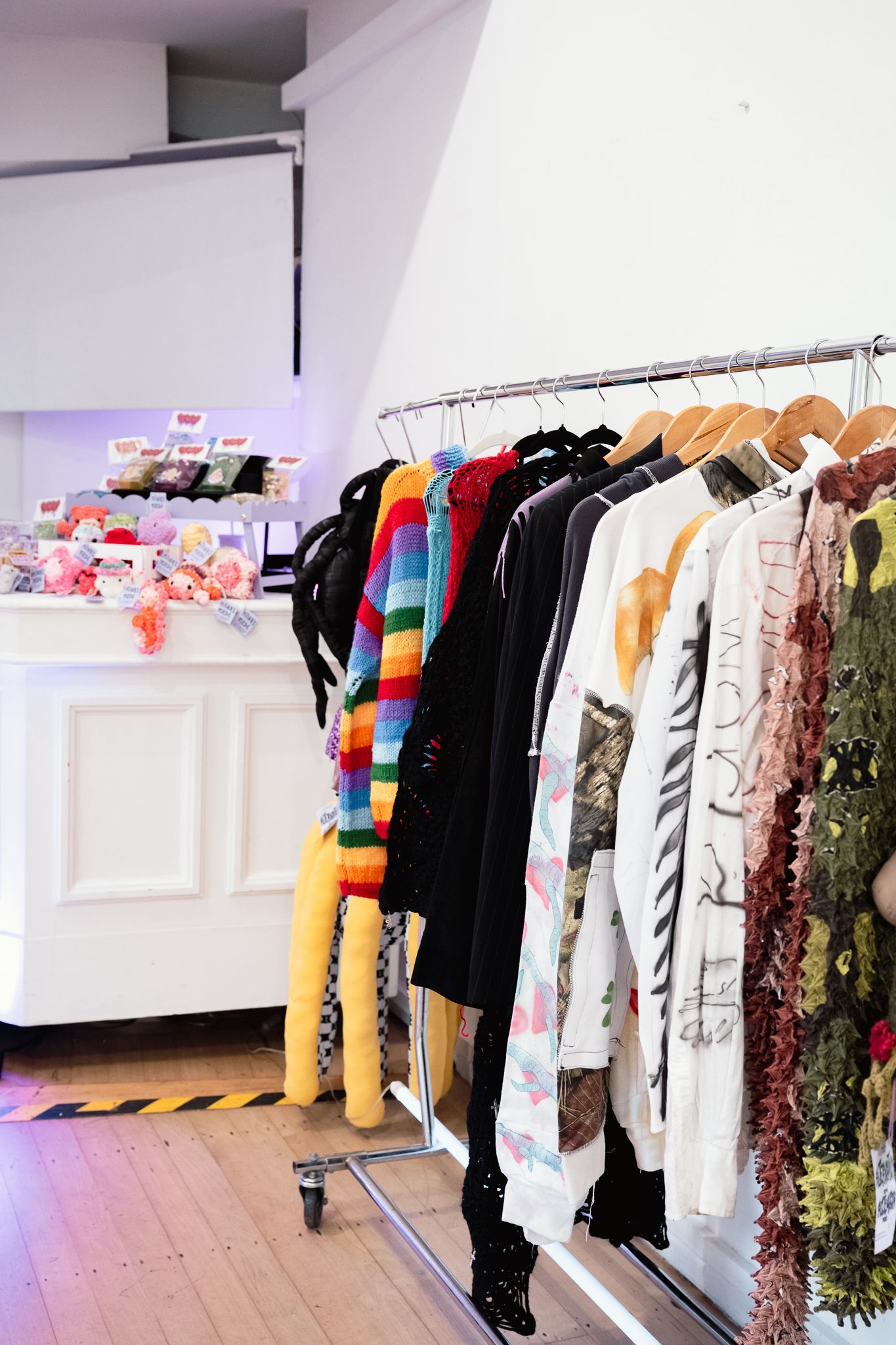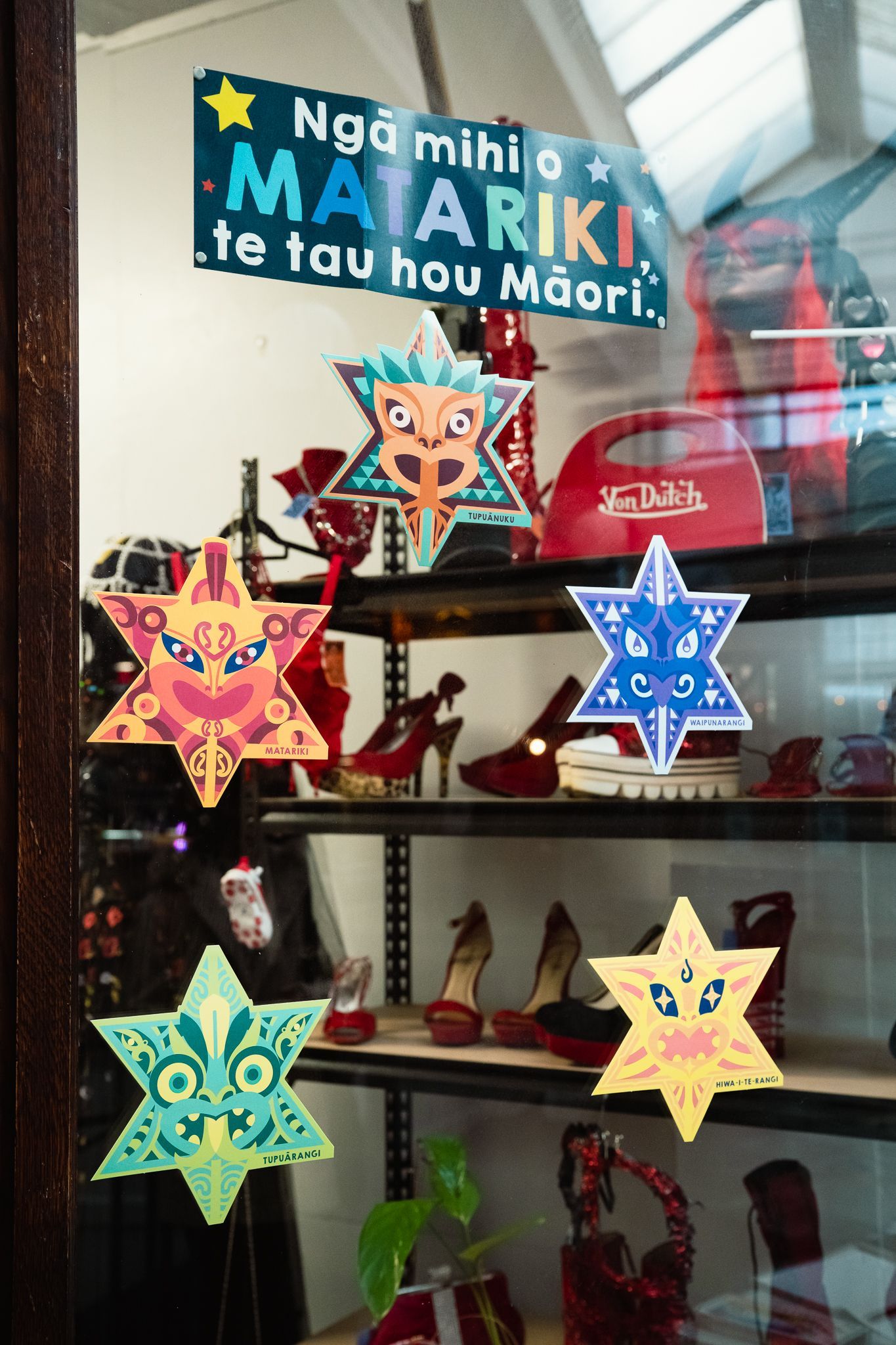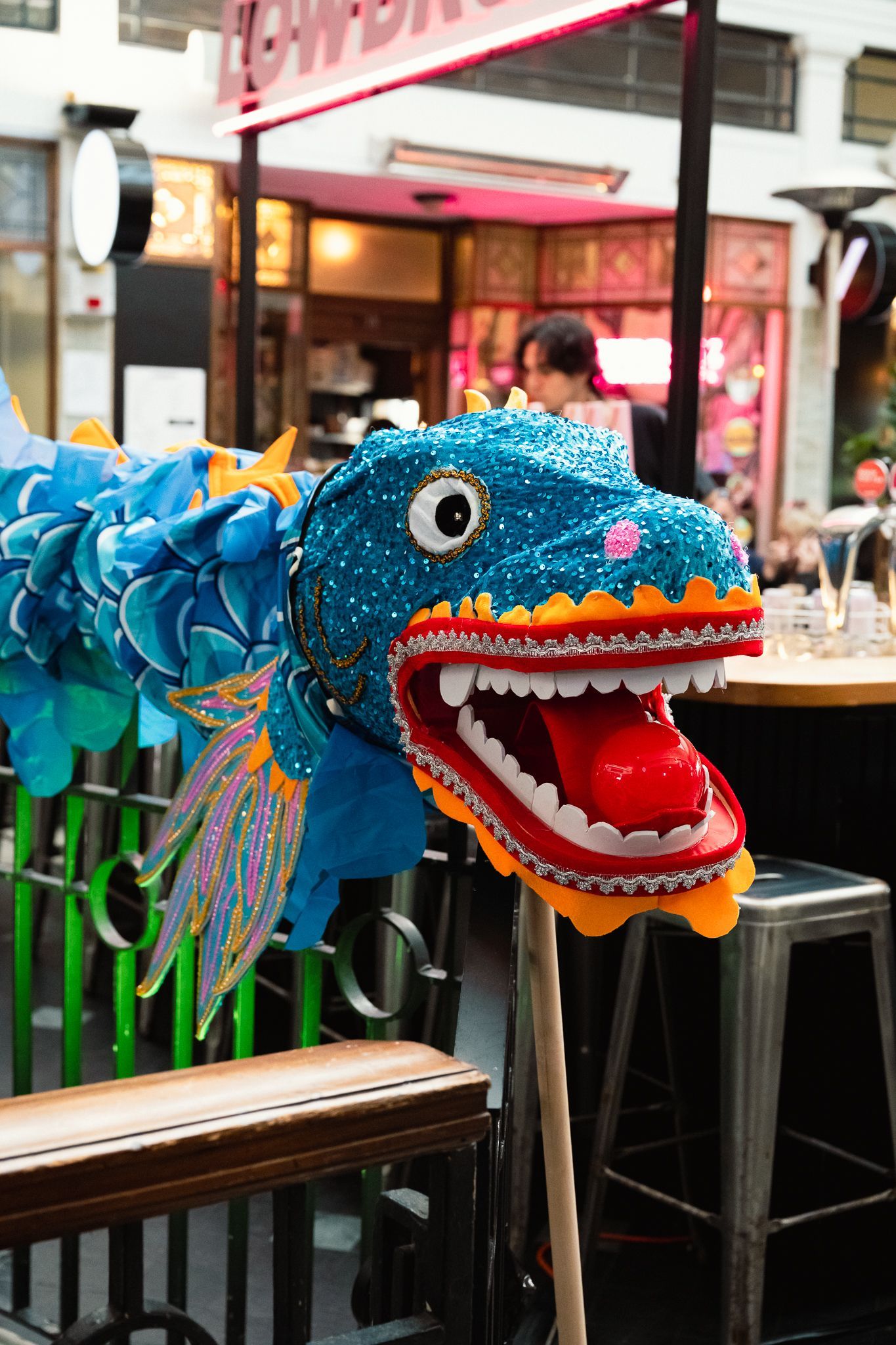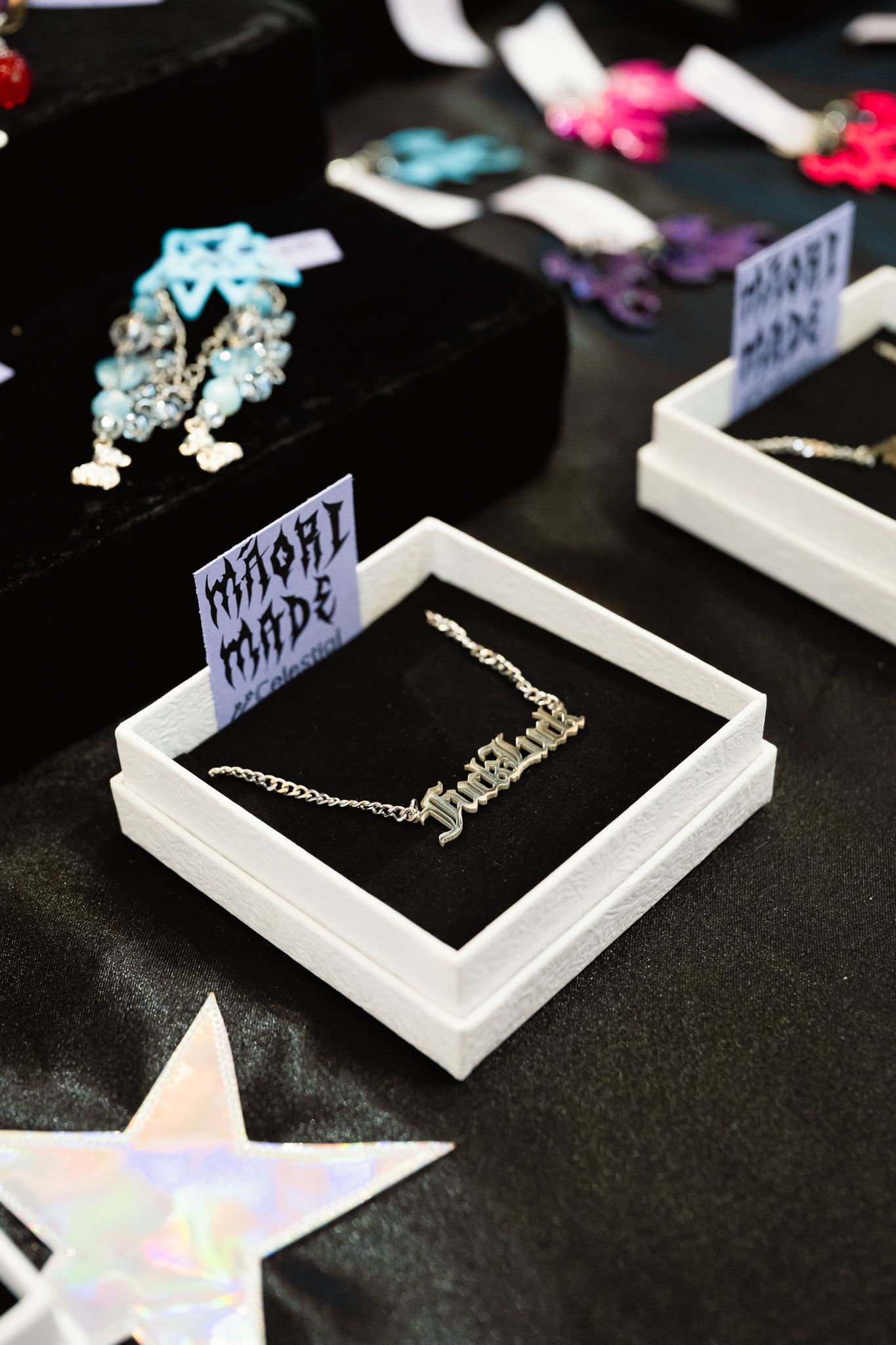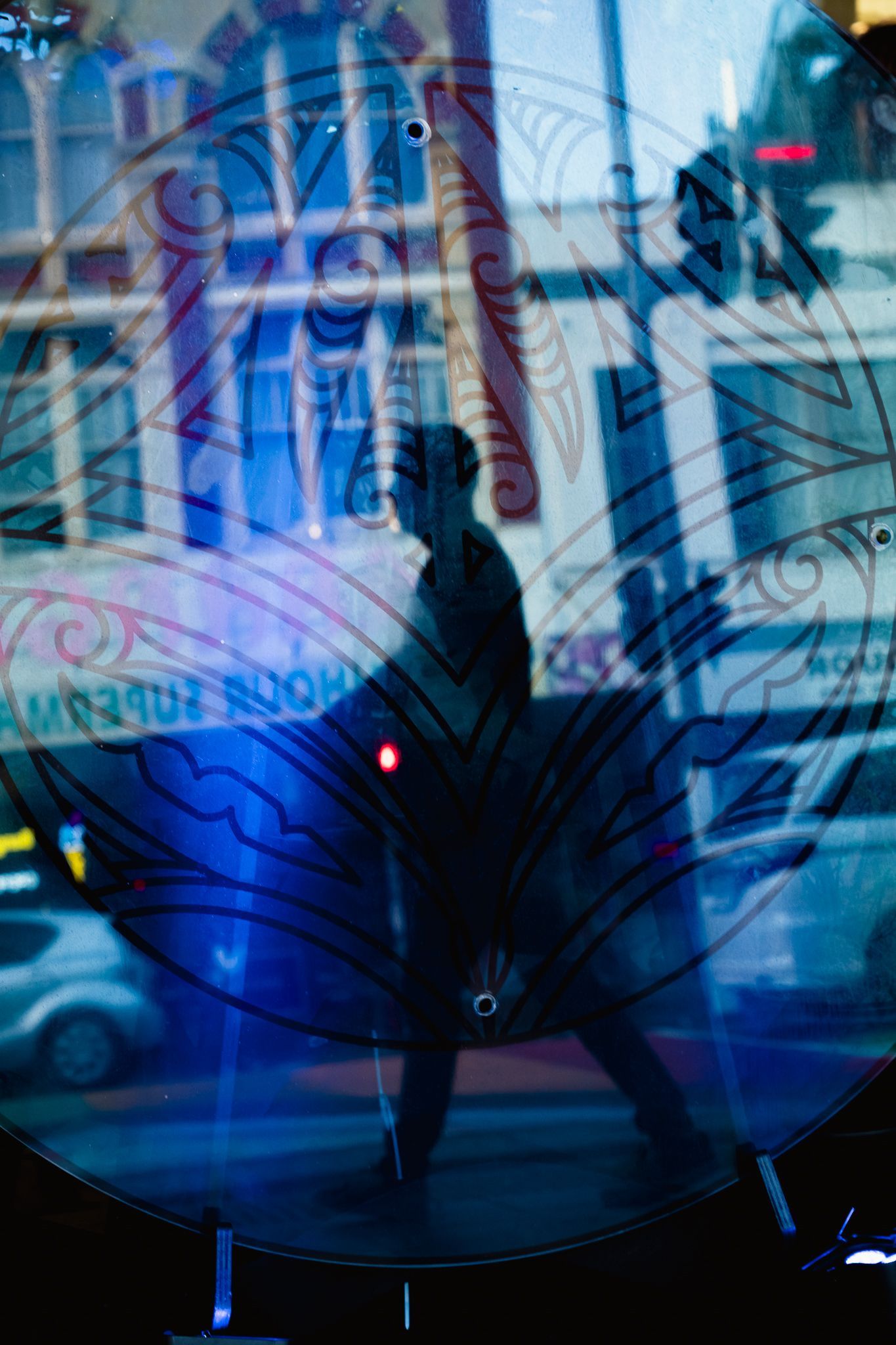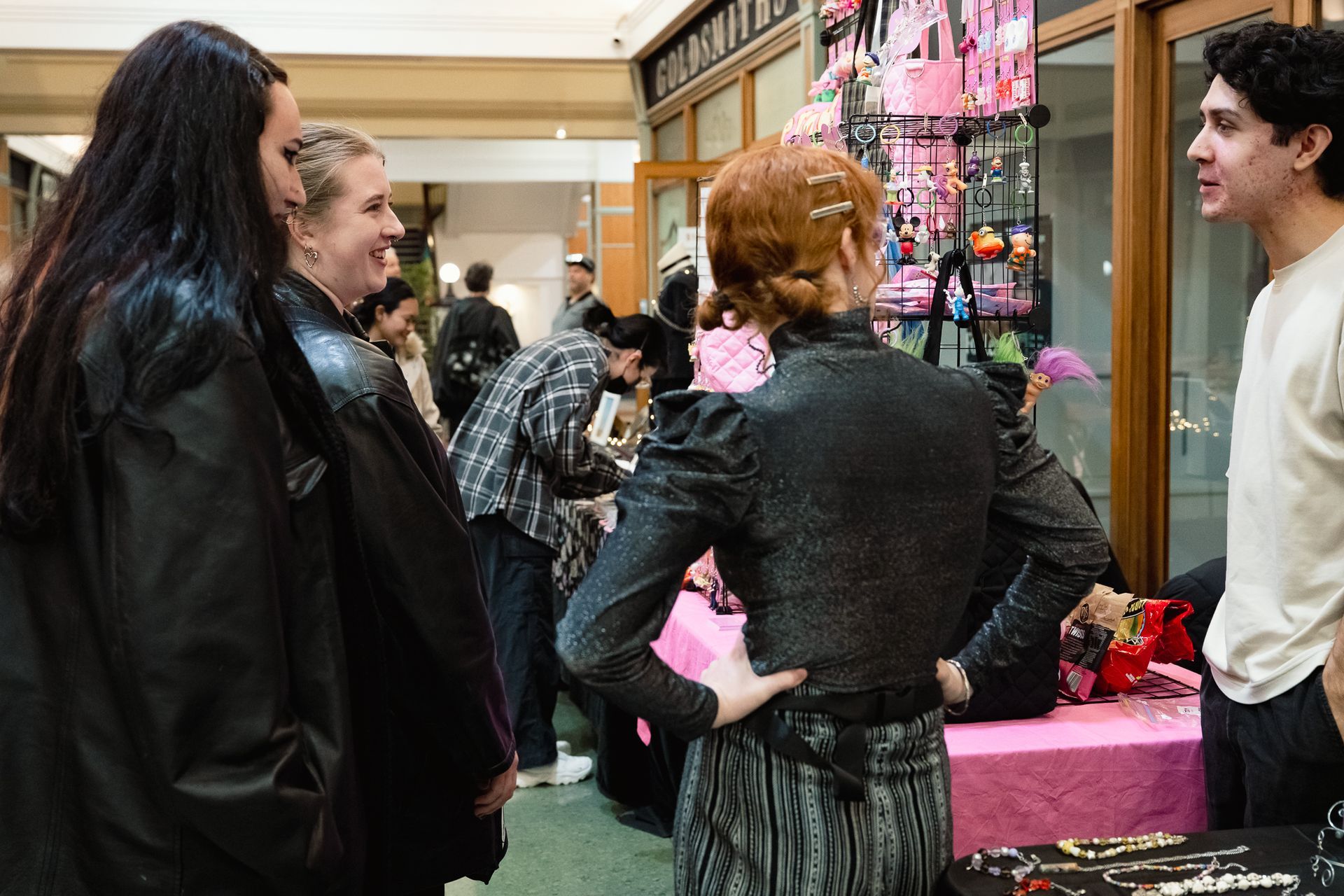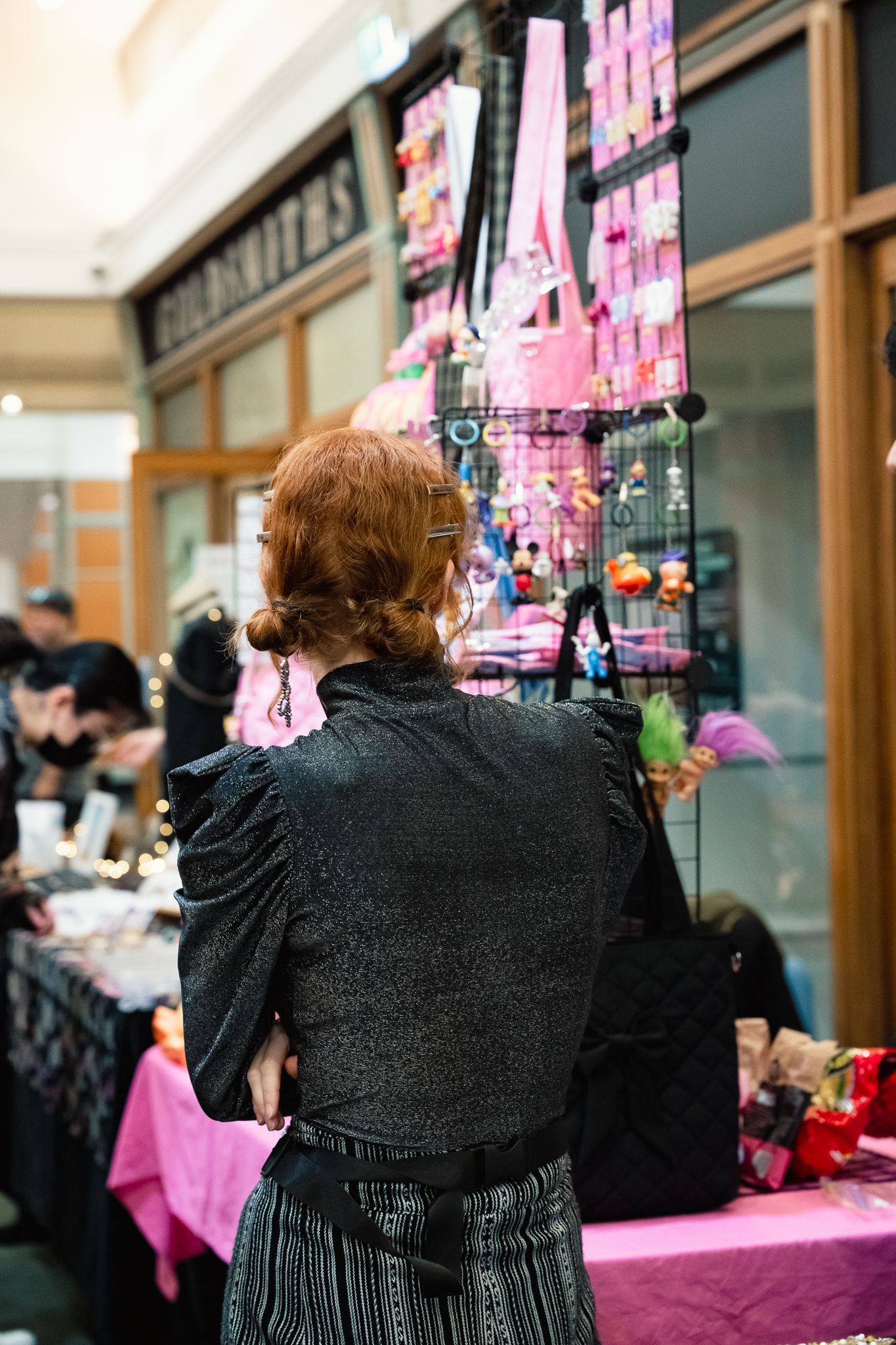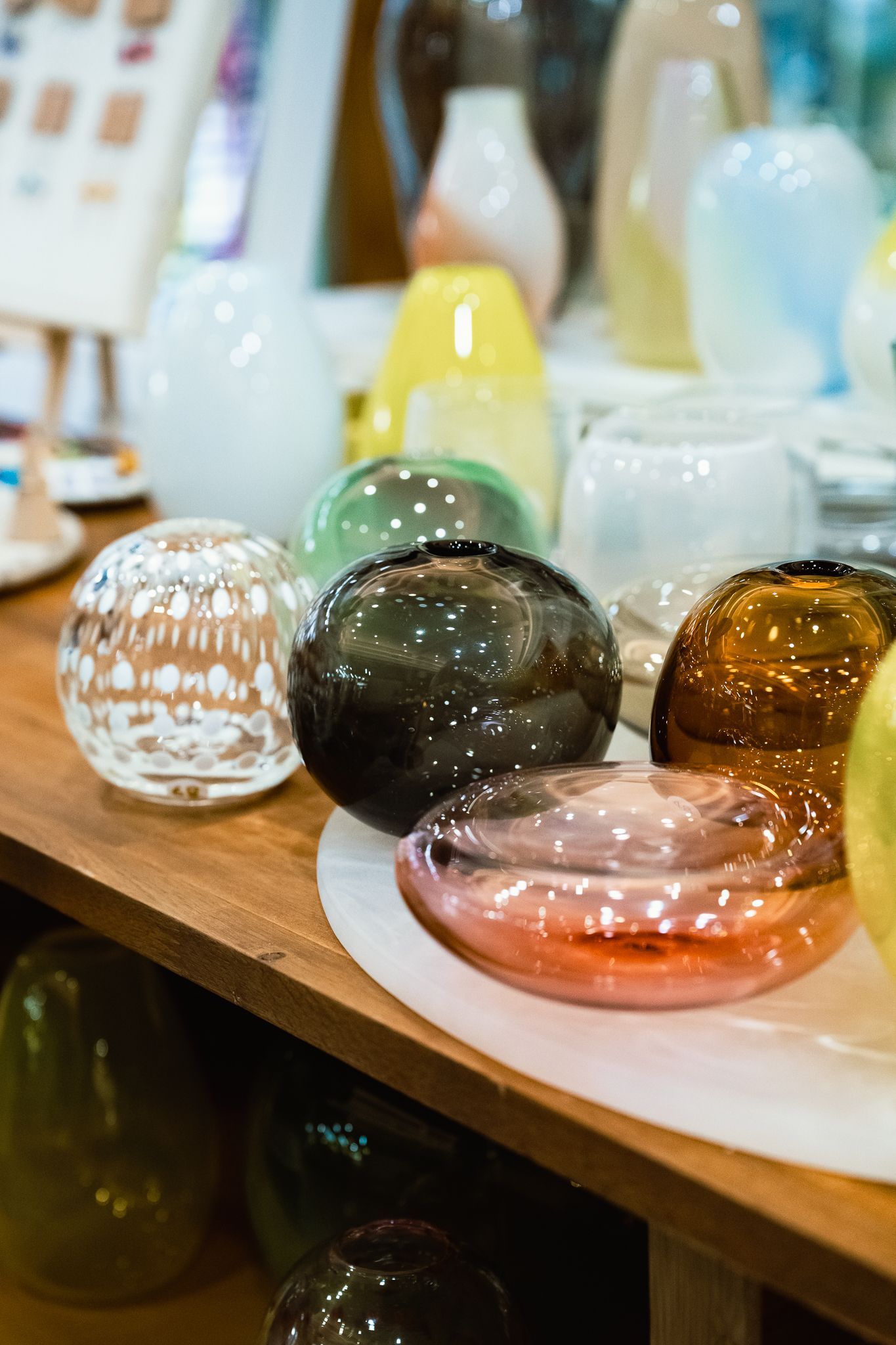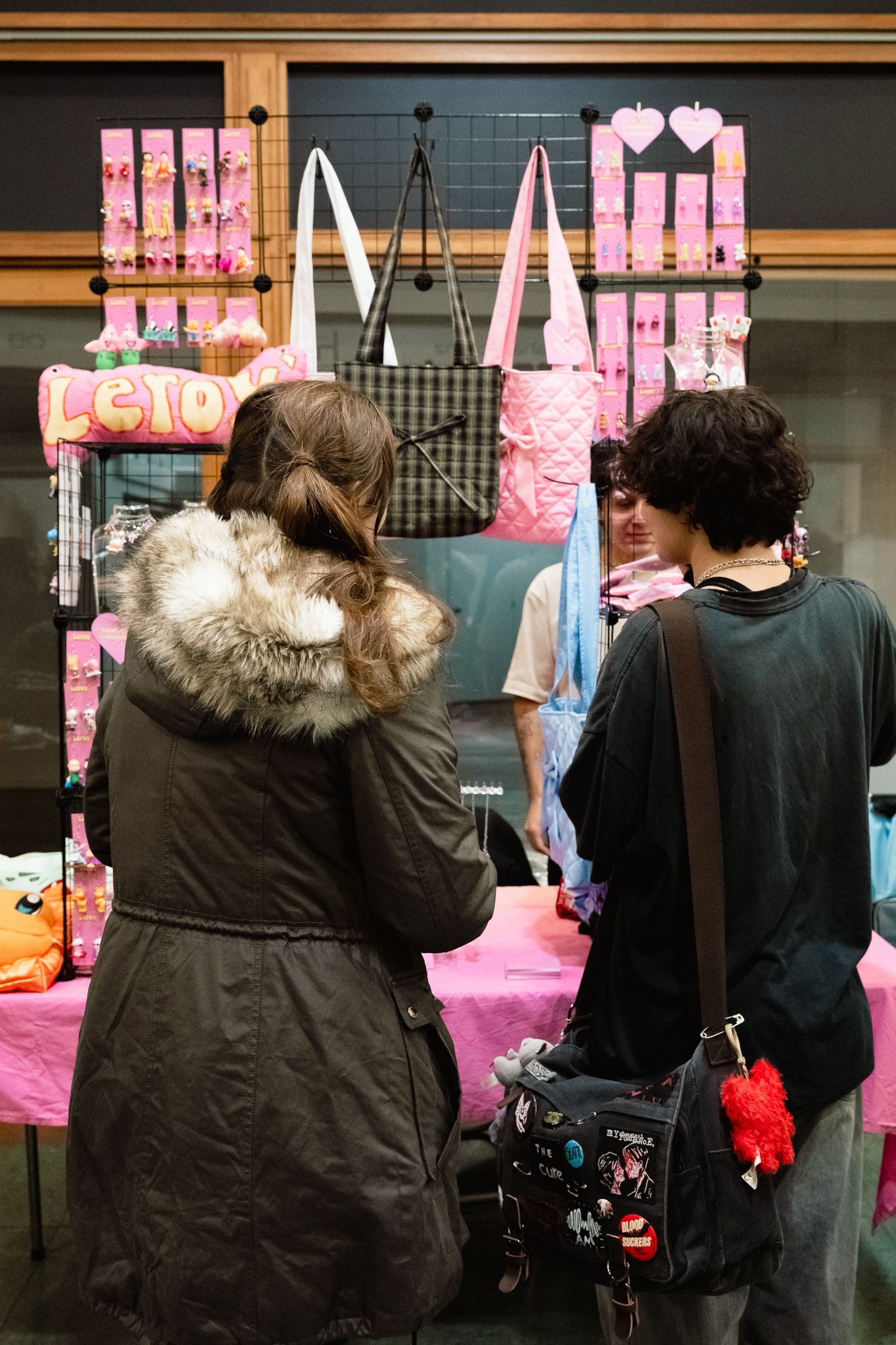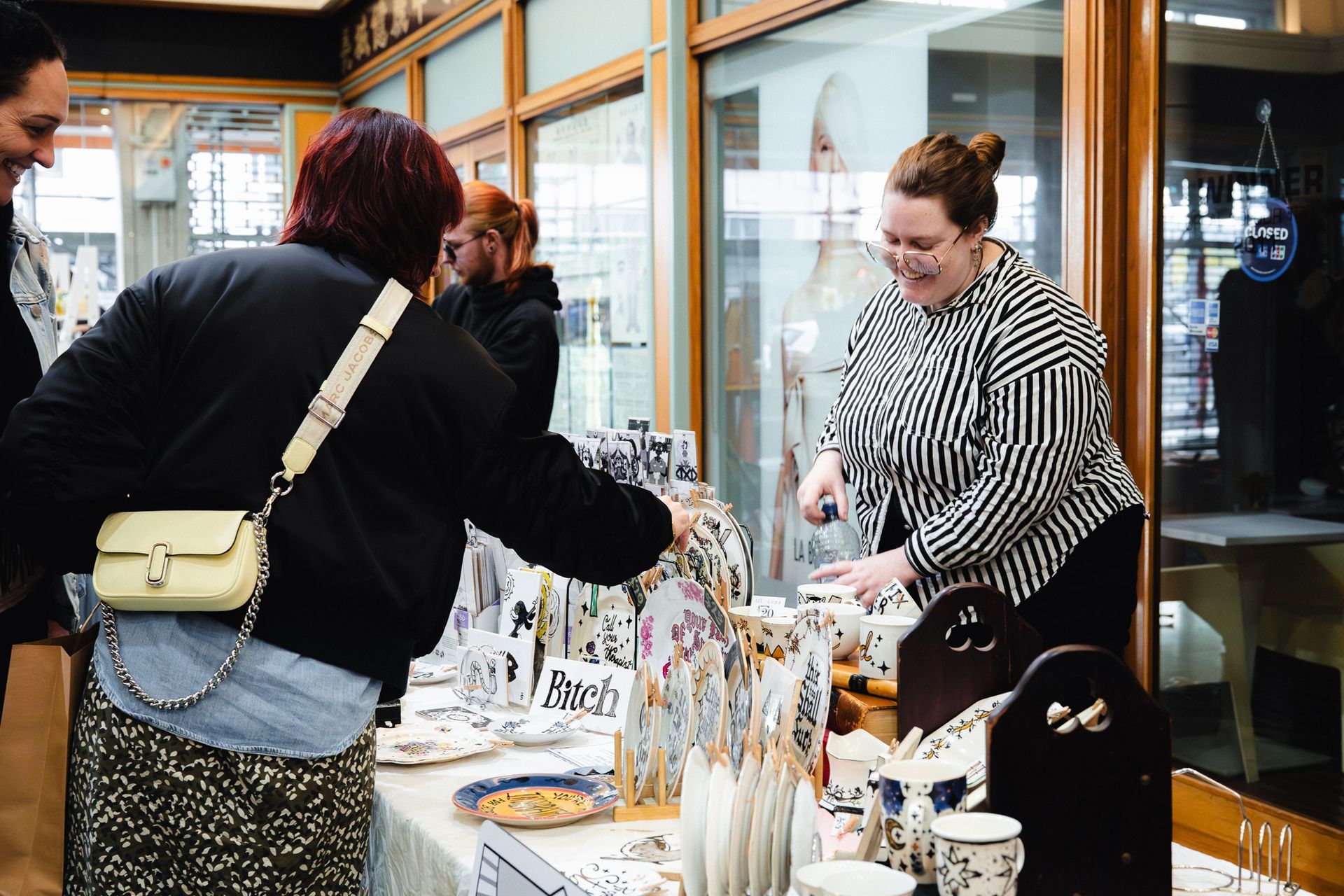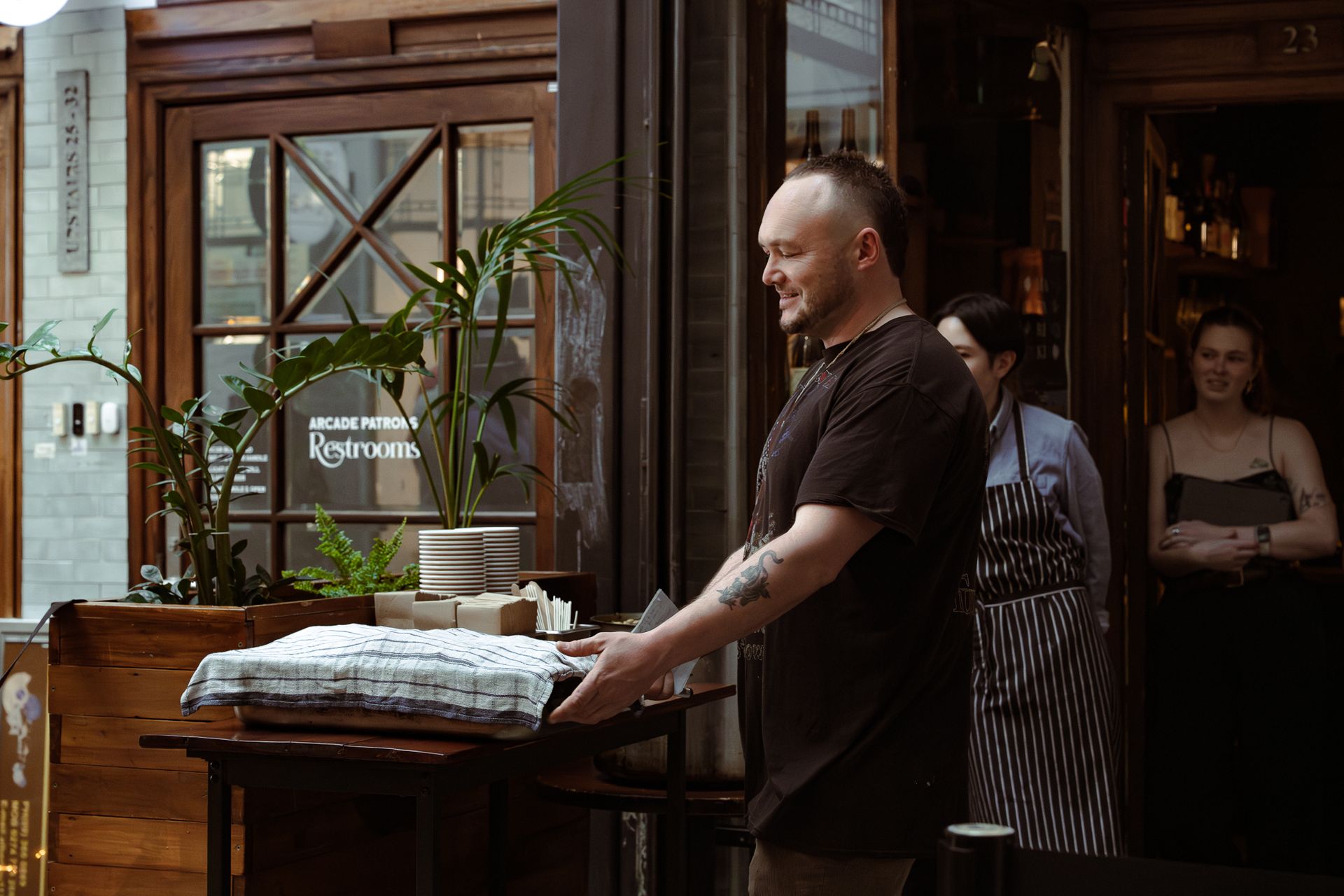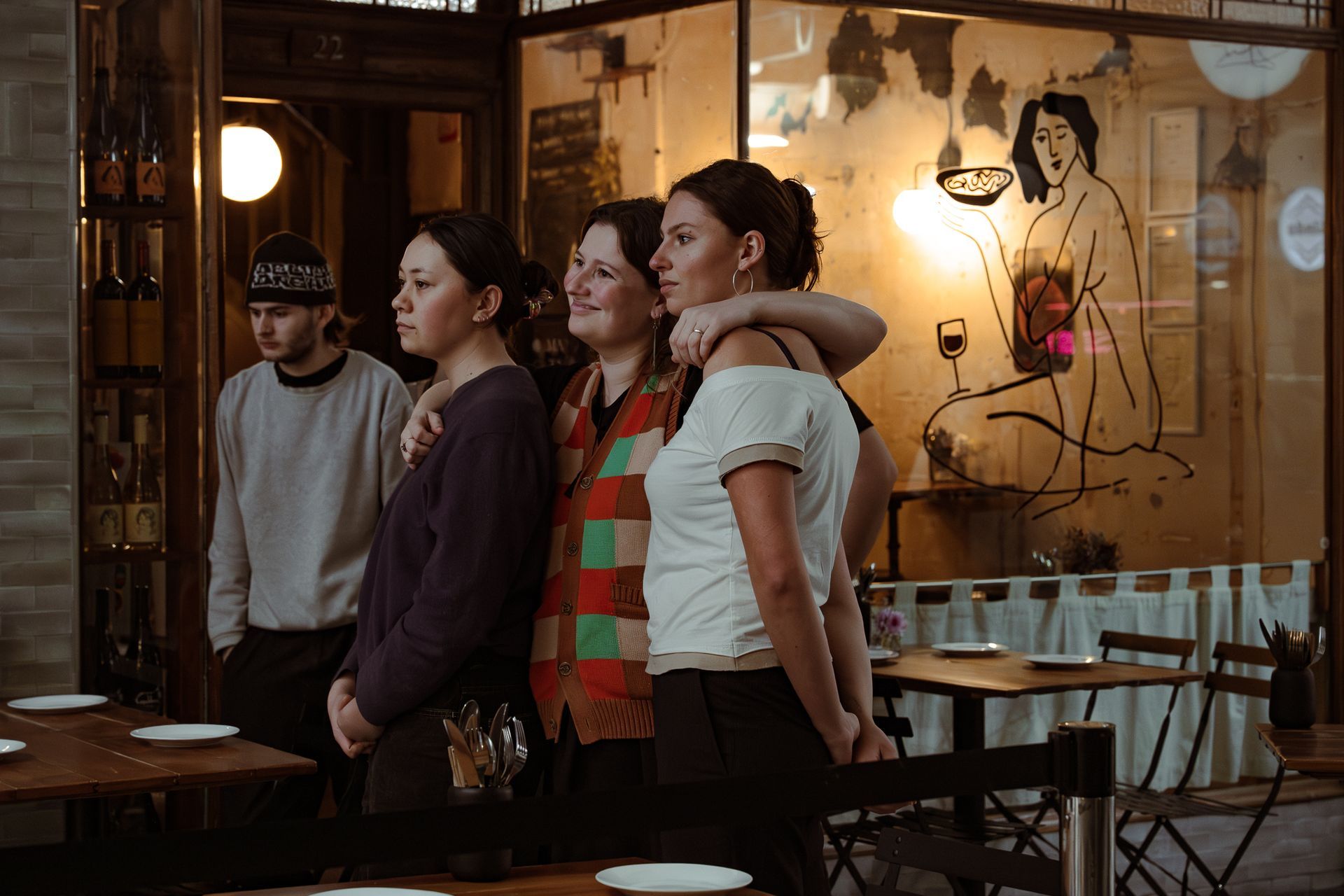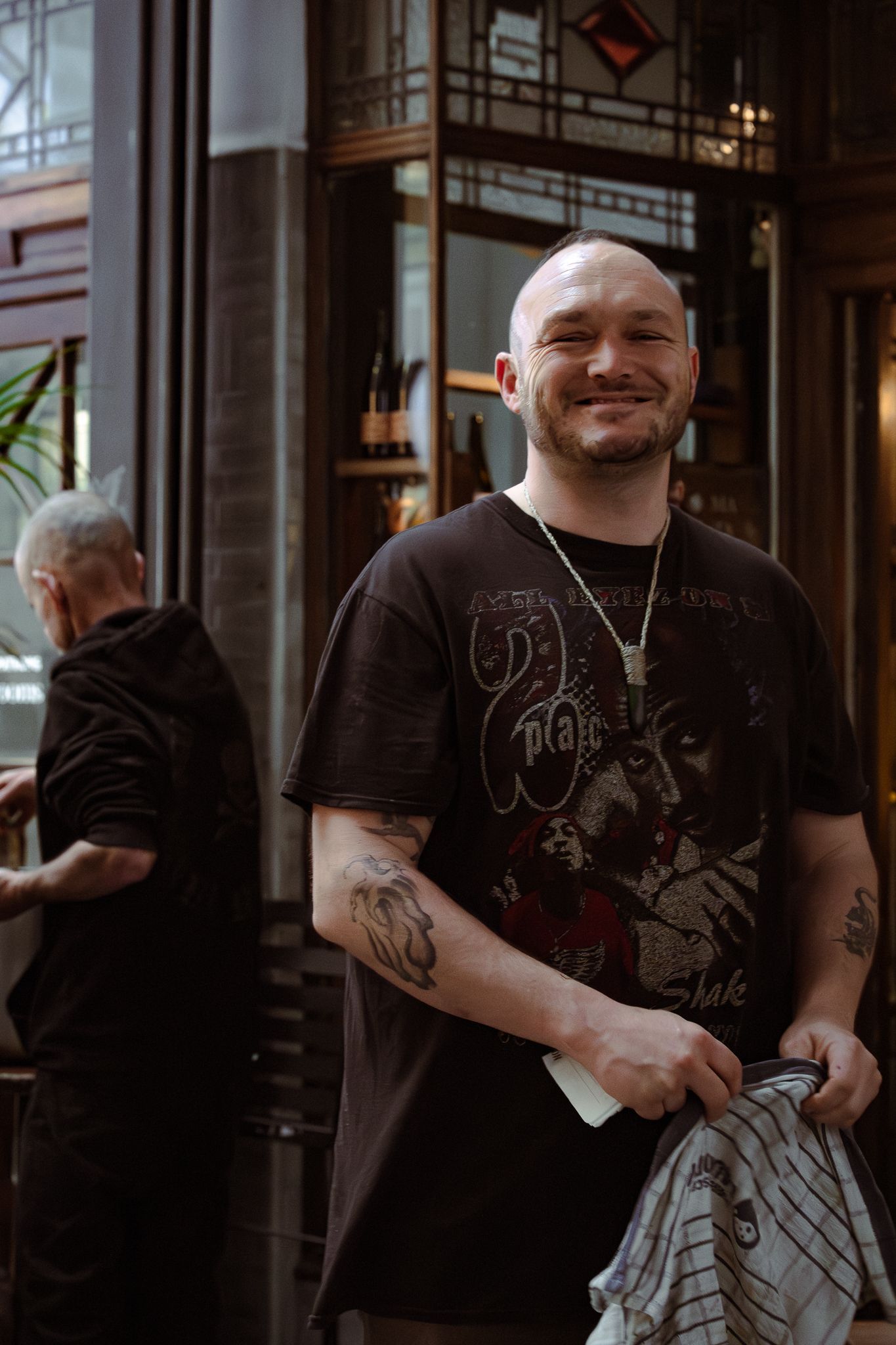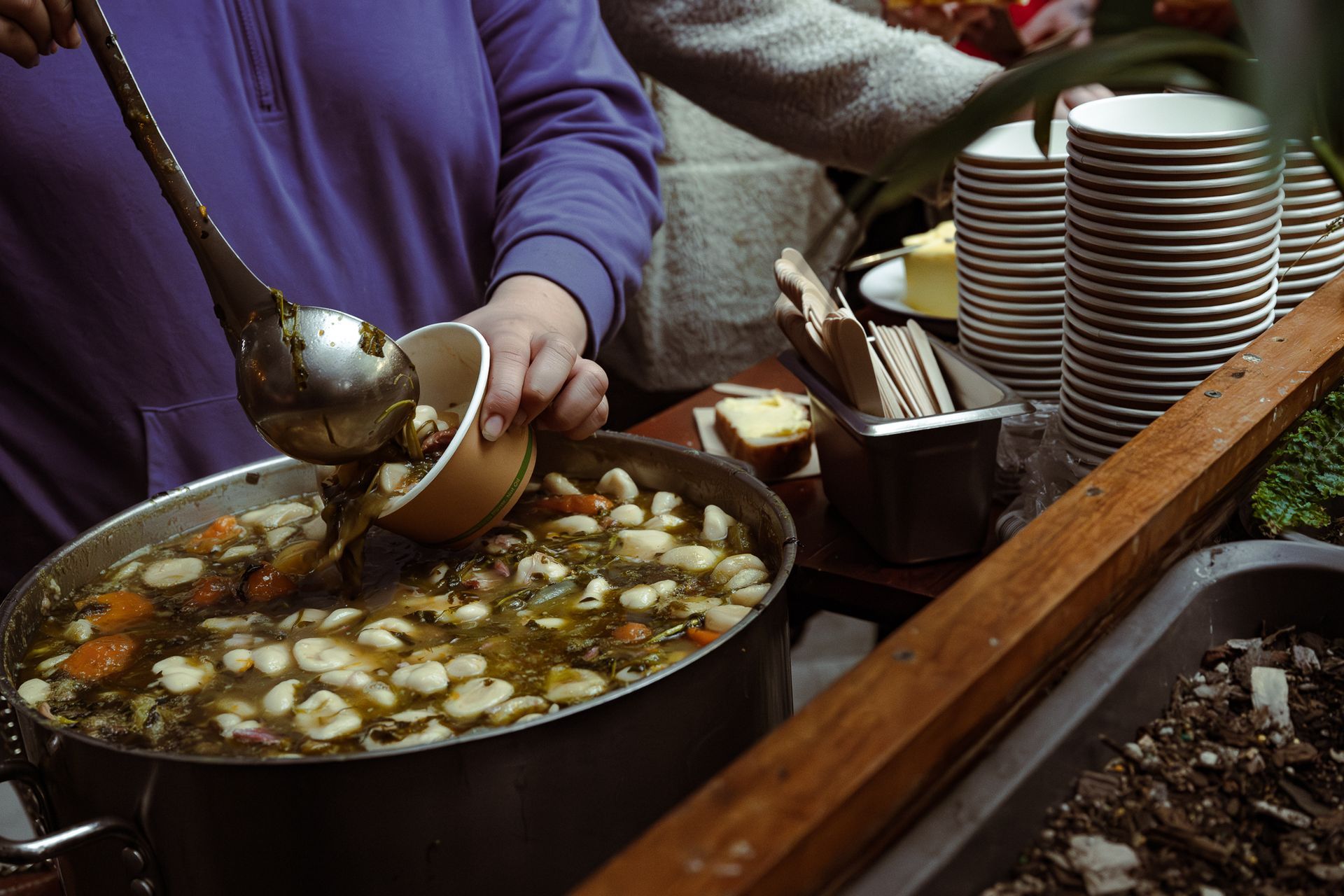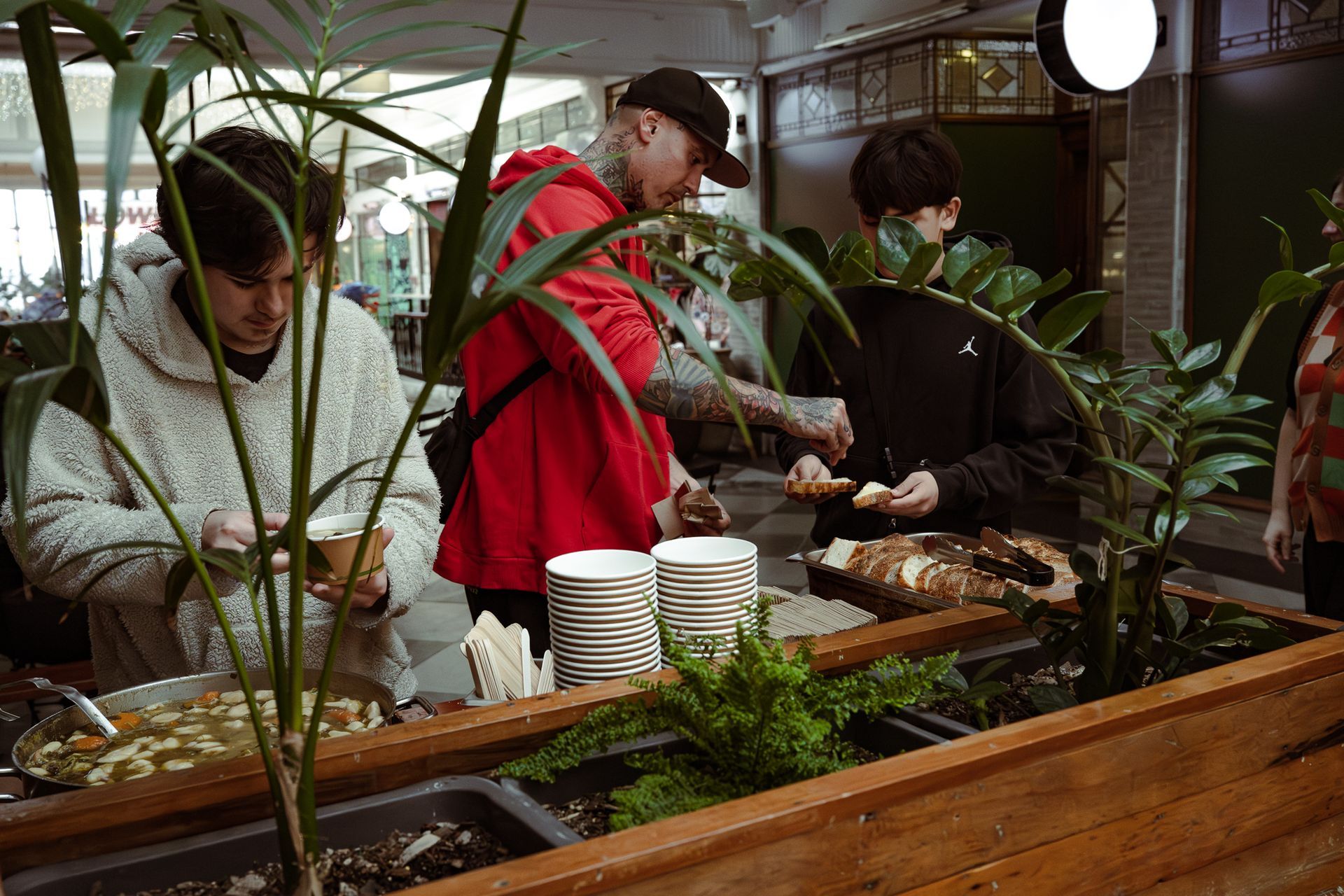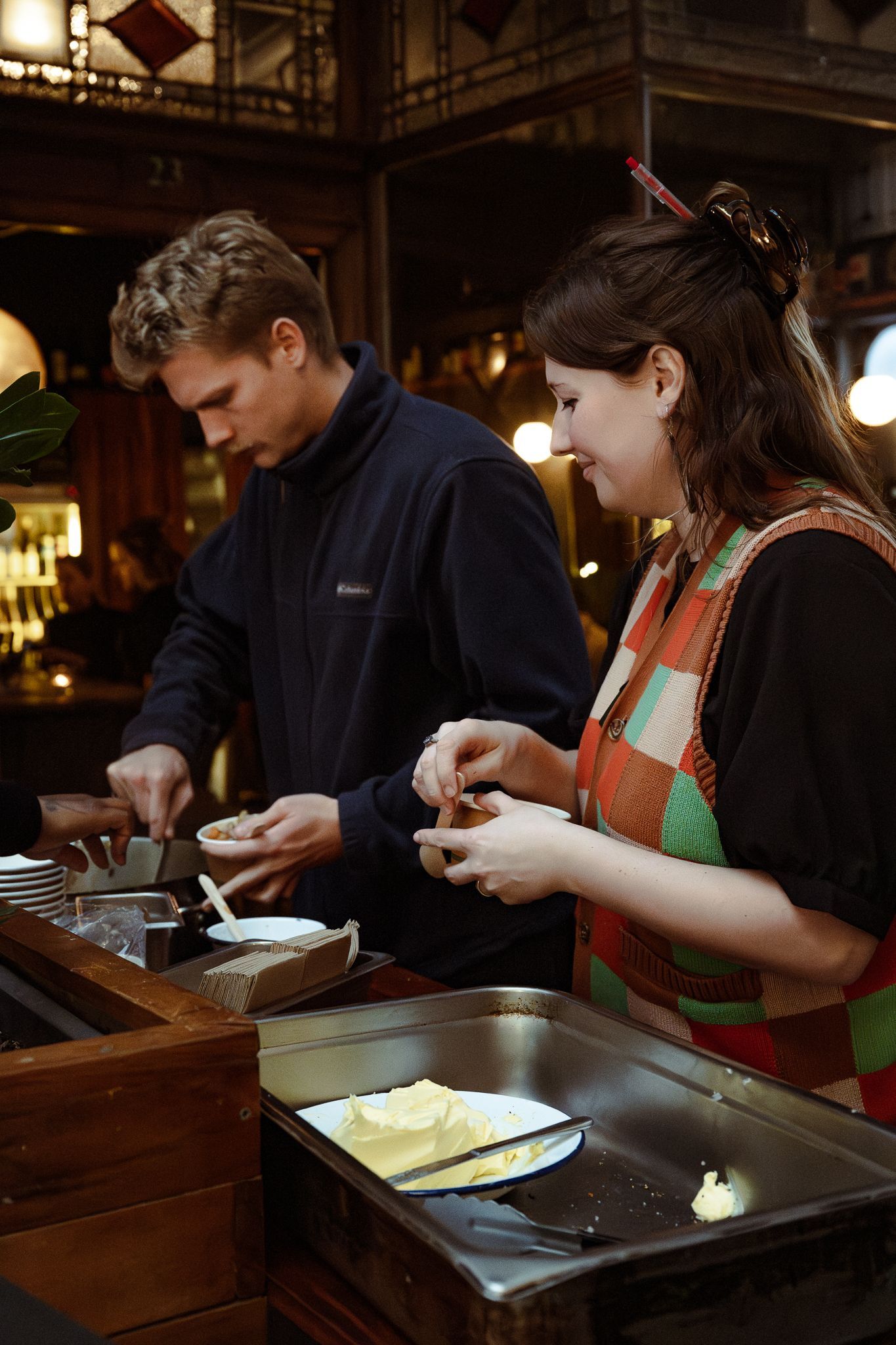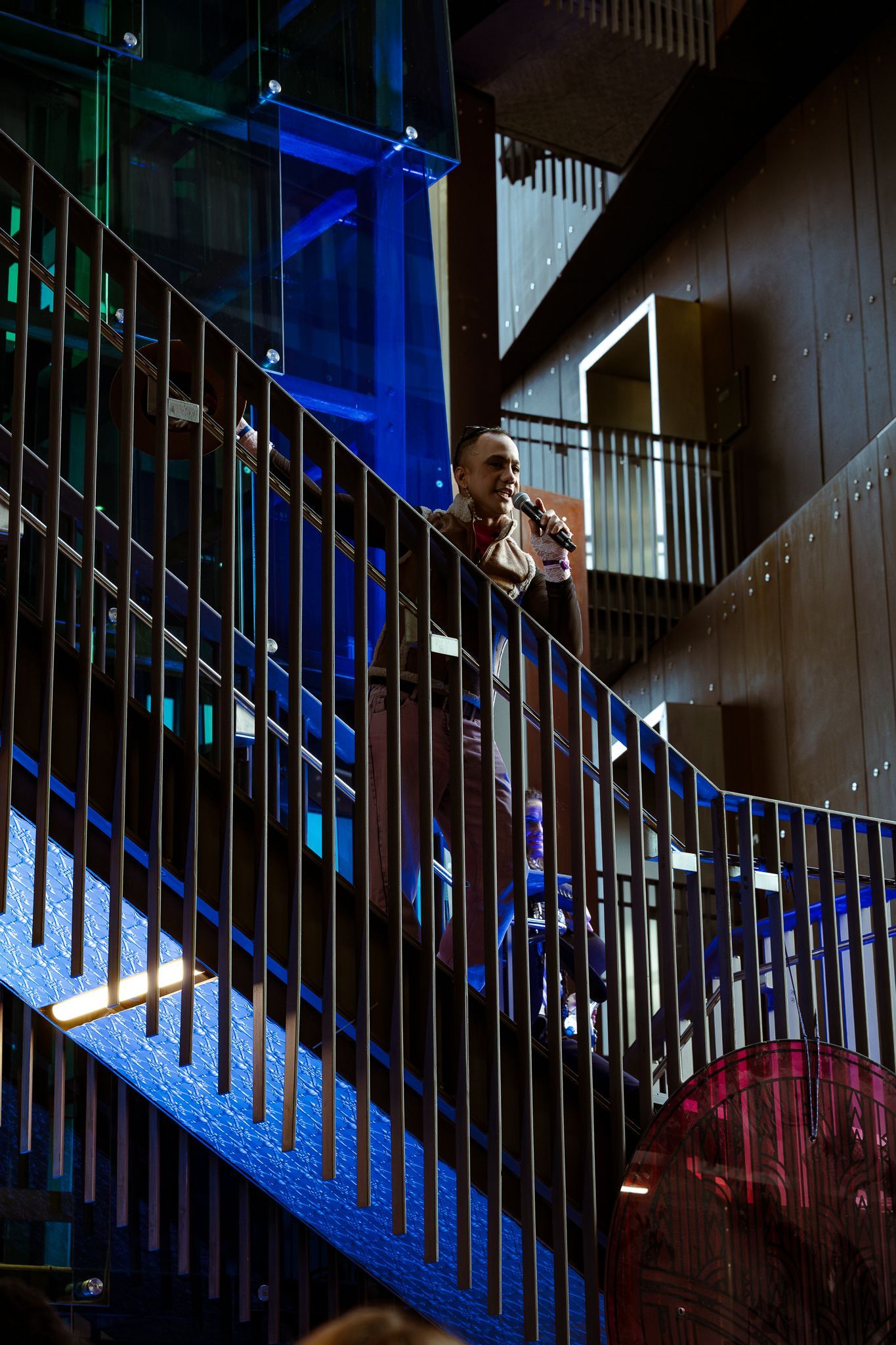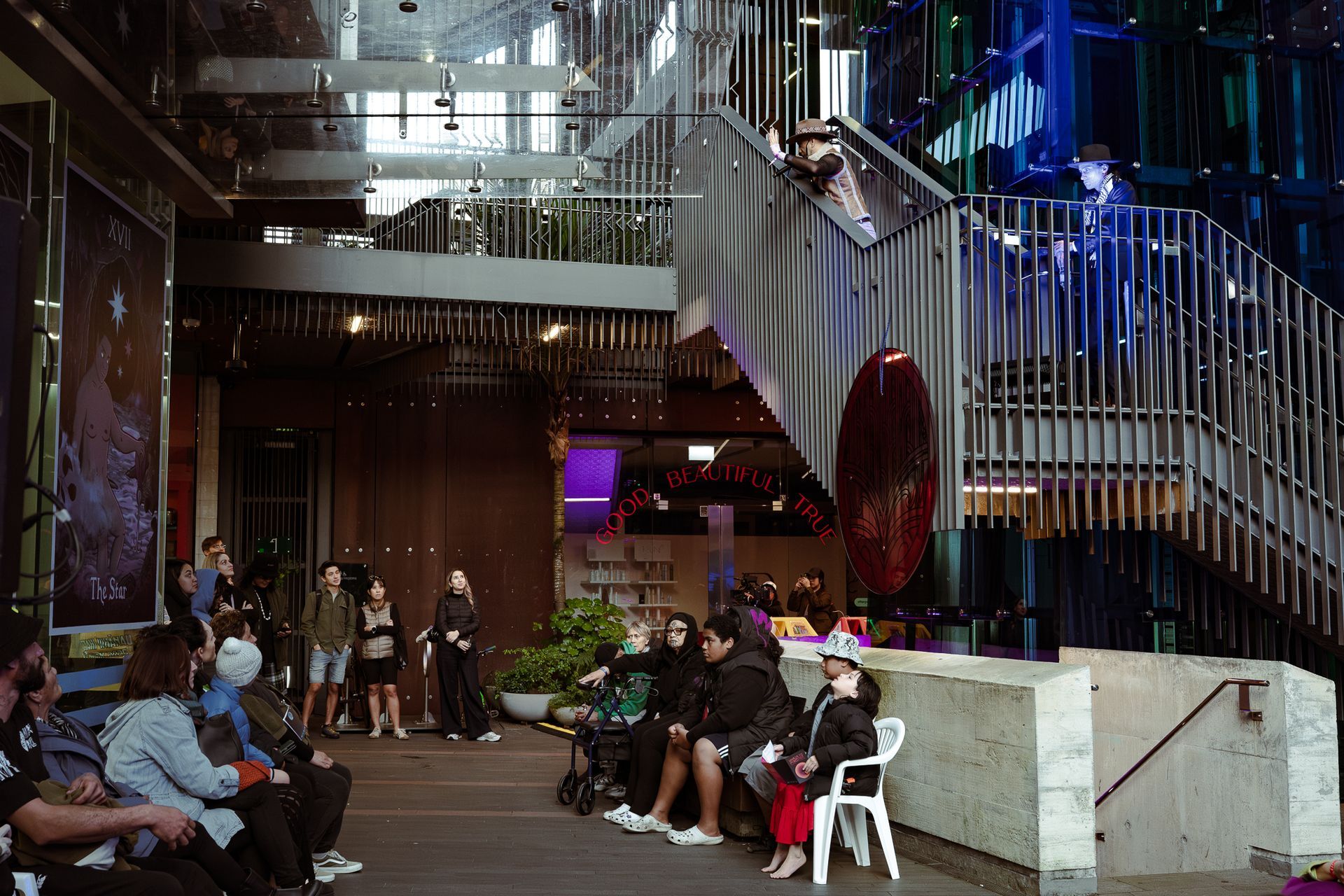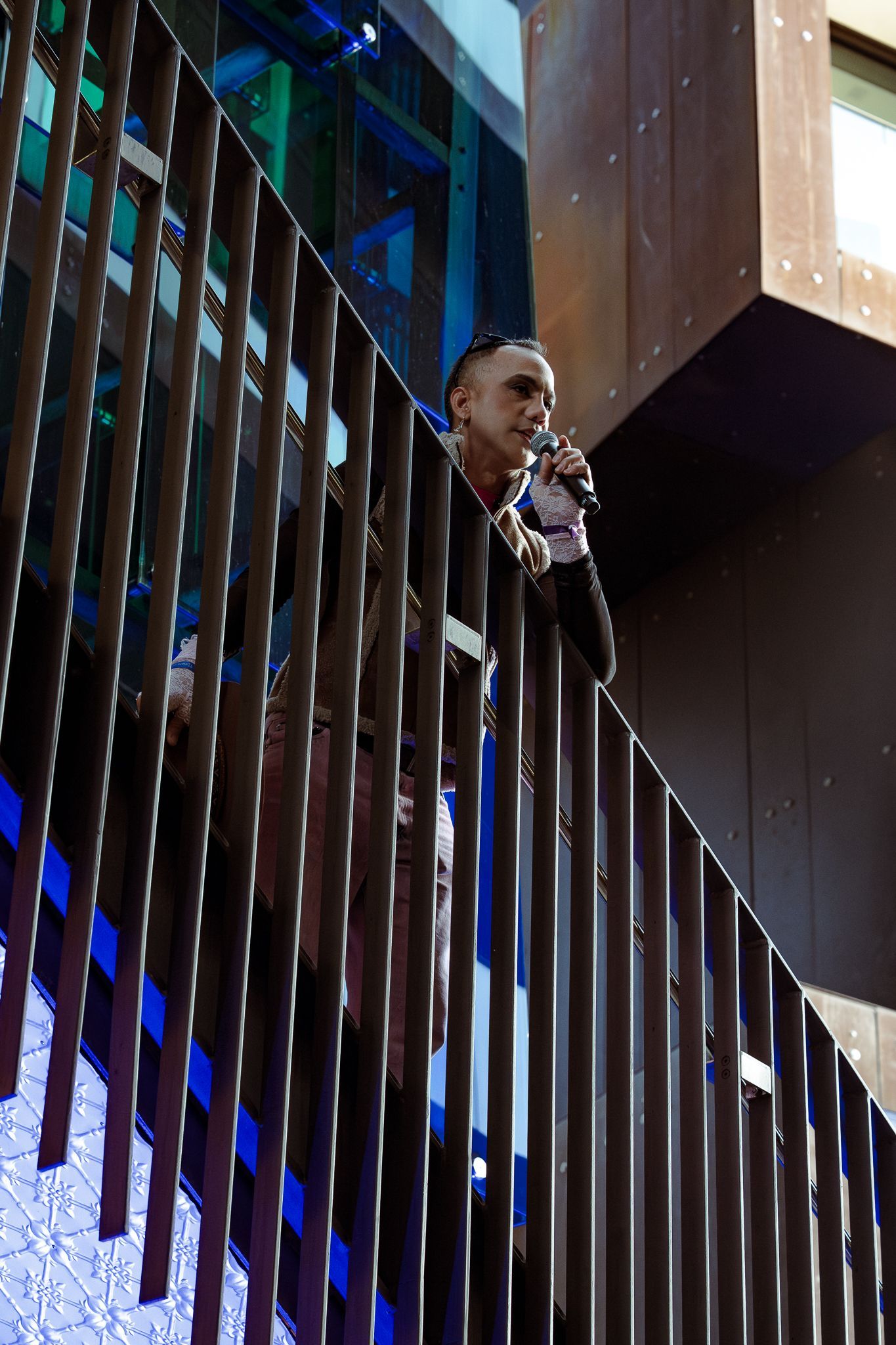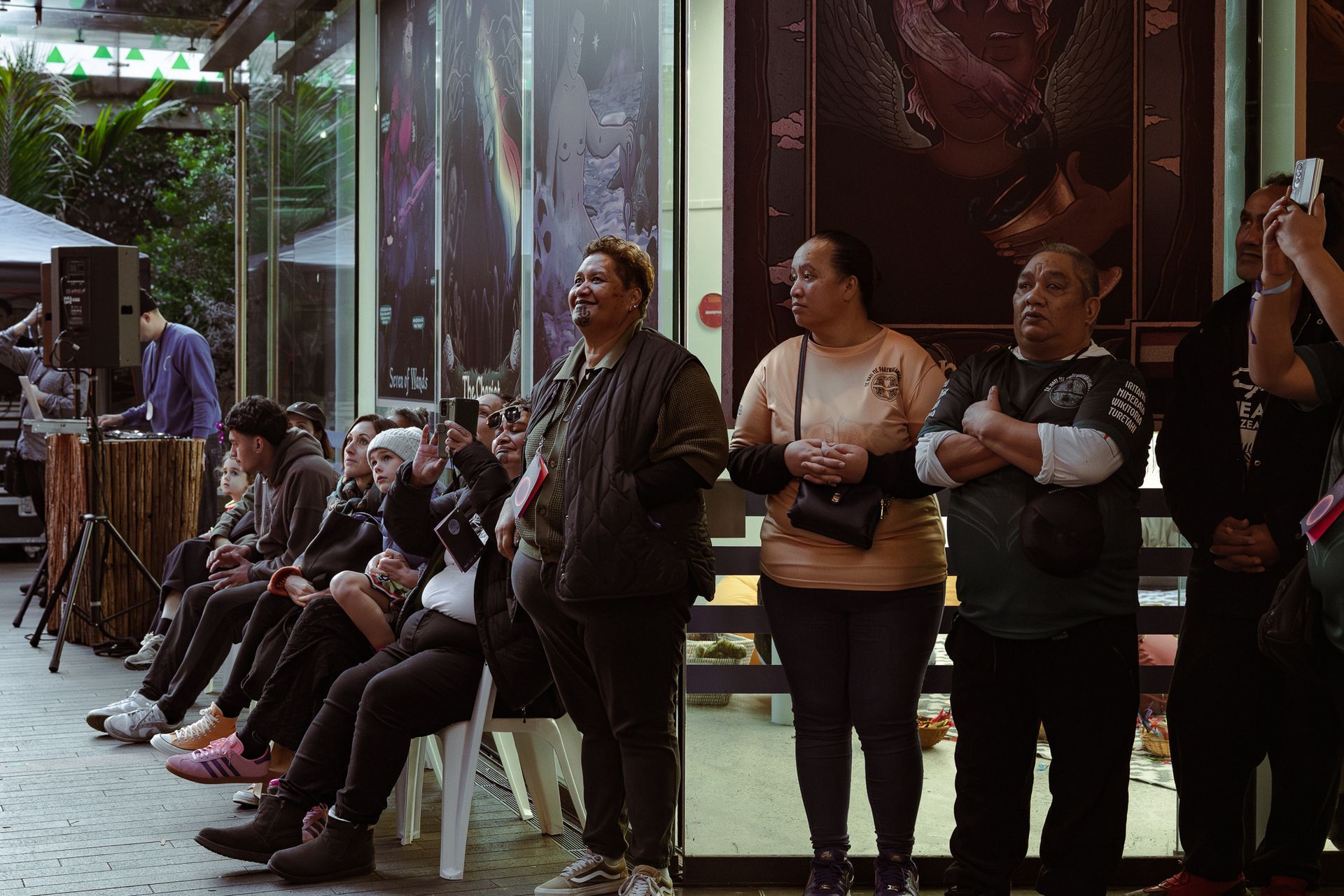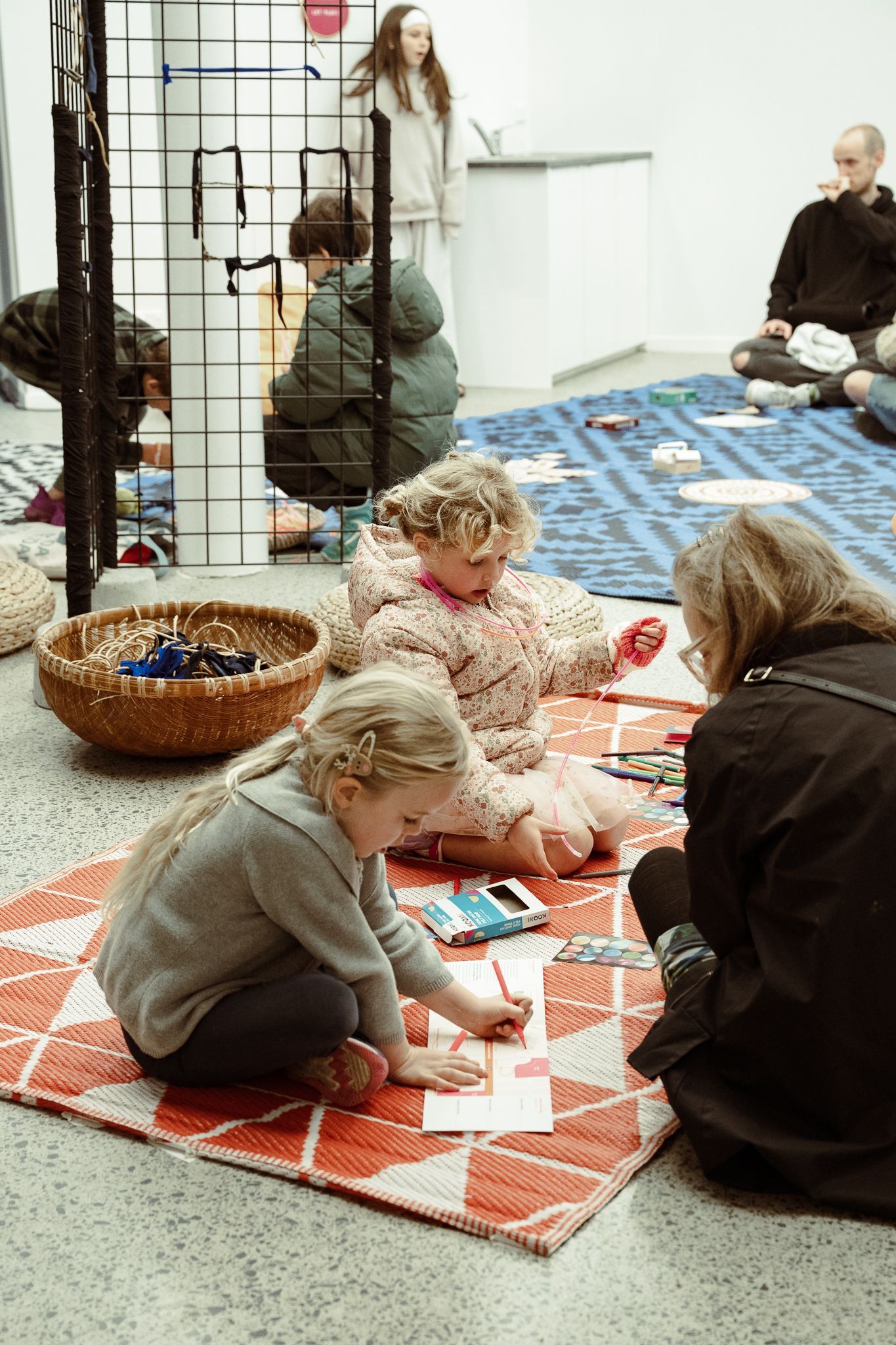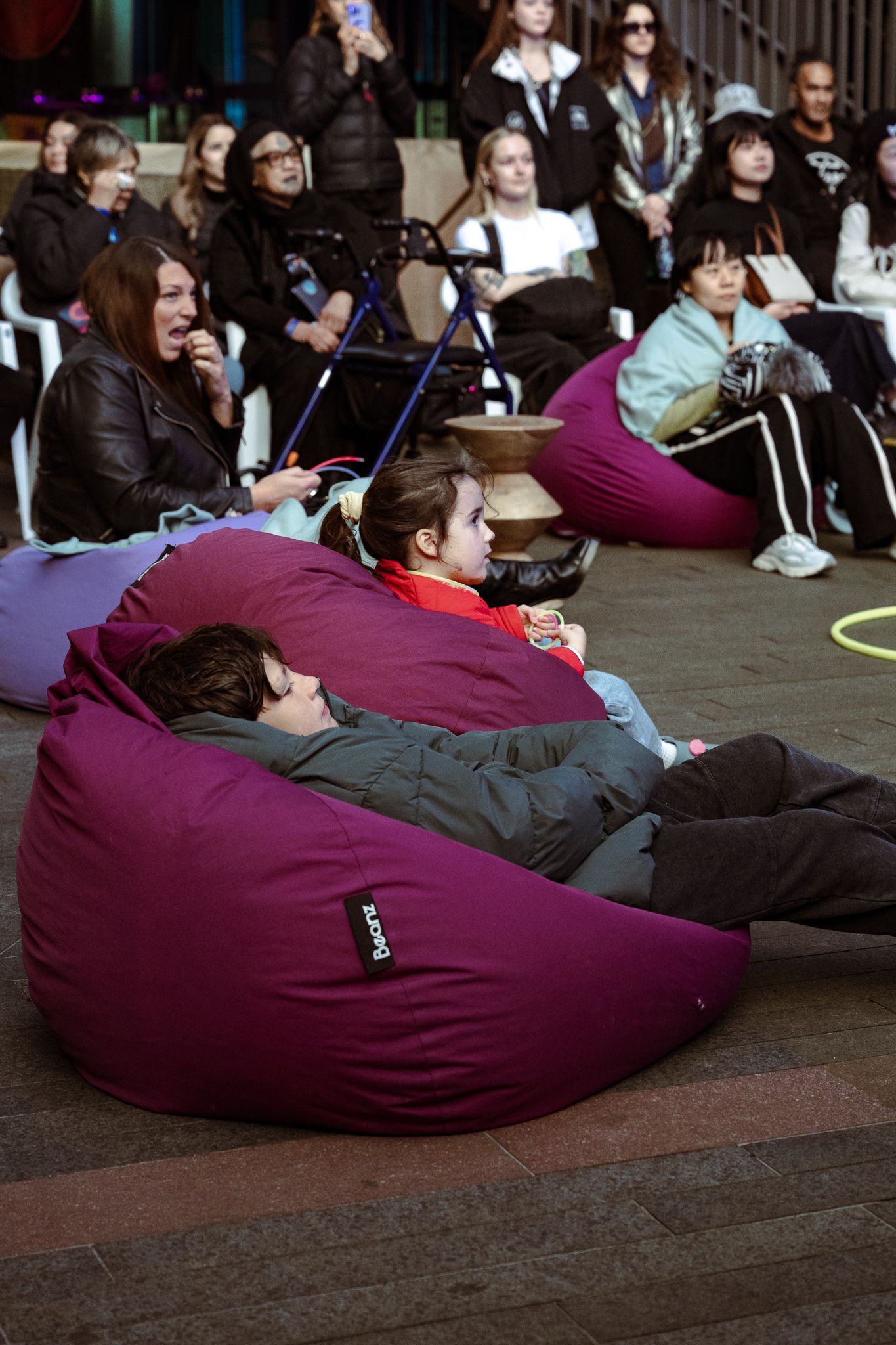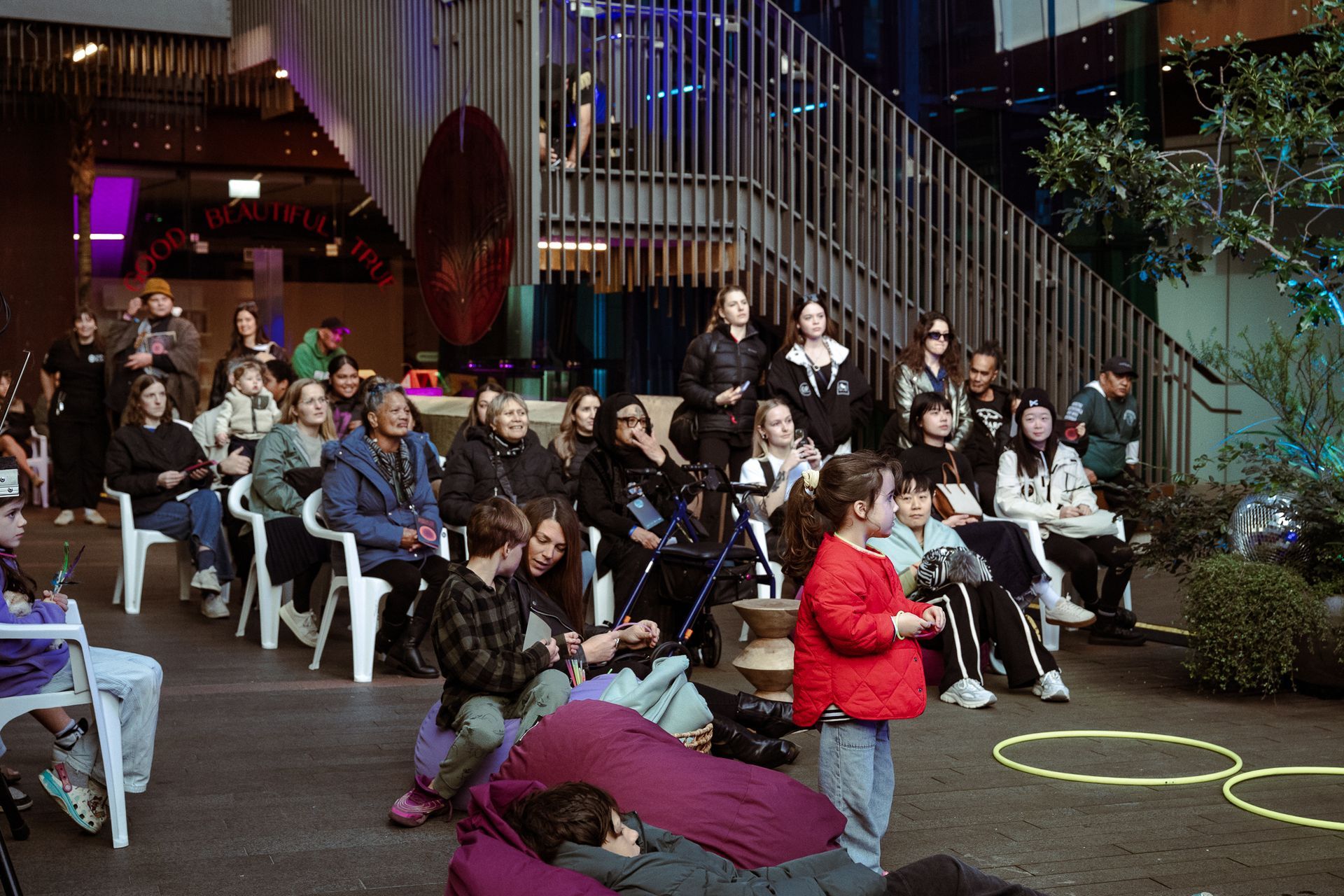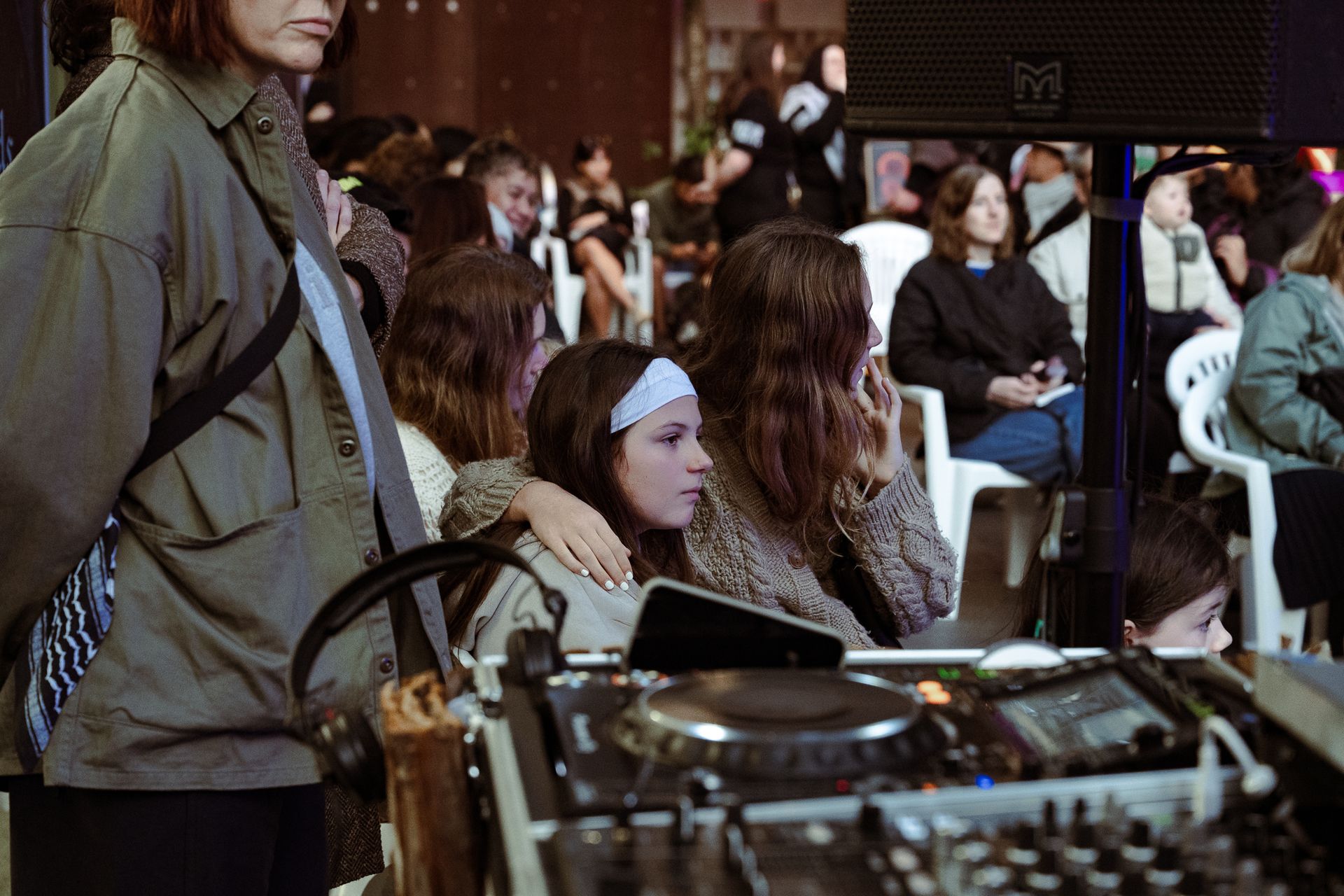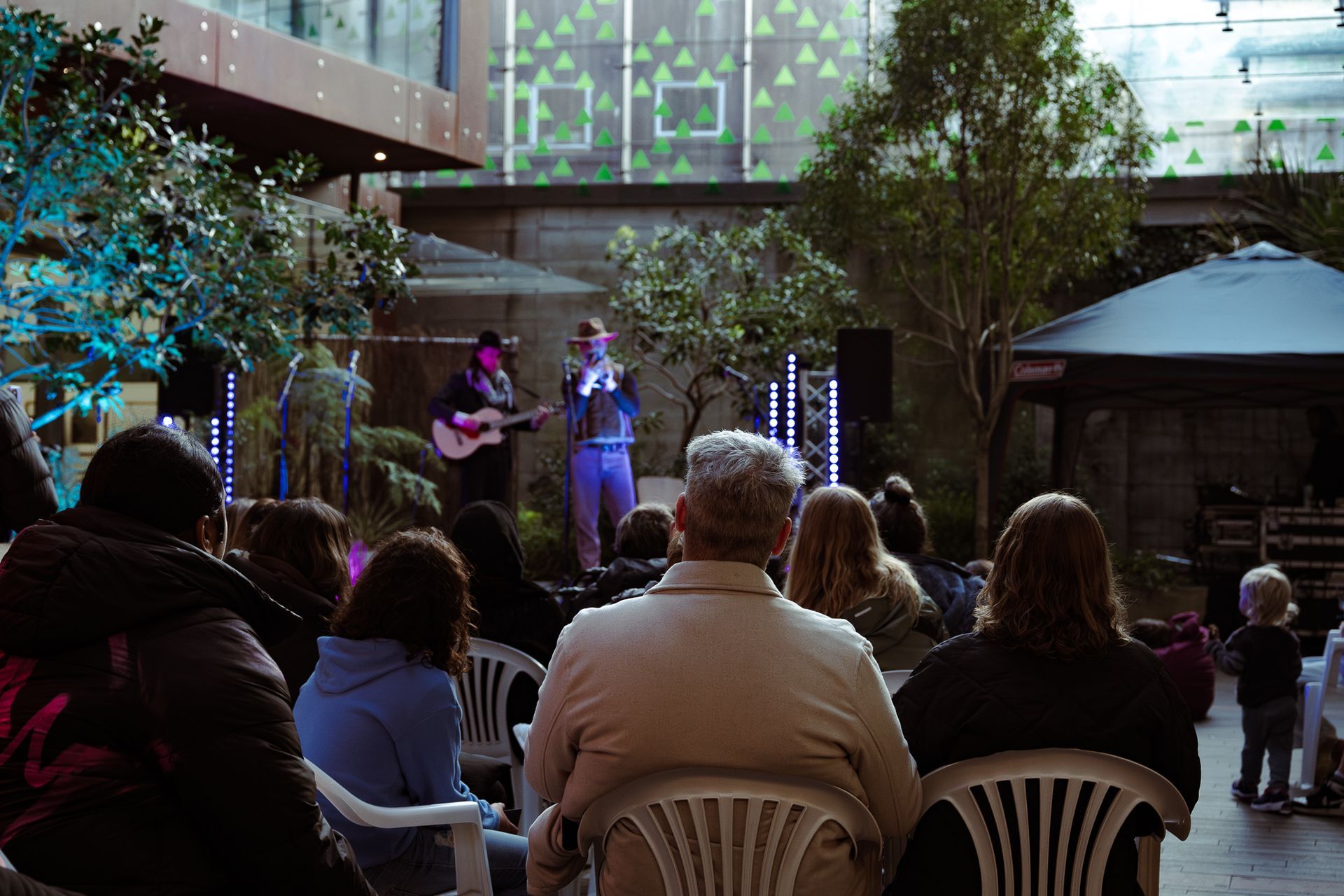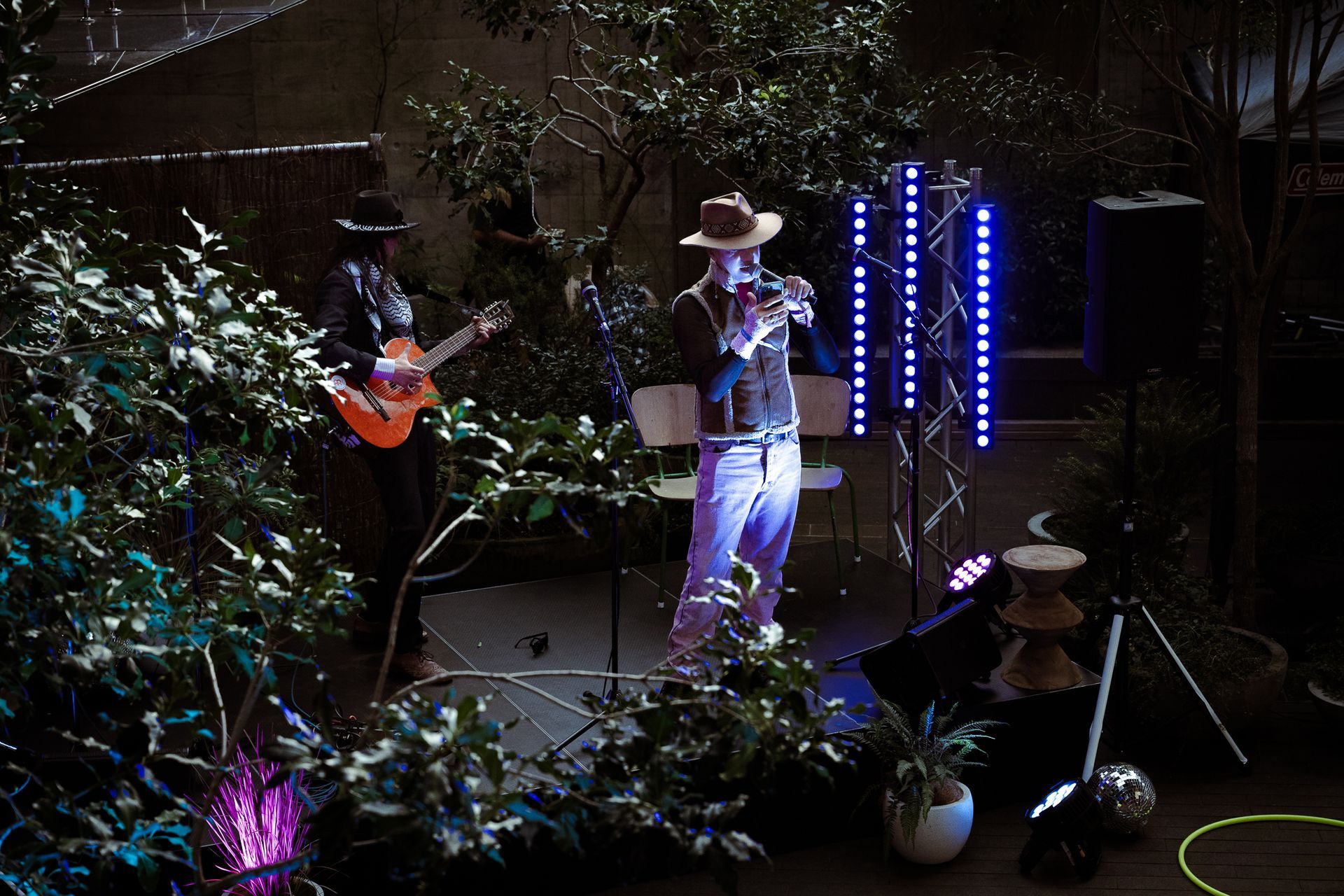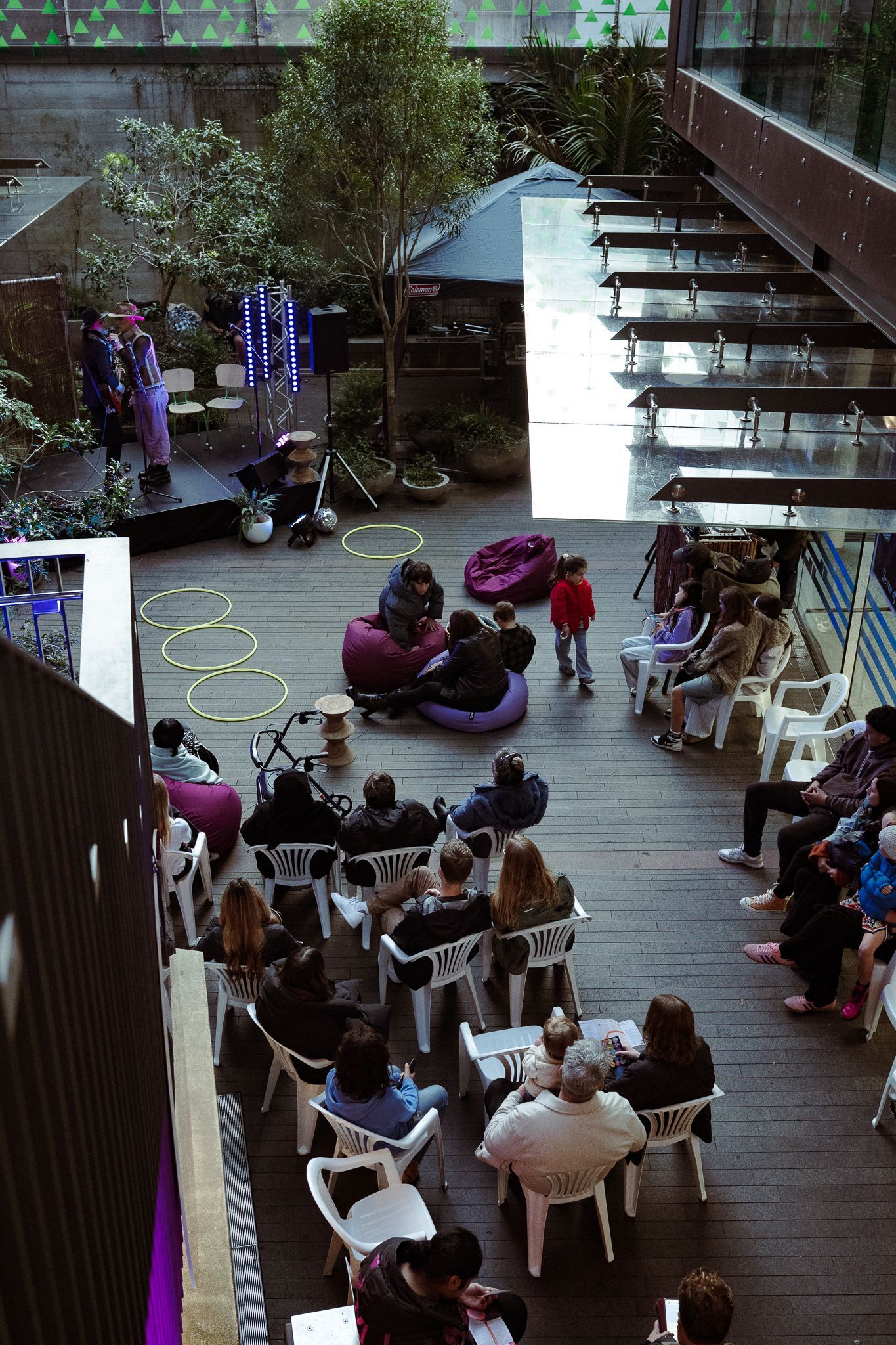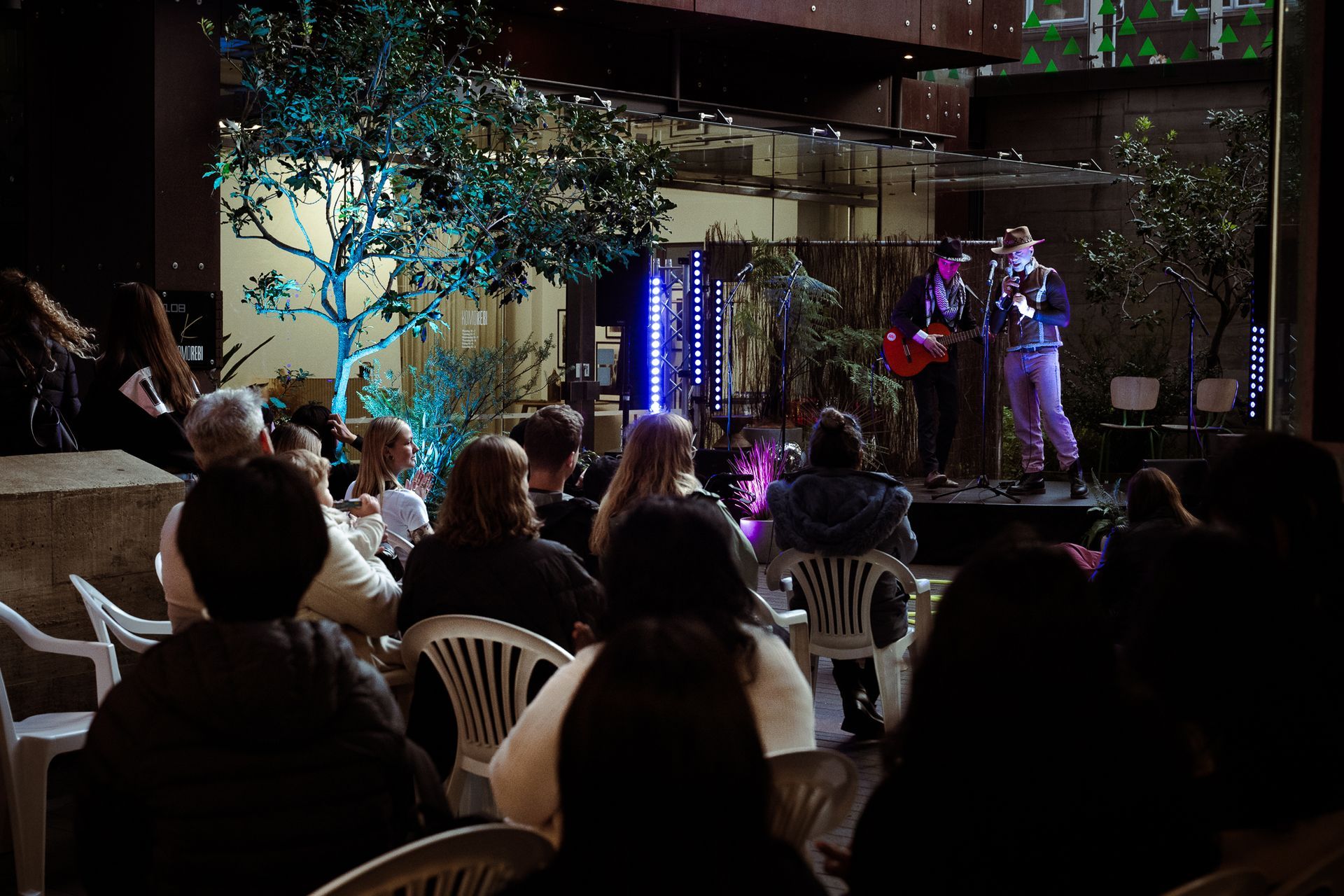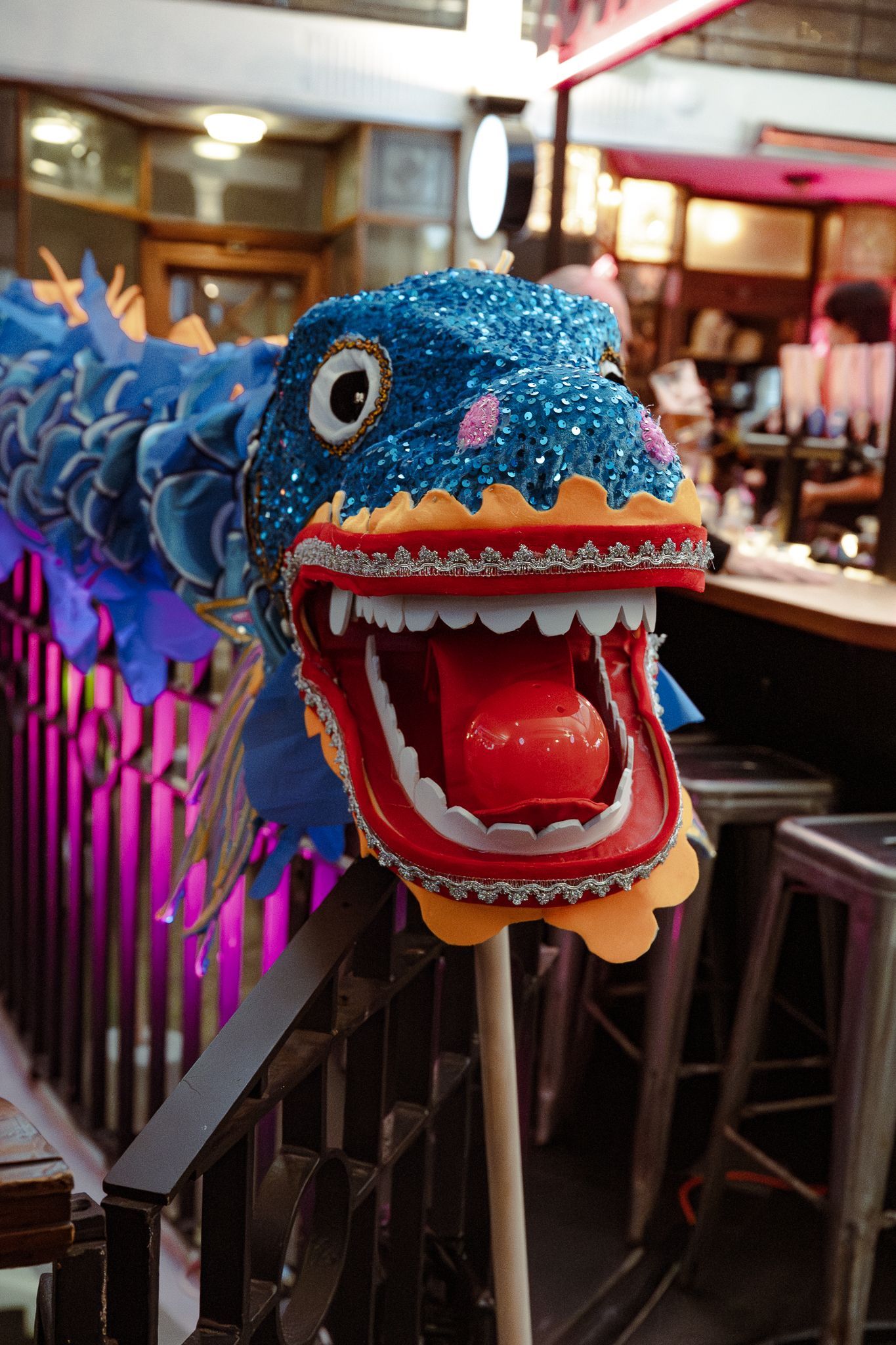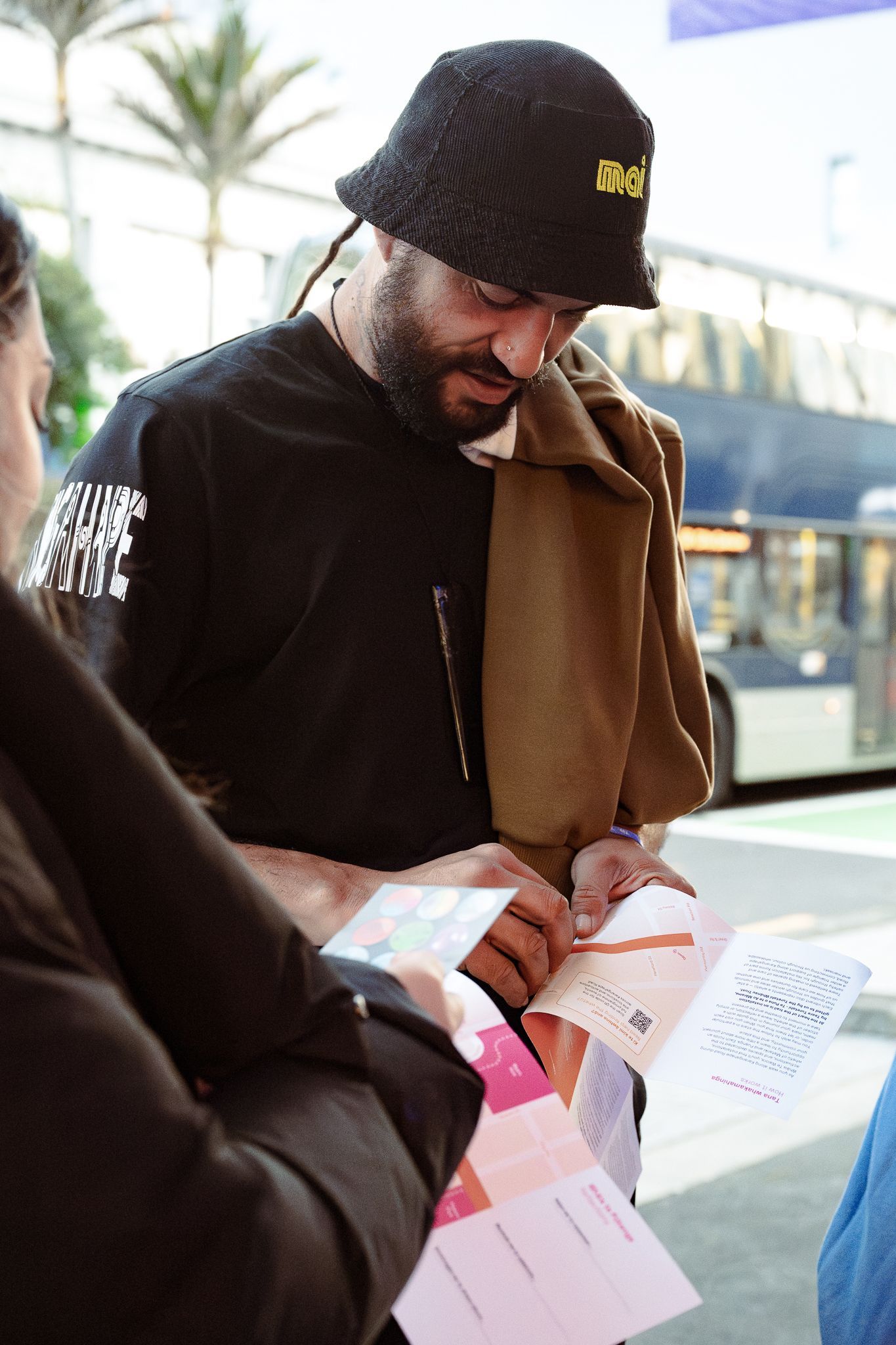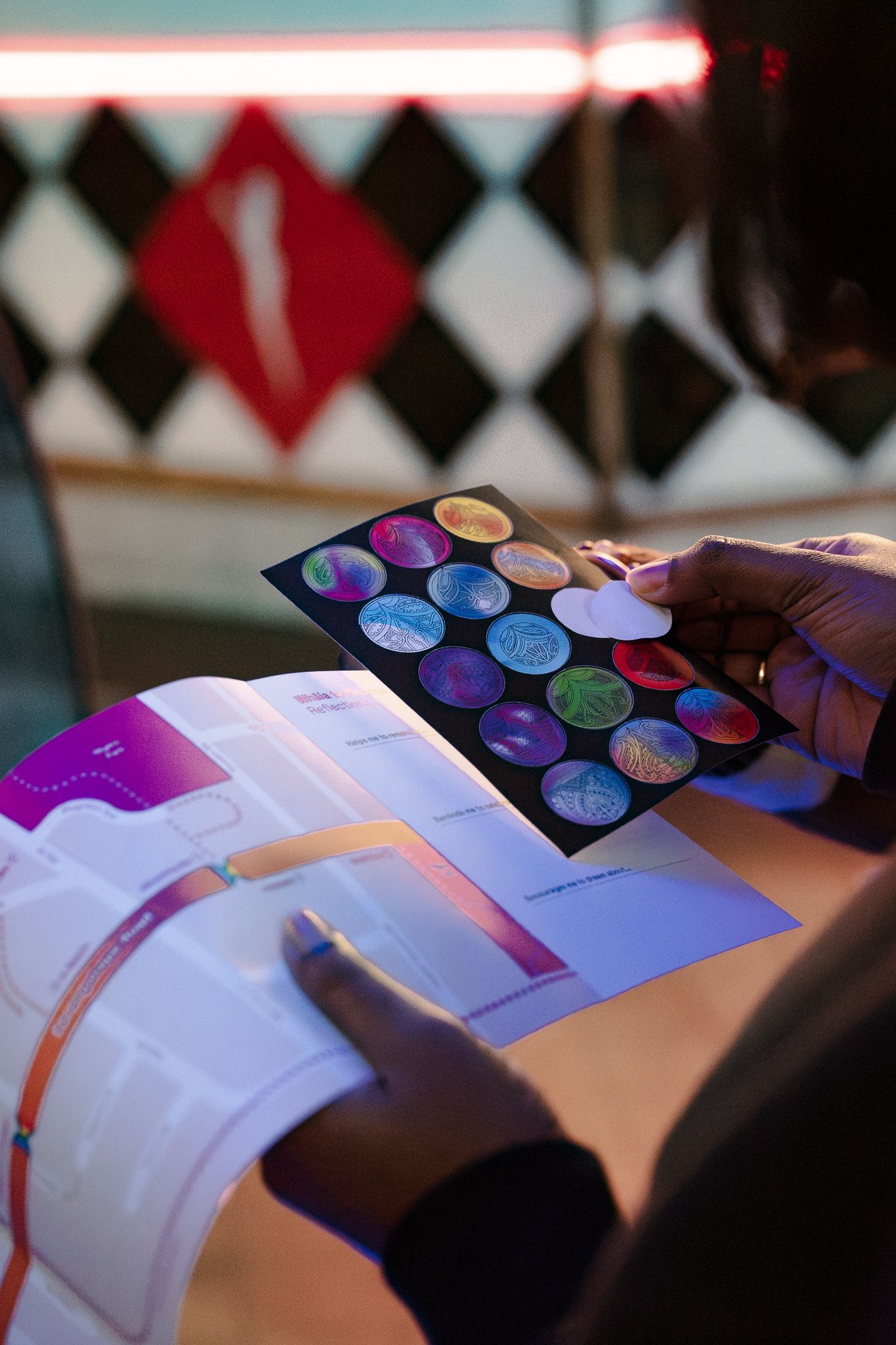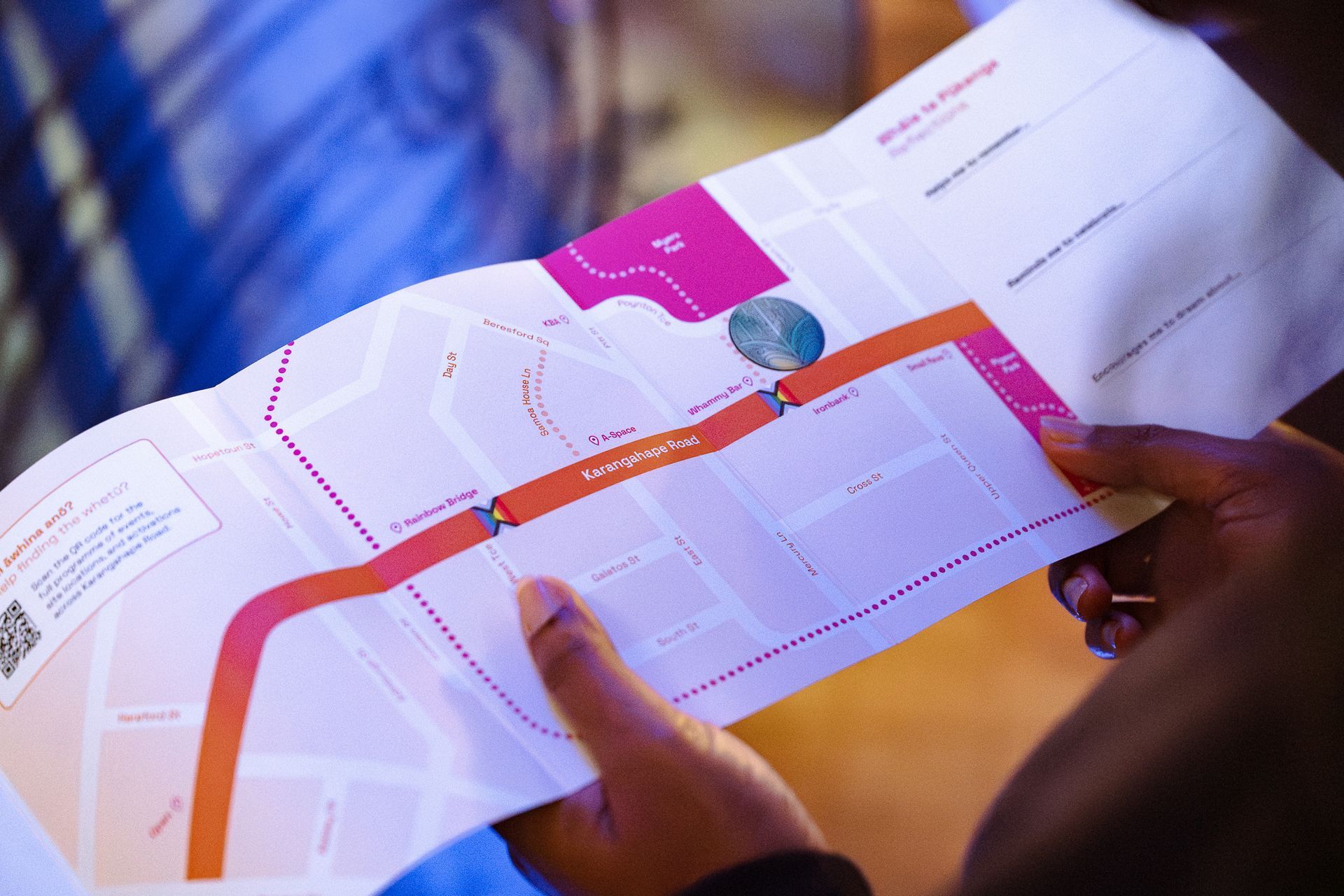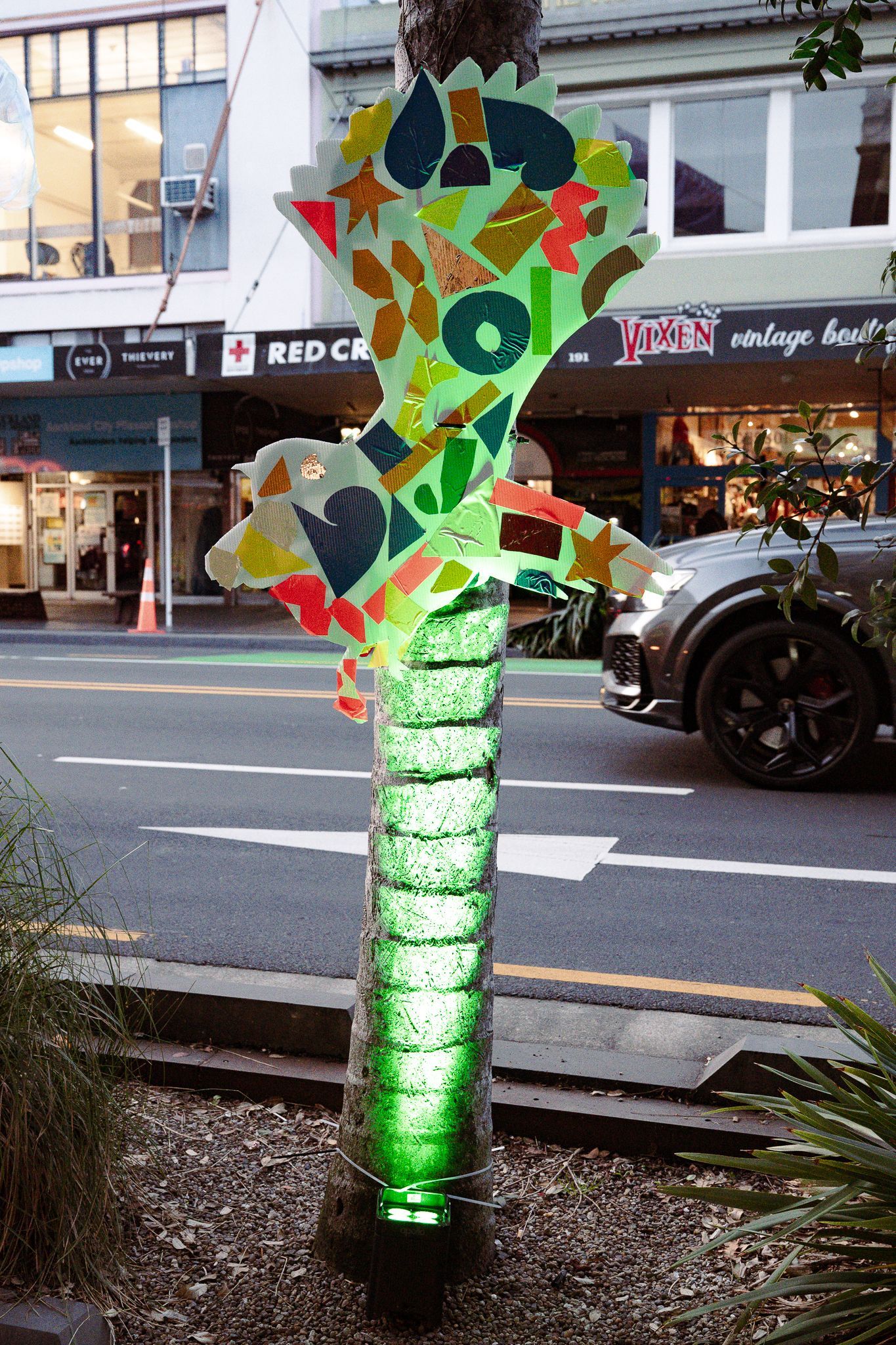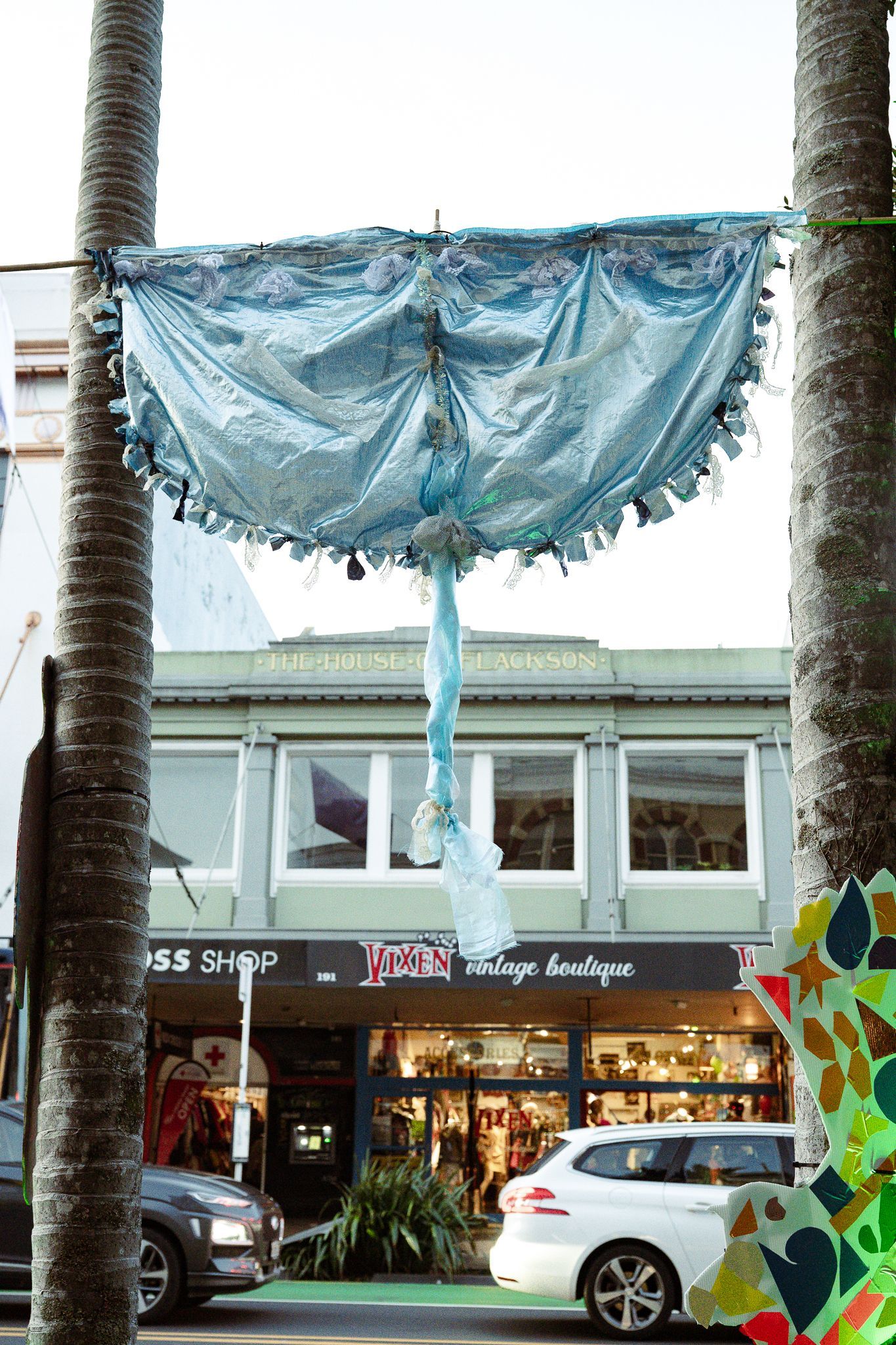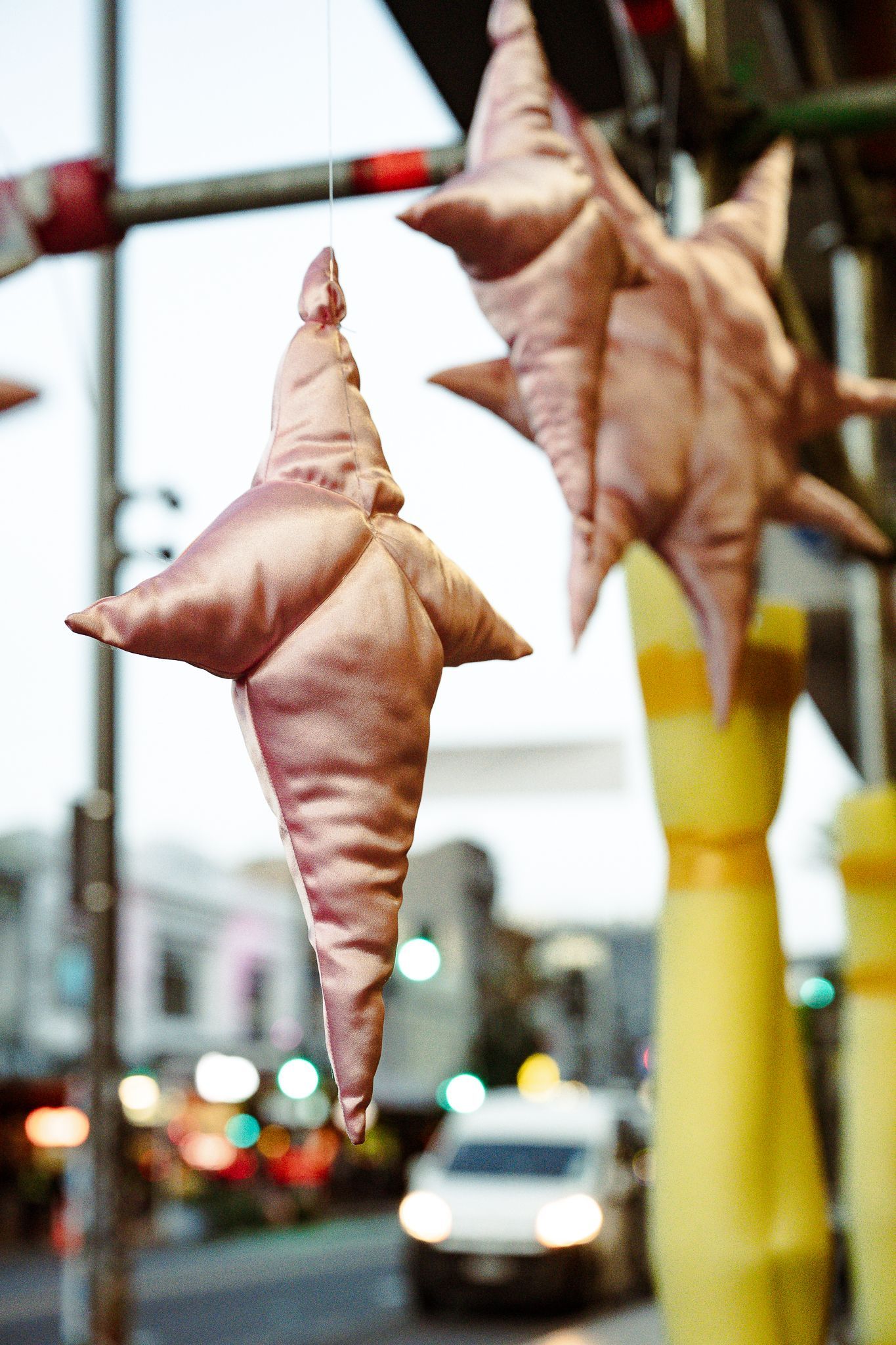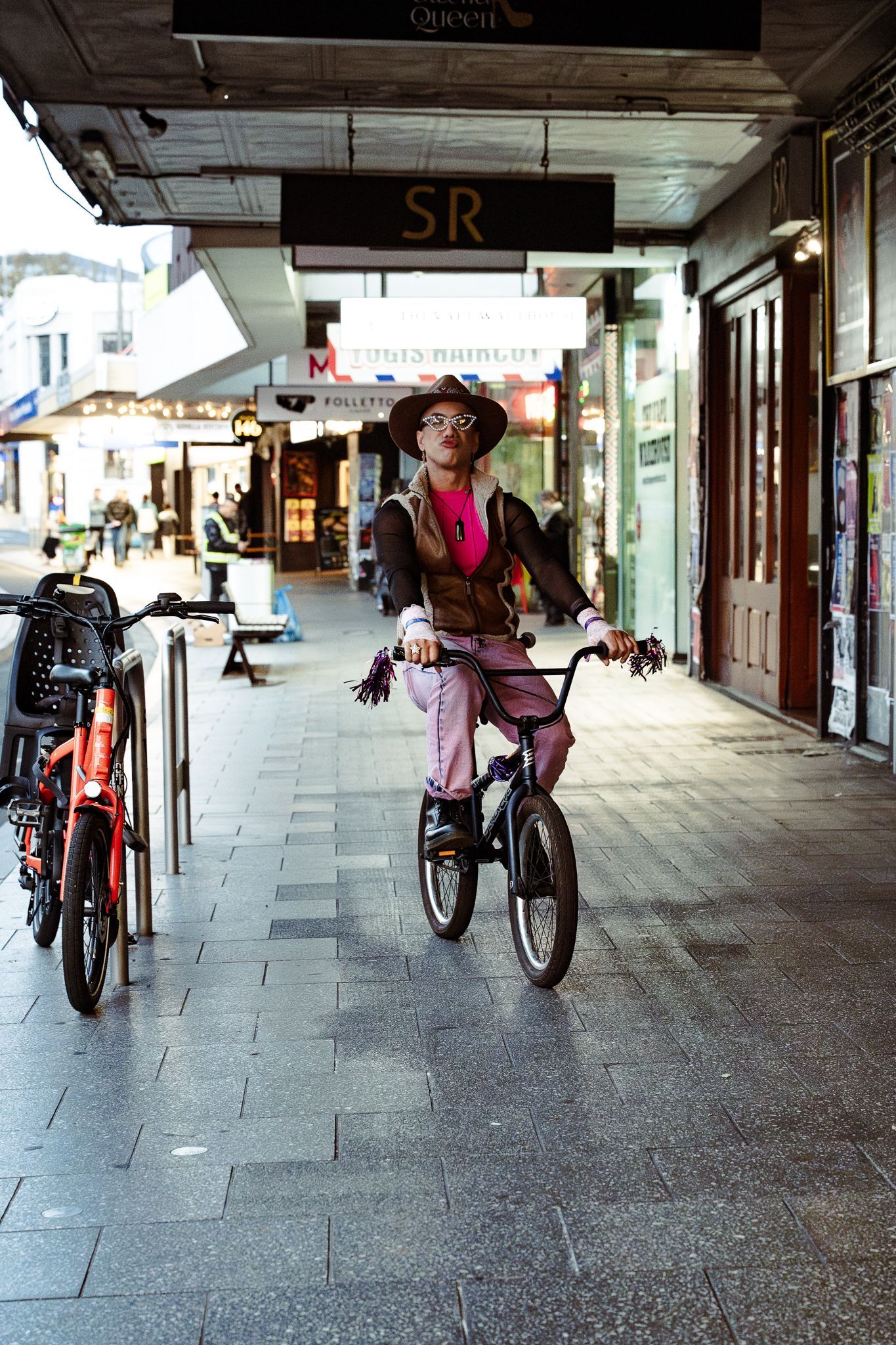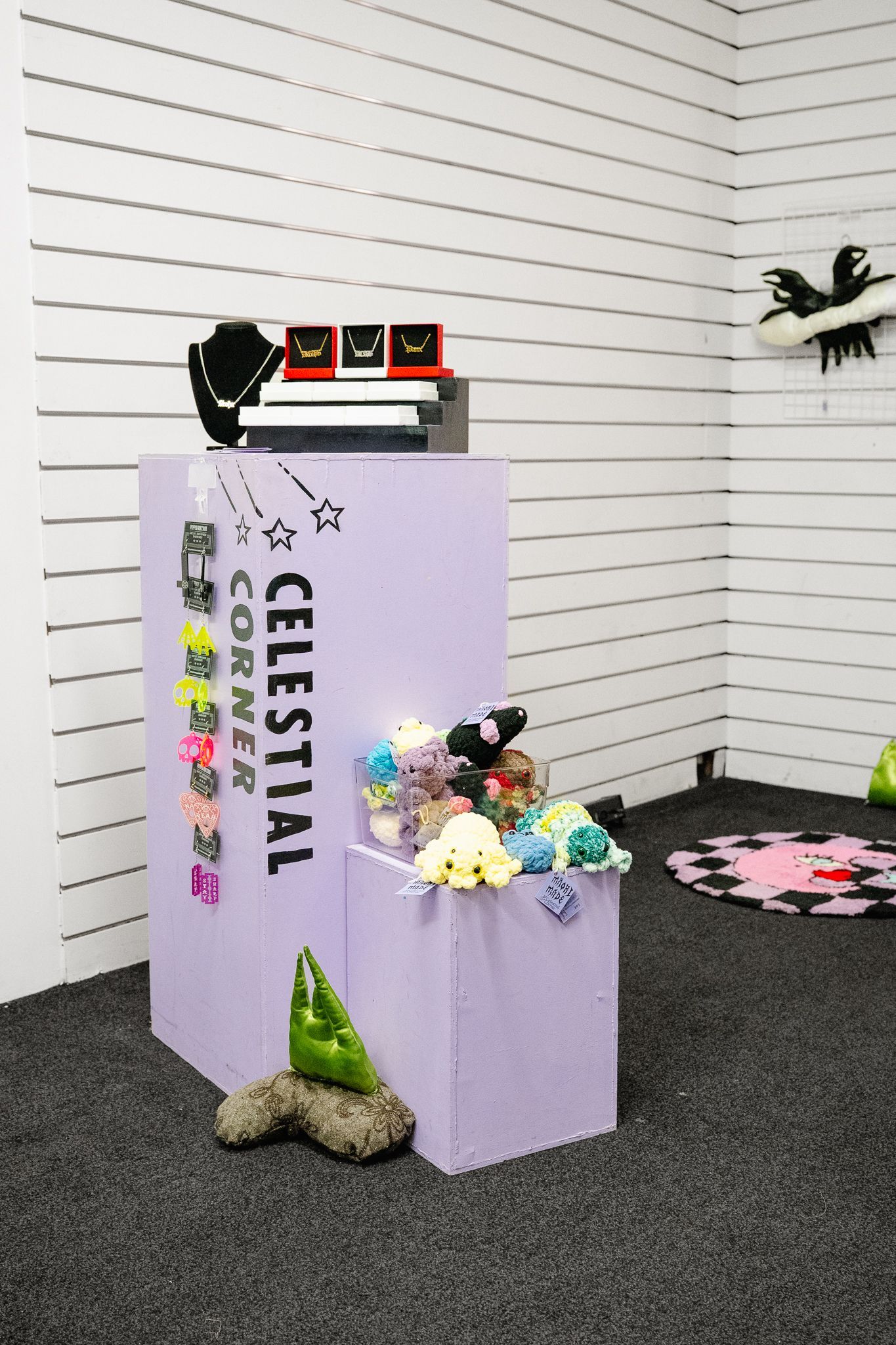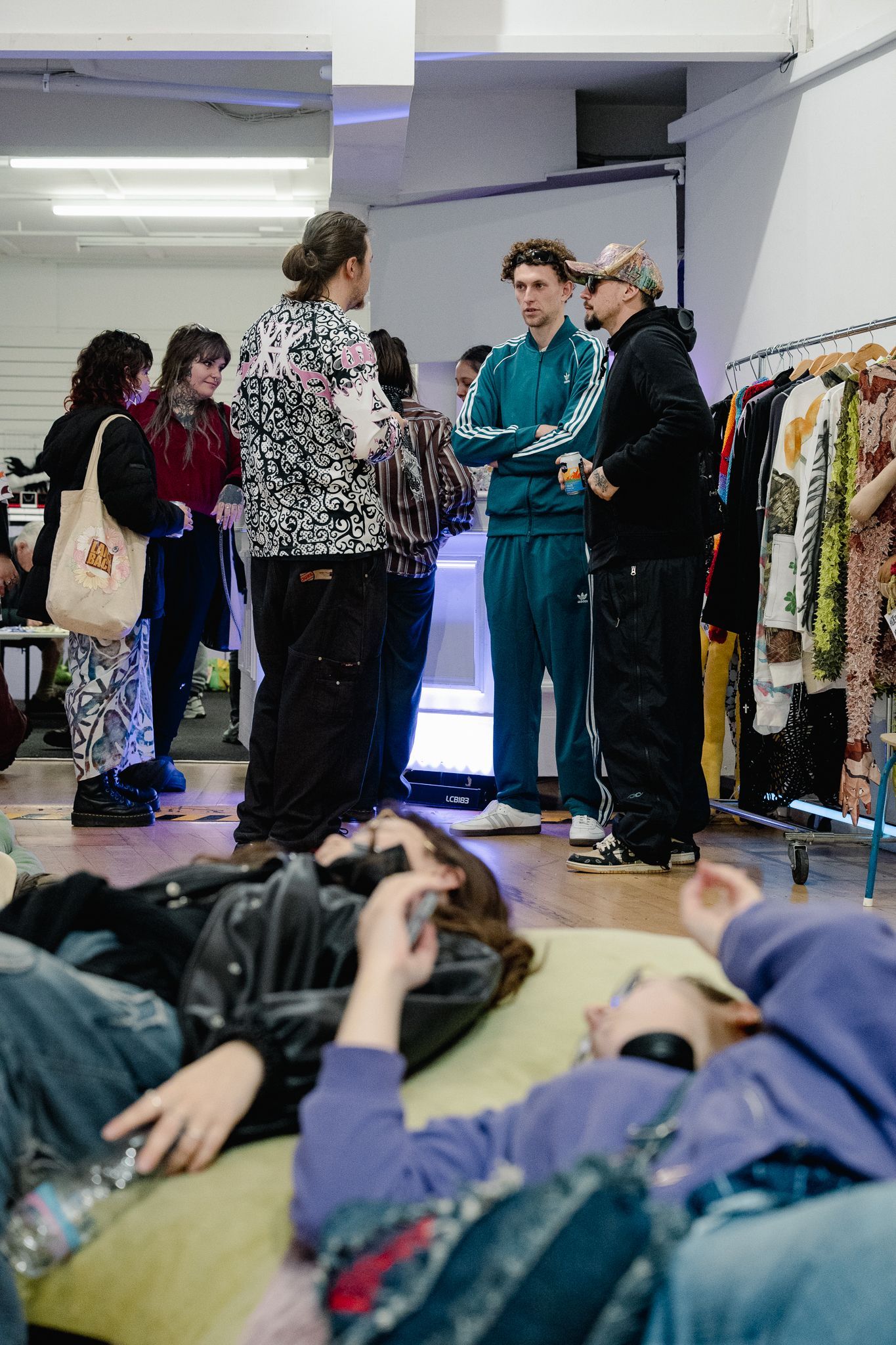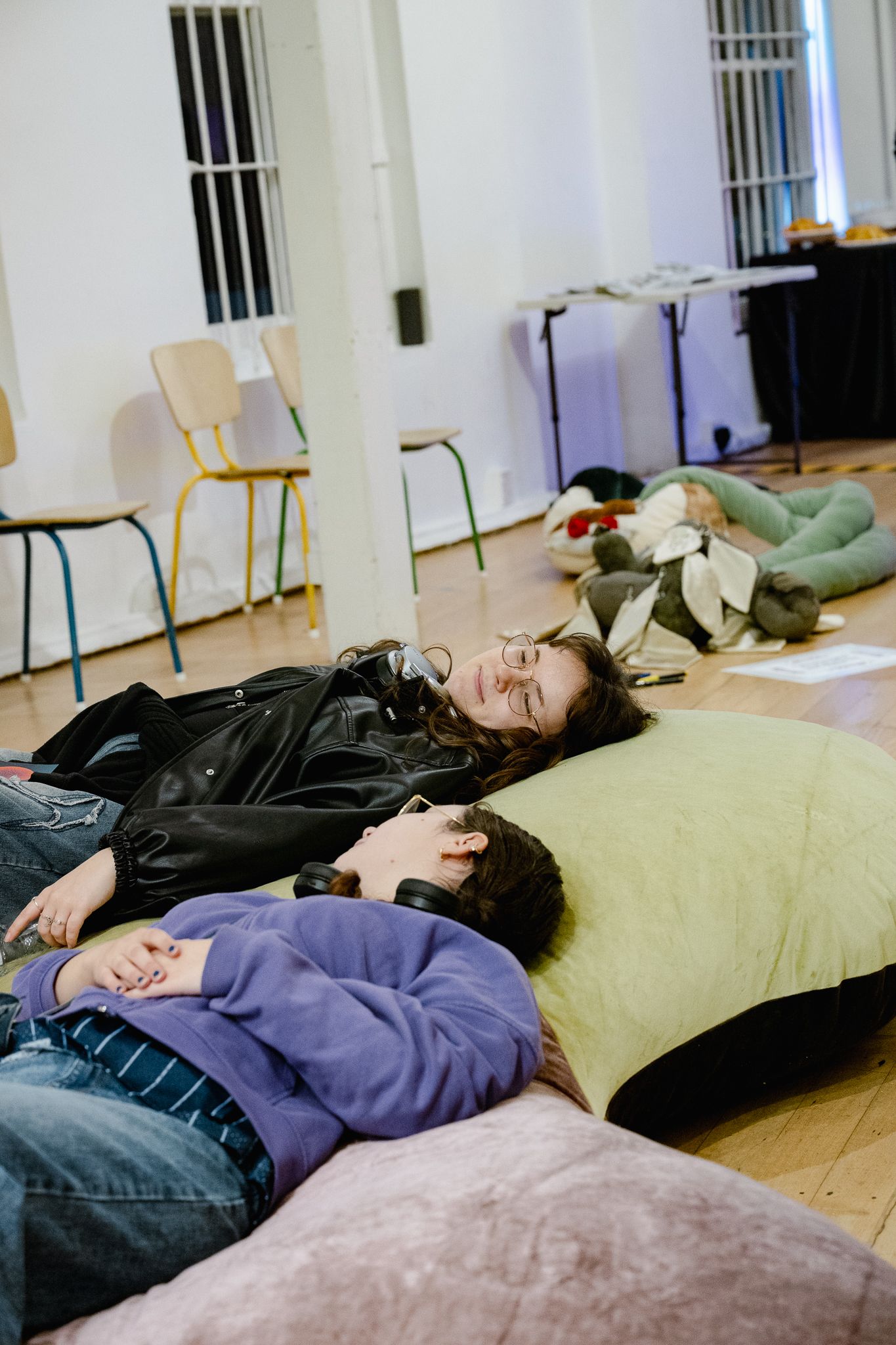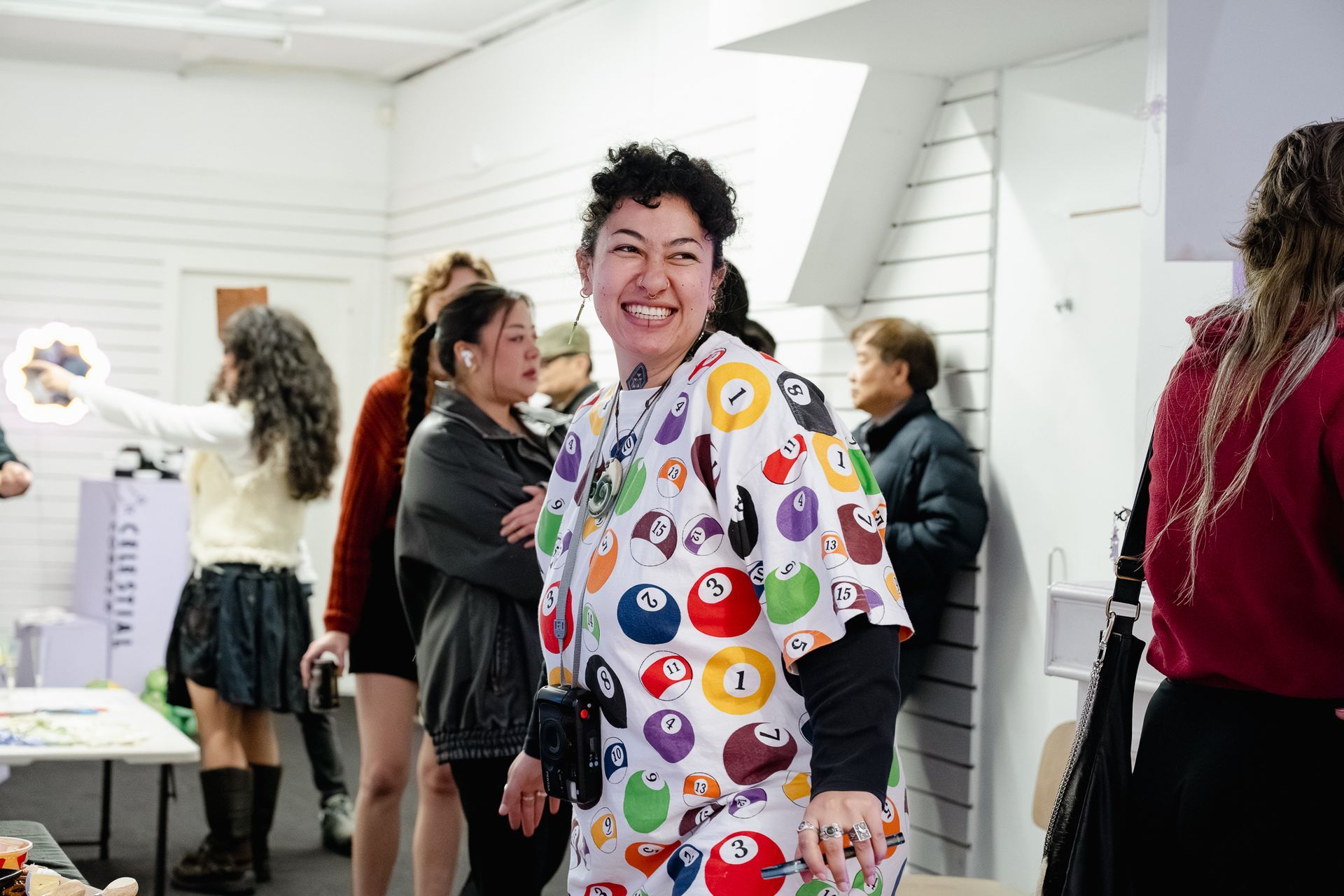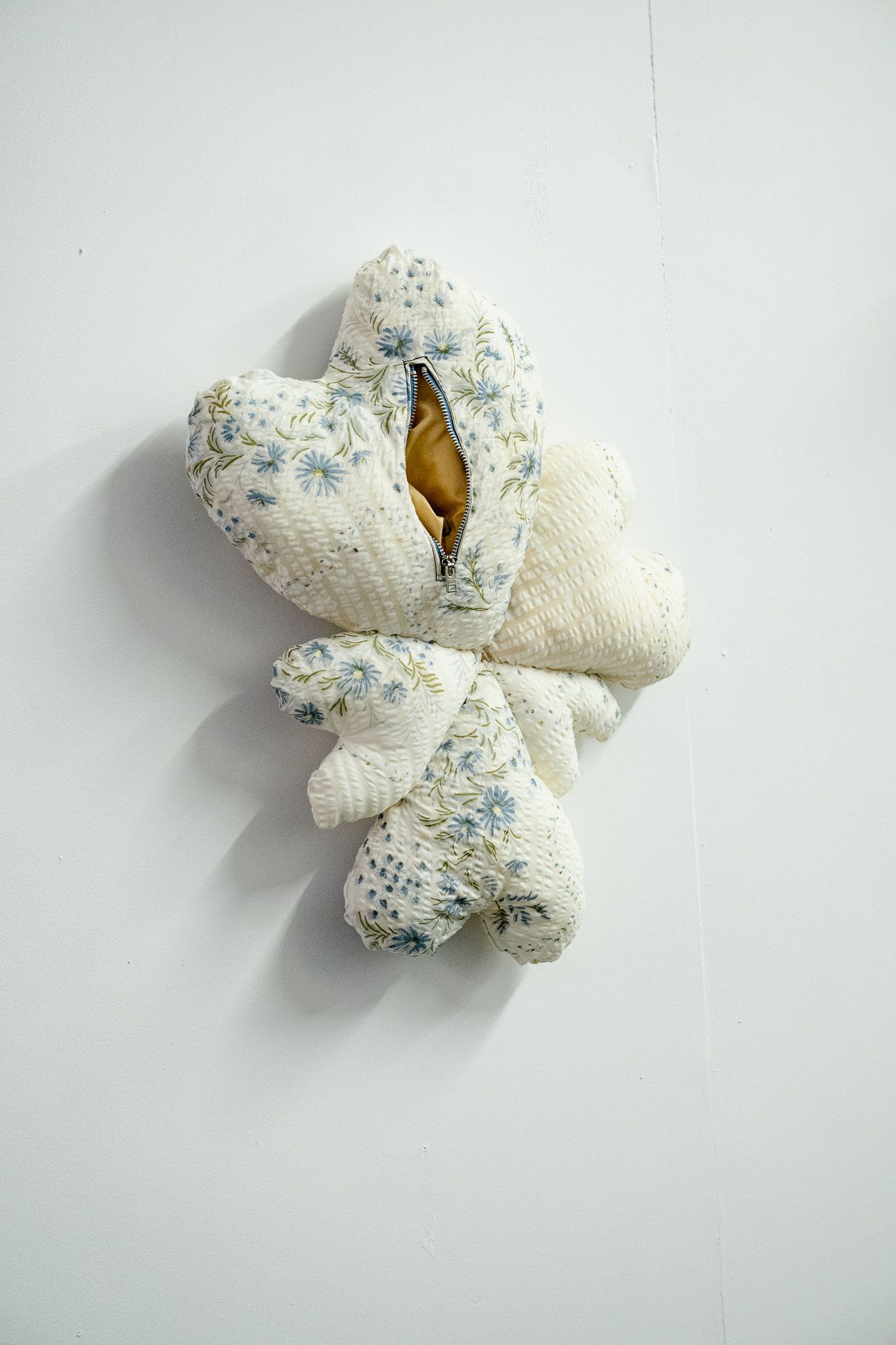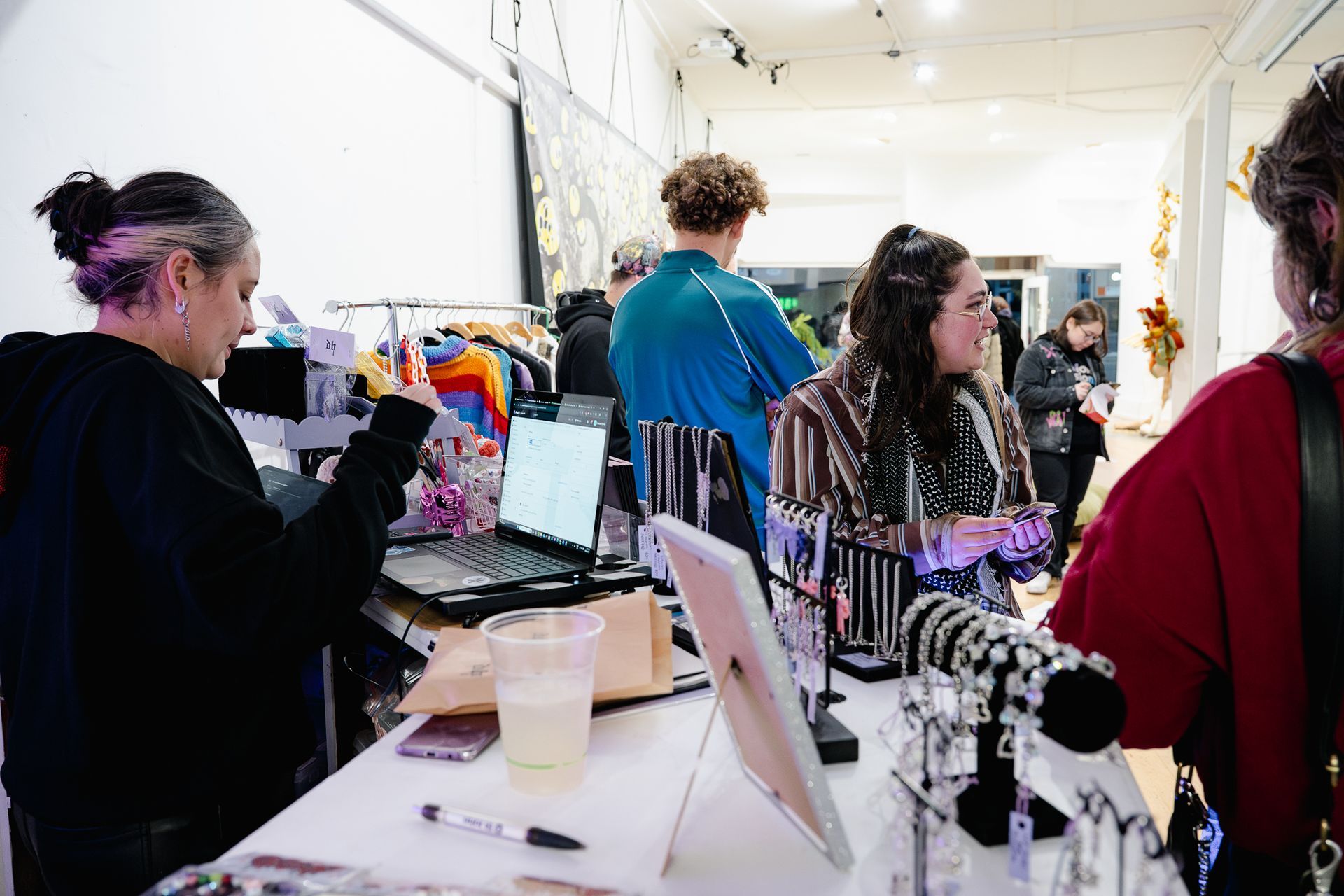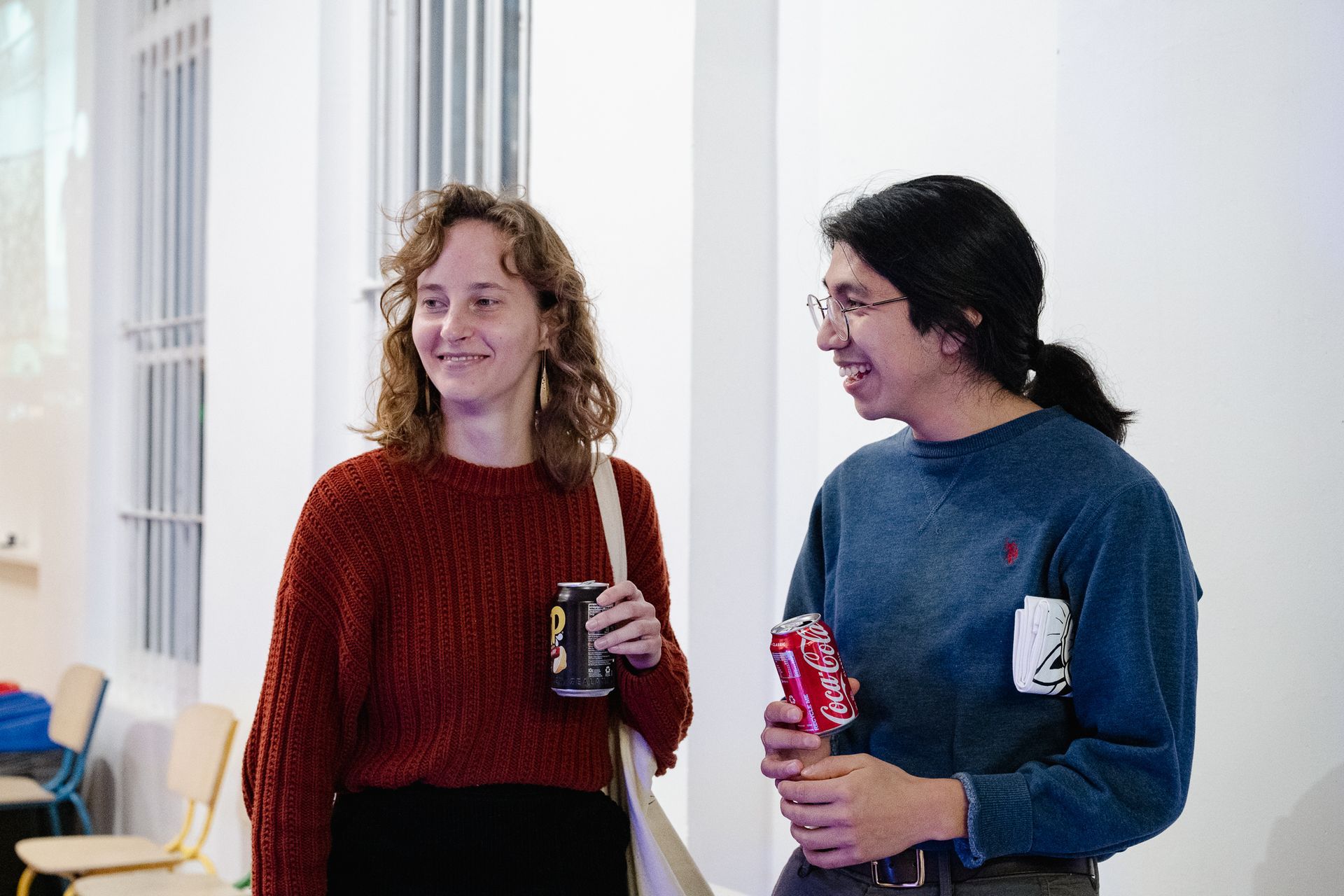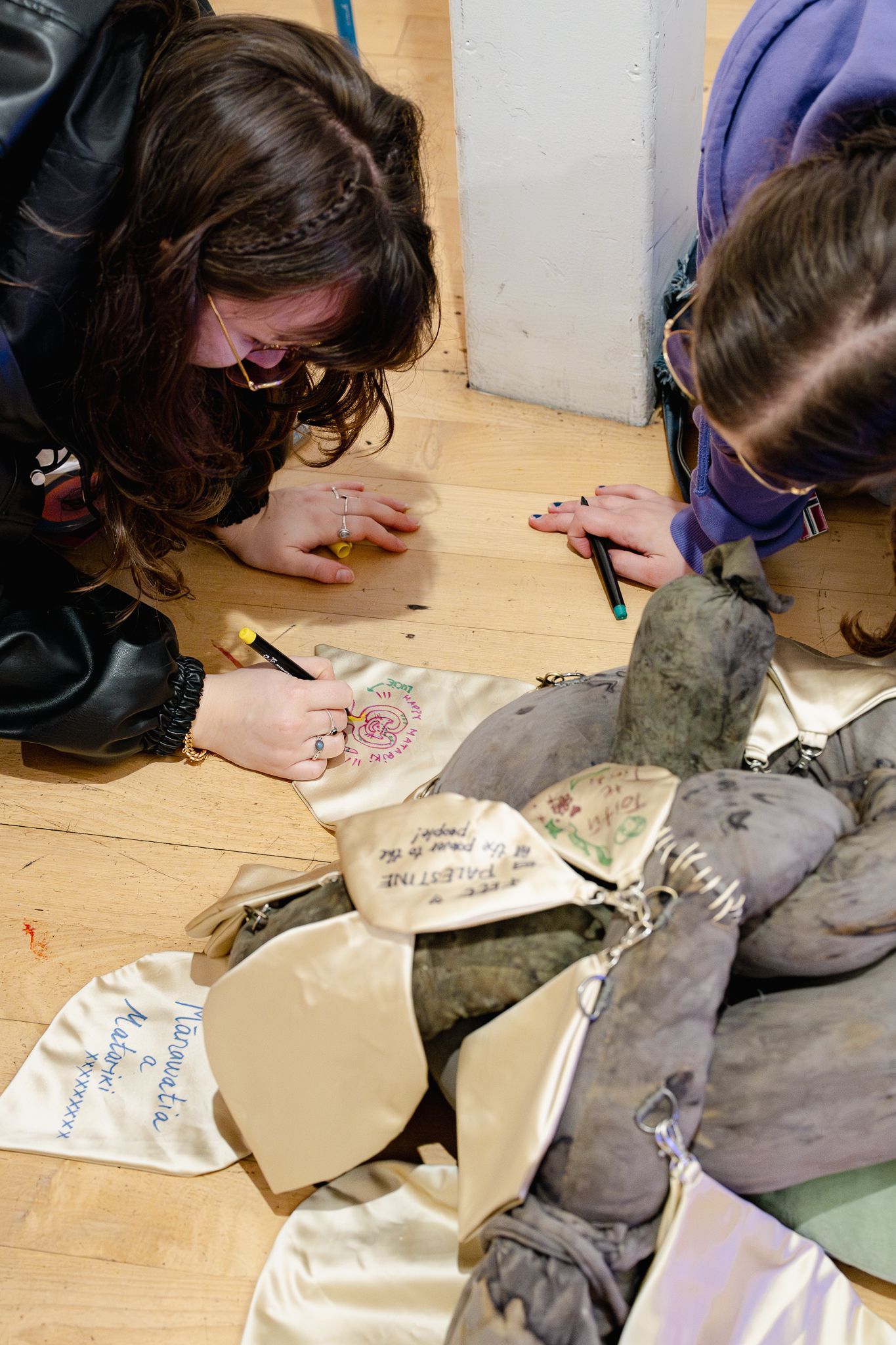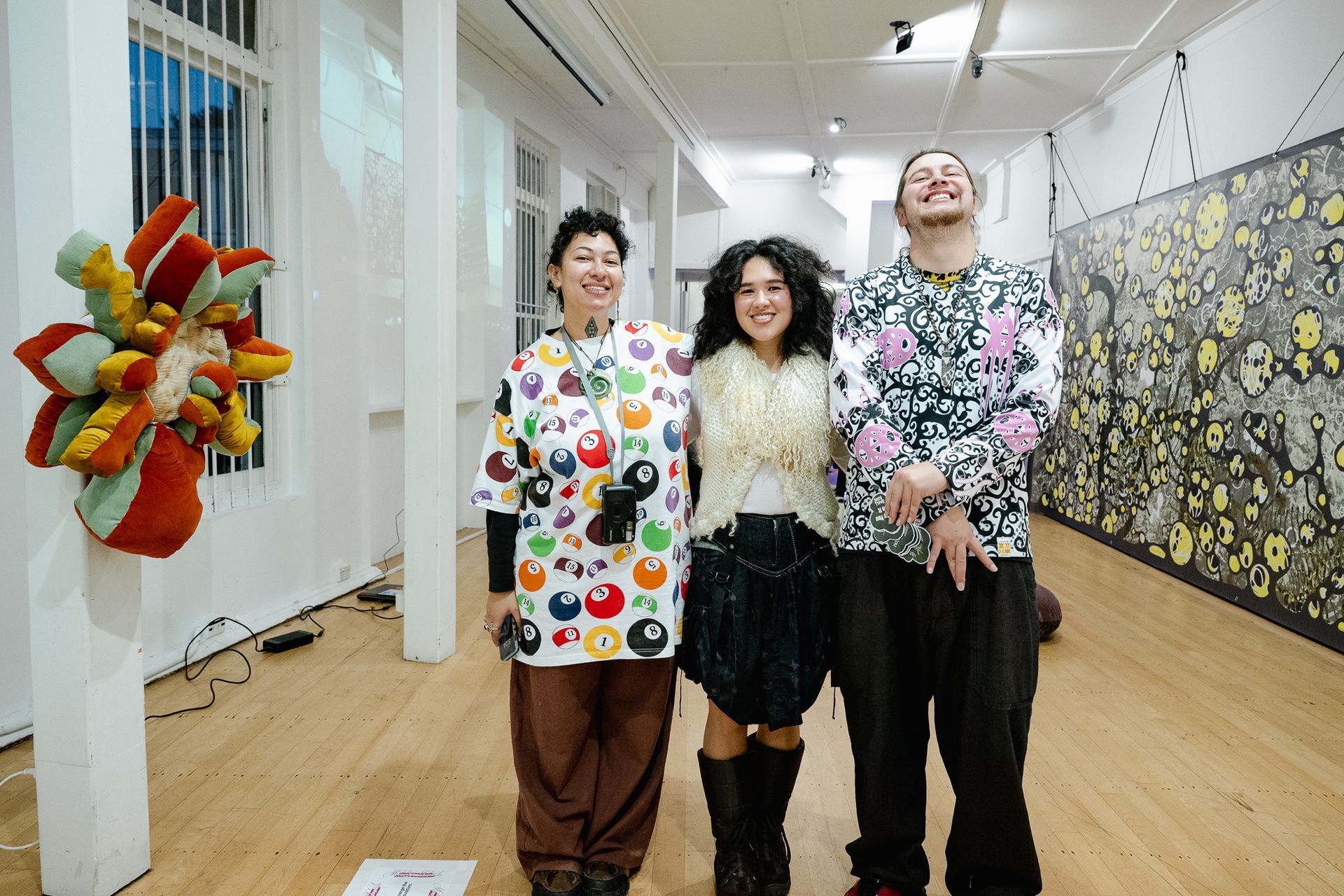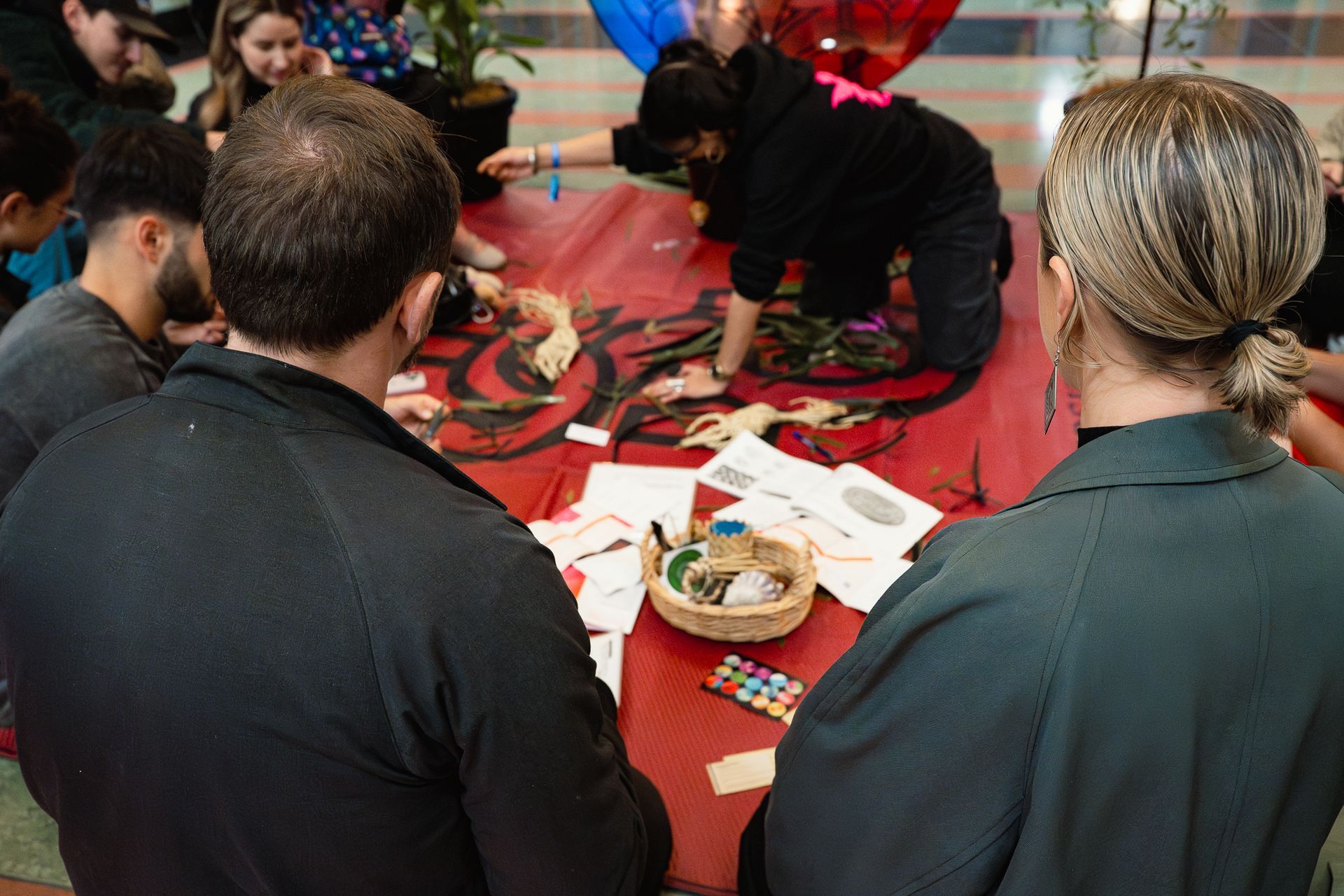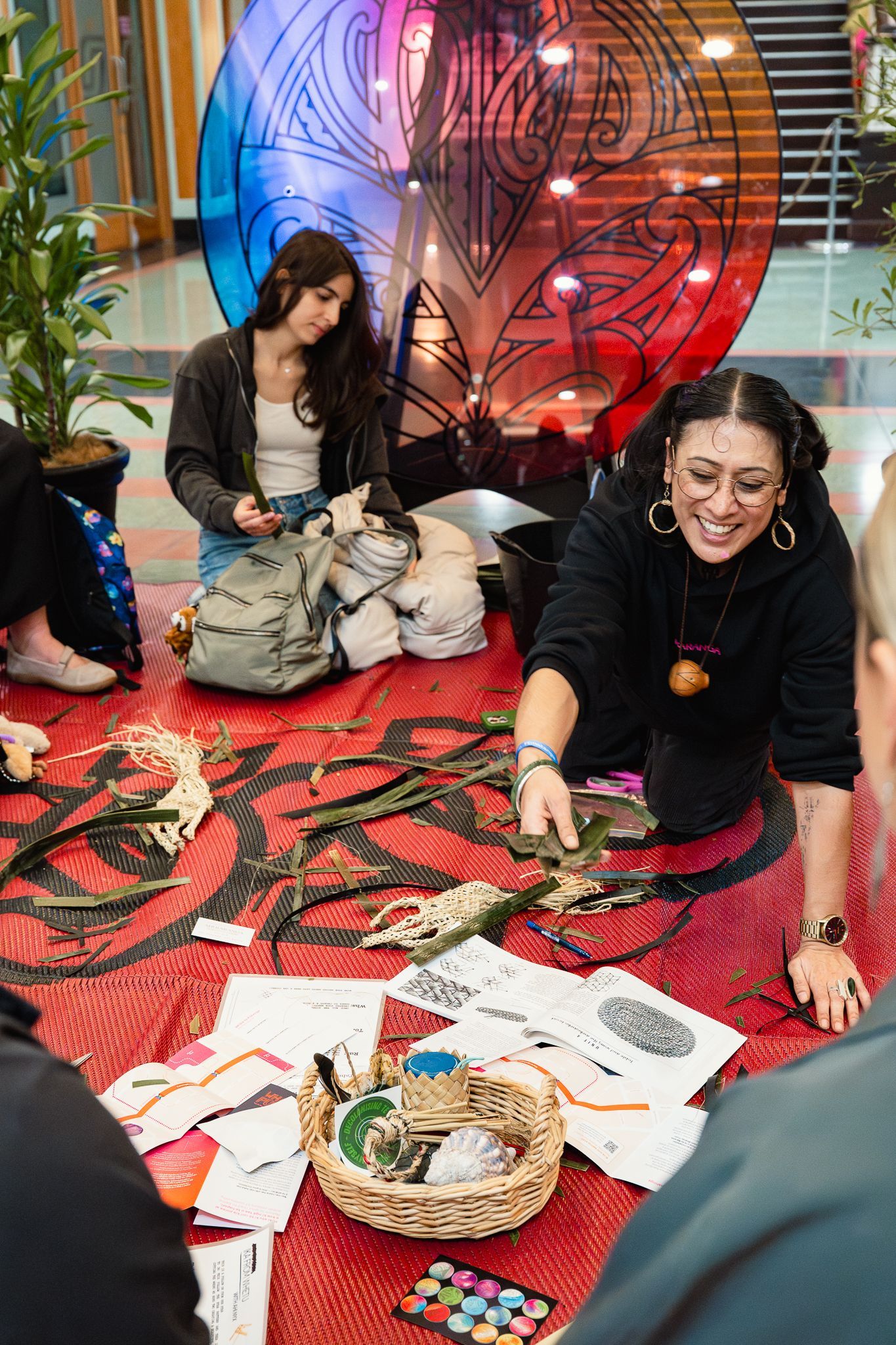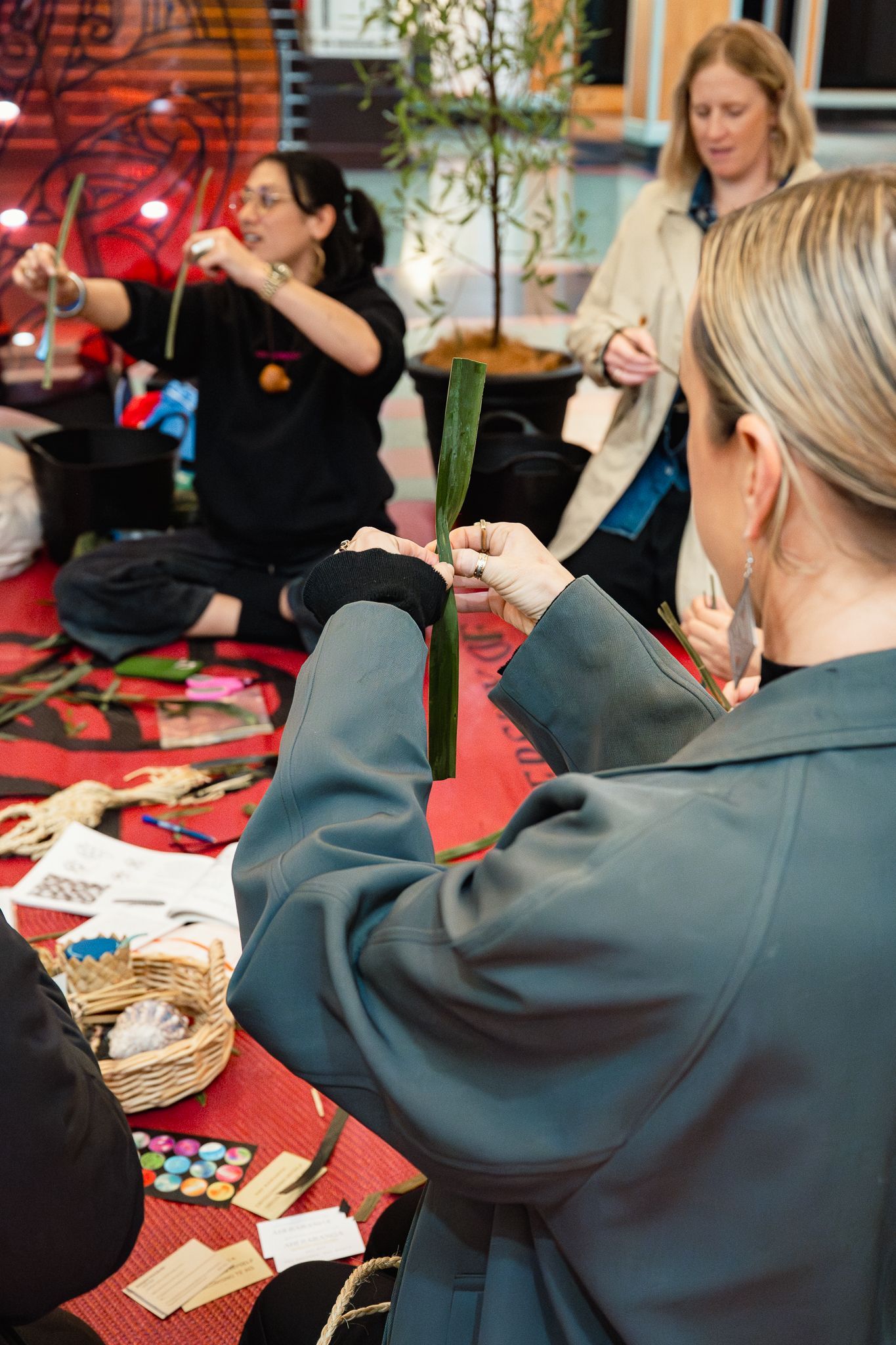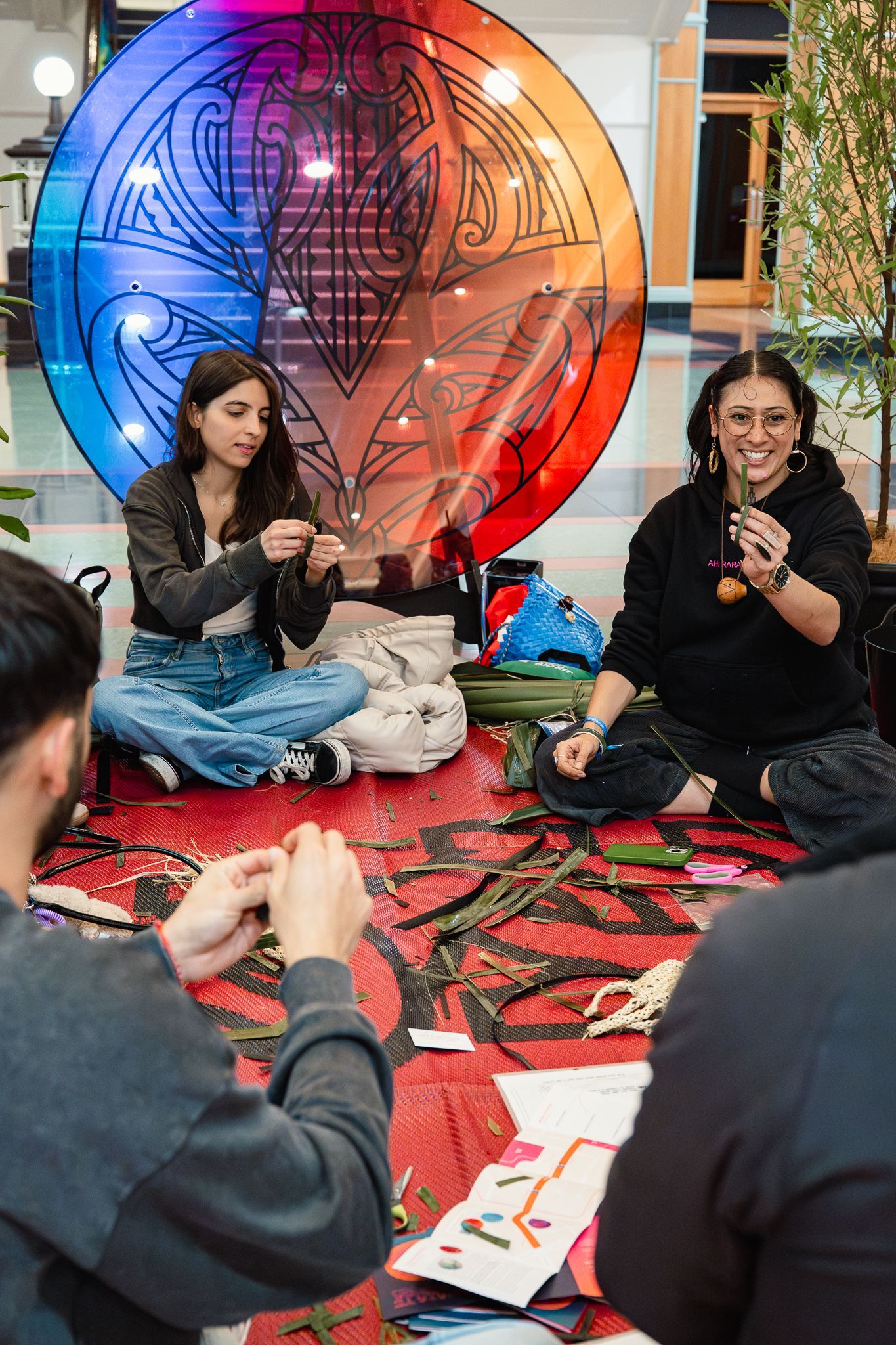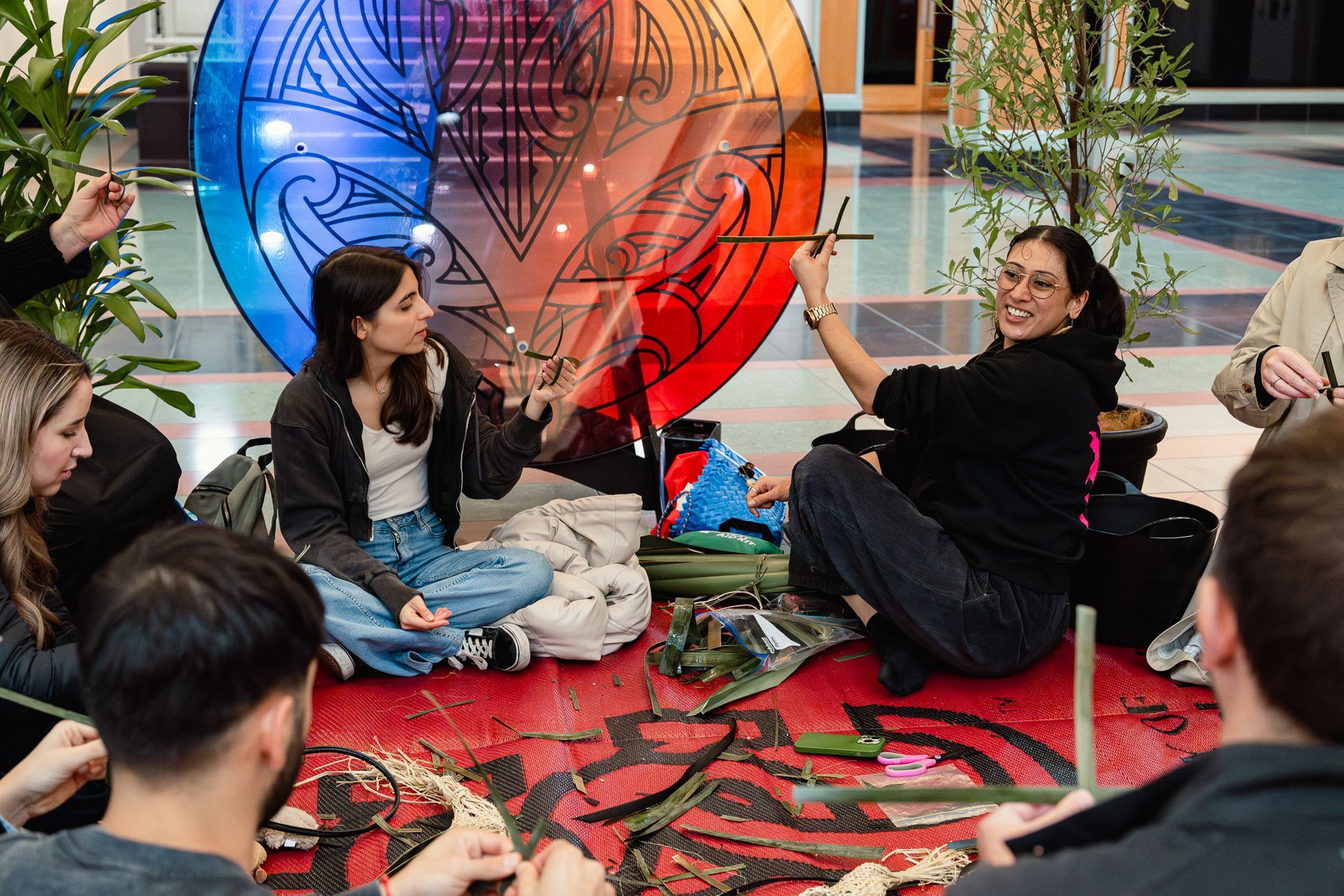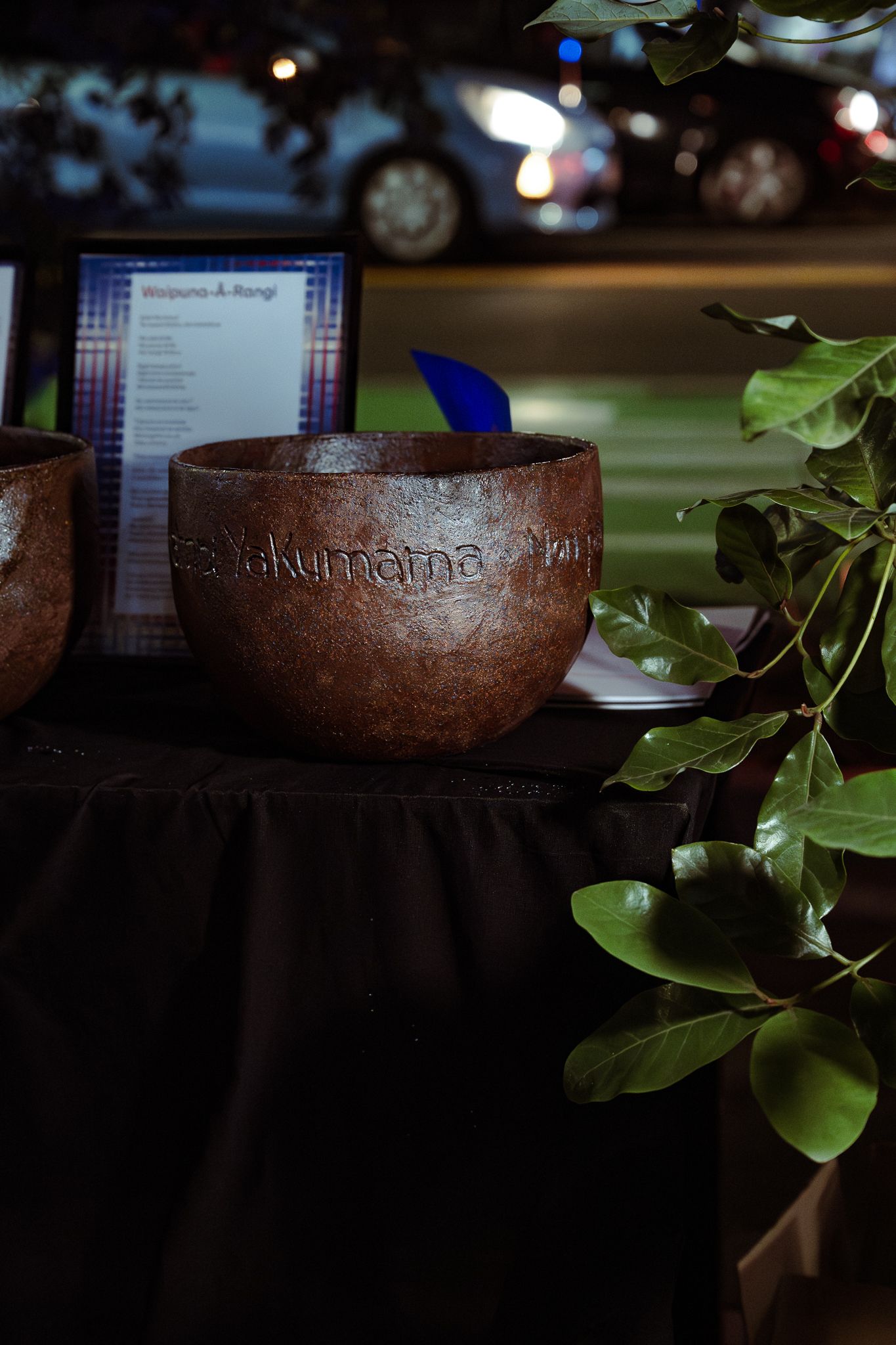

19 — 21 HUNE 2025
Hoki atu ki tōu Rori kia purea ai e
koe ki ngā tae o te Hapori
Return to your Road to bathe
within colours of community
— Original Artwork - Mahi toi by Teare Turetahi
Matariki, Te Puna O Te Ao Mārama 2022
—
Nau mai, haere mai — welcome to Matariki on Karangahape Road.
This June, we invite you to celebrate Matariki with us: a time to pause, reflect, remember, and reconnect.
From Thursday 19 to Saturday 21 June, the street will come alive with kaupapa-led activations,
window displays, projections, and much more. All of it led by our people, for our people.
This is your invitation to join us as we come together to honour the past, celebrate the present, and look toward the future.
Scroll down for the event programme
******
Whāia Te Waiora
WHANAU SPOTLIGHT
To celebrate Whāia te Waiora, Karangahape Road has been divided into three whānau sections, each led by different community leaders. ‘Whanau Spotlight’ introduces us to a few of our whānau members, in conversations around whakapapa, place and practise.
Read the full kōrero below.
When Nayesha walked into Open Café that morning, she arrived into a space she knows intimately — not only as a place she has worked, but as somewhere she has fed community, built friendships, and quietly cultivated her creative practice. Today, though, she is transforming its upstairs into something new — her own wharepora, a space to hold her weaving and making practice.
Whāia Te Waiora, the kaupapa that holds this kōrero, unfolds across Karangahape Road through a structure grounded in whanaungatanga. The road has been divided into three whānau sections, each led by a community leader, each responding to four whetū, and all held in relation to Te Puna o Te Ao Mārama — the central taonga toi installation gifted to the kaupapa by the late Teare Turetahi.
Nayesha leads one of these whānau sections — weaving together artists, venues, and taonga toi along her part of the road. Her leadership carries the same energy she brought to our conversation: softly electric, deeply grounded, and always guided by care.
Read more
As we entered the upstairs space, she proudly introduced us to Queenie— the mannequin gifted to her from a bestie that we came to know as a tipua, who holds her fabric studies and design experiments as they evolve. The presence of Queenie felt entirely natural here: another part of the quiet whakapapa of objects, materials, and relations that fill Nayesha’s practice.
That morning she arrived wearing a kaupapa T-shirt from Ihumātao. Two polished gemstones rested gently over her eyes — a small gesture holding space for both wairua and grounding. On her own handmade shirt, stitched in honour of her kuia Isabelle Waitī Mulholland, sat the roimata toroa (albatross tears) on each sleeve, with a manaia centred across her back. Every part of it carried intention, whakapapa, and care.
As we closed our time together, she reflected on the words of Hana Burgess and Te Kahurātai Painting: “Being in good relation is decolonisation.”
In many ways, that ethic sits at the centre of both her making and her contribution to Whāia Te Waiora.
As the rain padded its gentle rhythm through the upstairs windows of Open Café, we asked Nayesha to reflect on where she comes from, and how that shapes her work.
No hea koe? Ko wai koe?
Nayesha:
Interesting question. I feel connected and from a lot of different places. I whakapapa to Ruatoria and Ngāti Porou. Ko Ngāti Porou te iwi. I do want to acknowledge my kuia, ko Isabel Waiti Mulholland, she is the best and I love her so. I always want to acknowledge my kuia.
I grew up in Christchurch and went to high school in Auckland, Tāmaki as well, so I feel connected to a lot of different places. I moved to Karangahape in my twenties and have been here ever since — so I’ve been here probably close to ten years.
Ko Nayesha ahau, Nayesha Mulholland. I’m a maker,a learning weaver and researcher. I’m a textile designer; I studied textile design at AUT but I’ve been making and drawing for my whole life. I am obsessed with fabric and fibre and what it can do for our spirit. I love the way that cloth feels, not just physically, but as you carry it around with you day to day. It has a real beautiful way of setting the tone for your day. That’s all I am — I’m basically cloth.
From there, our conversation turned to Karangahape Road itself — and how it has become an anchor for both her creative practice and her sense of belonging.
What makes Karangahape Road special to you & your whānau?
Nayesha:
In so many ways Karangahape is special to me. I’ve never felt the wairua of this place anywhere else. The wairua is different and unique here, I’ve never felt anything like it before. I have been wholly embraced; all my quirks and crack up nature and downfalls or moments of celebration. The people I have met here have embraced it all and I haven’t found that anywhere else.
My whānau in my personal life haven’t grown up on Karangahape Road but I have found that same sense of whānau here. It’s really cool to have that whānau I grew up with as a kid and also that whānau that I’ve found as an adult, and having those come together — it’s really special.
On the corner of Howe Street and Karangahape Road you can see both Maungawhau and Te Waitematā. It’s grounding for me. As Māori living in the city and on around that corner, being able to see those markers reminds me of my connection — even in the middle of the city.
As part of Whāia Te Waiora, Nayesha has led one of the three whānau sections along the Hapori Rori Steering Committee — shaping her part of the kaupapa in response to Teare Turetahi’s Te Puna o Te Ao Mārama and the whetū that guide this season. We asked her to reflect on what it has meant to carry that leadership and be part of this wider collective unfolding.
Reflections on the Process — being part of the Hāpori Rori Steering Committee kaupapa
Nayesha:
It is a really special kaupapa to be a part of. It felt really grounded in whakawhanaungatanga and wānanga, and it was very collaborative. I think that’s one of the things that I loved the most about it — we were able to have all of these amazing conversations and wānanga leading up to making decisions about the kaupapa.
Everyone was there from the start. That was something that I really valued and it made the work feel a lot more connected and intentional, and like it was made with aroha.
I think one of the most beautiful things is that it’s been very whānau led. So many different people from different backgrounds, different kaupapa, different stages of their journey came into the space and were able to contribute and were heard, which I think is quite rare sometimes. It was really beautiful to see how open everyone was to learning and to listening and to contributing their whakaaro. And I think for me, that just made it feel really safe.
I think that’s something that I’ve taken into my own practice now as well, is that sometimes it’s not necessarily about having an answer or knowing what the outcome is, but it’s just being able to sit and listen and to wānanga and to move through things collectively.
As we talked further, we asked Nayesha how that sense of collective care carried through the wider kaupapa.
What did it feel like to be included in something built by community — not just for community?
Nayesha:
It felt really safe and intentional. When you have community at the heart of kaupapa like this, there’s a lot more care that goes into decision making. It’s not just about the outcome, but how you get there as well. That’s where you see the real aroha come through.
One particular wānanga stayed close to her heart.
Were there particular moments, wānanga, or conversations that shaped your perspective?
Nayesha:
One of the wānanga where we were talking about whakapapa really stood out to me. The idea that whakapapa isn’t just your genealogy, but your connection to the whenua, to your community, to your mahi, to your materials — that really resonated with me, especially as a fibre artist.
I think about where my materials come from, who has worked with them before me, who’s touched them, who’s grown them. That was a really special kōrero to have and has stayed with me.
Reconnecting with making — imagination reawakened
As we talked about her evolving practice, Nayesha shared a very personal reflection on how this kaupapa has helped open her creative world again.
Nayesha:
There was definitely a period where I wasn’t making anything. I had quite a few years where I didn’t really make anything outside of work or study. And now I feel like I can’t turn my imagination off. I’ll be walking somewhere or I’ll be sitting somewhere and be like, ‘that would be cool’, or ‘I want to try that’.
It feels really good to be making for myself again. And to make from a place where my whakapapa, my materials, and my imagination can all sit together.
As a maker deeply attuned to materiality, she spoke to the power of taonga toi to shift how people engage with place.
The Role of Taonga Toi — how are these artworks creating a sense of place, identity, and wellbeing?
Nayesha:
Taonga toi has the ability to bring people into a space of reflection. Especially in places like Karangahape Road where it’s really busy and vibrant and there’s a lot going on, having moments where people can pause and engage with mahi toi creates an opportunity to reflect and to connect with the kaupapa.
You can feel the mauri in the work and you can feel the aroha that’s gone into it. And that’s really special.
With the Ahurei drawing near, we asked what she was looking forward to most.
Looking Ahead: The Ahurei — what are you most looking forward to?
Nayesha:
I’m looking forward to seeing the road come alive — seeing everyone walking the street and engaging with the mahi toi and having those conversations. Matariki is a time for reflection and for setting intentions for the year ahead, and I think this kaupapa creates a space for people to do that, even if it’s just in small ways — even if it’s just having a conversation with someone or pausing in front of a work.
At its heart, Whāia Te Waiora creates space for people to encounter that collective care.
If someone visits Karangahape Road during the Ahurei, what do you hope they walk away with?
Nayesha:
I hope that they walk away feeling that they’ve been welcomed into the space. That they’ve experienced the manaaki that’s at the heart of the kaupapa, and that they’ve seen and felt the care that’s gone into the mahi and into the road itself.
We asked Nayesha about the connections she’s carried with other artists throughout this kaupapa.
Connections with other artists and kaupapa
Nayesha:
I didn’t get to meet Teare [Turetahi], but through meeting his whānau and being part of this kaupapa, I feel like I’ve met him in a way. His energy is really present here.
Ron Te Kawa is someone who has been such a huge influence on me as a fibre artist. The generosity of knowledge that Ron holds, and the way he shares his practice and opens up his knowledge — that’s really beautiful. It’s definitely shaped how I approach my own making.
I want to acknowledge Christy Tennent here and the magnetic nature of Open. Her tautoko has meant we have been able to build from dreams and follow whatever path unfolds in front of us, to look after our people and ground ourselves in manaakitanga. It’s a huge privilege to be by her side in community.
We closed with her reflections on what this kaupapa leaves her with.
Closing Reflections — what are you carrying forward from this experience?
Nayesha:
One of the big things that I’ll carry forward is the importance of making space for artists and creatives to bring their whole selves to kaupapa like this.
Our mahi is always connected to whakapapa — whether that’s to people, to place, to material. That’s something that I’ve really valued through this process.
As we came to the end of our time together, before we closed with karakia and chocolate lolly cake from La Noisette, Nayesha reached for this passage from Onamata, Anamata by Hana Burgess and Te Kahurātai Painting. She offered it as a way to hold the shape of our kōrero:
Through whakapapa, all of existence is whanaunga, existing in a natural state of whanaungatanga...
We propose that being in relation is ‘good’ as whakapapa has inherent value in Te Ao Mārama.
Relationships constitute who we are. Within this worldview, nothing exists in isolation. In fact, the notion of isolation is a fallacy. Everything in existence is infinitely and complexly in relation all the time. This shapes a reality of interdependency, where the well-being of the whole is dependent on the well-being of its closely related components, and vice versa.
When these relationships are at their natural state of balance, we are well.
In knowing our whakapapa, we can come to know how to be in good relation. Fulfilling these obligations brings intimacy, wellness, and joy. Knowing our whakapapa brings us joy.
In many ways, this wānanga with Nayesha unfolded as the kaupapa itself has: slowly, intentionally, through shared relation — where care was given to both the words we spoke and the space we held together. To experience what Nayesha spoke of yourself, check out the activities on Karangahape Road this Matariki as part of Whāia Te Waiora: 19 - 21 June.
When we met with Geneva AM at Sacrament — a new tattoo and nail studio tucked into the old O’Malley’s building on Pitt Street — she was preparing for her upcoming music video shoot at Goblin, balancing creative projects across sound, taonga toi and ritual practice. Ice patu moulds sat on the table beside jewellery from Neke Moa, and her nail art carried deliberate iconography of tipua, taniko, and tino rangatiratanga — symbols deeply embedded within her whakapapa and creative language.
As part of Whānau Section Two of Whāia Te Waiora, Geneva is activating A Space — a newly opened venue on Karangahape Road co-founded by her long-time friends at Acho’s. Their whakapapa runs parallel: both have grown up inside the ecology of K'Road, side by side, shaping and being shaped by the community.
Read more
For Geneva, whakapapa is not a static lineage — it’s a living practice of discovery. As we began, she spoke to the pepehā she carries, and the unfolding of her connection to Ngāti Ruapani and Ngāti Hingahinga.
No hea koe?
Ko Whakapūnake te maunga, ko Waikaremoana te roto, ko Waipoa te marae, ko Ngāti Hingahinga te hapū, ko Ngāti Ruapani te iwi, tēnā koe. That pepehā came from my uncle William who spent his lifetime learning that pepehā. We originally thought we were from Ngāti Kahungunu which we are, but we are now actually saying the Ruapani pepehā because that is a very noble lineage and it’s such a gift to learn about that especially since my uncle has passed away.
This deepening of whakapapa echoes through her song Urban Planning, where the urban landscape itself becomes part of her living genealogy.
Geneva:
I made a song called ‘Urban Planning’ to learn how to memorize it but also to talk about our landscape as a city. Growing up in this urban environment you see all of these archaeological sites like Maungawhau which used to be a Pā site or Queen street which used to be the Waihorotiu river and Karangahape used to be the top of some kind of cliff and there was a beach and all of those things are gone but they still remain underneath the surface of the city, so I just wanted to talk about how all this urban planning than Auckland has undertaken has become part of our new whakapapa as urban Māori and how even though we might not necessarily know our own Maunga, we have our tīpuna behind us and this army of ancestors who our guiding us through and bringing us together.
I’ve always been drawn by Karangahape, I think it’s a vortex, a nice one and I learnt that it’s part of this much longer road which is called Te Rae o Kawharu. He was a protector - and If you walked along Karangahape all the way to Manukau Heads you were under his protection. That was a really interesting thing to learn. By reciting them and acknowledging them they become part of that history and we reclaim that history again.
When asked to describe herself, Geneva resists a fixed answer — her identity shaped as much by movement as it is by place.
Ko wai koe?
Geneva:
Who am I, I’m Geneva, I grew up in Grey Lynn. I grew up with a motorway behind my house and now I live on Waiheke island, on a paradise Island and I make music and I love people and I love my city and I love Karangahape Road. I’m a lot of things but I'm everything and nothing at the same time. It’s a hard question to answer.
At the heart of Geneva’s current mahi is her upcoming album Pikipiki — a body of work shaped by years of reflection and resilience.
Geneva:
On Matariki day I’m going to be holding an album listening party which is a preview of my album Pikipiki which is coming out in August.
Why Karangahape Road for the listening party?
It is no coincidence that Geneva’s listening party for Pikipiki will be held at A Space — a continuation of her long relationship with Acho’s, who first began as a food stall before becoming a cornerstone of Karangahape’s night culture.
Geneva:
Where else could it be? Can you think of anywhere else? Karangahape is a place that brings people together and it’s diverse and bright and beautiful and light and dark, it’s got everything, for everyone! I’m so glad to be a part of that.
For Acho’s co-founders Nobe and Tomoko, their story echoes this shared journey: "We love being a part of the K’Rd community — we’re always here, and we love seeing you."
As her latest project, Pikipiki reflects not only Geneva’s resilience but her responsibility as an artist to hold space for collective wellbeing.
Ko te kaupapa o Pikipiki kia whakahiki te wairua, kia mauria mai te mauri, kia mōhio mai he mea pai i roto i tenei ao.
While Pikipiki carries traces of personal reflection, it is ultimately an offering of hope — a form of collective care through sound.
Geneva:
Pikipiki is all about overcoming obstacles and making sure that you’ll never lose hope: the last five or six years have been crazy. Everyone's had a crazy time and are still having a crazy time and I think it’s my responsibility as a musician to put something out into the world that isn’t negative. It may be reflective of negative things that have happened to me but I’ve always been able to twist them into something that’s beautiful and relatable to other people's situations. Once I release those songs they’re there for everybody, they’re no longer mine, so these last moments I have with them, I really treasure that but I’m also looking forward to sharing them with everyone too. Who knows how many lives it’s going to touch, it could outlast me: that’s how songs work I guess.
Speaking of how kaupapa can outlive us - being a part of something bigger than ourselves. How did it feel being a part of how the steering committee has been holding this Matariki celebration this year?
Geneva:
I have been loving the whole steering committee: how it is truly reflective of how the street actually works. Very open door policy very manaakitanga mai but also everybody’s in - everyone as once is in, you come along for the ride. I love being part of that. I think it’s really important to go along with all of these different tangents that present themselves at the time. There are so many opportunities to engage with the community in that way so I really appreciated the manaakitanga that I’ve had through this process.
What are you looking forward to feeling or experiencing during Whāia Te Waiora? The ahuatanga…
Geneva:
Matariki is very interesting because It’s not like Christmas, it’s not this totally upbeat thing. It’s this reflective moment where you’re thinking about the past year and what you’re trying to bring into the next year and what energy shift you yourself as an individual but also as a collective are going through. So I suppose the ahua of those whole series of activities and activations they are carry this mauri or transition and the passage of time. This passage of time that shifts between us as we move on with our lives. It’s an intense time of the year and it always hits me, all of the people that we have lost and the new relationships that we have and I'm grateful for every single one of those feelings.
Throughout her years on Karangahape, Geneva has carried intimate memories of tenderness, chance encounters, and quiet acts of care that continue to shape her relationship to the street.
What are some of your favourite memories or places on K?
Geneva:
This is cemented in my mind, this was surreal: I was coming home from a gig and I was walking along the road and it was just around where Urge bar used to be and the girls stand out there on the corner and this older lady, at 4am, she was dressed in black and she was doing this karanga to one of the girls. We were like, what is that sound; it was getting closer and closer to us and we turned around and this older woman was reconnecting with this lady who had been working there and she was a younger girl and she totally received her. They had this really long embrace and it was like, perhaps they were family members, I don’t know what the story was, I didn’t want to interrupt: it was a moment. That was something that stayed with me, I still think about them, where are they now, who were they? The street has been amazing like that, it's really the people. You learn so much about yourself just by the way you treat each other here and you have to be ultimately respectful of people’s space. If they want to bring you in, they will. They also don’t have to. I remember Margaret, she was great. I helped her buy a bottle of port once, with her own money, she gave it to me because she trusted me. After that she never asked me for anything again. Stuff like that where you’re like cool, I love you, but also you’re on your own buzz, and that’s fine.
She recalls her early years working at Verona, hosting her TV show upstairs at ALT TV, and witnessing the unpredictable life of the street.
Geneva:
I just love Karangahape in general. I used to have a TV show at ALT TV above Verona. I used to work at Verona in my late teens. There was always something happening, something going around. This one time there was a swarm of bees that went up and down the street and people were losing their minds, some people tried to brave it - that was weird! Everyone’s got their own memories.
Even within Auckland’s intense pace, Geneva finds her own sense of calm within its urban landscape.
How do you think taonga toi (artworks, installations, creative activations) are helping us come into a shared sense of place, identity, and wellbeing here on Karangahape Road?
Geneva:
I think the cityscape is a fairly unnatural place. I have a 3 year old son called Kiwa, shoutout to Kiwa. I did this calm birth course and they asked the mothers to imagine a calming place. They were talking about green, freshly cut grass, the ocean and the sand and my calm place is the city during Christmas time when everyone’s left to go on holiday and you get to walk around the city and you feel like you own it, for just that moment in time. That two week period where you forget what day it is. I would imagine myself wandering around, smelling like hot tar with an ice cream and that was my calm place. Auckland is a very harsh environment and you do have to be a certain kind of person to live here and it draws people in from all over the country and the world because it’s the only place that is like this, here. It develops who you are and it challenges you and it's not easy at all and that’s what I like about it. I love the people as well. The challenge of living in Auckland is great.
As Whāia Te Waiora comes to life, Geneva holds a simple but powerful hope for those who enter the space.
If someone visits Karangahape Road during the Ahurei, what would you want them to walk away with — not just in terms of memories, but in terms of feeling?
Geneva:
For all the whānau that are coming for this particular time of year to celebrate with us, I want them to come away with a sense of unity, kotahitanga, the feeling of aroha, love. I want them to feel like they can take in anything, do anything and ultimately just go on and thrive.
St Kevin’s Arcade offers a quiet refuge from the drizzle on this midweek morning, as we duck inside to meet with Pici owner and head chef Jono, who beckons us inside the earthy and dimly lit restaurant he’s famed for. Set up in 2021, Pici quickly became one of Tāmaki’s culinary favourites, most recently being crowned the Best Central Auckland Establishment at the Lewisham awards. It’s easy to see why - the stylish spot, sandwiched between the soft joyful din of Bestie Cafe and the busy Rainbow Crossing fronted by Lim Chhour, emanates a unique warmth and intimacy.
As part of Whānau Section One of Whāia Te Waiora, Jono and the Pici team will be hosting their annual community boil up, a gesture of manaakitanga that feels so authentic to Jono’s identity, kaupapa and his central role within the community.
Read more
Jono is a natural host and as he invites us inside, he proudly tells us how he repurposed the old prep table in the space to make the new bar, which is to open officially in a few days time. Everything from the collection of natural and local wines to the dark wooden interior feel like it’s been there for centuries, anchored in the whenua, shaping the identity of contemporary Karangahape Road. Jono, a keen outdoorsman, chef and also an elected board member of the KBA Executive Committee, beams with pride to be part of the fabric of Karangahape Road, and we learn about his hopes for the future of the community and what Matariki really means to him.
No hea koe? Ko wai koe?
Jono:
Kia ora I’m Jono from Pici, I whakapapa from Ngāti Rangiwewehi down in Rotorua and Ngati Manu in the Bay of Islands. I’ve got a pasta restaurant and wine bar on Karangahape Road. I take pride in being part of the Karangahape community and am getting excited about Matariki coming up: how we can celebrate that together and get behind the whanaungatanga and manaakitanga of inviting people in here and creating a space that were proud of and that represents who we are.
What makes Karangahape Road special to you and your whānau?
Jono:
Karangahape attracted me mainly because it feels like a place for everybody. I feel like everybody can and should feel safe here, it’s a place that brings a lot of diversity and mana. It's got a really long history, Pre-European too, of being a place of Tainui and Ngāti Whātua. I think you can feel that wairua here. I think you can really tell, in Tāmaki it really attracts interesting people, artists. If you've got the wrong vibe you might not feel that comfortable here. When I moved back to Tāmaki, I was trying to figure out where I was going to go after being away from ten years overseas. I thought I was going to go down to the Bay of Plenty and that ended up not working out and we decided if we were going to move back to Tāmaki and open a restaurant then it’d have to be on Karangahape Road, then this space opened up right in front of us and it all just fitted together how it was meant to be and the rest is history.
Jono reflects on past Matariki Celebrations and his hopes for the identity of Karangahape Road in the years to come. He celebrates the diversity and process of this year’s Matariki and how the community has seized this opportunity for kotahitanga.
How do you feel this matariki kaupapa- Whaia Te Waiora is different or unique this year to what’s been done in the past?
Jono:
I think since we’ve had the public holiday it's always been What really captured it for me was the first matariki, 2021, the street was absolutely buzzing. It had nothing to do with the set-up at that point but you could feel the mana on the street, there were people everywhere, it really felt like New Year. Having the New Year in the middle of Summer is what we know but the New Year is traditionally a winter celebration. That felt to me like the right thing. I don’t know if there are other precincts around Tāmaki that have the same Māori kaupapa that we have up here, so I feel it's an opportunity for us to capture that wairua and keep going and work on that. The last few years have been great but I feel like they haven’t been organised in the way the community wanted to, they were great but compared to the 2021 we haven’t quite captured that in the last two. The different approach coming from the community this year we can all go - What are we doing? What is everybody doing? Who's got the energy to put into it? How can we support you or be supported in making that kaupapa come to light? The whole community is a part of the steering of the direction we want it to be, to a point that it can be something different for everybody and that’s okay. For our kaupapa we always do a Boil Up and change the menu, and do our version of a hautapu in the afternoon: that’s what we do and we can capture it. SMALL RAVE is doing their version of it and I think that’s what is important, in the whanaungatanga is to let people express themselves, and I think that’ll really show on the night and over the whole month.
Jono calls for greater visibility and understanding of the area’s history: of Hape, acknowledging the past of this formidable precinct and encouraging that call to be heard beyond Matariki and throughout the city.
Jono:
I think it’s important to tell the story of where Karangahape is now and where it has been. The story i’d love to tell more and this goes beyond Matariki, the Pre-European story hasn’t been told enough and the kaupapa that I’d love to see: you go down to the waterfront or here and there and there’s these big beautiful carvings around a kaupapa that don’t seem particularly Māori to me but I feel we don’t have that here so much but we do seem to have preservation of European history, so the kaupapa I’d love to see is telling the story of Matariki but also the story of Hape and the mana this place holds. In the eyes of the tourist: you walk out of the station and boom - this is where you are, this is where you are, this the mana of the area, so when you walk down the street and you feel it and I think you do feel it but i think that story can be told more.
Reflecting on the key role of Taonga Toi at this year’s Matariki celebrations - What are you looking forward to seeing, feeling or experiencing during Whāia Te Waiora?
Jono:
I am super excited to hikoi up the street and visit all our different whānau and see what everyone else is doing and feel their wairua, their mauri. I’m excited to see the stuff that I don't know about because when you have community, and everyone expressing themselves, there’s going to be some surprises and that’s really exciting.
In asking Jono what it means to be a business owner, whānau member and part of this year’s steering committee, he reflects on his own māoritanga and continued learning and desire to impart that knowledge to those on that same journey.
Jono:
It’s been a great honour to be a part of the steering committee. I feel the mana of being a part of that and having that responsibility to show up the best I can. To let others’ kōrero shape my opinion too, as I don’t feel particularly educated in tikanga, so It's a lot of learning for me too. That's what I'm taking from it - to be humble and do my bit and hopefully be able to impart some whanaungatanga onto others. For a lot of people, Māori and Pākehā, anybody else, there can be a lot of whakama about being unsure and being knowing and it’s being reassured by the people around me, by listening and learning and feeling like you can reassure other people that they can be who they are in that space without accidentally offending people.
As we close our conversation, Jono honours the continuation of learning, being guided by the community and the whenua and to uphold the legacies of our tupuna.
What do you hope whānau feel or experience and what do you hope you continue to learn beyond this Matariki, for Karangahape Road for the future?
Jono:
I envision there being Pou on either ends of the street where the sun rises and the sun sets and that story being told when people walk out of the station they can read something that’s going to tell them about the Pre-European history about where the water used to run and where the energy goes and who walked along here and the tipuna important to this area and the chiefs that have done amazing things. There’s a massive history here and to uphold that heritage that for me, personally I would love to see. Matariki is a good stepping stone towards that - bringing that focus back to Karangahape.
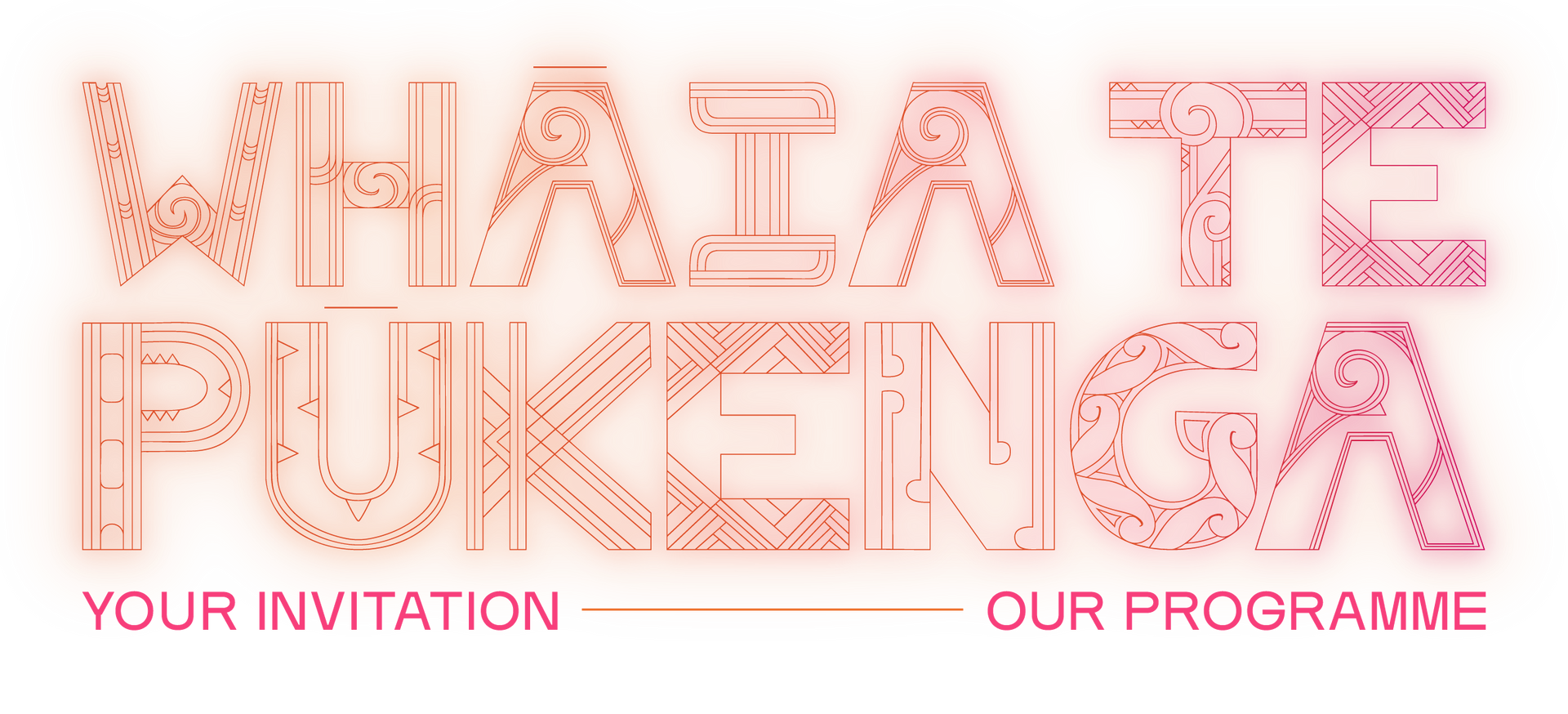
******
Rāpare
THURSDAY
TEARE TURETAHI
TE PUNA O TE AO MĀRAMA
- Whētu Hunt
Thursday 19th + Friday 20th
Along Karangahape Rd
As you walk along Karangahape Road during Whāia Te Waiora, you’ll find installations, activations, and spaces dedicated to the whetū of Matariki and Puanga. Each holds a story, a tohu, and an opportunity to learn a little more about yourself, your community, and this place.
You may wish to follow the stars in a particular order, or let them find you as you go. When you visit each realm, mark your journey in Whaia Te Pūkenga - our Matariki Brochure that will be handed by our fabulous team of volunteers.
Teare Turetahi’s Te Puna o te Ao Mārama (The Spring of the World of Light) first adorned Fort Street and Jean Batten Place in downtown Tāmaki Makaurau. Each vibrant disc in this installation represents a star from the Matariki cluster or other significant whetū seen in the winter sky. These whetū guide us through our Matariki celebration, Whāia Te Waiora — each with a role to play in our relationship to the natural world and our wellbeing.
******
Rāmere
FRIDAY
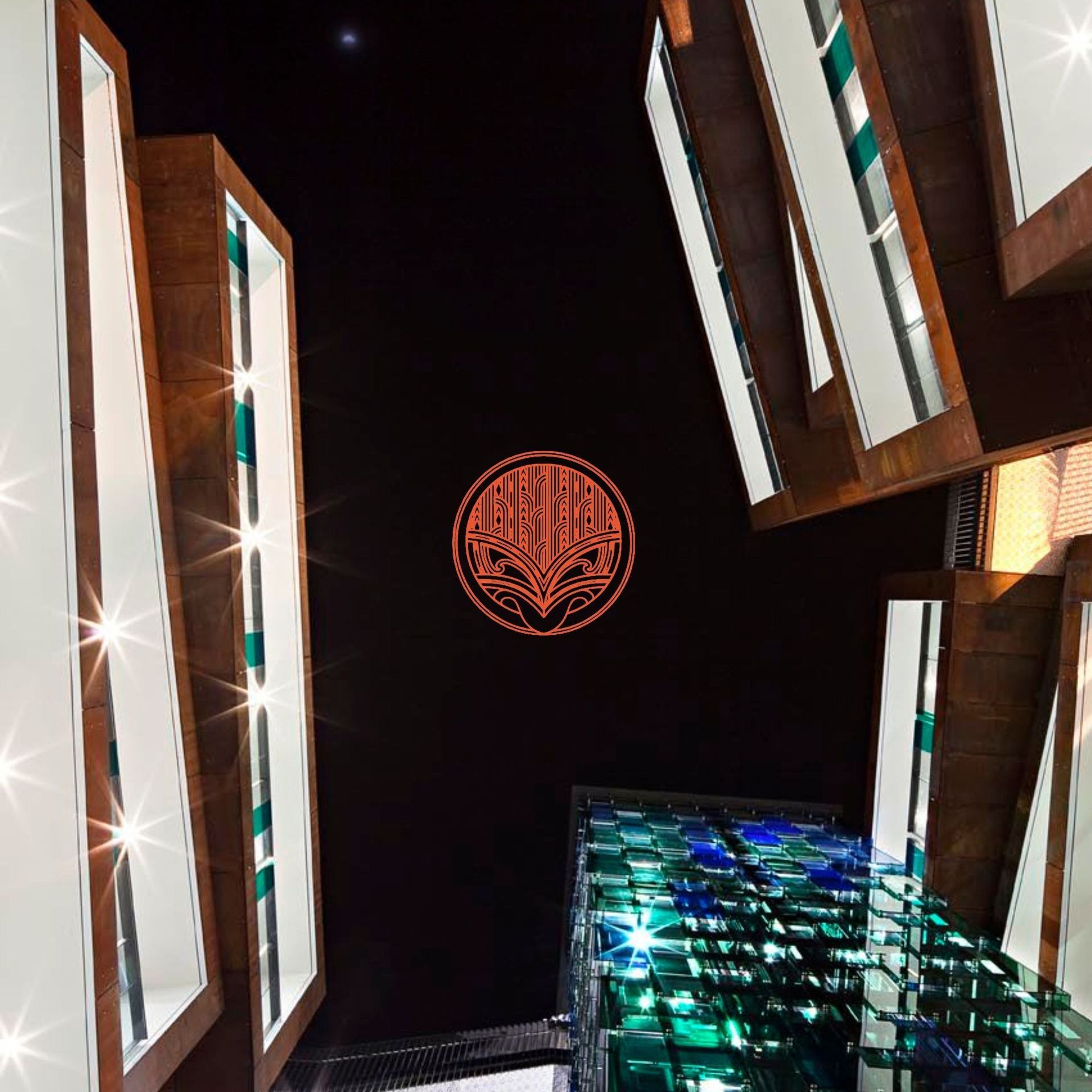
TE WHARE TAPERE
Iron Bank Courtyard Stage
4PM to 10PM
Iron Bank - 150/154 Karangahape Rd
Join us at Te Whare Tapere, a kaupapa Māori stage celebrating Matariki through a variety of performances and activities; storytelling, circus, kapa haka, spoken word, music, DJ sets & more! This is the whānau-friendly heart of the night, filled with creativity, connection, and aroha. All welcome, bring your fam and celebrate Matariki with us under the stars! Performance schedule, below plus Plus games, crafts, and creative activities running all evening for the whole whānau.
4PM // Kayne Peters
4:45PM // 'Between Breaths' by The Catching Machine
5:30PM // Kapa Haka
6:15PM // Rehekōrero - Spoken Poetry
7PM // Hari - Singer
7:45PM // DJ Milan
9PM // DJ KTA
FULL LINEUP BELOW
******
Rāhoroi
SATURDAY
******
Ngā Kaupapa Hono
OTHER DATES - ASSOCIATED EVENTS
******
Matariki 2025 Pictures
